




2019, July 7 — Review of The Lone Wolff
A Great Patron of the Game! I obtained this book from Bobby Wolff, himself, and he autographed it for me. It is the story of his life, and especially of his life in the world of the card game known as Bridge. Unlike most books about Bridge, this one is not rife with hand diagrams and analyses. It is, rather, an autobiographic narrative that is both well-written, and well-edited. The editing was accomplished by Bobby's wife, Judy Kay-Wolf, who did a remarkable job of making Bobby's story cohesive, logically organized, and easy to read. There are virtually no editing errors at all to be found in the book.
Bobby's story begins with his youth in San Antonio, Texas, and continues to the time of the publishing of this book in 2008 after Bobby and Judy had moved to their current home of residence in Las Vegas, Nevada. It includes the stories of how, in 1968, he became a founding member of the "Dallas Aces" professional Bridge team that set about to reclaim the world team Bridge title from the legendary "Italian Blue Team.” It took several years, but the team did manage to win the World title. In fact, Bobby has won several World Bridge titles, including the Bermuda Bowl (seven times), and once each of the World Mixed Teams, the World Open Pairs, the World Open Teams, and the World Senior Teams.
In addition to his achievements as a player of the game of Bridge. Bobby has contributed much, much more to the game than just winning games and tournaments. He has served, for example, as President of both the American Contract Bridge League (ACBL), and the World Bridge Federation (WBF). His focus has been on Ethics and Fairness in the game, and he has made significant contributions in the way that competitions are resolved. He also promotes the game to the World’s youth as much as he is able. He has had a lasting effect on the game and the way it is played and scored worldwide
If you think you might enjoy reading a book about the relatively recent history of the game of Bridge, and especially about how it is played at an International level, then this is the book for you. I enjoyed it thoroughly, and recommend it highly, awarding it all five of the five stars available for this review.


2018, December 9 — Review of Coup D’Etat
Garden Hoses Have Nozzles! Guns do not! Guns have muzzles. This author appears not to know the difference. Written by Ben Coes, and published by St. Martin’s Press in 2011, this story is about a nuclear war between India and Pakistan that is started when a radical blind Muslim clergyman arrives from exile in Paris to become the new President of Pakistan. Kinda like when Ayatollah Khomeini returned to Iran from exile in Paris to lead Iran into a radical Islamic theocracy back in 1979. Too bad the author couldn’t come up with a more original idea.
Also too bad that he didn’t do his research on some of the technical details that he relates in his story. Throughout the novel, he refers to the muzzles of various guns as “nozzles.” He also makes some strange weapon choices. He has the American operators choose the Colt Army Model of 1911 .45 caliber handgun as their sidearm of choice. Never mind that this book was written in 2011, and is set in a time period subsequent to the Iraq War in 2003. That was a time when there were many other .45 caliber semi-automatic handguns available that were superior to the Colt. The Kimber, for example, is more precise, and has better sights. The Springfield Armory XD-45 model has a double-stack magazine that can hold thirteen rounds, compared to the Colt’s seven. Ruger, and others, make .45 ACP handguns that are superior to the 1911 Government Model — better sights, higher precision, and higher-capacity magazines.
Inconsistencies abound in this novel. The author has totally ignored the laws of physics, preferring, instead, to describe scenes that might be seen in “B” Grade movies or cheap TV shows, but never in real life. On Page #231, for example, Dewey shoots a terrorist: “A silenced bullet whistled through the same space and struck the terrorist in the right eye. His body was jerked violently backward, thrown through the air, pummeled in a roll onto the crowded street.” What?? Sorry, Mr. Coes, but that could never happen in the real world. It only happens in Hollywood. A .45 caliber bullet cannot raise a man off his feet and into the air. If you want to see what it looks like when men die as a result of gunshots, take a look at old films of the invasion on the beaches of Normandy in 1944. Despite being shot by high-powered rifle and machine-gun rounds (much more powerful than a .45 handgun), the men simply fall down when they are struck. Not as visually stimulating, perhaps, but accurate. This author clearly performed his research for this book by watching old Hollywood movies and TV shows.
On Page #250 of the book, Dewey is in a car chase with terrorists in Australia when, once again, the author suspends the laws of physics (and common sense) to tell us how the terrorist is “kick(ed) backward against the dashboard” when Dewey rams the terrorist vehicle from behind. Since the vehicle is being kicked forward by the impact, the terrorist, who is facing backwards and shooting at Dewey, would seem to be kicked in the direction he is facing — towards the seat back, and not towards the dashboard, which is behind him as he is shooting at Dewey. Good editing should have caught these errors.
Near the top of Page #267, two members of the Australian Federal Police (AFP) are talking about finding Dewey. The Commissioner of the AFP is a man named Archie McCleish. The other man is a local police chief named Haynesworth. McCleish is clearly the superior officer. Yet, the author has Haynesworth say: “‘Got it?’ he said to McCleish.” This should have been McCleish asking Haynesworth if he understood an order, and not the other way around. This editing is just sloppy.
On Page #280, the author describes a terrorist driving a sports car through the winding roads in the hills above Beirut, Lebanon. He tells us how the car was “taking the hitchbacks [sic] at speeds that caused the tires on the €180,000 sports car to squeal.” I can’t find the word “hitchbacks” anywhere on the Internet. Apparently, the author decided to invent a new word instead of using the old tried-and-true “switchbacks.”
On Page #545, a Pakistani Air Force C-130 cargo plane is crash landing at the Beirut Airport and the author tells us that “The C-130 kept sliding, gaining momentum as it moved in a Fiery slalom down the runway.” Gaining momentum?? How does that happen? It is sliding on its belly because the landing gear has not extended, and the friction is causing the fire. How can it possibly gain momentum? It would certainly be losing momentum as it skidded. Oh, well. Perhaps it was convenient for this author to redefine physics to make his task of writing easier. The book was not, however, advertised as a work of Science Fiction and Fantasy. Four pages later, we are told that Dewey can smell gasoline from the wreckage of the burning aircraft. A C-130 has four turbo-prop engines that burn jet fuel, and not gasoline. He repeats this mistake later in the book. Gasoline would not be used in any of the aircraft described in this novel, including the helicopters.
Then, on Page #557, Dewey and an Israeli commando are in a firefight with a Lebanese Air Force helicopter shooting at them from the air with a minigun. The author has the good guys take shelter behind the “steel” wings of the burning C-130: “The weapon pounded the steel wings just in front of the Israeli position.” Then, in the next paragraph, we are told that: “. . . Hezbollah moved closer, their bullets dinging the metal of the C-130.” I don’t think so. The wings would not have been “dinged.” They would have been punctured. The wings of a C-130 are, like most aircraft, made of aluminum, and not steel. Steel is too heavy to be used for the skin of an aircraft. The wings of the C-130 would have been easily punctured by the bullets being shot at them, and would have offered little protection to Dewey and the commando.
Coes seems to be trying to emulate the writing of author Tom Clancy, using a lot of military jargon and technical nomenclature that adds little to the book except the word-count and number of pages. Clancy, however, did his homework, and his research was meticulous and accurate. He stated facts, while Coe spreads BS.


2018, November 24 — Review of The Midnight Line
Supply Chain Management! This novel was written by Lee Child and published by Dell, a registered trademark of Random House Publishing Group in 2017. The story is about former military policeman and drifter Jack Reacher. The setting this time is in Rapid City, SD and portions of Wyoming. Reacher has found a West Point class ring in a pawn shop in Wisconsin. It is clearly a woman’s ring, and he wants to know how it came to be separated from its owner, so he sets out to learn how it came to be in a pawn shop in Wisconsin.
He traces the ring to a local biker named Jimmy Rat, and he forces Jimmy to tell him where he got it. That leads him to Rapid City, where he runs into Arthur Scorpio, the owner of a local laundromat, and maybe a lot more. Scorpio sends him on a wild goose chase to find a man in Wyoming named Seymour Porterfield. He won’t find Porterfield, but he will find a whole lot more. While in Rapid City, Reacher runs into a private detective from Chicago named Bramall who is working on a case that Reacher believes might be the same case he is working on. The P.I., however, does not believe so, and he moves on without sharing any useful information. He is a retired FBI agent who is tight-lipped. It turns out that he has been hired by the identical twin sister of the owner of the West Point ring. Her name is Mackenzie.
Reacher travels to Mule Crossing, WY by bus, and resumes his search for the owner of the ring. He learns that Porterfield is dead, and that the sheriff suspects foul play, but has no proof. Eventually, he finds the owner of the ring, but not before Scorpio makes two attempts to get his contacts in Wyoming to kill Reacher. Before he finds the missing woman, Mackenzie shows up, as does Bramall.
The title of the novel is taken from a line of ten parking places that are filled by local drug dealers at Midnight near Interstate 90 in South Dakota in order to receive stolen pharmaceuticals. Reacher and the private detective, Bramall, eventually discover the “Midnight Line” and more violence erupts. The action is fast-paced, and suspense is built up gradually. A few plot twists keep the story moving, but I thought the ending was abrupt and anticlimactic.



2018, November 19 — Review of Persuader
Superman & Spiderman! This novel was written by Lee Child and published by Dell, a registered trademark of Random House Publishing Group in 2013. The story is about former military policeman and drifter Jack Reacher. The setting is the vicinity of Portland, Maine. Reacher is recruited by a threesome of rogue DEA agents who are trying to rescue one of their agents who has, presumably, been kidnapped and is being held by a drug kingpin named Zachary Beck. Beck’s son, Richard, had been kidnapped five years earlier, and his ear had been cut off by his kidnappers in order to force his father to cooperate with them. Reacher is to go undercover at the Beck mansion near the sea in Maine, but he needs to convince the Beck family that he is a hero who saved son Richard from another violent kidnapping in Boston. His mission for the DEA is to recover their agent, but he has another, more personal, mission: to find and deal with the man who brutally murdered two of his Military Policemen ten years earlier.
Reacher succeeds in gaining entry to the household, and then he begins to exhibit his extraordinary superpowers, scaling walls like Spiderman, and defeating huge hulks like Superman might do. The story actually got a little far-fetched at this point. There are a number of logical inconsistencies, like how Reacher always seems to have a cell phone signal, no matter how remote his location. Or like how he is able to carry two handguns in his coat and jacket pockets, yet the bad guy who is sitting next to him in a vehicle fails to notice the bulges. Then, too, we are mystified when Reacher fails to take a shot when he has the chance, and subsequently is forced to run for his life, and is almost killed, That wasn’t very “Jack Reacher” at all, in my view. In fact, it was stupid.
The plot takes a few interesting turns, like when we learn that it isn’t drugs that Beck is smuggling, but something else entirely. Long story short, Reacher is able to catch up with a figure from ten years in his past, and to complete some unfinished business. That’s where the story ends, leaving us with a lot of questions about the Beck family, Beck’s Secretary-cum-Operations Manager, and the future of DEA Agent Duffy.
Interestingly, the title of the book was taken from a model of Mossberg shotgun. However, that gun played only a very minor role in the story, and only then near the very end. The action is fast-paced, and suspense is built up gradually. Plot twists keep the story interesting.


2018, November 10 — Review of Make Me
Crime in the Heartland! This novel was written by Lee Child and published by Delacorte Press, an imprint of Random House Publishing Group/Penguin, in 2015. The story is about former military policeman and drifter Jack Reacher. The setting this time is in a Plains town in the wheat fields called Mother’s Rest. We are never told precisely where it is, but it is somewhere between Oklahoma City and Chicago, at a place where the trains stop. It’s probably in Kansas. Reacher is curious about the name of the town, so he gets off the train and starts asking the locals. Nobody seems to know, however.
It isn’t long before Reacher learns that he really isn’t welcome in Mother’s Rest. He learns that a private detective from Oklahoma City has traveled to the town, but then disappeared entirely. Another private detective, Michelle Chang, shows up from Seattle expecting to find her partner there, and she initially mistakes Reacher for him. The two soon team up to solve the mystery of Mother’s Rest, and to find the remains of the missing detective.
As with all of this author’s novels, the action is fast and furious. Violence is common. People die. All in all, however, this is not a bad book, and those who enjoy thrillers will certainly enjoy this one. I recommend it for its entertainment value.


2018, October 24 — Review of One Shot
Sniper! This novel was written by Lee Child and published by Dell, a registered trademark of Random House Publishing Group in 2009. The story is about former military policeman and drifter Jack Reacher. The setting is a small city in Indiana. A sniper kills five people with only six shots taken from a parking ramp. The victims seem to have been chosen at random. The police have their suspect almost immediately, and all evidence points to him. He asks for Reacher by name, but Reacher has already read about the killings in the newspaper, so he travels to Indiana to see for himself. He knows that the accused is a crack shot from his time in the military, but he insists that he is innocent.
It doesn’t take long for Reacher to become suspicious of the evidence, and he teams up with a young female (of course) defense attorney in an attempt to prove her client innocent. Romance naturally occurs. As we might expect, however, Reacher is right again, and he succeeds in his attempt to prove her client innocent (Surprise!).
As with all of the Reacher novels, there is a great deal of violence in this story. It is, however, fast-paced and entertaining, and I recommend it.


2018, October 18 — Review of Echo Burning
The Red House. This novel was written by Lee Child and published by Jove Books, Division of Penguin Publishing in 2001. The story is about former military policeman and drifter Jack Reacher. The setting is West Texas, in the very hot Summer. Reacher is hitchhiking near Lubbock when he is picked up by a good-looking woman of Mexican heritage. Her name is Carmen. She gives Reacher a ride all the way to Echo, Texas, which is where she lives with her 6½ year-old daughter, Ellie. The ranch where Carmen and Ellie live is called the “Red House” because everything is painted red — both inside and outside.
This is the first of the Reacher novels that I have read, and it was fast-paced and exciting. I recommend it.


2018, October 9 — Review of Suspect
Maggie!! This novel was written by Robert Crais, and published by G.P. Putnam’s Sons in 2013. In this story, we are first introduced to Maggie, a German Shepherd K-9 now serving with the LAPD after a heroic career with the US Military in Afghanistan, where she lost her handler, Pete, to an IED. The author presents parts of the story from the perspective of Maggie, and he does a good job of it. Although fiction, it seems quite realistic.
This story is well-told, and is a fast, entertaining read. As always with this author’s works, there is plenty of action and violence. I recommend this novel to lovers of the genre.


2018, October 9 — Review of Taken
Kidnapped! Written by Robert Crais, and published by G.P. Putnam’s Sons in 2012, this book is about Private Detective Elvis Cole and his partner, Joe Pike. In this story, Special Operator (Mercenary) Jon Stone joins Cole and Pike to rescue a young couple who have been kidnapped by bajadores: bandits who steal from the drug and human smugglers who are trafficking their goods into the United States across the Southern Border. In this story, the particular bajadores are led by a ruthless criminal who calls himself “The Syrian.” He is a ruthless killer who kidnaps undocumented immigrants and holds them for ransom. When their families can no longer pay the infinitely-repeating ransom demands, he orders the victims murdered, and their remains dumped in the desert near the Salton Sea in California. In order to emphasize his seriousness, he orders the abductees to be tortured while on the telephone to their families, so that their screams of pain can be heard by their loved ones. These bajadores are absolutely and totally ruthless.
The mother of one of the victims hires Elvis Cole to find her daughter. He does, but not before he, himself, becomes the next of their victims. While Cole is being held prisoner, Pike and Stone launch a successful rescue attempt that involves the Sinaloa Drug Cartel, Korean Organized Crime, and the Bureau of Alcohol, Tobacco and Firearms.
There are some minor editing errors in the book, but not many. One is on page #167, where the time 6:21 A.M. is presented as “6.21 A>M.” On page #189, we are told that Pike loads his Kimber .45 automatic, and then “rocked the slide to chamber a round.” That would be interesting if it were possible, but the correct term is that he racked the slide to chamber a round.
Once more, as with all of this author’s works, people are killed in this story. Innocent people. People who are just trying to better their lives. The story emphasizes the true nature of the evil that lurks in our world, even though it rarely touches the majority of us. Many other ordinary people see this evil up close and personal. Lucky for most of us, we do not. This story is another fast, easy read with a lot of action. I recommend this novel to lovers of the genre.


2018, October 7 — Review of Lethal White
Confused! Written by Robert Galbraith (AKA J.K. Rowling), and published by Mulholland Books Division of Little, Brown and Company, New York in 2018, this novel is as much a romance as it is a crime story. The author apparently could not make up her mind what kind of novel she wanted to write, so she combined two genres into a single story. The result is a confused storyline and overly complex plot.
The first half of the book drags interminably. Reading it became tedious, and not enjoyable at all. I’m sure that many readers will like this book, but not me. The story could easily have been told in fewer than half the six-hundred forty-seven (647) pages that this book contains. The plot is all over the place, and readers will not know the identity of the bad guy or guys until the very end of the book, which is fine. Central to the theme of the plot is a painting of a mare and a dead foal called Mare Mourning. The painting depicts a pure white foal lying at the feet of a mare. The foal has apparently died from a type of birth defect in horses known as Lethal White, thus the title of the book. There are other images of white horses, along with pubs named The White Horse, to be found throughout the book. It is a recurring theme.
Cormoran Strike is probably the best private detective in all of the United Kingdom. His office is in London, and he works with his partner and assistant, Robin Ellacott, now Mrs. Matthew Cunliffe. Strike was a military policeman in Afghanistan before he lost his lower right leg in an IED explosion. Today, he wears a prosthesis, but often puts too much stress on his stump, leaving him in acute pain. Robin is unhappy in her marriage to Matthew, and Strike has a casual hit-and-miss relationship with a woman named Lorelei. We learn a lot about these romantic relationships, as well as Strike’s former relationship with his ex- fiancée, Charlotte, during the course of the story. In fact, this overly-long novel might easily have been titled “Crime and Romance.” There is as much romance in the book as crime—maybe more. Romance is so important to the plot that the initial pages of the book describe Robin’s wedding reception. I really did not expect to learn so much about Robin’s current love life with her husband, Matthew, and Strike’s past love life with his former fiancée, Charlotte. It just spoiled the whole book for me. If I want to read romance novels, I will acquire romance novels.
An obviously mentally-disturbed young man named Billy Knight comes into Strike’s office one day and claims to have witnessed the murder of a young girl, and the burying of her body. He claims that he older brother, Jimmy,, was involved. Strike becomes curious and investigates, eventually determining the foundation for the young man’s claims. British politics, along with the 2012 Olympics and Paralympics, feature prominently throughout the story, which has a number of typically British characters. When Strike’s employer apparently commits suicide, Strike becomes suspicious and expands his investigation. Eventually, he is able to figure everything out, but he probably could have done it in half the number of pages to be found in the book.
There are a few inconsistencies that the editors apparently missed. On Page #585, for example, we are told that a woman enters a room carrying a revolver, but Strike takes it away from her, and then the two of them leave the room with Strike carrying the “rifle.” Apparently the revolver morphed into a rifle. A few pages later, however, and then again near the end of the book, the gun is, once again, a revolver. Revolvers are handguns. Rifles are long guns. It would be difficult to confuse the two. This author’s first two novels about Private Detective Cormoran Strike (The Cuckoo’s Calling and The Silkworm) were excellent works of crime fiction, but the most recent two are not.
This book is way overdone, in my view. I probably will not read any more of this author’s works, which is a great disappointment because her first two novels were so very good. If you don’t mind a slow, tedious read with way too much meaningless detail, read this book. If you like a fast-paced crime/detective novel, you will not find it here. I can award no more than three of the available five stars, and would award fewer than that if the author had been anybody other than the very famous J.K. Rowling.


2018, September 22 — Review of Merciless
Psychobabble!! Written by Michael Cross, and published by Pinnacle Books / Kensington Publishing Corp., New York in 1996, this poorly-written novel might easily have been titled “Mandrake the Magician.” The bad guy is an insane psychiatrist named Alexander Snow who has been quietly murdering people for years, and getting away with it. He visits another psychiatrist, Katherine (Kate) Bennett, who discovers his secrets and betrays him to an FBI agent named Tom Lincoln. Snow is prosecuted in a bench trial and, instead of prison, the judge sentences him to a hospital for the criminally insane. Five years later, Dr. Snow escapes from the facility, leaving dead bodies in his wake. From this point, the hunt is on, and the deep, mystical psychology begins. Dr. Snow is more like Mandrake the Magician, than like any physician ever in practice. He has mystical abilities, such as the ability to animate a dead body using acupuncture pins. Say what?? The body is dead! D-E-A-D!! There is no source of energy to the nerves and muscles and, despite the author’s assertions, an animated body (which is dead, by the way) will still show signs of livor mortis because no blood is circulating. The author also asserts that rigor mortis has not set in. how does that work? Dr. Snow is able to paralyze people with a simple touch. He seems to have magical abilities. I found all of these supernatural powers attributed to Dr. Snow to be unconvincing.
The paperback edition of the book contains 351 pages of text, but most readers will be able to move through them pretty quickly by simply skipping the many pages of italicized psychobabble monologues that are purported to represent the rantings and ravings of Snow’s diseased mind. Although presented as a psychological thriller, I found the book to be long on pseudo-psychology and short on mystery or thrills.
The plot and story line are disjointed. We know, for example that Kate has a relationship with Dr. Jeff Hudson, an orthopedic surgeon at the emergency room of a local hospital (presumably a trauma center of some sort). We learn that Kate does not enjoy the sexual side of her relationship with Dr. Hudson, and we eventually are told that something happened to Kate when she was a young woman, and that might affect her ability to enjoy sex. But Jeff Hudson is just one more of the loose ends left dangling at the end of the story. We are not told whether their relationship is able to survive the trauma induced by Dr. Snow. The story just ends, and we learn no more about their relationship, even though the sex scenes in the book are relatively graphic.
Tom Lincoln is a former FBI agent who has developed an inoperable and terminal brain tumor that is killing him. Dr. Snow had accurately predicted/diagnosed the cancer after simply shaking hands with Tom after the conclusion of his trial, five years earlier. How did he do that? Maybe it’s magic. Tom is dying. Yet, he comes out of retirement to help capture the escaped Dr. Snow. Even though we believe he is one of the primary protagonists in the story, his role is pretty inconsequential.
There are a number of logical/factual inconsistencies in the book. One of them is the constant referral to Tom Lincoln’s former employer as the “Agency,” rather than as the “Bureau.” We know that the author is describing the FBI. The “Agency” usually refers to the CIA, which does NOT conduct domestic criminal investigations. About half way through the book, a character refers to it as the “bureau,” but the author soon reverts back to referring to it as the “Agency.” I guess he didn’t do a lot of research.
Late in the story, an abandoned fun house on the boardwalk comes into play. Even though the facility has been long-abandoned, it magically has electricity to power the rail cars, lights and props within it, and the mirrors in the “hall of mirrors” portion are still so clean and shiny that Tom Lincoln can’t tell which image is the real Dr. Snow, and which are mirror reflections. Riiight!
This novel is an example of an author throwing everything he could against the wall in the hopes that some of it would stick. In other words, he used the shotgun method of writing, inundating his readers with inconsequential trivia at the expense of sticking with the primary plot line. We don’t need to know, for example, that FBI Agent Ryan McCall chews gum, and that Spearmint is his preferred flavor. Nor do we need to know the correct answers to the questions on the TV show Jeopardy! that is playing on Kate’s (and Dr. Snow’s) TV sets.
Feel free to skip this book. It is dated, and it is not well-written. Reading it was almost painful, so I awarded only one of the five available stars for my review.


2018, September 16 — Review of Last Words
Contrived! Written by Michael Koryta, and published by Little, Brown & Company Division of Hachett Book Group in 2016, this book is about an investigator for a private, non-profit corporation dedicated to proving that some inmates on death row are actually innocent. The company is called Innocence Incorporated. Both Markus (Mark) Novak and his wife, Lauren, work as investigators for the firm. Mark’s boss and friend, Jeff London, is a member of the Board of Directors of the company, and is standing between the Board and a decision to fire Mark for misconduct. Lauren was sent to Cassadaga, Florida to interview a man, and was shot and killed beside her car on the road between St. Petersburg and Cassadaga. We are never told the motive for the murder, but Mark has been deeply and permanently changed. His grief over the loss of Lauren is never-ending, and it has prompted him to do something unethical and illegal.
Jeff receives a letter from a man named Ridley Barnes, who lives in Garrison, Indiana, and who has been accused of murdering a young woman named Sarah Martin in local cave named “Trapdoor.” He decides to send Mark to Garrison to find out whether the firm should take on the man’s case, so Mark must travel from warm, sunny Florida to cold, windy Indiana in the wintertime. Mark is underdressed and unprepared for the trip, but he arrives in the town and immediately visits the sheriff, Dan Blankenship. His second visit is to the accused man, Ridley. He learns that Barnes can’t remember what happened when he went into the cave ten years earlier to rescue the girl and brought out her dead body. He hopes that Mark will help him to remember.
Kovak is accosted by a woman at his hotel who claims to be the victim’s mother, and who is angry that Mark has not come to see her before meeting with the accused killer. Somehow, the press learns about Mark, and calls him for a telephone interview, and Mark tells the reporter that he has met with the victim’s mother. The only problem with that, as Mark learns the next day, is that the victim’s mother is deceased. Who was the woman, and why was she impersonating Sarah’s mother?
Shortly thereafter, Mark is kidnapped while driving his rental car on a rural Indiana road by three men wearing ski masks and carrying shotguns. After taking him to a room with “melting walls” where he is interrogated, and then injected with drugs, he is left in total darkness in the cave. Mark is unable to find his way out of the cave, and he is wearing only his underwear, so hypothermia soon overcomes him and he begins to hallucinate . . . or does he? Is the cave really a living being able to “talk” to those within its darkness? Ridley thinks so, and Mark is beginning to believe it, too.
The cave is owned by a very wealthy man named Pershing McAlister, who has become very ill. His daughter Danielle helps to manage the property by supervising a live-in caretaker named Cecil Buckner. Buckner keeps people out of the cave, which has been closed to the public ever since the murder ten years earlier.
The murdered girl’s boyfriend, Evan Borders, has two high school buddies named Leonard. They are the brothers Jeremy and Brett, and Mark suspects that they, along with Evan Borders, are the three men who kidnapped him and left him the cave. The Leonard brothers disappear, however, and become two loose ends that are left dangling at the end of the story. Another loose end is the hotel clerk who lies about Mark to the sheriff for no apparent reason that we are ever told.
Evan’s father, Carson Borders, has been missing for ten years. He disappeared shortly after completing a seven-year prison term. All that seems to be left of him are a bag of his teeth that were mailed from Detroit, supposedly by an ex-con who had murdered him there. They really are Carson’s teeth, but the rest of his body has never been found.
Julianne Grossman is a professional hypno-therapist who is able to hypnotize locals in order to help them lose weight, stop smoking, and cut down on drinking or gambling habits. It turns out that she plays a key role in the plot, and has been working with Ridley to help him regain his memories of what happened in the cave on that fateful day ten years earlier when he emerged from the cave carrying Sarah’s inert body. Ridley is convinced that there is a “dark man” who lives in the cave, and with whom Ridley has spoken, and fought. He believes that the “dark man” is a manifestation of the cave, itself. Who is this mysterious “dark man”? Could it be Cecil, who is an African-American? You will need to read the story in order to learn the answer.
The author ties most, but not all, of the characters, and most of the plot threads, together by the end of the story, which is somewhat climactic. There are a few inconsistencies and editing errors in this book, but not many. One that I especially noted was the author’s confusion between an infrared telescopic rifle sight, and a laser sight that projects a red dot onto a target. He tells us that Mark has a .22 rifle with an infrared telescopic sight on it, but that it needs visible light in order to function, and that it projects a red beam. Not so. That would be a laser sight. The editors apparently missed this error.
I thought the story was believable and interesting for the first half of the book. Then, the story became a bit contrived. Overall, I didn’t really like the story that much. Some of the characters are caricatures. There is too much heavy psychology in places, and I began to lose patience with the plot. I know that many of the author’s fans will disagree with me, but I am not inclined to read more of this author’s works. Many other readers, however, will really like this book, and for those, I can certainly recommend it. I will, however, award only three of the five stars available, and warn that the book could easily have been a hundred pages shorter without losing anything essential to the story.


2018, September 12 — Review of The Promise
Maggie! Written by Robert Crais, and published by G.P. Putnam’s Sons in 2015, this book is another of the author’s series of novels about a hard-bitten, wise-cracking Hollywood private detective named Elvis Cole and his partner, Joe Pike. This novel also features Pike’s friend Jon Stone, a mercenary and special operator, and also an LAPD K-9 officer named Scott James. Scott’s dog, Maggie, a German Shepherd that had formerly been a Marine in Afghanistan before being shot twice and retired, has been trained to detect explosives by the military, but has not been used in that role by the police.
Elvis is hired by a mysterious woman named Meryl Lawrence to find a different missing woman, this one named Amy Breslyn. Both women work at a facility that produces explosives for the government, and Amy is the mother of a son named Jacob who was killed by a terrorist suicide bombing in Nigeria. Amy has embezzled more than four hundred sixty thousand dollars from the company. Amy wants revenge, and she thinks she knows how to get it. Meryl want her found, and the money recovered.
The plot becomes complex as Elvis searches diligently for Jacob’s elusive boyhood friend, Thomas Lerner, who can supposedly lead Elvis to Amy. Applying his amazing detective skills, Elvis soon discovers the truth, but not before he steps into an active police investigation that involves the Bomb Squad, and federal agents. That’s where he meets Scott James and Maggie. Maggie alerts to explosives in the house where a body is found, and it is the first time that Scott becomes aware of this talent on the part of Maggie. It becomes useful again before the story ends, of course.
Things are not as they seem, and Elvis is joined by Joe Pike, Jon Stone and K-9 Officer Scott James in a joint effort to catch the criminals. For the most part, their tactics work, even though one of the bad guys gets away. Will he come back to exact vengeance on Maggie and her Partner? The police don’t think so, but Scott is prepared.
This is the best of the author’s works that I have read so far. I really enjoyed it. I think the storyline is credible and not at all difficult to believe. As with most of this author’s works, the action is fast paced. I award all five stars and a recommendation of this novel to any reader.
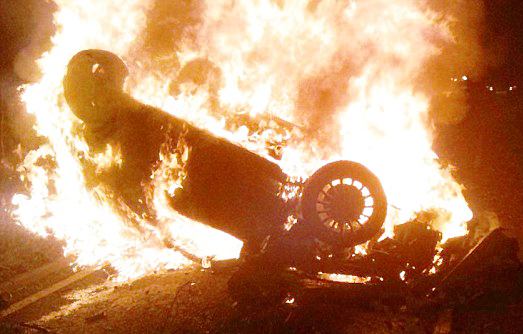

2018, September 10 — Review of The Wanted
Missing! Written by Robert Crais, and published by G.P. Putnam’s Sons in 2017, this book is about Private Detective Elvis Cole and his partner, Joe Pike. Elvis is hired by a worried mon who finds a very expensive Rolex watch in her son’s room and wonders where he got it. It turns out that he is a member of a teenage burglary ring that has been robbing upscale homes in the better parts of town. They have made a lot of mistakes, and they stole something that somebody wants back, and wants it badly.
Two killers posing as police detectives are soon hot on their trail, and bodies begin to materialize. Elvis soon learns that they are not real cops, but they always seem to be one step ahead of him. The teens have been selling their stolen goods at a flea market, and it isn’t long before the manager of the market is murdered. Then, one of the three burglars is run off the road, shot in the head, and his car is completely torched and burned.
Elvis manages to locate the other two teen burglars, a boy and a girl, before the killers do, and he moves them to a safe house. He calls in Joe Pike, and Pike literally saves Elvis’s life near the end of the story. To add interest to an already interesting plot line, the stolen item that is being sought helps to solve another crime.
As with all of this author’s works, people are killed in this story. Innocent people. People who are just trying to live their lives. Perhaps it is what makes the stories so realistic (most of the time). I liked this story. It is an easy read with a lot of action and a fast pace. I found it to be quite entertaining. I recommend this novel.


2018, September 8 — Review of Whitewash
Far Fetched and Fractured!! Written by Alex Kava, and published by MIRA Publishing in 2007, this book is supposed to be about an attempted terrorist attack on an energy summit in Florida. Oh, wait! I think it is about an attempt to assassinate the President of the United States with a poison mixed in with Parmesan cheese on his food at a banquet. Perhaps, on the other hand, it is about a new technology for recovering oil from chicken guts, but that is releasing dioxins into the river that are poisoning children and bottled water. Maybe it’s really about the profits that are to be made along the coast of the Gulf of Mexico by removing waste and debris left behind by the area’s many hurricanes, and by turning it into oil. Or maybe it’s about a United States Senator who is secretly gay, and who murders his gay boyfriend and blames it on his chief of staff. No . . . That’s not it, either. Oh, wait! I’ve got it! It’s about all of these things! Simultaneously!
Reading the first half of the book is akin to watching paint dry. We are introduced (sketchily) to a number of seemingly-unrelated people in Florida, and in Washington, D.C. What is going on? Who knows?! One presumes that the fractured threads of a plot line will, eventually, come together into a single cord. And it does — kinda. The plot cord does terminate rather abruptly, however, with an unlikely ending to the story.
EchoEnergy is the company that has developed and now controls this new oil extraction technology. The company has built a plant that is in operation in rural Florida. Leon is a hit man hired to kill the chief scientist at the plant, and also the number two scientist, Sabrina. If there is a single protagonist in this story, I guess it would be Sabrina. Parts of the story are told from her perspective. Leon just kind of disappears at the end of the story, as does Sabrina’s generous neighbor, Sadie. Loose ends abound at the end of the novel, which is really not very well written.
The first two attempts to murder Sabrina fail, and she soon becomes suspicious. Who is trying to kill her, and why? Is it William Sidell, the CEO of EchoEnergy? All indications point to him. Is it one of her co-workers? What role does her brother, Eric, play in all this? Who has called the sheriff and blamed Sabrina for the death of her co-worker and competitor to replace missing Chief Scientist Dr. Dwight Lansik? Will the police find Sabrina?
This is not a good story. It is neither realistic nor entertaining. Reading it was painful. You will probably not enjoy reading this novel. I can’t really recommend it. Feel free to skip this one.


2018, September 4 — Review of The Sentry
Werewolf!! Written by Robert Crais, and published by G.P. Putnam’s Sons in 2011, this book is about Private Detective Elvis Cole’s partner, Joe Pike. Joe has a low tire on his red Jeep, so he stops at a gas station to air it up, and to fill his tank. He spots two suspicious-looking gang-bangers walking down the other side of the street, and they walk into a sandwich shop. He decides to walk over and check them out, and finds them beating and kicking the shop’s owner, who is lying on the floor. After he is attacked, Pike breaks the arm of one of the bangers, and the other one runs away. Pike calls the police, and the story is now up and running.
The shop owner is Wilson Smith, and his niece, Dru Rayne, soon arrives to assist him. She works as a waitress in the shop. Dru soon begins to flirt with Joe, and Joe is captivated by her. He agree to help the two to escape from the violence of the street gang. Joe arranges to meet with the head of the local gang whose bangers had beat up Smith, and an agreement is reached that the gang bangers will no longer bother Smith and his niece. Shortly thereafter, however, the shop is vandalized, and Dru and her uncle disappear. Who took them? Did the gang bangers break their word, or is it the hired killer who calls himself the “Werewolf?”
After Hurricane Katrina struck New Orleans in 2005, Smith and Dru left New Orleans and came to Los Angeles. At about the same time, more than twelve million dollars belonging to a Bolivian drug cartel also disappeared. They believe that Wilson Smith took it. The Bolivians want their money bank. They also want revenge.
Joe calls in his partner, Hollywood Private Detective Elvis Cole, for assistance, and the two of them soon figure out what is going on. As usual with this author’s works, there is plenty of violence, and a lot of fast-paced action. This story is a cut above the author’s previous two works, in my opinion, and I like this story. It seems credible.
Not surprisingly, some people die and other people are injured gruesomely in this story, but the case is solved. This is a good story. It is both realistic and entertaining. You will probably enjoy reading this novel. I recommend it.


2018, September 2 — Review of The Two Minute Rule
Money!! Written by Robert Crais, and published by Pocket Books, A Division of Simon & Schuster, Inc. in 2006, this book is about a former bank robber named Holman who
is just finishing his ten-year sentence for bank robbery and is about to be released. On the day of his release, he is informed by prison authorities that his son, who is an LAPD police officer, has been murdered, along with three other officers. Holman hadn’t seen his son in years, but he is committed to finding his son’s killer and meting out justice.
Holman eventually solicits the assistance of an ex-FBI agent who had made the arrest that put him away for ten years, and she agrees to help him find out the truth about the death of his son. Her name is Pollard. The two of them soon run afoul of a team of LAPD detectives, however, and the tension increases. It turns out that everybody seems to be looking for $16 Million in unrecovered bank robbery loot that is believed to have been hidden by two professional bank robbers who were killed by police in a shootout.
Who killed Holman’s son and the other officers? The answer will probably surprise you. It certainly surprised Holman and his former FBI agent side-kick when they found out. Holman uses his experience and skill as a former bank robber to nail the guilty party.
The title comes from the rule of professional bank robbers that they should never spend more than two minutes inside a bank while robbing it in order to escape before police arrive. The title is germane to the story, which is interesting and relatively fast-paced.
Not surprisingly, people die and other people are injured in this story, but the case is solved. This is not a bad story, and readers of the author’s works will recognize his competent writing style for the realism it adds to his stories. You might enjoy this novel. I recommend it.


2018, August 23 — Review of The Watchman
Crash!! Written by Robert Crais, and published by Pocket Books, A Division of Simon & Schuster, Inc. in 2007, this book is focused on Private Detective Elvis Cole’s shadowy partner, Joe Pike. Pike is a former Marine Special Operator with experience in Vietnam, and as a Mercenary in Africa. He has worked for a former handler named Jon Stone, and for a former police officer, and his training officer when he worked as a cop for the LAPD, named Bud Flynn. He feels that he owes both of them, so he answers the call when he receives it.
Larkin Barkley is a spoiled rich girl who is joy-riding through the streets of Los Angeles near the L.A. River on her way home from a club where she had been partying. Slowing down from her speed of over 100 mph, she strikes a silver Mercedes sedan that is backing out of a driveway. The occupants refuse her offers of assistance, or to call the police, and all three of them leave the scene — one of them on foot. Larkin calls the police and cooperates fully. That’s when her troubles begin. The feds suddenly appear, and she is put into the Witness Protection Program. It doesn’t help her much because an attempt is immediately made on her life, and a federal agent is killed. What is going on?
Bud and Jon call Pike and ask for his help in protecting Larkin. The first thing that happens is an attack at what was believed to be a “safe house.” Pike escapes with the girl and takes her to another place: a place unknown to the police, the feds, or Flynn and Stone. He won’t tell anybody where she is while he contacts his partner, Elvis Cole, for assistance, and the two of them begin hunting the man believed to be responsible for the attacks. Larkin’s father and personal attorney become involved, and not in a good way. The bad guys seem always to know where Larkin is, so Pike and Cole come to distrust the cops and the feds.
As is usually the case with this author’s novels, people die, and other people are injured, but the case is always solved. The good guys win, again. I thought the story was a little far-fetched, so I could not award a full five stars for this review. It is, however, relatively fast-paced and entertaining, so I award four. I recommend it to followers of the Joe Pike and Elvis Cole characters that are featured in this author’ works.


2018, August 26 — Review of Right Through the Pack
Play the Cards! Originally written by Robert Darvas and Norman de V. Hart with the Assistance of Dr. Paul Stern, and originally published in 1947, this book has been republished by Devyn Press of Louisville, KY in a more-recent year. The book contains fifty-two chapters, one for each card in a standard deck (pack) of playing cards. The book is not a textbook, and is not about bidding the game, but is a collection of stories about the play of the cards, both as declarer, and as defender. It revolves around the play of the game in the various bridge clubs that were found in the U.K. in the first half of the Twentieth Century, before the rise of Duplicate Bridge as the most commonly seen form of competitive Bridge playing. The book assumes that Rubber Bridge is being played, and often played for money, in these clubs.
After a long evening at the Bridge table, and after everyone else has left, the first-person narrator (Robert) imagines that the pack of cards has come to life as little “people,” each of which represents one of the cards in the pack. They call themselves the “People of the Pack.” They can read the thoughts and emotions of the Bridge players who play them, and they can appreciate exceptional play when they see it. Each individual card has a unique personality, and a unique story to tell. Each of the four suits represents a “tribe” with a Prime Minister (Ace), a King, a Queen, a Knave (Jack) and all of the other cards. Each “tribe” has particular character traits, with Hearts being “soft and sensitive,” while the other suits are shrewd, tough, devious, or gruff, for example. The People of the Pack speak with Robert, and with each other. Sometimes they argue and shout. Each is anxious to tell a tale from the Bridge table, and each, eventually, gets a chance. In addition to the usual descriptions of squeezes, end plays, coups and finesses, the book also describes some tricks and ruses that have apparently actually been seen at a Bridge table.
The book contains a total of fifty-two chapters, one for each card in the pack (deck) of standard playing cards. The chapters are not numbered, but are titled, instead. The chapter that tells “The Tale of the Seven of Diamonds,” for example, is titled “TWO SUPERCILIOUS KIBITZERS.” There are too many stories in the book for me to review each chapter, so I will provide an overview with a couple of highlights.
The story begins with a tale told by the Eight of Diamonds about a seemingly-impossible Grand Slam contract in Hearts played by a young man named Johnny after his partner and love interest, a young lady named Julie, confidently overbids her hand and places the contract at what appears to be an unmakeable level. Johnny begins the play and figures out how to make the contract. Naturally, the Eight of Diamonds plays a role in the play of the hand, and the story is told from his perspective. It is a brilliant example of making a description of the play of a very difficult Bridge hand both instructional and entertaining. I really liked it.
The author has developed a character who appears several times in the book called “Professor Hardacre.” The Professor is somewhat of an expert on Bridge, and his opinion is often sought, and his play is often watched avidly. In the chapter titled “THE DOG IN THE NIGHT AGAIN, The Tale of the Knave of Diamonds,” the scene is set in the cocktail bar of the Bridge club after the games are finished for the evening. A young man named Cecil Braithwaite thinks he is the best reader of the cards at the Bridge table that ever played the game, and he is not reluctant to brag about it. After listening quietly to the bragging for an interminable time, the Professor challenges the young man to figure out the best way to play a hand that the Professor had played the day before, and he went about setting up two hands of cards on his table in the bar. South is in a contract of four Hearts, and West leads the Five of Diamonds. The Professor’s lesson is about negative inferences. A negative inference is when declarer might draw an inference from what a defender does not do, rather than what he actually does. This is a Bridge strategy that is unknown to many players of the game, and young Cecil takes the Professor’s point and thanks him for his advice.
In his tale, the King of Hearts tells us about a team game in which one N-S partnership bids Four Spades and goes down two for minus two hundred points. At the other table, the N-S partners bid Seven Spades. They received the same opening lead of the King of Diamonds from the KQ10. At this table, declarer declines to finesse and makes his contract with a double squeeze. He drops the King of Hearts (which was offside) because it is the only way the contract can be made. In a later chapter, the author also presents triple squeezes and their successes.
On page #245, the author has Professor Hardacre present the probabilities of finesses, and it is an explanation that probably would not be intuitive to most players. He explains about when the finesse for a Queen should be taken, and when a play for the drop should be made. He shows the probabilities numerically, and he is persuasive in convincing us that a finesse is preferable to a play for the third-round drop of a missing Queen. (61.6% vs. 38.4%).
In the chapter titled: “A PSYCHIC DEFENCE, The Tale of the Ten of Spades,” that card tells us about a game in which a young husband-and-wife partnership finds a defense that defeats a contract that should never have been defeated. The husband plays two false cards that completely flummox the declarer. First, he sluffs in a way that convinces declarer that he has a Heart suit that is really held by his partner. Then, by sluffing the Nine and Ten of Spades on Declarer’s Club suit run in a Three Notrump contract, he convinces declarer to finesse his partner for the Queen. The finesse fails, of course, and the husband is able to lead a Heart to his partner. The contract is defeated down three.
At the end of the book, Robert hears footsteps outside the card-room, and the little cards all return to their normal state. The club steward enters the room and Robert sees that it is morning and the sun is bright. The steward assumes that Robert has slept in the card-room all night, and Robert agrees with him. He notices, however, that some cards that were upside down the evening before are now right-side up.
The book is full of amusing anecdotes, and if you are fascinated by the various ways in which the cards can be played in the game of bridge, then this is a good book from which to learn. It is a light, easy read, and I highly recommend it to lovers of the game of Bridge.


2018, August 13 — Review of Atom Land
You Thought the Atom Was the Smallest Unit of Matter! Written by Jon Butterworth, and published by The Experiment, LLC in 2018, this book is an effort by a gifted writer and physicist to explain a very complex scientific understanding of the smallest things in the Universe to lay persons like you and me. We were probably taught that the atom was the smallest unit of matter, but it’s not. The author tells us with great detail about the ever smaller components of atoms, the building blocks of the Universe.
He begins his explanation of this extremely complex scientific field of thought and intellectual pursuit by comparing the world of subatomic particles to a group of islands in a sea, which the author travels to in a ship. On the map of these islands, the farther East the explorer travels, the higher the energies that are represented. In the extreme East, not much is really known, but much is theorized. He compares the theories to some of the stories of sea monsters told by ancient sailors after returning from their voyages. While there, he makes several expeditions into and between the islands, observing as he travels.
The first island is quite large, and is called the “Island of Leptons.” The port where the ship lands is called “Port Electron.” The island has no name at this point. In this, the first of the expeditions, the traveler explores the behavior of electromagnetism, telling us how it behaves like both a wave and a particle. He then immediately departs Port Electron for another, smaller, island just to the North, and this island is known as “Atom Land.” While visiting here, the author describes the nucleus of atoms, and how the number of protons fundamentally determine the natures of the elements they compose. He tells us, for example, that an atom of silicon would be changed into a different chemical element, with different physical and chemical properties, if a single proton was added or subtracted from its nucleus.
He now travels back to the first island, where his journey into this world began, and we learn the name of the larger island. It is the “Isle of Leptons.” In this chapter, the author further discusses electromagnetism and the concepts of spin and antimatter. From the Isle of Leptons, the author takes a ship to another small island, further East, called “Bosonia.” This is not to be confused with Bosnia. This island is named after the subatomic particle family known as “bosons.” After a brief look at the port of “Photon,” the ship returns to the Isle of Leptons. The Island of Bosonia is located right on the Equator, which is also the demarcation between matter and antimatter.
By now, the author’s explorations have told us about the interior of atoms, including the nucleus and its components. We have also discovered heavier copies of the electron, called the muon and the tau. We have discussed Leptons in detail, and we have figured out how electromagnetic force works. We have been introduced to photons, but not in any great detail.
The author goes on to discuss the four known forces: electromagnetism, the strong nuclear force, the weak nuclear force, and the force of gravity. We learn that gravity is the weakest of the known forces. We are told that not a lot is known about gravity, and that some physicists feel that gravity should not be considered to be a force at all.
At this point, Butterworth launches into a discussion of symmetry, and its role in Standard Model and Quantum Physics. In this chapter, he tells us about gravitational waves and the LIGO (Laser Interferometer Gravitational-Wave Observatory), a set of installations located in Hanford, Washington and Livingston, Louisiana. In February of 2016, the LIGO project announced the confirmation of the existence of gravity waves caused by the merger of two black holes. Gravitational waves were predicted by the theory of General Relativity, so this was an important discovery. It was the very first confirmation that gravity waves actually existed.
In the next section of the book, new islands are discovered: Hadron Island and the Isle of Quarks. We now investigate the elusive Quark and its properties of Up, Down, Top, Bottom, Strange and Charm. Hadrons are the building blocks of the atom. They include protons and neutrons, which are, of course, made up of even smaller particles. On Hadron Island, we are introduced to the Strong Nuclear Force. The author tells us how hadrons can decay into other hadrons, but that the neutron is so stable that it is never seen to decay, or alone without an accompanying proton, anywhere is the observed universe. We are told that protons can decay into many other hadrons, including the pion, which has only about a sixth of the mass of a proton. Hadrons come in two basic types: mesons and baryons. Baryons are heavier than mesons, and protons and neutron are examples of baryons.
The author then launches into an explanation of Quarks and the strong nuclear force. He tells us that all hadrons are made up of quarks—that baryons contain three quarks, and mesons contain two: a quark and an anti-quark. It is the strong force that binds these particles. The strong force is uniquely different from the other forces in that it does not grow weaker with increasing distance. Electromagnetic force and gravity both decrease in strength with the square of the distance, but not the strong force.
Now the author begins to describe the various instruments and techniques used to study these very small particles. Primarily it is very large particle colliders in placed like Germany, Switzerland, Chicago and Stanford University in California, to name a few. This discussion gets a little deep, and I’ll decline to provide more detail in this review.
In earlier chapters, the author has traveled between the islands by ship and train (across bridges), and by 4-wheel drive vehicle within the islands. These modes of transportation compare, roughly, to the forces that hold the particles together. Now the author introduces the airline that connects the ports and their cities on the various islands. It is the southernmost of the islands that are connected by the airline, which is a representation of the weak nuclear force. It connects bosons, quarks, leptons and hadrons.
In Expedition VI, the author tells us about Neutrinos. Once thought to have no mass at all, neutrinos are so small that they are able to pass entirely through the Earth with striking anything. Although first postulated by the Austrian theoretical physicist Wolfgang Pauli in 1930, Neutrinos remained undetected by physicists until recent experiments in South Dakota and Sudbury, Ontario, Canada in the 1960s, and at the turn of the 21st Century. It was proved that neutrinos have differing masses and mix.
In Expedition VII, the explorers delve into Bosonia. This where the author details the concepts of conservation and symmetry. Symmetry turns out to be very important to bosons, and so to the nature of the Universe as we currently understand it. Also in this section, the author describes the occurrence of the number infinity in various calculations, and how infinity invalidates many theories. He also discusses the very strange notion of “virtual” particles.
In Chapter 31, the author tells us about the hunt for the very elusive Higgs boson. After having been predicted by physicist Peter Higgs of Edinburgh, along with physicists Francois Englert and Robert Brout in Belgium during the 1960s, its existence was finally confirmed by experiments in the Large Hadron Collider (LHC) at CERN in Switzerland in 2012.
In the last section of the book, the author details some of the speculative and theoretical physics research being conducted in the world today. He mentions the possibility of a fifth force, and additional dimensions other than those of which we are currently aware. He leaves us with an expectation, and a hope, that physicists will continue to discover the building blocks of the universe in which we live.
This is an excellent book that is well-written and relatively easy to grasp (at least on a condensed basis). The subject matter is very complex, and some readers will not find it easy to follow the author’s explanations. I, however, found it to be very informative and educational. I liked it. Read it if you have a scientific bent, or if you have any curiosity about the makeup of the physical world in which we live. I award all five of the available five stars for this book, and I recommend it for serious readers with an interest in Science.


2018, August 7 — Review of Hostage
Root of All Evil! Written by Robert Crais, and published by The Random House Publishing Group in 2000, this book is about Police Chief Jeff Talley. Talley was a hostage negotiator with the LAPD’s SWAT team until he failed to stop a suicidal man from killing his own son during a hostage negotiation. He was so traumatized that he couldn’t do this type of work anymore, so he resigned from the police force and sat around his house in a fit of depression until his wife left him and took his daughter with her. Talley then accepted a position as the Chief of Police in a small town in the Antelope Valley, North of Los Angeles. He has a total of fourteen employees who report to him, so it is a very small department.
The story opens with a Prologue describing the negotiation during which the suicidal man killed his son, and then himself. It sets the stage for the rest of the story, although I didn’t find it very convincing. The next scene describes three young men, two of whom are brothers, driving down the road on their way to see a movie. Dennis and Kevin Rooney are the two brothers, and Mars Krupchek is the third man in the car. They all work for the same employer, and that is how the brothers Rooney and Mars have come to know each other.
Dennis Rooney is a narcissist with unrealistic dreams of grandeur. He has just been released from a minimum-security prison in the Antelope Valley that is known locally as the “Ant Farm,” where he served a thirty-day sentence for auto theft and robbery. He had been charged with a felony, but had plea-bargained it down to a misdemeanor. Never one to think too hard about working to get his spending money, Dennis comes up with the idea to rob a small convenience store a little ways out of town. He has a gun, and believes that the robbery will be simple. Unfortunately, the owner of the store, Junior Kim, also has a gun, and he pulls it when Dennis jumps over the counter to rob the store. There is a struggle, shots are fired, and Kim is killed. The three men flee, but don’t get very far before their old red Nissan truck breaks down by the side of the road.
Continuing their flight, the men climb over the wall of a small community of higher-end homes, enter one of the homes, and take the occupants hostage. Three members of the Smith family are at home: father Walter, daughter Jennifer, and son Thomas. Mrs. Smith is away visiting her sister in Florida. The fugitives enter the home and take the residents hostage. Initially, all they want is a car with which to escape. Unfortunately for them, a local police officer has spotted their broken down truck and knows that it probably belongs to the fugitives, so he enters the community to ask if anybody has seen them. At the Smith residence, he figures out that the men are inside, but as he turns to leave, he is shot by Dennis Rooney. Chief Talley hears the radio calls and travels to the home to take charge of the situation, and to begin negotiating with the hostage-takers.
We soon learn that Walter Smith is much more than a simple accountant. It turns out that he keeps the books for the largest of the West Coast organized crime families, and they have a stake in the outcome of the hostage situation. The criminals decide to kidnap Talley’s wife and daughter to force him to grant access to the hostage house before anybody else enters it at the end of the crisis. We also learn that Mars is not the real name of one of the hostage takers, and that he is a violent psychopathic serial killer. It is at this point that the plot becomes a little more difficult to swallow. A whole lot of money is discovered, and it is the money that, ultimately, changes the direction of the plot line. We’ve heard it before: Some people will do anything for money.
The ending of the story is pretty formulaic, and not very convincing. This is not one of the author’s better works. I award three of the five possible stars and advise readers to feel free to skip this one. You won’t miss much.


2018, July 31 — Review of Demolition Angel
Boom!! Written by Robert Crais, and published by The Random House Publishing Group in 2000, this book is about Detective Carol Starkey of the LAPD. She was a bomb technician until she and her partner were blown up while trying to de-arm a bomb in a trailer park three years earlier. Both of them were killed, but Starkey was successfully resuscitated by paramedics on the scene. Her partner and love interest, a man called “Sugar,” was not, and she misses him terribly. The two technicians did nothing wrong, but an ill-timed California earthquake set off the bomb just as they were about to neutralize it. Now, Starkey can no longer work as a bomb technician, so she has transferred to the Department’s Criminal Conspiracy Section.
The story opens with a Prologue describing an attempt to de-arm a bomb by Bomb Technician Charlie Riggio. Charlie is killed when the bomb explodes before he even touches it. The explosion and death are attributed to the infamous “Mr. Red,” who has been plaguing the ATF (Alcohol, Tobacco & Firearms) for a number of years by killing as a “hit man” for hire using bombs as his weapon of choice. Mr. Red’s big dream is to make the FBI’s “Ten Most Wanted” list, but he does not realize that the FBI can’t add a name to the list without knowing what it is, and Mr. Red is very good at hiding his true identity. Carol Starkey soon changes that for him.
Enter John (Jack) Pell, an agent from the ATF, who travels to Los Angeles to assist the LAPD in finding, identifying, and capturing the elusive Mr. Red. But . . . is Pell all that he appears to be? Maybe not.
Mr. Red has a practice of etching the names of his victims on the pipes used to make the bombs that he employs. It is his signature. After Riggio is killed, the bomb squad recovers one fragment of pipe that has a character etched on it. It looks like a “5,” but it could also be an “S.” They conclude that it is the last letter from Riggio’s first name: Charles. But Pell soon finds another fragment of the same bomb with the rest of the name etched on it, and the name doesn’t belong to Riggio. Has Mr. Red come to Los Angeles? If so, why? What (or who) does he want?
The cat-and-mouse game played with Mr. Red by Starkey and Pell lead to a climactic conclusion to the story, which is, by the way, as action-packed and suspenseful as any of the other novels written by Robert Crais. This is a good story, and it is well-written. Crais has developed an interesting character in Starkey. She is a heavy smoker and she likes her gin. She has been fighting demons ever since she was killed. But Starkey is tough, and she is a fighter. I found her courage to be appealing. You might, too. Read this book. All five stars and a recommendation are awarded.


2018, July 18 — Review of L.A. Requiem
Red Arrows! Written by Robert Crais, and published by The Random House Publishing Group in 1999, this book is the eighth of the author’s series of novels about a hard-bitten, wise-cracking Hollywood private detective named Elvis Cole and his partner, Joe Pike. Cole is a tough Vietnam Veteran with expertise in the Martial Arts. Joe Pike is a shadowy former Special Operator in ‘Nam who met Cole after both of them had been discharged from the military. This novel is focused primarily on Pike.
This might very well be the best of the author’s works that I have so-far read. The story includes flashbacks to Joe Pike’s youth, his time in the military, and his days as a uniformed police officer with the LAPD. We come to learn how Joe Pike came to be the person we now know, and we learn a lot about his character.
There is a killer operating in Los Angeles. So far, five people have been murdered, and the method is always the same: a single bullet to the head fired from a silenced .22 automatic pistol. The police have become secretive about the murders until Frank Garcia, whose daughter has become the killer’s latest victim, insists that Joe Pike and Elvis Cole be granted access to the investigation for the purpose of keeping the family informed. Garcia is a very wealthy, and very well-connected, owner of a highly successful Hispanic bakery. He is very close to City Councilman Maldenado, and that man, in turn, has influence over the powers-that-be within the LAPD. Pike used to date his daughter Karen, the one who was murdered, and Frank trusts Joe more than he does the police. Pike and Cole are granted access, only grudgingly, by the detectives in charge, especially Detective Harvey Krantz, also known as “Pants.” Krantz hates Pike with a passion that knows no bounds, so the relationship is quite tense. Read the book to learn how Krantz earned his nickname. Here’s a clue: Pike was involved.
The story introduces a new, possible love interest for Cole. His relationship with Lucy has become cool, and Detective Samantha Dolan sees an opportunity to form a relationship with him. Unfortunately, things do not work out well for Dolan.
The police can’t find a link between the victims, so they believe the murders are random—the work of a serial killer. It doesn’t take Cole long to find a connection, or for Pike to provide a valuable assistance to the criminalist who has revisited the latest crime scene. The case begins to break quickly, but not fast enough to prevent further bloodshed. The police have a different theory of the case, however, and it isn’t long before they arrest Pike, charge him with murder, deny him bail, throw him in jail, and seek the death penalty. Not surprisingly, this is exactly what the killer had in mind, and the police have played right into his hands. The ending of the story is very climactic, and the author ties up most of the loose ends. I liked this story the best of all of the Elvis Cole and Joe Pike novels, and highly recommend it to any reader, regardless of preferences. It is well-written, cohesive, and believable. All five stars and a recommendation are awarded. Acquire this book and read it. You won’t be sorry.


2018, July 16 — Review of Chasing Darkness
Take a Picture! Written by Robert Crais, and published by Simon & Schuster in 2008, this book is the twelfth of the author’s series of novels about a hard-bitten, wise-cracking Hollywood private detective named Elvis Cole and his partner, Joe Pike. Cole is a tough Vietnam Veteran with expertise in the Martial Arts. Joe Pike is a shadowy former Special Operator in ‘Nam who met Cole after both of them had been discharged from the military. This novel is focused primarily on Cole.
This story is centered on the death of a former client of an attorney hired who hired Cole to help prove his client’s innocence. Now, that man has been found dead in his home with a photo album containing photos of a number of murder victims, presumably murdered by that man, who has killed himself with a gunshot to the head. The case looks cut and dried. Despite Cole’s irrefutable evidence that he was innocent, the man became overwhelmed with guilt over his crimes and took his own life. The police captain in charge of the investigation is hiding information, and Cole becomes suspicious. Despite the captain’s attempts to keep Cole away from the investigation, he digs in anyway. What he discovers is surprising to the reader, but maybe not to the police.
When you read this book, prepare for a plot twist about three-quarters of the way through. I never saw it coming, and I don’t think you will, either. Things are not as they appear to be, and Cole eventually figures everything out.
This might be the very best of the author’s works. I really enjoyed it. The storyline is credible and not at all difficult to believe. I award all five stars and a recommendation of this novel to fans of the genre. 5 Stars


2018, July 14 — Review of The First Rule
<i><b><u>Assault Rifles!</u></b></i> Written by Robert Crais, and published by G.P. Putnam’s Sons, a division of The Penguin Group in 2010, this book is the thirteenth of the author’s series of novels about a hard-bitten, wise-cracking Hollywood private detective named Elvis Cole and his partner, Joe Pike. Cole is a tough Vietnam Veteran with expertise in the Martial Arts. Joe Pike is a shadowy former Special Operator in ‘Nam who met Cole after both of them had been discharged from the military. This novel is focused primarily on Joe Pike.
The story is centered on the death of a former associate and friend of Joe’s who is murdered in his home, along with his entire family, and their nanny. It turns out that Serbian organized crime is involved, and is responsible, for the murders, along with a few others. The Serbians are having a mob war over a shipment of stolen North Korean fully automatic assault rifles, and they have involved a black street gang to help them with their dirty work. The Alcohol, Tobacco and Firearms (ATF) people become involved, and Pike is able to give them what they need in exchange for what he needs. As expected, Cole and Pike track down the bad guys, and justice prevails.
Even though this novel adds some depth to the character of Joe Pike, I found the plot to be a bit unlikely, and I didn’t think this novel was as good as some of the author’s other works. It isn’t a bad read, however, and the action, as always, is fast-paced. I do, however, award four stars and recommend this novel to fans of the genre.


2018, July 10 — Review of The Forgotten Man
Psycho!! Written by Robert Crais, and published by Doubleday, a division of Random House, Inc. in 2005, this book is the tenth of the author’s series of novels about a hard-bitten, wise-cracking Hollywood private detective named Elvis Cole. Cole is a tough Vietnam Veteran with expertise in the Martial Arts. His partner is Joe Pike, a shadowy former Special Operator in ‘Nam who met Cole after both of them had been discharged from the military.
The story begins with the discovery of a family of three that has been brutally murdered in Temecula, California more than thirty-five years ago. Husband, wife and twelve year-old son have all been beaten to death with a baseball bat in the kitchen of their small home. A four year-old daughter had been playing alone in her bedroom closet at the time, and the killer was not aware of her presence. She was the only survivor of the attack, but she was only four, and couldn’t help the police. The murder went unsolved for more than thirty-five years. Then, a body is found in an alleyway in present-day Los Angeles, and the police detective who finds the murdered man tells Elvis that he had claimed to be Elvis’s father before he died. He had newspaper clippings to back up his story. Who killed the man? Is he really Elvis’s long-lost father?
In this novel, Elvis’s girlfriend Lucille has moved back to Louisiana with her son, and she now only visits Cole occasionally. She has made it clear that their romance is over. A new love interest enters his life, but Elvis seems determined not to notice. Starkey is a former member of the Bomb Squad who was killed by a booby-trapped bomb, then brought back to life by paramedics and physicians, who also stitched her back together. She can no longer serve with the Bomb Squad, so she now works as a detective in the Juvenile Department of the LAPD. She is intensely interested in Cole, but he does not share her feelings. The relationship helps add tension to the story, but I think it seems unfinished and unsatisfying to the reader.
Flashbacks to Cole’s youth during the story are entertaining, but don’t tell us much. The bad guy in this story is a real psychopath—loony as a bedbug. He is, however, a cold, ruthless killer. The plot is very convoluted, and not very convincing. I know I certainly wasn’t convinced. While Joe Pike seems to always make miraculous entries to save the day for Elvis, he is a little late to the game this time, and Elvis blunders around carelessly until bad things happen to him. This is a change in the persona of our hero, Elvis Cole, “The World’s Greatest Detective.” He makes one stupid mistake after another, and it isn’t fun reading about his carelessness because you know it could get him killed, or at the very least, seriously injured. Our hero is a real sap in this story, and it is not a pretty picture. His character actually became unappealing in this story.
This novel is a somewhat tedious read due to the flashbacks and the chaotic plot, but there is still plenty of action. It is not, however, the best of the series of novels published so far. I award only three stars and recommend this novel only to real fans of Elvis Cole and Joe Pike.


2018, July 6 — Review of The Last Detective
Kidnapped!! Written by Robert Crais, and published by Ballantine Books, an imprint of The Random House Publishing Group in 2003, this book is the ninth of the author’s series of novels about a hard-bitten, wise-cracking Hollywood private detective named Elvis Cole. Cole is a tough Vietnam Veteran with expertise in the Martial Arts. His partner is Joe Pike, a shadowy former Special Operator in ‘Nam who met Cole after both of them had been discharged from the military.
In this novel, Elvis’s girlfriend Lucille has moved to Los Angeles where she and her son, Ben, live in an apartment not too far from where Lucy works as a legal commentator for a TV station. Lucy is in San Diego on business, and Ben is staying with Elvis at his home in the hills. Elvis is preparing their dinner and Ben is out on the deck when he disappears. Elvis looks all over for him, but it isn’t long before he receives a call from the kidnappers who have taken Ben. The kidnapping is supposed to be an act of revenge for something Elvis did as a Ranger in Vietnam, but it isn’t clear who could possibly want to take vengeance against Cole. His buddies were all killed in the mission that was cited by the kidnapper. What’s going on, here?
I had a hunch early on in the story as to what was really happening, and it turned out that I was right. However, the book is still a good read with plenty of suspense and fast-paced action. The kidnappers are seasoned mercenaries who are totally immune to violence and as ruthless as it’s possible to be. Physically, they have outmatched Elvis and Joe Pike, but, as always, the good guys prevail. But not, however, without a very close call at the end of the story.
Lucy and Elvis’s relationship is changed forever by the kidnapping, so Elvis will probably be looking for a new love interest in future novels. The first chapter of the book describes Joe Pike’s attempt to kill an Alaskan Brown Bear that has become rabid, and has attacked humans. He fails in his attempt, and it isn’t totally clear how that chapter fits with the rest of the story. Also, the author has Cole describing missions in Vietnam in gritty detail, and brutal actions by the mercenaries while working in Sierra Leone, Africa. He does this to help set the mood for the story, and I think the technique worked well.
Interestingly, on page #78 of the novel, there appears to be a reference to a character from a series of novels by another great author, Michael Connelly. Elvis describes a couple of meetings with an LAPD detective who might easily be Hieronymus Bosch from the Harry Bosch series of novels written by Connelly. The tension and suspense build up steadily to a climactic closing fight between Elvis and Joe, and the kidnappers. This is a fast, easy read packed with non-stop action. It is, in my opinion, the best of the novels published so far. I award all five stars and recommend this novel to fans of Elvis Cole and Joe Pike.


2018, July 4 — Review of The Coffin Dancer
Hokey!! Written by Jeffery Deaver and published by Simon & Schuster in 1998, this novel is about a quadriplegic forensics investigator named Lincoln Rhyme who formerly headed New York City’s Crime Scene Investigation (CSI) unit. Although he was the head of the unit, he regularly engaged in hands-on participation in his criminal investigations, and he was crippled by a falling oak beam in a tunnel while examining the body of a murder victim. The fourth cervical vertebra in his spine was broken, and he became paralyzed from the neck down, with the exception of one finger. He lives off the settlement he received from the construction company that was responsible for the faulty beam that had fallen, and he now lives in a gothic townhouse on the Upper West Side of New York City overlooking Central Park, where he works as a criminalist/consultant to the New York City Police Department (NYPD), helping them to solve difficult crimes.
Three members of a small air charter company, all of them pilots, called Hudson Air witness a known criminal loading duffel bags into a small private plane near their hangar at the Mamaroneck Regional Airport in Westchester County, just north of New York City. Two of the witnesses are the owners of Hudson Air, husband and wife Edward Carney and Percey Clay. Both of them also function as pilots for the small company. Their fleet consists of two Lear 35A business jets capable of carrying up to eight passengers. Although less powerful than the Lear 25 models, the 35A has Garrett fan jet engines that are more efficient to own and operate because they use less fuel. The opening chapter of the book describes a flight from New York to Chicago’s O’Hare International Airport captained by Percey’s husband, Ed, and carrying freight. The flight does not arrive safely, and it is determined that the pilots have been murdered. That’s when Lincoln Rhyme becomes involved.
The plot in this novel is extremely complicated and has, in my view, too many twists. Why were they murdered? It turns out that Ed was one of the three witnesses who are now scheduled to testify before a grand jury in a few days, and a criminal has hired a professional killer to eliminate all three of them. The killer is absolutely relentless, and stays one step ahead of super-sleuth Lincoln Rhyme for almost the entire story. It could have been a much better novel except for the mostly hokey aviation sequences that were obviously not edited by an experienced jet pilot. The descriptions are rife with errors. It probably sounds authentic to a non-pilot, but to fliers, it comes across as being completely phony.
The BS begins on page #13, when ATC (Air Traffic Control) instructs the pilots to reduce speed to 180 knots after they were already traveling at 180 knots. Then, on page #24, we learn that the plane crashes on “final” (approach), when the last ATC instruction related to us by the author was that the plane was headed East on a downwind leg for landing on a runway headed West. Then, as if by magic, the plane is on a final approach, heading West, and is told by Chicago Approach Control to contact the tower for landing clearance.
On page #61, we are told that the company’s other Lear 35A had to have extensive modifications to carry human donor organs for transplant: “This meant major electrical and airframe work.” Such work probably invalidated the aircraft’s “Certificate of Airworthiness,” and would require an inspection by the FAA in order to legally fly again after such modifications. Yet, the author has the local mechanics at Hudson Air do the work and then fly the airplane without any apparent inspection by the FAA. On page #64, Percey looks up at the sky and determines that wind shear conditions are in effect because the ceiling is 1500 feet, and the wind is blowing at 15 knots. She doesn’t mention the most common cause of wind shear: thunderstorms. So how does she know?
One of the most outrageous statements made by the author is to be found on page #154, where he tells us that: “Anyone with an IFR ticket—instrument flight rules rating— could take off, fly, and land in dense overcast.” This is patently untrue. There are legal minimum weather requirements for IFR (instrument Flight Rules) flight, unless both plane and pilots are specially trained and equipped. As an air charter company, Hudson Air would have been operating under Part 135 of Section 14 of the Code of Federal Regulations (14CFR). Here are a couple of the stipulations of those regulations:
Ҥ 135.217 IFR: Takeoff limitations.
No person may takeoff an aircraft under IFR from an airport where weather conditions are at or above takeoff minimums but are below authorized IFR landing minimums unless there is an alternate airport within 1 hour's flying time (at normal cruising speed, in still air) of the airport of departure.”
And:
Ҥ 135.219 IFR: Destination airport weather minimums.
No person may take off an aircraft under IFR or begin an IFR or over-the-top operation unless the latest weather reports or forecasts, or any combination of them, indicate that weather conditions at the estimated time of arrival at the next airport of intended landing will be at or above authorized IFR landing minimums.”
So much for taking off, flying, and landing in dense overcast. As you can see, the FAA regulates all flight under Instrument Flight Rules (IFR), and also in all Positive Controlled Airspace (PCA). This includes areas around major airports, in Air Defense Identification Zones (ADIZ), and all flight between 18,000 feet and 60,000 feet of altitude, which includes virtually ALL of the airspace in which jet powered aircraft normally operate. So the author is totally wrong in his assertion.
On page #158, author Jeffery Deaver has Percey making a statement about pilots making go-arounds because they have blown the approach, or because they have declared an alternate because of minimum conditions. When I was flying under Instrument Flight Rules, and I don’t believe they have changed much, a pilot was required by federal regulations to carry a sufficient amount of fuel to fly to his/her destination, execute an approach, fly to his/her planned alternate airport, and still have 45 minutes of flying time left when he/she arrived at that alternate. The author describes this regulation incorrectly on page #251 when he says: “The FAA dictated that each flight have enough fuel to make it to the point of destination, plus a reserve, in the case of a night flight, of forty-five minutes’ flying time.” Not so. It has nothing at all to do with night or day. It is a requirement for IFR flying, and the 45 minute fuel reserve is not required at the destination point, but at the alternate that is flown to after being unable to land at the primary destination.
Further showing his lack of knowledge about aviation, on page # 240 the author has Percey describe flying as, “I sit in a little aluminum tube going four hundred knots an hour . . . “ A knot is already a unit of measurement for speed. A knot is one nautical mile per hour, so adding the “an hour” is redundant and an incorrect description of airplane speed. On page #250, he describes the procedure for activating a VFR (Visual Flight Rules) flight plan, or for an IFR flight plan when departing from an uncontrolled field, but the airport that the Lear 35A aircraft that Hudson Air flies are operating from an airport with a tower. The tower activates an IFR flight plan for a an aircraft departing on an Instrument Flight Plan, and there is no need to call a Flight Service Station (FSS) on the radio after departure. Deaver is describing VFR flight, and not the IFR flight that jets operate under. The text on that page doesn’t make a lot of sense. On the next page, he refers to fuel as “gas.” Not in turbine-powered aircraft like Lear Jets. Fuel is fuel. It is not gas. Gas is used in piston-powered aircraft engines, not turbines. On page #258, the author has Percey allowing a police criminalist/detective using a ratchet wrench to help mount an engine part. That would be the very height of irresponsibility. A certified A&P (Airframe and Powerplant) mechanic could lose his or her license if that was seen and reported to the FAA. Also, there was never once any mention of the use of safety wire on any of the bolts or nuts. Not using safety wire would be suicide for anybody in the aircraft when an unwired nut or bolt worked itself loose due to vibration. In addition, allowing a non-certified person to perform mechanical work on an aircraft could result in the loss of the chief mechanic’s A&P license.
On page #267, the author describes the moment when an aircraft actually takes flight, when the airfoil creates lift, as the instant when “you become weightless.” We’ve all flown in airliners before. How many of you remember becoming weightless? Did everybody and everything float up to the cabin ceiling? Nope. The only way you will become weightless in an airplane is if it stops flying and begins to fall, at which time you will be falling at the same rate as the plane, and will feel weightless. On the same page, the tower at Mamaroneck Airport tells the plane to move to “taxiway zero nine right.” The problem with that is that “09 Right” is the nomenclature for a runway, not a taxiway. Taxiways are usually designated by letters of the alphabet.
On the next couple of pages, we learn that Ground Control has instructed the plane to proceed to, and hold short of, runway five left.” The next thing we hear from ATC is a clearance for takeoff, even though, presumably, the plane has not, yet, contacted the tower, which is the only authority for takeoff clearances on a controlled field. Ground Control would have instructed the jet to contact the Tower on an assigned radio frequency, but I guess the author didn’t know that. By the time the plane reaches Chicago, and the pilots have listened to the recorded message on ATIS (Automated Terminal Information System), they know that they have Information Whiskey. When they contact Chicago Approach, however, they report their heading and altitude, but fail to report that they have Information Whiskey. Usually when that happens, Approach will inform the aircraft that “Whiskey is current,” meaning that the pilots should go listen to it and acknowledge that they have heard it before continuing to communicate with Approach Control.
Showing ever more ignorance of how flying really works, the author has Percey tell Chicago Center (ATC) they were requesting “immediate VORs for vectoring to Denver.” How lame is that? Vectors are directions given to the aircraft by ATC using radar. VORs are standalone radio transmitters placed all across the country that all aircraft of all kinds use to navigate very precisely without the assistance of ATC. VOR stands for “VHF Omnidirectional Range.” Percey and her co-pilot would have found all the information they needed to fly to Denver by simply looking at their charts. ATC will normally not provide VOR frequencies to pilots who are too lazy to look them up themselves.
On page #289, the author has ATC clearing the Lear to “five five thousand feet . . . “ In the real world, ATC would use the term “flight level five five zero.” In the United States and Canada, all aircraft flying above 18,000 feet must use the “flight level,” abbreviated “FL,” system of referring to altitude. Flight levels are multiples of 100 feet, so FL180 would be 18,000 feet of altitude. At these altitudes, the altimeter(s) in the aircraft must be reset to the sea level barometric pressure of 29.92 inches of Mercury. Below FL180 (18,000 feet), altimeters are set to a value provided by a source on the ground (FSS, ATIS, Tower, etc.), so the displayed value is adjusted for atmospheric pressure on the ground.
On page #294, the stick shaker is described as the shaker stick (backwards). Incredibly, Percey finds a desert thermal and uses it to gain altitude, even though a Lear Jet probably glides somewhat like a rock. Besides, how many thermals are ever really seen at night, when there is no sun to provide differential heating of the ground to cause the air to rise? Then, continuing with her magical flying skills, she is able to lengthen her glide by side slipping. That might give her a lower IAS (Indicated Airspeed) but the plane will typically descend much faster. I have heard many pilots describe a “slip to a landing,” and I’ve done it myself, but never to stretch out a glide. A slip will cause the wing area to be reduced in relation to the direction of flight, resulting in a loss of lift. I was taught that a pilot used a slip to get down faster, not to stay up longer. Aaarrrgh!
On page #297, Deaver has the co-pilot call out an annunciator warning of a: “Fire light, nosewheel.” but the nosewheel of a Lear does not have brakes, so how could it get hot enough to catch fire? There might be some, but I have not heard of an aircraft with nosewheel braking, which would probably make it difficult to steer.
On page #243, the author refers to “breach spread” when describing an old 7.62mm Beretta firearm. I have never heard this term, and could not find it on the Internet. Then, on page #321, Deaver tells us that “. . . the bullet broke the sound barrier directly over them.” Actually, the bullet exceeded the speed of sound before it left the barrel of the gun. Perhaps he meant to say that they experienced the supersonic shock wave as the bullet passed overhead. Finally, the author has a detective shoot a man at a range of one hundred yards using a .38 caliber Smith and Wesson revolver with a two inch barrel, and to see “him fly backward.” No way. The .38, especially when shot from such a short-barrelled weapon, could never make a man “fly backward” — except in the movies and on TV. In addition, the bullet drop at 100 yards might be a foot or more, making such a shot highly improbable.
I am impatient with authors who are too lazy to do proper research before writing about technical matters like aviation and firearms ballistics. Most of the information can be found on the Internet, and it would certainly have been possible for the author to have found a jet pilot who would have been able to correct his many misconceptions about instrument and jet flying. All he had to do was to consult with a Lear flight instructor, a firearms instructor, or a gunsmith, and he could have avoided all these glaring errors. He didn’t do it, and it detracted a very great deal from the book.
This is the second in a series of novels with the same theme. It appears that they are not getting better. I probably will not read any more stories in the series, as I am quite disappointed in this one. There are too many inaccuracies, inconsistencies, and unbelievable plot twists in the story. I’m sorry, but I can’t recommend it to others, and will award only two stars. Feel free to skip this one.


2018, June 30 — Review of Shatter the Bones
Amputations!! Written by Stuart MacBride, and published by HarperCollins Publishers, Inc. in 2011, this book is the seventh of the author’s series of novels about a Scottish Police Detective Sergeant named Logan McRae. McRae is a seasoned plain-clothes detective with the Aberdeen Police Force who solves crimes, but who also manages to irritate his superiors in the process. He spends a great deal of his time dealing with the Professional Standards officers who seem to investigate him constantly. As a result, he has been repeatedly passed over for promotion to Detective Inspector. But maybe in this story his luck will change.
The story in this novel is about the kidnapping and ransom of a mother-daughter singing and dancing team destined to become “Britain’s Next Big Star.” The kidnappers amputate a couple of the little girl’s toes to prove that they really have her, and that she is still alive, so the gore factor that characterizes this author’s works is still here. At the same time that the Grampian Police Force is going all-out to solve the kidnapping and get the victims back safely, McRae is trying to solve a case involving a couple of brutal drug dealers who kidnap and torture another young mother in an attempt to recover a shipment of drugs that has been confiscated by the police. As an additional plot twist, a Detective-Superintendent named Green from the Serious Organized Crime Agency (SOCA) is sent to Aberdeen as a consultant, but who tries to commandeer the investigation. Green becomes a thorn in everybody’s side, including McRae’s.
In this story, somebody tries to kill McRae by torching his home while he and Samantha are sleeping. Logan wakes up just in time to see a condom full of an accelerant be pushed through the mail slot of his front door and ignited with a match. The accelerant has partially vaporized, and the resulting explosion blows off the front door of his flat, and also his bedroom door. Logan and Samantha are forced to flee out the upper story bedroom window of their flat and try to climb down the drain spout to the roof of another building three stories below. The pipe gives way, and Samantha falls through the roof of the building and is seriously injured. Doctors place her in a medically-induced coma, and she is still unresponsive and on a ventilator when the story ends.
Logan blames a local drug dealer for the arson, and when he catches him, he beats him severely. As we might expect, McRae eventually figures out the identity of the kidnappers and the other criminals he is seeking, but not before more people die, and more serious injuries are inflicted. He also learns the identity of the arsonist who tried to kill Samantha and him, and it is not who he suspected.
As usual, the ending of the story is not a “happily ever after” kind of ending, but it is realistic, and a sort of poetic justice prevails. Like the author’s other Logan McRae novels, this one is packed with non-stop action. I award five stars and a recommendation. It is better than Dark Blood.


2018, June 25 — Review of Dark Blood
Unreal!! Written by Stuart MacBride, and published by HarperCollins Publishers, Inc. in 2010, this book is the sixth of the author’s series of novels about a Scottish Police Detective Sergeant named Logan McRae. McRae is a seasoned plain-clothes detective with the Aberdeen Police Force who manages to solve a great many crimes, but who also manages to irritate his supervisors in the process. As a result, he has been repeatedly passed over for promotion to Detective Inspector. He has a testy relationship with one of his superiors, Detective Inspector Roberta Steel, a lesbian who has tried to persuade McRae to father a child for her wife, Susan, much to Logan’s consternation.
In this story, McRae learns that nothing is as it seems. It might not even be real. He stumbles and bumbles about, but he eventually figures out who the criminals are. He doesn’t do it, however, without a fair amount of pain and blood loss, and not without repeating some of the same mistakes he has made in the past. I don’t find McRae to be a very likable person, but he seems to get his job done.
Most of this author’s stories are realistic, gritty, gory, and graphic. This one is little different. The evil bad guy in this story, Richard Knox, is a sex pervert who rapes and beats old men. He has completed seven years of a ten year prison sentence, and has been released under a system similar to American parole. He returns to his childhood home in Aberdeen, and becomes the focus of attention of the police, the public and the media. In the meantime, there are two kinds of other unsolved crimes plaguing the community of Aberdeen: counterfeit money, and a string of Jewelry store robberies. McRae will eventually figure out both of them.
McRae’s love life continues from the previous story, but Samantha is getting impatient with him. His superiors still use and abuse him. So not much has changed. The ending is a bit unsatisfying, but realistic. Readers should be prepared to see a lot of vernacular, and Scottish slang words in this author’s works, but I think they add a touch of realism that I enjoy. Don’t expect the built-in dictionary in your e-reader to find all of them, however. This read is packed with non-stop action. I award four stars and a recommendation.
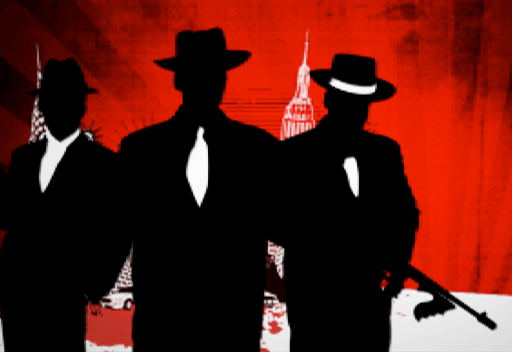

2018, June 18 — Review of Lullaby Town
The Mafia! Written by Robert Crais, and published by Bantam Books/Hatchett Book Group, Inc. in 1992, this book is the third of the author’s series of novels about a hard-bitten, wise-cracking Hollywood private detective named Elvis Cole. Cole is a tough Vietnam Veteran with expertise in the Martial Arts. His partner is Joe Pike, a shadowy former Special Operator in ‘Nam who met Cole after both of them had been discharged from the military.
This story begins with a famous Hollywood movie director hiring Elvis to find his ex-wife and twelve year-old son, Toby. Karen Shipley was formerly married to Peter Alan Nelsen, a now-very wealthy man who has become accustomed to getting his own way, but she moved away more than ten years ago, and nobody knows where she is. The sycophants around Peter Nelsen cater to his every wish, so he does what he wants, when he wants to do it, and with no regard for possible consequences. Elvis soon tracks the missing ex-wife and son to a small city in Connecticut, called Chelam, where she is the manager of the local bank. That’s where the plot twists.
It turns out that Karen has become enmeshed in a Mafia money-laundering scheme through the bank, and can’t free herself. Joe Pike flies out to join Elvis, and to deal with one of the large New York City crime families: the DeLucas. Charlie DeLuca is the son of Godfather Sal DeLuca, but he is out of control and mad as a hatter. He won’t let Karen out of her arrangement with the mob, so Elvis and Joe have to resort to drastic action. It isn’t long before the shooting starts, and the bodies begin to stack up. Most of the story is set in NYC and Connecticut. As usual with this author’s stories, sometimes some of the “good guys” get killed, and this novel is no exception. The characters in this particular story are quite stereotypical, especially the mobsters. Also, it is difficult to imagine where the novel’s title came from. Which town, for example, is the “Lullaby Town”? Is it New York City? Is it Chelam, CT? Is it Los Angeles (probably not).
There are some inconsistencies in the story. On page #29, for example, Peter Alan Nelsen is eating “Payday” candy bars and dropping the wrappers on the floor. Then, he “swallowed the wad of chocolate and peanuts and shook his head.” The only problem with that is that Payday candy bars do not have chocolate. They are caramel and peanuts. No chocolate. The author also writes about a “red hawk” that Elvis often sees from his balcony, but there is no such bird that I could find. There is a “red-tailed hawk” that is found across most of North America, but not a “red hawk.” I thought the ending was a bit abrupt, but all of the obvious loose ends seemed to be tied up. Once again, there is a lot of action, violence and death—the author’s trademarks. Still, it’s an easy, entertaining read.


2018, June 14 — Review of Indigo Slam
Russians!! Written by Robert Crais, and published by Hyperion/Hatchett Book Group, Inc. in 1987, this book is the seventh of the author’s series of novels about a hard-bitten, wise-cracking Hollywood private detective named Elvis Cole. Cole is a tough Vietnam Veteran with expertise in the Martial Arts. His partner is Joe Pike, a shadowy former Special Operator in ‘Nam who met Cole after both of them had been discharged from the military. The copyrights on these books appear to be in no particular order, with some of them being published in the 1990’s but copyrighted by the author in the 1980’s.
The novel begins with a scene set in Seattle, Washington on a rainy night. A father and his three children are being taken into the Federal Witness Protection Program by the US Marshal’s Service when the shooting starts. One marshal is killed, but the family escapes. Cut to the office of the famous Private Detective Elvis Cole. Three children come into his office and pay him $200 to find their missing father. He has been gone for eleven days and they don’t know where he is. Elvis initially turns them down, but then sees that the eldest child, a fifteen year-old girl, is driving a bright green Saturn, even though she can’t have a driver’s license. He follows them to their home and confronts them, ultimately accepting their assignment to find their father.
It doesn’t take long for Elvis to determine that the family is hiding from Russian criminals who want them dead — all of them. Elvis flies up to Seattle as part of his investigation, and he makes contact with the Marshal’s Service. Meanwhile, his love interest Attorney Lucy Chenier, decides to accept a position with a Los Angeles TV station to perform on-air legal analysis. She and her son, Ben, are to move from Louisiana to California, where they can be together with Elvis. But then, something happens, and the job prospect seems to dissolve. It turns out that Lucy’s ex-husband, Richard, is a control freak who is determined not to let Lucy leave Louisiana. Lucy is able to defend herself at the TV station, and to close the deal for the new job, anyway. This part of the story is not over, however, as Richard calls Elvis right at the end of the book and tells him so. In the meantime, Elvis is being followed by another group of men as he travels around Los Angeles. Who are they, and what do they want?
Eventually, the Marshal’s Service, the Secret Service and the FBI are all involved in Elvis’s case. No matter what any and every one of them do, the Russians always seem to be a step ahead of them and know precisely where they are and what they are doing. There will be a lot of shooting, and a lot of killing before the story ends, and not all of the law-enforcement agents will survive the violence.
One thing I’m not sure I understand is the protagonist’s love for an older Dan Wesson .38 caliber revolver as his EDC (Everyday Carry) weapon. Even the police don’t carry .38 revolvers anymore. The weapons don’t hold enough ammunition, and the .38 is not as powerful as the .45 Caliber, the 9mm, or the .40 Caliber handguns being used by most law enforcement agencies these days. Although Elvis’ partner, Joe Pike, also carries a revolver, at least it is a very powerful .357 Magnum Colt Python. Another thing I find difficult to understand is the titles of the various Elvis Cole books. I am not at all certain where the author finds the titles he assigns to his books. This one is no different. It seems to have no connection to the story.
The ending is believable, but the storyline of the relationship between Elvis and Lucy is left dangling — probably so that readers will be enticed to read the next novel in the series. Although a fast, easy read packed with non-stop action, this story is not quite as good as some of the others, and so I award only four stars. I do, however, still recommend the book to readers of the genre.


2018, June 10 — Review of Sunset Express
Broken Justice! Written by Robert Crais, and published by Hyperion/Hatchett Book Group, Inc. in 1996, this book is the sixth of the author’s series of novels about a hard-bitten, wise-cracking Hollywood private detective named Elvis Cole. Cole is a tough Vietnam Veteran with expertise in the Martial Arts. His partner is Joe Pike, a shadowy former Special Operator in ‘Nam who met Cole after both of them had been discharged from the military.
In this novel, Elvis is hired by a very high-profile defense attorney to help prove that his client is innocent of murdering his wife, and has been set up by an ambitious LAPD detective. Elvis digs up information that seems to prove the innocence of the attorney’s client, and he becomes lionized by the news media as a result. But . . . is it all too good to be true? Yes! Of course. Elvis goes from being a “lion” to being a “goat” when he learns that he has been used by some very dishonest people.
Once again, the scene is set in Los Angeles, but this time it is in a swanky part of town. Once again, the action is non-stop and realistic, and so are the characters and most of the dialogue. The ending is not exactly happy, but it is believable. Crais has done it again. This is another fast-paced detective story jam-packed with action and gritty dialogue. I like it. It is very entertaining, and a fast, easy read. I award five stars and a recommendation to readers of the genre.


2018, June 9 — Review of Free Fall
Gang Bangers! Written by Robert Crais, and published by Bantam Books, Random House in 1993, this book is the fourth of the author’s series of novels about a hard-bitten, wise-cracking Hollywood private detective named Elvis Cole. Cole is a tough Vietnam Veteran with expertise in the Martial Arts. His partner is Joe Pike, a shadowy former Special Operator in ‘Nam who met Cole after both of them had been discharged from the military.
This time, Elvis gets involved with a bunch of gang bangers and some crooked LAPD cops. It is as much danger as he and Joe Pike have faced in any of the novels published to-date. As always, the stories are chockablock with gritty realism, and the good guys don’t always come out on top. In fact, some of the good guys don’t come out at all. They get killed.
The scene is set in South Central LA, a place ruled by street gangs. It shifts to Lancaster, in the Antelope Valley north of Los Angeles, before returning to South Central for a dramatic climax. As we have come to expect, the action is non-stop and realistic, as are the characters and most of the dialogue. The ending is not exactly happy, but it is believable. The skill and talent of this writer continues to amaze me, and I liked this story enough to award five stars and a recommendation.


2018, June 6 — Review of 25 Bridge Conventions You Should Know
Bridge Players Required Reading! Written by Barbara Seagram & Marc Smith, and published by Master Point Press - Toronto in 1999, this book is a definitive description of the twenty-five most important bidding conventions used in the card game of Contract Bridge. There is a summary, followed by a quiz, at the end of each chapter, and the quiz questions alternately apply to both bidder and responder. Each convention is a separate chapter in the book, and my review will be divided accordingly. For every chapter, I recommend that serious players opf the game read what the authors write.
Chapter 1 describes the Stayman 2 ♣ response to an opening bid of one Notrump. The description and examples are clear and concise, and everybody might learn a little from reading them. I know I did.
Chapter 2 is about Takeout Doubles, along with how and when to use them. The rules and guidelines for both the doubler and the responder are very clear, logical and easy to understand. The authors also discuss cue bidding in opponents suit (after a takeout double) in this chapter. I found it to be informative.
Chapter 3 is about Weak Two Bids. The lesson explains clearly when, and with what card-holdings, a player should open the bidding at the two-level. The proper responses to a weak two bid by partner are also described. There was at least one tip in the chapter with which I had not been familiar, but which makes perfect sense. I learned something from this chapter.
Chapter 4 is about the Strong 2 ♣ artificial opening bid in the Standard American bidding system. I had forgotten about the 2nd negative by responder, so this chapter was a good reminder for me. The chapter is an excellent description of the strong, forcing bid and its responses.
Chapter 5 is about Reverses, a topic that is near and dear to me after several different partners recently missed my Reverse and stopped bidding short of a game contract in recent games. We are told in this chapter that a Reverse is absolutely forcing for one round. We are also told that the first suit bid by opener must be longer, or of equal length, to the second suit bid. Furthermore, the Reverse bidder must have at least 16 High Card Points (HCP) in order to Reverse. As always, the quiz at the end of the chapter is enlightening.
Chapter 6 is a description of the Blackwood and Gerber Ace/King asking bids. It is important to note that Blackwood can never be used over a Notrump bid because 4 NT is a Quantitative Notrump Raise inviting a slam bid from responder with a maximum hand. The Gerber 4 ♣ bid is the only Ace-asking bid available to Notrump bidders. Of interest is the display of a pair of hand with 34 HCP together that cannot make a slam of any kind. The deficiencies of Blackwood are explained and demonstrated to show that knowing about Aces and Kings will not always benefit a declarer, especially if one Ace is missing. In addition to Blackwood there is still a great benefit to cue bidding controls, in my view. The authors make a sage observation: “Do not use Blackwood as a constructive tool for bidding slams; use Blackwood to avoid bidding bad slams.” We are also advised not to use Blackwood or Gerber in hands with a void or two quick losers in an unbid suit. Useful advice!
Chapter 7 describes the Negative Double. It presents a set of guidelines for when, and how, to use the Negative Double. The Negative Double is probably one of the cheapest, and most effective, ways of finding a Major suit, and especially a Heart, fit. It is an inexpensive bid, requiring only 6 points to Double at the 1-level. It is such a useful bid that you should see its use at least once in every game you play—if not by you and your partner, then certainly by your opponents.
Chapter 8 is about Jacoby and Texas Transfer Bids in response to Notrump. It is a thorough evaluation of when and how to use these conventions. Many players will find the information in this chapter to be useful, if only as a refresher.
The next chapter begins Part 2 of the book, titled More Complicated.The chapters in this Part describe the more sophisticated conventions, such as Chapter 9’s Jacoby 2NT forcing response over an opening bid of One Heart or One Spade. Like the Jacoby Transfer bid, this one was the “invention of the late great Oswald Jacoby (1902-1984) of Dallas, Texas, who also popularized transfer bids and the weak jump overcalls.” The Jacoby 2NT bid is a powerful and streamlined way to find a fit in a Major suit, along with Game-forcing values. It is an extremely useful convention used by a great many Bridge players.
Chapter 10 tells us about the Splinter Bids that were invented and put into widespread use by Dorothy Hayden Truscott in 1964. They are a great way to show partner a singleton or void in a suit while, at the same time, expressing support for his/her Major suit. It is a precise bid, showing 13-15 points and, at most, a singleton in the bid suit. What more could opener wish for?
Chapter 11 was, to me, not as clearly explained as the earlier chapters in the book. In fact, I found parts of it to be downright confusing. I had to read it over several time to get the authors’ point. The chapter is about Cue Bidding the opponent’s suit. As I understand it, a cue bid in opponents’ suit after partner has either opened, or overcalled, in a Major suit is a type of limit raise showing support for his/her suit and a stronger hand than a raise in the suit, which then becomes weak and preemptive, whether a single raise or a double raise.
Chapter 12 explains the concept of Balancing. This is a very important concept in the game of Contract Bridge. Partnerships need to thoroughly understand the principles of Balancing, plus the judgement of when and how to use Balancing bids. As you might have deduced, this is a hot button for me. Partnership understanding and communication is an essential to winning at this game, and anybody who can’t trust a partner to Balance when appropriate will probably not do well at the table. At least . . . that’s been my experience. This chapter clearly outlines the requirements for making Balancing bids, and the appropriate responses to them.
Chapter 13 is about the Help Suit Game Try bidding sequence. One of the less current parts of the lesson is the rule that responder MUST pass after the auction 1♠-2♠-3♠ or 1♥-2♥-3♥ . . . that responder cannot make another bid in this auction. More modern players play that sequence to mean that the Trump suit is the suit in which opener needs help, and that responder should bid game with that help, and pass without it. The Help Suit Game Try is an artificial bid that follows an auction that has responder making a simple raise of opener’s bid of one of a Major suit. If responder has some high card values in the bid suit, or if he/she has a singleton or void along with 4-card support for the agreed-upon Major suit, then a game bid should be made. Otherwise, the contract should be signed off at the three level. This is a great convention, IMO.
Chapter 14 is all about Control-Showing Cuebids. These are an excellent way to find a slam that might not be found any other way, and many Bridge players do not understand, or play, them. The use of cuebids to show controls after a suit has been agreed-on is a slam-going convention that can show Aces, Kings, Voids and Singletons. In many ways these bids are more powerful than the Blackwood and Gerber conventions because they can allow the bidding of a Grand Slam missing an Ace, or a Small Slam missing one or more Kings. It is, however, important to remember the rules for using these bids: A Trump Suit must have been agreed; if a Major Suit has been agreed, then any bid of a suit above the three level of the agreed Major is a cuebid; and if a Minor Suit has been agreed, then any bid of a new suit above 3 NT is a cuebid. This system might be considered to be too complicated for many players, but the potential rewards make the extra work required for mastery worthwhile, in my view.
Chapter 15 describes the Grand Slam Force convention. Although its use might not arise frequently, when it does, you might easily gain a Top Board, or a substantial swing in IMP scoring. It can never be used when the Blackwood convention has been used in an auction, because a 5NT bid after Blackwood is a King-asking bid. It can, however, be used whenever a suit has been agreed upon, or after Partner preempts. Although the situation for its use might not arise often, when it does, this is an excellent convention to use in order to find a makeable Grand Slam, or to stay out of one that cannot make (missing the Ace of Trumps, for example).
Chapter 16 presents the Michaels Cuebid and the Unusual Notrump convention. Used to describe two-suited hands, these bids can be very useful to a partnership that wants to make the opponents work for every contract, or even to take some away from them. Both bids are used after opponents have opened the bidding, and both bids serve similar purposes: they describe two-suited hands. In each case, the suits MUST be at least 5-cards in length. In the case of a Michaels Cuebid over one of a Minor suit opened by Opponents, both Major Suits are shown. In the case of a Cuebid of the opponents Major suit opening bid, the other Major suit and an unspecified Minor suit are shown. A 2 NT asking bid requests that the Cuebidder show the Minor suit. The Unusual Notrump bid is made over Opponents’ Major suit opening bid to show both Minors. Both of these bids can show either a weak hand, or a strong hand (Mini-Maxi). Intermediates strength hands must be bid naturally.
Chapter 17 describes the Landy Convention for bidding over a Notrump opening by Opponents. It is made by bidding Two Clubs to show both Major suits (at least 5-4). Responder can choose which Major suit should be played or, alternatively, with a stronger hand can continue the convention by bidding Three Clubs to direct the Landy bidder to show his/her preferred Major Suit. Many players today choose the more descriptive Hamilton-Cappelletti or Meckwell conventions over Landy, but many others still use it.
Chapter 18 begins Part 3 of the book titled: Sophisticated Stuff. The first convention described in the Chapter is the Lebensohl Convention. An important concept when using this convention is called Slow Shows. What it means is that using Lebensohl generally shows a stopper in the opponent’s overcalled suit, while bypassing it denies such a stopper. Using Lebensohl shows a weaker hand than bidding a suit directly at the three level.
Chapter 19 describes the Reverse Drury Convention. It is a way to determine whether Partner has opened one of a Major suit in 3rd or 4th position with a full opening hand, or a light one. The artificial response of 1 ♦ tells responder that the bid was not light. The original Drury bid was just the opposite, hence the name Reverse Drury to refer to the 2 ♦ bid showing a full opening hand.
Chapter 20 is an expansion of the Blackwood Ace and King seeking convention originally described in Chapter 6. It describes the Roman Keycard Blackwood convention, also known simply as “RKC.” This convention includes information regarding the King and Queen of Trumps by responder to the 4 NT and 5 NT asking bids. It can make all the difference in finding a slam contract in a suit. Two versions of this convention are currently in popular use: 3014 and 1430. These numbers refer to the possible responses of the Club bid meaning either zero or three, or it meaning one or four. The number indicated in the response is no longer simply Aces or Kings, but the number of “Key Cards.” In this case, the first Key Card to be shown would be the King of Trump, and the convention can also ask for the Queen of Trump. It is a more powerful tool than simple Blackwood.
Chapter 21 covers the Fourth Suit Forcing (FSF) convention. Although this name is a misnomer because the simple change of suits is a one-round force all by itself, this is a useful artificial bid that asks partner to further describe his/her hand while, at the same time, forcing the auction to game. Responder has forced to game, but which contract? Opener’s response to the FSF bid will tell the partnership where the contract should be. This is a situation that probably comes up more frequently than one might think.
Chapter 22 explains the New Minor Forcing (NMF) convention. In this convention, bidding the other Minor after opener opens with one of a Minor, responder bids one of a Major, then opener bids one NT, is an artificial and forcing bid showing at least 11 HCP and interest in game. It also shows a that a Major suit response to the one of a Minor opening is a 5-card suit. One other thing I noticed about the bid is that it provides a way to find a 4-4 fit in Hearts when the bidding has gone 1m-1♠-1NT-2m-2♥. This auction might occur when responder is 5-4 in the Majors with five Spades and 4 Hearts. Opener might have 11-15 points, a relatively flat hand with 4 of the bid Minor, and a 4-card Heart suit. With 5-4 distribution in the Majors, responder has no particular desire to play in Notrump, so an 8-card Heart fit might easily produce a winning game contract. This is a very powerful convention in my estimation, and I use it regularly with my various partners.
Chapter 23 tell us about Ogust Responses to Weak Two bids. When partner opens a weak two, and you have a strong hand, is a game in the offing? How could you know? The Ogust Convention is one way to find out. In this convention, a 2NT bid by responder asks for much more than just a feature in the hand of the weak two opener. It asks for both strength and suit quality. With it, games, or even slams, should be a lot easier to find after a weak two opening bid, and the convention is explained clearly by the authors in this chapter.
Chapter 24 is about Responsive Doubles. I played these doubles many years ago, and had forgotten just how powerful they really are. They are extremely useful during competitive bidding situations where one opponent opens one of a suit, and the other raises that suit over an intervening bid by partner. In every case, the Responsive Double shows support for either both Majors or both Minors, depending on the auction. It allows a continuation of the competition, even with a fairly weak hand (6+ or 9+ points, depending on whether the bid is made at the two-level or the three-level, and depending on whether partner’s bid was a Double or a Suit bid).
Chapter 25, the final chapter of the book, is about Lead Directing Doubles, and especially the Lightner Slam Double. It is an excellent treatment of the subject that should be useful for even the most basic of Bridge players.
The Summaries and Quizzes at the end of each Chapter are a nice touch. They help the reader to understand, and to remember, what was presented in the book . . . which, by the way, was always presented clearly and concisely.
This book should be required reading for beginning and intermediate level Bridge players who wish to improve their bidding. It covers all of the important bidding conventions in common use around the world, and should be indispensable to anybody wishing to elevate their level of play to the place where the experts play. Whether your partnership chooses to use any or all of them (or not), you can be sure that most of your opponents will be. I highly recommend this book to Bridge players.


Lies!! Written by Robert Crais, and published by Bantam Books, Random House in 1989, this book is the second of the author’s series of novels about a hard-bitten, wise-cracking Hollywood private detective named Elvis Cole. Cole is a tough Vietnam Veteran with expertise in the Martial Arts. His partner is Joe Pike, a shadowy former Special Operator in ‘Nam who met Cole after both of them had been discharged from the military.
This time, the story is about a very rare old Japanese book called the Hagakure. It is on loan to a wealthy American businessman with close ties to some important Japanese families, when it is stolen from the floor safe in his bedroom. The Warren family are away in Canada when the burglary takes place. The housekeeping staff had gone home. There were no witnesses. The book is worth more than $3 million and Bradley Warren is anxious to get it back. Unfortunately, everybody connected with the book’s disappearance seems to have a penchant for lying, and this includes the Warrens’ daughter, Mimi.
It isn’t long before we learn that the Japanese Mafia, called the Yakuza, are somehow involved in the burglary, and an art dealer is found tortured to death with his bodyguards killed, presumably by the Yakuza. Mimi Warren, Bradley and Sheila’s sixteen year-old daughter seems to be somehow mixed up in the disappearance of the book, and she rapidly becomes the center of Elvis Cole’s investigation. The setting of the story eventually moves to the Lake Arrowhead region of San Bernardino County, where a climactic conclusion awaits. There is, of course, plenty of shooting and martial arts fighting, and the good guys (Cole and Pike) naturally win, but not everybody escapes unscathed.
Most of the action is fast-paced. The story is somewhat believable. The ending is quick and violent, and everybody who deserves justice gets it. It is an easy, entertaining read, and I liked it a lot. This is, to me, a five-star novel written by a skilled and talented writer. I recommend it to lovers of the genre.


2018, June 3— Review of Voodoo River
Smuggling! Written by Robert Crais, and published by Hyperion Books/Random House in 1995, this book is the fifth of the author’s series of novels about a hard-bitten, wise-cracking Hollywood private detective named Elvis Cole. Cole is a tough Vietnam Veteran with expertise in the Martial Arts. His partner is Joe Pike, a shadowy former Special Operator in ‘Nam who met Cole after both of them had been discharged from the military. Together they make a formidable team—dangerous and not to be trifled with.
It seems that a highly successful singer and TV actress named Jodi Taylor was adopted at birth in Louisiana. She and her Manager hire Private Detective Elvis Cole to find her birth family—ostensibly in order to determine any health risks she might have inherited from her biological parents. Elvis travels to the Baton Rouge area to investigate, and soon stumbles on the truth. In fact, he stumbles on more than one truth, and he discovers that his clients have lied to him. He also stumbles onto additional crimes currently being committed in the area, and he decides to take action. And when Elvis takes action, there is plenty of it. In fact, the story is quite fast-paced, with a considerable amount of action.
I did not like this story as much as I did the first of the series: The Monkey’s Raincoat. I was not able to read the books in the order in which they were published, so I read Number Four, before reading Numbers Two and Three. This book began credibly enough, but then got a little weird when the scene shifted to the bayous of Louisiana. The author makes a good attempt to tie up loose ends, but we are left with a few dangling at the end of the story. What, ultimately, happened to Luther? What, ultimately, happened to Milt? I suppose we are supposed to draw inferences, but the story would have been a little more well-rounded had the author spelled it out for us.
The editing is good, and it is clear that Robert Crais has both talent and skill. The ending of the novel was a bit abrupt, and so I award only three stars for this effort, which was a bit of a letdown for me. Still, it is a fast, easy read with plenty of entertainment. I can’t wait to read the second of the series. I like the characters.


2018, May 30 — Review of The Monkey’s Raincoat
Kidnapped! Written by Robert Crais, and published by Bantam Books/Random House in 1987, this book is the first of the author’s series about a hard-bitten, wise-cracking Hollywood private detective named Elvis Cole. Cole is a tough Vietnam Veteran with expertise in the Martial Arts. His partner is Joe Pike, a shadowy former Special Operator in ‘Nam who met Cole after both of them had been discharged from the military.
The story begins when two women come into Cole’s office with a story about a disappeared husband and a missing nine year-old boy named Perry. Mort is the husband of Ellen Lang, and Perry is her son. Janet Simon is Ellen’s best friend, and it is Janet who has brought Ellen to see Cole. Cole accepts the assignment to find the missing boy, who is assumed by the women to have been kidnapped by the father. Nothing could be further from the truth.
When Elvis begins his investigation, all kinds of new facts emerge, and Organized Crime is involved. Cole calls in his partner, Pike, to assist, and that’s when the dead bodies begin to appear. These guys don’t fool around. They play the game with deadly seriousness. The suspense, tension, and pace of action continue to build all through the story right up to the conclusion.
There are a few minor inconsistencies, and a few loose ends left dangling (the missing .32 automatic handgun belonging to Mort), but the book is still well-written. The story is an easy, fast read with a lot of entertainment value. If you like stories about hard-bitten private detectives, you will certainly like this one. I did.


2018, May 8 — Review of The Fallen
Drugs! Written by David Baldacci, and published by Grand Central Publishing/Hachette Group in 2018, this book is the latest in the series about FBI agent Amos Decker, a former pro football player who has developed a perfect memory after being blindsided on the football field and receiving a serious head injury. His partner is Agent Alex Jamison. They are vacationing in the small city of Baronville in Northwestern Pennsylvania while visiting Alex’s sister Amber and her family. Baronville is a company town that was founded in the 19th Century by the first John Baron after he discovered a rich vein of coal and began mining it. The mining operations evolved and developed into substantial manufacturing operations, including coke and textiles. Coke was shipped to the steel mills in Pittsburgh. Workers in the mines and factories were treated miserably and paid low wages by the uncaring Baron, so the townspeople have no love at all for him, or his descendants. Baron was believed to be an immensely wealthy man, but his wealth has totally disappeared. He scorned his relatives and offspring, and left them nothing when he died.
The elder Baron was universally despised by the townspeople, and their animosity towards the Baron family is now focused on the youngest of the Barons, who still lives in the family mansion at the top of the highest hill in town. The house and outbuildings are decrepit and ill-maintained, and now John Baron the Fourth lives there alone — like a pauper. The town harbors deep secrets, however, and Decker will soon stumble across them, or uncover them during his investigation.
One evening, as a violent storm approaches the house where Decker and Jamison are staying with her sister, Decker is on the back patio when he sees a spark through the window of the empty house behind Jamison’s sister’s home. He runs over in time to extinguish a small electrical fire in the living room, but that is when he discovers the first dead body. There is another one on the basement. He and Jamison soon learn that there have been four other murders in the town in recent months, and they are struck by how unusual that is. Decker, of course, is a compulsive investigator, and he soon finds himself working with a couple of local police detectives to solve the murders. They haven’t ended, however. More murders are committed, and Decker follows the clues, and his instincts, to unravel the twisted path of the events that are leading to the unusual deaths.
The ending is a bit unexpected, but the author manages to neatly tie up loose ends. I did, however, note a couple of inconsistencies in the storyline. For one thing, two detectives are deeply involved in the investigation, but there is no evidence of a police captain, or a chief. The two detectives seem to be operating with complete freedom, and I do not believe that a real police department would be organized that way.
Two consistent themes of the story include the economic woes of “Rust Belt” cities, like Baronville, and the current opioid crisis plaguing much of America. This novel is a fast-paced, action-packed read with a lot of entertainment value. I recommend it to aficionados of the genre.


2018, May 5 — Review of Broken Skin
More Graphic Violence! Written by Stuart Macbride, and published by HarperCollinsPublishers Ltd, London in 2009, this book is the next in the Detective Sergeant McRae series of police procedural novels set in the Aberdeen, Scotland area. The author usually has at least two themes to the plots of his novels, and this one is no different. The themes in this story are of child abuse and its unfortunate results, and of the hazards of sadomasochism and bondage. The story was, in my view, quite well-written. It held my interest throughout the entire length of the novel.
Macbride’s characters are very well-developed, but I am growing tired of the way in which DS McRae is held in near-contempt by his superiors at the Grampian Police Force, and is denied promotion at every opportunity. He seems doomed to hold the rank of Detective Sergeant for the remainder of his career, even though it is his insights that lead to the solution of the majority of crimes assigned to his unit. I think the series would be every bit as popular if the author would just make the protagonist a little less like a stumble-bum with a brilliant mind and no social skills, and a little more like a competent investigator with a backbone. If Reginald Hill could write highly successful police procedurals and crime stories based on as unpleasant a character as Detective Chief Superintendent Andy Dalziel, then Macbride should be able to do something similar with DS McRae. McRae should be an equal to DI’s Steel, Insch and Finnie. Imagine the dynamics if they were equals in rank, but constantly trying to upstage and outperform each other.
Oh, well. I suppose that McRae is supposed to be a loveable loser. The problem with that is that I don’t like losers of any sort to be the heroes of my novels, TV shows or movies. Maybe some people do, but not me.
The author is careful to tie up loose ends at the conclusion of the story. The editing is excellent. There are no detectable errors of any kind to be found in the novel. If you like a protagonist like DS McRae, then this is a five-star novel, and so I will award it such, even though I am not likely to read any more of the stories in the series. If you like a fast-paced, realistic police procedural, then by all means read this book. It has a lot going for it.


2018, April 28 — Review of Blind Eye
More Gore! Written by Stuart Macbride, and published by HarperCollinsPublishers Ltd, London in 2009, this book is the next in the Detective Sergeant McRae series of police procedural novels set in the Aberdeen, Scotland area. So far, I have liked this series of novels, but they have become tiresome. DS McRae never achieves a promotion from lowly sergeant to the rank of inspector that he so dearly covets. He solves most of the big cases in his department’s area of responsibility, but he screws up too much. He often jumps to unwarranted conclusions and fails to do his due diligence to learn the truth. He constantly gets injured and nearly killed, making these stories a masochist’s dream. He also gets others killed and injured. I do not like these kinds of stories.
The storyline has evolved into a kind of serial soap opera. Boy meets girl. They get together and have sex. McRae says (or does) something stupid. The relationship ends abruptly. And so on . . . The violence of the criminal element in these stories continues to escalate. In this one, victims are having their eyes gouged out and their eye sockets filled with petrol, then burned. McRae does such a terrible job of protecting those whose safety has been placed in his care that people die, including (almost) McRae, himself. As I pointed out in a previous review, the Grampian Police Force often behaves like the Keystone Kops, and this includes Detective Sergeant Logan McRae. Stories in which the bad guys routinely outsmart the good guys do not appeal to me, so I probably won’t be reading any more of this author’s novels about this unappealing character. Others however, apparently like them, and will continue reading them. Not me.
Stuart Macbride is a talented writer, but he has developed a protagonist who becomes less appealing in every novel of the series. I would have liked the series much better if we could see the efforts of McRae being rewarded by promotions, and by his increasing abilities to solve complex crimes. Instead, the author has developed a bumbling, stumbling character who blunders and totters his way through the plot. Only three stars for this effort.


2018, April 22 — Review of Flesh House
Gory! Written by Stuart MacBride, and published by HarperCollinsPublishers, London in 2008, this book is the third in the Logan McRae series of police crime novels set in the vicinity of Aberdeen, Scotland. The story begins with a flashback to 1987. In that year, the first victims of a serial killer known as The Flesher were killed. After an 18-year hiatus, the killings and disappearances begin again in the Aberdeen area. Characters that were seen in earlier novels of the series reappear in this story: DS McRae is the protagonist, DI Insch is one of his direct supervisors, and DI Roberta Steel is another. McRae’s love interest, WPC Jackie Watson, also known as Ball Breaker, makes her appearance near the end of the novel.
Squeamish readers might have a bit of a problem with this book. It is not for the faint at heart. The descriptions of the murders and dismemberments are graphic—and there are more than one to endure.
The story is very well told. As an added feature, a page of photographs of newspaper headlines and articles is included at the beginnings of several parts of the book. They are quite realistic. I found this bit of creativity to be of value to the overall quality of the book. I liked it.
On the other hand, I wasn’t particularly enamored with the ending. It is a bit abrupt, and a bit unsatisfying. Also, even though DS McRae is the talented investigator who follows the clues that lead to solutions to the crimes, he is generally disliked and disrespected by his superiors. The author never mentions spectacles, but as I read more of the novels in this series, the more I imagine Logan McRae to look like Wally Cox playing his role as Mr. Peepers in the old TV series—a nebbish of a man who works for a police force that behaves, in many ways, like the Keystone Kops. It doesn’t seem like criminals in the Grampian area have much to fear from their police. They come across as an incompetent bunch.
All-in-all, this book is a fast-paced, easy read. It is graphic and explicit, but able to hold the reader’s attention. This story is better than the one the author wrote previous to it, and it is almost as good as his first DS McRae novel, so I was able to award all five stars. If you like a good, realistic police procedural, albeit one set in Scotland, then this is one for you. I recommend it.
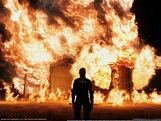

2018, April 19 — Review of Dying Light
Serial Killers! Written by Stuart Macbride, and published by HarperCollinsPublishers Ltd, London in 2006, this book is a police procedural set in Aberdeen, Scotland in the present. The protagonist is Detective Sergeant (DS) Logan McRae of the Grampian Police Force. It is a continuation of the story that began with the author’s first McRae novel: Cold Granite, which was quite good. Grampian, by the way, is a former local government region of Scotland that was made up of five districts, but now consists of three council units, including Aberdeenshire, the City of Aberdeen and Moray. The name was taken from the Grampian Mountains. Grampian Police Force Headquarters is in Aberdeen.
There’s a serial killer on the loose in the Aberdeen area. Or maybe two of them. Or even three! Somebody is murdering prostitutes by beating them to death, Somebody is using three-inch wood screws to secure the doors of houses and apartments before setting them ablaze with petrol and petrol bombs, burning all of the occupants to death, including small children. Somebody has killed and dismembered another victim and hidden the remains in a red suitcase left in the forest to be easily found. Is it the same killer? DS McRae doesn’t think so. As usual, he is way ahead of the higher-ranking Detective Inspectors to whom he is assigned, but they take all the credit for the successful work that he does. On top of that, Inspector Napier from the office of Professional Standards is out to get him — trying to find a reason to fire him. McRae has hooked up with WPC Jackie Watson, and they have a great relationship, even though they are working different shifts and not able to see too much of each other.
McRae has a brilliant mind. He is able to make connections and figure out complex crimes, but he isn’t a very appealing character. DI Steel pushes him around, as does DI Insch. He is constantly worried about being fired. He drinks and eats too much, and he sometimes makes bad decisions. One of his decisions got a constable shot and severely injured in a raid that took place before this story began, and Logan feels guilty about it. Police Constable (PC) Maitland is in the intensive care unit at the hospital in a coma, and nobody knows whether he will survive.
Is Logan McRae just a screw-up, or is he a brilliant investigator whose talents are not recognized by the police brass? You decide. Read the book and make your own determination. You might be surprised by the outcomes of the three cases being investigated in this story. McRae’s journalist friend, Colin Miller, does not fare so well in this story, but McRae survives into the next novel of the series.
Even though set in Scotland and filled with a lot of Scottish slang and vernacular, I believe that most American readers would find the story to be understandable and entertaining. It is a fast read with a lot of action. There really aren’t many slow places in the book, and there is no padding. I award four stars for this work. It isn’t quite as good as the first novel, Cold Granite, but it is still pretty well-written. I recommend it to lovers of British, Welsh and Scottish crime novels. Give it a try.


2018, April 11 — Review of The Disappeared
Fast Paced! Written by C.J. Box, and published by G.P. Putnam Sons, New York in 2018, this book is another in the series of stories about Wyoming state game warden Joe Pickett. The story is set entirely within the state of Wyoming. It begins with Pickett being met by the new governor of Wyoming, Colter Allen, along with his chief of staff Conner Hanlon, at a small airport near where Joe and his family live. There, Joe receives a new assignment.
The governor and his henchman send Pickett to a small community in southeastern Wyoming to find out what happened to a missing British tourist who vanished on her way back to the Denver airport after her vacation at a dude ranch in Wyoming. Kate Shelford-Longden is a wealthy business woman from the U.K. who has established a very successful PR firm with her former husband. Now her ex-husband appears to be in line to take over control of the business. Has he done something to Kate in order to acquire the company? She has vanished without a trace, and even her rented SUV is gone.
When Joe arrives to begin his investigation, he learns that the previous game warden has also disappeared. His house is locked up, the keys are missing, and his files have been pilfered. Adding to the mystery, there’s something suspicious going on at the local sawdust incinerator. Occasionally, the smell of burning flesh emanates from the burner. A neighbor, sixty-nine year old Carol Schmidt, has noticed the smells, and the strange goings on, and has complained repeatedly to law enforcement officials. They have largely ignored her. Carol wants to speak with Joe about it, but she is seriously injured in an auto accident before they can meet.
Much of the plot seems to revolve around a massive wind turbine facility under construction on the plains of Wyoming. It is being built with federal and state subsidies for “green energy” in order to supply power to California. Unfortunately, and to the great consternation of falconers, the blades of the wind turbines seem to kill birds of prey of all sizes and species, and especially eagles. Joe’s friend, Nate Romanowski, is a falconer with a conspiracy theory. He believes that the wind farm is a central factor in many of the strange goings-on in Wyoming, and he might be right. Joe doesn’t see it, but Nate does.
I was inclined to award four stars through most of the book—until the end. I thought it was abrupt and had loose ends: the futures of the Youngberg brothers farriers and the Tuebner Fish Hatchery father and son, Jack and Joshua, for example. They seem to play an important part in the story line but we never learn their ultimate outcomes. The book has political overtones that are anti-green energy, which is a small-minded world view that seems centered on the fact that just because Wyoming has clean air and water, it should be okay for the residents of other places, like California, to have to breathe the dirty air, and drink the dirty water, that is produced by fossil-fuel electricity generation so that Wyoming’s eagles will not have to face the hazards of wind turbines. NIMBY, if ever I saw it. The book could have been entertaining without the politics.
The author’s technical information about various guns, vehicles, snowmobiles, etc., seems to be quite accurate, and that is refreshing, but the story seemed shallow to me. Realistic, but shallow. The book is an easy read with a fast pace. Ultimately, though, it left me unsatisfied.


2018, April 08 — Review of I’ve Got My Eyes on You
Predictable! Written by Mary Higgins Clark, and published by Simon & Schuster, New York in 2018, this book is described as a fictional mystery. I guess it was supposed to be, but I figured out who the killer was very near the beginning of the story. There isn’t a lot of suspense until the book is almost finished.
Kerry Dowling is having a party in her parents’ house while they are away on a golf outing. The guests are her recently-graduated high-school friends who will soon be leaving for college. Kerry is eighteen years old, and has a steady boyfriend named Alan Crowley. Their relationship is tempestuous, with many spats and romantic making up. Kerry is described as a flirt. She has brought beer and vodka into her parents’ Saddle River, New Jersey home, and all of the kids have been drinking. Being semi-responsible, Kerry ends the party by eleven o’clock and begins cleaning up the area around the swimming pool. Her developmentally-challenged neighbor, twenty year-old Jamie Chapman, wants to come to the party and swim with Kerry, as he has so often done before, but Kerry will not invite him. He watches her from his upstairs bedroom window as some “Big Guy” comes out of the woods behind the pool and hits Kerry on the back of the head with a golf club, killing her instantly. Her body falls into the pool, and Jamie believes she is swimming. He goes over to the pool, but he thinks Kerry is sleeping in the pool. She does not respond when he tries to speak to her, or to pull her from the pool. Confused, he returns home and hides his wet clothes and sneakers in his closet, where his mother later finds them and launders them.
Detective Mike Wilson is charged with heading up the investigation for the Bergen County Prosecutor’s Office, and he begins his work immediately. Kerry has an older sister named Aline, who has been working abroad (London) for the past three years, but who is now returning to New Jersey to take the position of guidance counsellor at the local high school. She plays a key role in subsequent events, discovering, ultimately, the motive for Kerry’s murder. Kerry’s parents stop on their way home to pick up Aline at JFK Airport, and when they arrive at home, it is Aline who discovers Kerry’s body at the bottom of the swimming pool.
We know from the story that Jamie is not the killer, but who is? Is it her boyfriend, Alan, with whom she had an argument, and who left the party early? Was it the mysterious man who changed a flat tire for her on the highway, but then tried to kiss her? He is the one who furnished the beer and vodka for the party, but the police have no idea who he is. Detective Mike Wilson seeks the help of Aline in her new role as guidance counsellor to speak with Kerry’s friends and teammates on the lacrosse team to learn more about who might want Kerry dead. The two of them develop a love interest. Together, they are able to determine the motive for Kerry’s murder (actually, it is really Aline who figures it out).
The story is a bit simple. Perhaps it is meant to be Young Adult (YA) or Adolescent fiction, but it certainly does not seem very adult. The characters are quite one-dimensional, and the love interests are barely described. The book seems to be heavily padded, with a large number of short chapters, including one that is only about a half-page long. The first page of each new chapter has only about sixty percent of the available page filled with text. The rest is a chapter header with a lot of white space. Also, there is irrelevant information included to help pad the book. One example is the description by Jamie’s mother, Marge, of her meeting and romance with her late husband and Jamie’s Father, Jack. It contributes nothing to the story, in my view.
I did not, particularly, like this book. As a result, I am hesitant to recommend it to others. Young adults might like it, but I believe that most adults might not. I can award no more than two stars for this effort. The author is apparently a successful best-seller, but not to me.
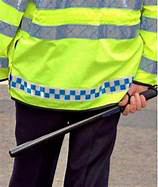

2018, April 6 — Review of Cold Granite
Gripping! Written by Stuart MacBride, and published by HarperCollins Publishers, London in 2005, this story is set in Aberdeen, Scotland, and is very well written. The protagonist is Detective Sergeant (DS) Logan McRae. McRae had been severely injured in the abdomen by a knife-wielding criminal and had been away from the police force for about a year, before returning to his old job, but with a new boss. Detective Inspector (DI) Insch is a large, bald man with a reputation for toughness and a sweet tooth. He is usually carrying, and eating, candies from his pocket. Dr. Isobal MacAlister is the medical examiner, and a former love interest to DS McRae. Their relationship has now soured, but Logan still holds out hope, even though he has heard that she has found a new boyfriend.
Little boys are being kidnapped, murdered, sexually abused and mutilated by a serial pedophile, and the focus of the investigation turns to a local man called “Roadkill,” who has the job of removing dead animals from the roads and highways of Aberdeen. Roadkill is mentally ill. He keeps piles of dead animals in his farm buildings where he used to live with his mother, who died from cancer. When the government decides that the animals are a health hazard, and must be removed, the remains of a young girl are found in one of the piles. With the help of a local and unethical newspaper reporter, Roadkill instantly becomes the prime suspect for the killings. Is he the killer? Most of the victims are boys, but the corpse is a girl. What does that mean?
DI Insch assigns Woman Police Constable (WPC) Jackie Watson to stay with McRae after he is almost killed while trying to apprehend another killer. His stomach wound has seriously impaired his ability to defend himself, but he manages. Watson has a well-earned nickname in the department: “Ball Breaker.” She is known for her toughness. Logan is not intimidated and some mutual interest seems to ignite between the two.
This book is very well written. The author clearly has skill and talent. I will read more of his works. This story is quite gripping, and the action is relatively fast-paced. I liked this novel a lot, and would recommend it to anybody who appreciates a good police procedural novel with suspense and action.


2018, March 30 — Review of Bid Better, Play Better
Trash! Written by Dorothy Hayden Truscott, and published by Devyn Press, Inc. in 1998, this book is an introduction to the bidding and playing of the contract bridge card game. Ms. Truscott is an acknowledged expert on the subject, and her books are non-controversial and educational. Unfortunately, I read this 110-page treatise in the Adobe e-Pub format on my NOOK Tablet, and I was greatly disappointed. The editing is of such poor quality that it is mostly impossible to follow the author’s examples of bridge hands and bidding. Most of the time, the fourth hand or bid that is being displayed is simply truncated—cut-off on the right side of the page so that the reader is unable to see all four of the hands, or all four of the bids.
When hardcopy books are scanned and converted to electronic format, a process called Optical Character Recognition (OCR) is used. Unfortunately, OCR is not a perfect technology, and scanned works must be carefully edited by hand in order to correct scanning errors. It appears that the publisher of this book failed to take that necessary step, and the result is that a goodly portion of the book is just plain incomprehensible. The book is rife with uncorrected scanning errors. There are hand diagrams that are missing altogether, but that are then discussed in the subsequent text, making it very difficult to grasp the point the author is trying to make. In some places, the number “4” is displayed in place of the correct ♦ symbol. In other places, the capital letter “V” is displayed in place of the ♥ symbol. An upper case “I” is frequently displayed instead of the correct number “1.” Also, the ♣ symbol is sometimes displayed instead of the expected (and correct) ♠. It’s all very confusing, and there are sequences that are sometimes several pages long that are largely indecipherable on my NOOK Tablet e-reader. Many bidding sequences simply bleed off the right side of the page and can be only partially seen, or cannot be seen at all. I can’t imagine that any beginning bridge player could come away after reading this book with anything other than confusion.
This e-book has some other major deficiencies. One of them is the lack of a Table of Contents (TOC). A TOC would be especially useful in a book of instruction, such as this one. A second deficiency is the lack of an index. Although not as important as a TOC, an index would have been helpful for readers to find specific instructions and examples in this what-could-have-been great book. There were a couple of lessons in the book that I would have liked to be able to return to . . . if I could only find them.
I have no doubt that this is an excellent book on the bidding and play of the game of contract bridge—IN HARDCOPY FORMAT! In the Adobe e-Pub electronic format, however, it is practically useless. The publisher (Devyn Press) did author Truscott a great disservice by publishing this book in an unfinished electronic format. The author did not write trash, but the publisher chose to publish trash. How unfortunate! Read the book but not in the electronic format. Because of the extremely poor e-book formatting, I can award no more than a single star for this book. Save your money and don’t purchase the e-book version (nor even borrow it from your library). Acquire the hardcopy version and I believe you might appreciate it a lot. I believe that the author attempted to present valuable information and instruction on the topic, and she might very well have succeeded in the hardcopy version of the book. Not so much with the e-book.


2018, March 29 — Review of Killing Time
Bizarre! I received this book free from the publisher through NetGalley in exchange for a fair and honest review. Written by Mark Roberts and published by Head of Zeus Ltd in 2018, this novel is a police procedural (mostly) that is set in Liverpool, England in the present. The plot is a bit convoluted and improbable, in my view. We think that the protagonist is Detective Chief Inspector (DCI) Eve Clay of the Liverpool Police, but her rank is actually not certain. The plot involves the solution of multiple crimes, including murders and the kidnapping of a young, developmentally-challenged girl who is later mysteriously released. The themes of the story are Nazism, white supremacy, racism and an attempt to sew discord between racial and ethnic groups in the U.K., and around the world.
The bad guys in this story are just plain evil. There is no better way to put it. They have grossly distorted religion and religious teaching in order to rationalize their murderous acts. The particular religion around which this story is centered is Roman Catholicism. Father Aaron is the central religious figure in the story. But is he really what he appears to be? Perhaps, but perhaps not. Eve and her team of investigators quickly focus on a teenage boy with mental health issues, and his two teenage friends. But then the plot begins to twist, and it keeps twisting right up until the end of the story.
The book is filled with an excessive amount of irrelevant minutiae. We are told in nauseating detail about Raymond’s hallucinations. It’s pretty disgusting. Do we really need to know that in order to follow the story? I don’t think so. The narrative is written in a highly stilted manner. The author’s use of adjectives, metaphors and similes often seem inappropriate. I know this novel was written by a British author for a British readership, but I have read enough really good British fiction to know that this book would not be considered good fiction anywhere. Roberts uses way too much minute detail and meaningless description. Perhaps he does it to pad the book’s word count, but it does not contribute to the readability of the novel. It’s mostly pointless. Who cares!? It doesn’t do anything to advance the plot, or to enhance the story.
I found a few inconsistencies in the book. In Chapter 1, for example, we are told that Eve Clay’s police rank is that of Detective Inspector (DI). By Chapter 3, however, we see her introduce herself as DCI (Detective Chief Inspector) Eve Clay. We are not told how she got that quick promotion. We are told repeatedly that it is winter in Liverpool, and that there is frost and ice on the ground. Eve looks out her window and sees “icecapped” rose bushes and that “snow covered every single blade of grass.” Yet, at location #1497 of the Kindle edition of the book, “Jack listened to the music of the garden, the birds in the trees and Father Aaron’s beloved crickets and grasshoppers in the vegetation.” Hmm. I believe that crickets and grasshoppers become dormant in the winter, and could never be heard in vegetation that was covered with frost and ice.
In another instance (location #3316), the author tells us that “She’s been strangled by someone behind her. Two thumbprints on her windpipe, and I’m estimating four fingerprints either side of her neck . . .” Wait a minute! If she had been strangled from behind , how could the thumbprints possibly be found on the FRONT of her neck (the windpipe)? Were the murderer’s hands on backwards? If the thumbprints are on the front of the neck, then the victim was strangled from the front. Right?
Most mystifying of all is the author’s assertion that a character in the book who was wearing a flak jacket was able to remain standing and uninjured after being shot multiple times at relatively close range by a Desert Eagle semiautomatic handgun. The Desert Eagle was developed by Magnum Research, Inc. (MRI) and was “notable for chambering the largest centerfire cartridge of any magazine-fed, self-loading pistol.” (Wikipedia) The gun is available in six different cartridge chamber sizes, all of which are magnums. The most commonly seen of these are the .44 Magnum and the .50 Action Express. The .44 has a muzzle energy of up to 1260 ft-lbs, and the .50 AE can have an energy at the muzzle of more than 1600 ft-lbs. Police officers wearing such body armor frequently report being knocked off their feet and suffering heavy bruising from being shot by smaller guns. Yet, this victim suffers no ill effects at all from being shot multiple times by the largest, most powerful handgun in the world. Go figure!
At location #2968, Raymond is in Raymond’s room, and he pulls back the curtains and opens the window as wide as it will go. Then, he sits on the end of Jack’s bed, where Jack’s dog climbs up on his knee. Jack has his own room, which he keeps padlocked so Raymond can’t get in. How did Jack’s bed get into Raymond’s room? We have no idea. At location #3198, some “. . . lying little sluts were trying to exhort money from him.” Sounds like it should be “extort,” right?
I’m sorry, but this is just bad writing. The premise of the story had promise, but the author simply failed to deliver on it. Character development is very thin, even though the author introduces a great many characters, by name, into the narrative. I found the book to be a tedious read, and would not recommend it to anybody. I award only two stars and will be careful not to read any more of this author’s works. You might like it, but I didn’t.


2018, March 22 — Review of Empty Promises
Incompetence! I received this book free from the publisher through NetGalley in exchange for a fair and honest review. Written by James M. Jackson, and published by Wolf's Echo Books in 2018, the story is set in the Upper Peninsula (U.P.) of Michigan, where Seamus McCree has purchased a summer cabin, and where his three year-old granddaughter owns an additional three sections (1,920 acres) of timberland. Seamus is assisting the U.S. Marshall’s Service in protecting a witness until after he has testified in court against his former employers. Naturally, those people would rather not see him make it to court alive, so there is ample reason to worry for his safety. Seamus, his son Patrick, who is called “Paddy,” and Seamus’s three year-old granddaughter Megan, go into town from the cabin to buy groceries and a fierce storm hits the area, blowing down numerous trees. When they are finally able to make their way back to the cabin, their guest is gone—disappeared. Tracks in the yard indicate that a truck and trailer had been in the driveway, but Seamus has no idea who it could have been.
Seamus has a partner, Abagail, in their witness protection business, and she is currently protecting another witness in Louisiana while she has tasked Seamus with the responsibility of looking after his charge in Michigan. She is furious at Seamus’s failure to guard his witness, and tells him that he created the problem, so he must solve it. Seamus needs to find his witness, a man named Elliot, although he learns later that Elliot is not his real name. Why has the man gone missing? Has he seen somebody who frightened him?
Seamus McCree strikes me as a man who is totally incompetent in his role as a protector of federal witnesses. He screws up constantly, and his incompetence could cost him his business partner and soul-mate, Abigail. He is facing a hired killer, and he doesn’t even arm himself for the protection of his loved ones and his own life. How stupid is that? He knows that the killer might be gunning for him, for his son Paddy, and for witness Elliot, yet he believes that he can protect all of them with his quick wit? That’s just criminally stupid, making him an unappealing protagonist, in my view.
The story has a very unsatisfying ending. It seems that almost everybody in the book is an incompetent, including law enforcement officers at all levels and in all places. I really do not like these kinds of stories. Like most people, I like winners, and I like to read stories about winners. In this story, the good guys lose and the bad guys wins. If, like me, you like stories about winners, you probably will not like this book. I didn’t. It started out fine, but then just gradually slid to the bottom in my assessment. I can’t really recommend this book. I probably will not read about this character again, although the author seems to be a capable writer. If you are comfortable with an unhappy ending, go ahead and read this book. But you’ll do it without my recommendation. Only two stars for this one.


2018, March 18 — Review of Twisted Prey
Apt Title. I received this book free from the publisher through NetGalley in exchange for a fair and honest review. Written by John Sandford and published by G.P. Putnam's Sons, New York in 2018, this novel is the latest in the Lucas Davenport “Prey” series. We have known Lucas as a police detective in Minnesota, but now he is a U.S. Marshall investigating the attempted murder of a U.S. Senator in the Washington, D.C. area, and the murder of his aide. Porter Smalls is the Republican junior senator from Minnesota who was defeated in a reelection bid two and a half years earlier by Taryn Grant. She did it by having child pornography planted on his computer. Smalls was able to clear himself, but not before Grant won the election. Two years later, Smalls ran for the other senate seat from Minnesota and won. His colleagues in the Senate awarded him his seniority and committee chairmanships back, so he was now nearly as powerful as when he had served before being defeated. He knew that the vehicle crash that took the life of his aide was not an accident. When West Virginia police thought otherwise, Smalls used his influence to get Lucas Davenport and the U.S. Marshall’s Service to investigate.
Senator Taryn Grant wants to be President, and she will stop at nothing to achieve her goal. We know from the beginning of the story that she is responsible for the murder and the attempted murder, but what we do not know is whether Lucas will be able to prove it. Grant has a cadre of mercenaries on her payroll who are all former U.S. military special operators—men who had served in the Navy Seals and Delta Force. They are ruthless professionals, and Lucas might just have met his match.
Even though we already know who the players are, and which of them is guilty, the author saves a couple of plot twists for the end of the story. He ties up all of the loose ends and doesn’t reveal how the story will end until it does. The action is non-stop, the dialogue is believable, and the plot is only mildly less-than-credible. This is an easy, entertaining read. It is not Sandford’s best work, but pretty good, anyway. I liked this book, and I think you might like it, too. I award four stars and recommend the book.


2018, March 14 — Review of Hunt for the Dingo - Part 1
Painful! Reading this novel was just painful. I received the book free from the publisher through NetGalley in exchange for a fair and honest review. This story is Part 1 of a multi-part novel written by P.J. Nash, and published originally by Raven Crest Books in 2014, then re-published by Bloodhound books in 2018. The re-publishing apparently did not improve an already-bad book with its not-very-credible plot, which is, to be frank, completely helter-skelter. New characters appear with uncommon regularity in this story and its chaotic plot. We learn previously unknown character names every couple of chapters. The scene moves rapidly between the Darwin area in Northern Australia, the Melbourne area in Southern Australia, and points between. Parts of the story also take place in the U.K. The story line in this novel is very difficult to follow. It meanders all over the place.
There are at least two, and perhaps three, different themes to the plot of this story. One is the hunt to catch a serial killer called “The Dingo,” while another is about a continent-wide organization of crooked cops called “The Brotherhood.” There is also a sub-plot about a master criminal named Cyrus Bain, who seems to behave inexplicably, then disappears from the story line. Perhaps this could have been a much better novel had the author stuck with a single point of view—from the protagonist, for example. At times, we have no idea who is telling the story. Actually, that’s not true. It appears that everybody is telling the story.
Lawrence James is a Brit who now lives and works as a police officer in Australia. He is trying to catch a serial killer nicknamed “The Dingo.” Unfortunately, he is a complete incompetent. He stumbles and bumbles around getting shot up, beat up, blown up, and otherwise seriously injured or captured by the bad guys. He is not the epitome of a good police detective in any country, at any time, ever! I could not identify with Lawrence James at all, and I don’t think you will, either.
We are told that James used to be “a detective sergeant in the Metropolitan Police in London” before he came to Australia, but we aren’t told his current rank. He could be a detective constable, or a detective sergeant, or even a detective inspector. We don’t know. Key parts of the back story are revealed piecemeal on a seemingly random basis. Nor does the author do a very good job of character development. It seems that James was a member of the Melbourne police force before being reassigned to the Northern Territory Police, but that’s not certain.
The book has numerous logical and factual inconsistencies. At one point, the author describes how James is told by Constable Dan Collins of the Northern Territory Police that “if you’re going to shoot me you’d better take the safety off first.” James has taken out his Glock 17 and is holding it up and pointing it at Collins. The only problem with that comment is that Glock handguns do not have safeties, and a little research would have told the author that. Author Nash also has an uninformed tendency to refer to magazines as clips, even though they are two entirely different parts of a weapon. By location #3083 in the Kindle edition of the book, the Glock 17 carried by James has miraculously morphed into a “Beretta 9mm,” but he also seems to carry a .38 revolver. On several occasions, the ground is referred to as the “floor.” In one place, we are told that there is a “squeal of tyres as the ABS kicked in, holding the four-wheel drive on the rain slicked road.” Never mind that the whole purpose of an Anti-Lock Braking System (ABS) is to prevent the “tyres” from squealing. Then, too, rubber doesn’t squeal much on a rain-slicked surface, in my experience. Skid, yes. Squeal, no.
<spoiler> James must return from the Northern Territory to Melbourne to testify against a crime boss in an upcoming trial. He is told that he will be flown to Darwin in a Cessna so that he can board a charter flight to Melbourne, but when he gets to the small airport, he finds that he is to fly in a “Cherokee.” Cherokees are small planes built by Piper Aircraft Company. This one, even though described as a “light aircraft,” seems to be a cabin-class plane with a distinct cockpit that is separated from the passenger cabin by a curtain. It is, however, a single-engine aircraft. Anyway, the plane takes off and climbs to a cruising altitude of 15,000 feet. What’s wrong with that, you say? Well, there isn’t enough air for humans to breathe at 15,000 feet, unless the airplane is pressurized. As far as I know, the only Piper aircraft that are pressurized are not called Cherokees. (Could it be some sort of Cherokee Six? Probably not, as the Cherokee Six series of aircraft have a service ceiling of 14,600 feet, and this plane is flying at 15,000 feet.) Also, the worldwide universal rules of altitude assignment hold, even in Australia. The plane seems to be flying under Visual Flight Rules (VFR), which would require an altitude of some number of thousands of feet plus 500. Therefore, they could be flying at 15,500 feet, or at 14,500 feet, but not at 15,000 feet. If, on the other hand, they were flying under Instrument Flight Rules (IFR), then they could cruise at 15,000 feet, but they would be receiving instructions from Air Traffic Control (ATC), and would not likely be making a steep turn at some point over the Outback. In any event, an assassin has planted a bomb aboard the plane, and it detonates when the plane turns, breaking it into two pieces. Fortunately for Lawrence James, he is sitting in the cabin at the back of the plane and survives the fall from 15,000 feet, as unlikely as that might seem. Australia is the lowest of all the continents, so the elevation of the terrain where the wreckage came down would almost certainly be less than 2,000 feet above sea level (MSL), making the fall a good 13,000 feet. Does anybody believe that humans could survive a 13,000 foot fall? Not me. </spoiler>
Considering that the book has been published twice, there are an unacceptable number of editing errors within. Two different publishing companies have had the opportunity to correct any bad editing, but neither has apparently done so. Spelling and grammar errors abound. To top it off, Dr. Jessie Sandersen of Melbourne University is once referred to as Ms Sandersen, and sometimes her name is spelled “Sanderson” with an “o.” The editing is just bad. This is not a book I can recommend to anybody. In fact, it is one of the worst pieces of fiction I have ever read. Feel free to skip this single-star work. Read something else, instead.


2018, March 07 — Review of Doll Face
Weird! I received this book free from the publisher through NetGalley in exchange for a fair and honest review. Written by Dylan H. Jones, and published by Bloodhound Books in 2018, this is the second in the Detective Inspector Tudor Manx series of police procedurals that is set on Anglesey Island in Wales, U.K. Manx is a detective who was working at Metro Police in London when he was involved in some sort of scandal that resulted in his demotion and reassignment to his birthplace: Anglesey Island.
A serial killer is operating on the island. He murders his victims with a knife, then removes their livers and inserts a vial of holy water and a note with a Biblical scripture written on it into the liver. It is Manx’s job to catch him before he can murder even more. Unfortunately, one of Manx’s suspects is protected by the Detective Chief Superintendent, Vera Troup, also known to the local coppers as “Elvera,” because of her long and straight, jet-black hair. Manx makes a number of bad assumptions and missteps. He is not a very bright detective, as a matter of fact. I did not find his character appealing. Throughout the story, he seems to be chasing his tail and running in circles. I like a protagonist who is one or two steps ahead of the bad guy, and not two steps behind him. Manx is the one who is behind his target.
According to a note from the publisher in the back of the book, Bloodhound Books “makes every effort to ensure that books are carefully edited and proofread . . . “ This book, however, must have been missed, because there are an inordinate number of errors to be found within—way too many. Spelling errors are the most common, although there are also a few inconsistencies. In fact, the number of errors makes the book a difficult read, in my view.
Character development is lacking. Manx comes across as one-dimensional, as do all of the other characters. This is especially true of “CeeCee.” Why is she even in this story? What purpose does her character serve? If the reader has not read the first novel in the series, Anglesey Blue, he or she might have a number of unanswered questions that lead to gaps in the plot. Some of the dialogue seems stilted, and the ending of the story isn’t very neat. I generally like British police and mystery novels, but this one left me unsatisfied. Some readers might like it, but I can award, at best, no more than two stars, and that only because the pace is relatively fast. I’m really sorry, but I just can’t recommend this book.


2018, March 03 — Review of Billy Strobe
Fast Paced! Written by John Martel, and published by Dutton/Penguin Group in 2001, this book was written before 9/11, when airline travel was a lot easier for people like Billy. That fact made it a bit dated. As a third-year Law student at UCLA, Billy was facing the loss of his scholarship due to cost cutting by the University. Several classmates, the sons of very wealthy men, persuaded Billy to raise money by engaging in an illegal, but lucrative, insider stock trading scheme. They called themselves the Billionaire Boys Club II. When they got caught, it was Billy who could not afford top-notch legal help, and it was Billy who was sent to the Soledad Maximum Security Prison in California to serve a three- to five-year sentence for grand larceny. The others served only three months in a county jail for a misdemeanor crime, but Billy now had a felony conviction on his record.
The descriptions of life within the walls of Soledad are graphic and gruesome. Billy is almost killed, but is rescued by a new inmate named Darryl Orton. The pair strike up a friendship, helped in no small part by the love of country music shared by the two of them. Eventually, Billy hears Darryl’s story and realizes that he has been framed for a murder he did not commit. Billy vows to get Darryl a new trial, and to see him acquitted of this murder he did not commit. To do this, he finishes his Law classes by correspondence from the Golden State School of Law, and graduates with high honors, including membership in the prestigious Order of the Coif. The benefit for Billy, is an early release and a job offer from one of San Francisco’s most high-profile law firms on Montgomery Street—what is known as a “white shoe” law firm. According to Wikipedia, “white-shoe firm” is a phrase used to describe the top professional services law firms in the United States, and particularly firms that have been in existence for more than a hundred years and primarily represent Fortune 500 companies.
Billy chooses the San Francisco firm Stanton and Snow because of its representation of the client where the murder that framed Darryl took place, and Billy is convinced that he can, and will, learn who committed the murder, and why they did it. The firm allows him to study for the bar exam, and Billy takes, and passes it, becoming a licensed attorney in the state of California. He buckles down to the duties of his new job while simultaneously continuing his investigation on behalf of his friend Darryl, and also while opening a search for evidence to prove that his late father was framed for a crime in Enid, Oklahoma that led to his eventual suicide. The workload is tremendous, but Billy handles it—right up until the time his investigation into the murder that framed Darryl gets a little too close to the truth. Then, things begin to happen. Bad things. The pace of the plot and the action picks up considerably, and it becomes difficult to put the book down.
Dana Matthews is an associate at the law firm, and Billy soon falls madly in love with her. She seems disinterested for a long time, and he completely misjudges her at first, but they soon connect, and love blossoms. At this same time, Billy visits a bar frequented by attorneys, and where a beautiful young woman begins to flirt with him. Her name is Betty Perkins, and the two of them soon begin a torrid affair. She wants to marry Billy and move to New York, but he is not really that interested because he is in love with Dana.
The plot proceeds quickly after this, and the thugs who work for the bad guys soon show themselves. Once again, Billy is almost killed, and he tries to take measures to protect himself. Unfortunately, Billy sometimes makes the same mistakes over and over again, making him a protagonist that I had trouble identifying with. There are some logical inconsistencies in the story, including the fact that Billy acquires a Smith & Wesson .38 revolver on which he keeps activating and deactivating the safety—never mind that revolvers don’t have safeties. I also noted more editing errors than I would have liked to have seen, especially spelling errors that were missed during the copy editing process.
All-in-all, this is a good, entertaining read. It is fast-paced and intense. It drags a bit near the beginning, but the action picks up quickly. There is very little courtroom drama, considering that the story is a legal thriller, so most readers are unlikely to get bored. The author is an attorney who did his homework on Soledad Prison, but not on guns. I liked the book anyway, and I recommend it to those who like the genre. I award five stars for this great effort by author John Martel.


2018, February 26 — Review of Bronx Justice
Slow. Written by Joseph Teller, and published by MIRA Books in 2009, this book is a flashback to an earlier time in criminal defense attorney Jaywalker’s career, when he was practicing his craft in the Bronx, New York. The year is 1979, and Harrison Jason Walker, better known as Jaywalker, is trying to defend a twenty-two- year-old black man who has been accused of serial rapes. Darren Kingston has a wife and child, and he works at a Manhattan post office. Five different white women have come forward and accused him of raping them, and one has also said that she was sodomized by him. Darren’s mother Inez, and his father Marlin are honest, hard-working Americans who believe their son to be innocent, so they have scraped together everything they have to hire Jaywalker, to pay Darren’s fifty-thousand dollar bail, and to pay for a polygraph test. Even though Jaywalker believes in his heart that Darren is innocent, as a struggling young attorney with a family, and in private practice only a year-and-a-half, he cannot afford to turn down any fees.
All of the rapes and attempted rapes took place in empty stairwells in high-rise housing units in the Bronx. In every case, the rapist unscrews a single bare light bulb in order to darken the stairway. Fingerprints are found on the lightbulbs, but they are considered to be “of no value” by police and prosecutors. Jaywalker uses every bit of his knowledge of the law to keep Darren out of jail and prison, including securing bail, and an appeal bond. He tries to work with the prosecutor, Jacob Pope, but Pope is able to use some questionable tactics in the trial that the judge, Justice Max Davidoff, supports—wrongly in Jaywalker’s view.
Although this is a fictionalized account of a real case that took place early in the author’s career, I found it difficult to relate to the protagonist: Jaywalker. He makes too many mistakes. He trusts too many people. Even though he is keenly aware that the U.S. system of justice is an adversarial one, and even though it is clear that he and prosecutor Pope are adversaries, he trusts the man in ways that ultimately hurt his client. He also seems to engage in “magical thinking,” rather than employing objectivity and analysis. Jaywalker has already worked as a Legal Aid lawyer, in addition to his time in private practice, so he should not have been so naïve.
Because of the detailed descriptions of the legal processes as they were in 1979-1980, the story drags quite a bit. This will be especially true for those readers who have already read the author’s first work: The Tenth Case. Many of the descriptions are repetitions of what readers were told in the first novel of the series. In my opinion, this seriously detracted from the quality of the novel. To me, the result was a slow read. If you like detailed legal description, you might like this story. The fact that it reflects actual events makes it a bit more interesting, but I thought it moved too slowly and had more detail than the average reader might want to know about how the American criminal justice system works. I can award no more than three stars for this one.


2018, February 23 — Review of The Tenth Case
Not Guilty?? Written by Joseph Teller, and published by MIRA Books in 2008, this novel is a story about a seasoned criminal defense lawyer named Harrison J. Walker who practices law in New York City. He calls himself “Jaywalker,” and the name has stuck. Everybody now calls him Jaywalker.
Jaywalker has a very high acquittal rate. He achieved it using unorthodox methods and courtroom stunts that did not fail to irritate other members of the bar. The result is a disciplinary hearing before a three-judge panel who must decide his punishment. Disbarment is a possibility, but the final decision is for a three-year suspension of his law license. He requests to complete and “dispose of” his open cases, and the judges decide to allow him five. He counter-offers for seventeen, and the judges compromise at ten. Jaywalker will be able to dispose of only the ten most important of his open cases. The first nine are easy, but the tenth is a murder case.
Samara Tannenbaum has been accused of murdering her extremely wealthy husband. Jaywalker had defender her in a DUI case several years earlier and got her off, so she asked for him to represent her in the murder case. Jaywalker accepts her case, and then spends the remaining year and a half trying to prove her innocence. The prosecutor in the case is Thomas Francis Burke, a very sharp, but honorable attorney. Unfortunately for Jaywalker and his client, the evidence against her is overwhelming.
Despite all of his years of experience, and in spite of his all-out efforts, it looks like Samara is going to be convicted of murder. The case proceeds quite slowly, but for those readers interested in the Law, the detailed descriptions of the way the criminal justice system works is enlightening. The author does an excellent job of building suspense throughout the story—both as to whether Jaywalker can win the case, and as to whether the attorney and his client will fall into bed together. All possible alternatives in the case are explored, but to no avail. The prognosis is bleak. The jury is in final deliberations when it dawns on Jaywalker that they have overlooked something. That something will come as a complete surprise to most readers. It certainly did to me.
The plot and the dialogue are believable, and the legal aspects of the story are covered in great detail. The editing is good. The story is entertaining, although there is a little bit too much repetition for my taste. If you like legal stories with a lot of courtroom scenes, this is the book for you. I enjoyed it and I recommend it.


2018, February 21 — Review of Drop Shot
Not an Ace! Written by Harlan Coben, and published by Bantam Dell/Random House in 1996, this book is the second in the Myron Bolitar series. Bolitar is a professional sports agent, and this time the story revolves around the sport of professional tennis. Myron is a former FBI agent with a degree in Law from Harvard University. His friend Win (short for Windsor Horne Lockwood III) is his constant shadow and protector. Win is a sixth-degree Tae Kwon Do black belt, while Myron hold a third-degree black belt in the same sport. In short, they both know how to handle themselves. In addition, both of them have been known to carry a firearm from time to time. Once again, the story is set in the NYC/New Jersey area.
The story opens with Myron and the very wealthy Win attending the US Open tennis match in Flushing Meadows, New York. One of Myron’s clients, Duane Richwood, is playing. Duane is one of those rare athletes in the sport of tennis: a black man. Myron and Win hear a gunshot and race out into the food court area, only to find former tennis great Valerie Simpson lying dead from a gunshot wound to the heart. Nobody saw the shooter. Valerie was trying to make a comeback and had called Myron three times earlier that day, so Myron feels obligated to find out who killed her, and the plot is off and running.
Six years ago, Valerie’s fiancé Alexander Cross, the son of prominent United States Senator Bradford Cross of Pennsylvania, had been murdered at a prominent tennis club while attending a party. Valerie might have witnessed the murder. She almost immediately had a breakdown and was institutionalized for a considerable time. Were the two murders connected? The police don’t believe they are. The killer of Senator Cross’s son was believed to be dead, killed with his service weapon by a responding police officer.
The usual bad guys (the Ache brothers) make an appearance, along with a couple of new ones. They throw their weight around and even threaten to kill Myron’s girlfriend, Jessica Culver, right after she returns from a trip to Europe. As might be expected, the bad guys do not prevail when going up against Myron and Win (especially Win). As the end of the story approaches, there are plenty of suspects, including a corporate sponsor, the police, the Ache brothers, a young black man who has disappeared and not been found since the murder of Alexander, a tennis coach, and a few others. Myron does solve the case, but the ending is certainly not happy. For the most part, the author ties up the loose ends, but I thought that the premise of the plot was not very believable. I had guessed the primary mystery by half-way through the story.
This is short novel at a little less than 240 pages of actual story, but it is a fast and entertaining read. I did not like it as much as the first Myron Bolitar novel: Deal Breaker. I do award three stars, however. I only wish the author would refrain from the wisecracking dialogue when addressing his readers, rather than the other characters. It seems forced and phony. You will, however, probably like this book. I recommend it.


2018, February 19 — Review of Deal Breaker
Fast Paced! Written by Harlan Coben, and published by Dell Publishing, a division of Random House, Inc. in 1995, this book is the third novel written by the author, and is the second that I have read. He is a prolific author, and I really enjoyed both of the Harlan Coben novels that I have read to date. I will probably read Drop Shot next.
The protagonist in this story is Myron Bolitar, a former FBI agent with a law degree from Harvard University who is now working as a sports agent. He has some really good players under contract, including standout quarterback Christian Steele, who is about to sign with the New Jersey Titans pro football team. Another of Myron’s clients plays for the Jets. Myron, himself, was an all-American basketball player before a serious injury that ended his career as an athlete. Myron has a close friend, the extremely wealthy and man of action, Windsor Horne Lockwood III. Everybody calls him “Win” and almost everybody knows him—or knows of him. Win carries a .44 revolver, and he knows how to use it. He is also a sixth-degree black belt in Tae Kwon Do. Myron is also a black-belt, but only a third-degree. Win is almost like Myron’s bodyguard, keeping him safe when he gets in over his head.
Myron has an office secretary and assistant named Esperanza, who is a former wrestler. With friends like Win and Esperanza, Myron is able to operate with a great deal of freedom of action. Otto Burke is the owner of the Titans, and he plays hardball with Myron during the negotiations over Christian Steele’s contract. Hardball, in this context, means that violence is not ruled out. There are enough slimy characters in this story to suffice for three novels, but most of them get their justly-deserved rewards by the end of the story, which is climactic and neatly tied-up. The action is quite fast-paced in this story, which is set in New Jersey and the New York City metropolitan area. The dialogue, which is reminiscent of the best noir stories, is believable. Suspense is built all though the story, which culminates in a surprise ending.
The editing of this book back in 1995 was not too good. I found a number of inconsistencies that were hard to understand. For example: On page #25 we are told that Win parts his hair on the right side. But on page #151, it is “parted, as always, on the left . . .” On page #102, we are told that “Roy scooped up his martini as if it held a life-saving antidote.” Two pages later, however, we are told that “Roy shuddered. He sucked on the ice again, trying to salvage the last remnants of the whisky.” As far as I am aware, martinis are not made with whisky.
In the letter described on page #254, the mysterious writer says: “1. Enclosed find seven envelopes. Two of them should be mailed from the campus mail box at Reston University on Friday. The other three should be mailed from a post office in their respective towns.” When I learned Arithmetic, I was taught that two plus three equaled five, and not seven. We are not immediately told what happened to the other two envelopes. If we read on, however, we can deduce that there were, indeed, seven envelopes mailed, and that three of them were sent to former Reston University football players.
I liked this book, and I intend to read more of the author’s works, I had previously read Coben’s newest novel, Don’t Let Go, published in 2017. I rated that book five stars, and I rate this one four. This is a fast, easy read with a lot of fast-paced action and high entertainment value. I recommend it to those who haven’t already read it.


2018, February 17 — Review of Steal the Stars
Aliens! Written by Nat Cassidy, and published by Tom Doherty Associates in 2017, this Tor Books novel is based on the original dramatic podcast written by Mac Rogers. The story is a work of science fiction that is set in the Western United States in the not too distant future. The protagonist is Chief of Security Dakota “Dak” Prentiss. She is, in my view, not a very likeable person. She is cold, calculating, ruthless and violent. She works at Quill Marine, a former Navy base in Northern California that has become a super-top secret classified location for research into a crashed alien space craft. The craft’s sole occupant is an unmoving, pulseless, unbreathing being thought by scientists to somehow still be alive because its body has remained warm, even after eleven years underground. The crashed ship, known as Object E, is hidden away in a vast, but deep, underground cavern known as Hangar Eleven. Sitting in the pilot’s seat is an alien being that has what appears to be a kind of fine moss growing on its body. The moss, once lush and green, has become sparse and patchy, and scientists believe that it is an indication of slow death for the alien, a being that they have nicknamed Moss.
Inside what is thought to be an engine room in the craft sits a strange device believed to be the ship’s power plant. It is called the “Harp” because of it resemblance to a musical instrument of the same name. Once every one hundred hours or so, the Harp powers itself up for several minutes, produces a loud noise like a siren going off, but with humming and thrumming, and it then draws all of the energy out of everything inside Hangar Eleven, including people. Those people become the equivalent of zombies with no apparent cognition after they recover consciousness a few minutes after the Harp grows quiet again and the lights come back on.
In future America, almost everything has become privatized, including the government. The largest of the private entities that run the government is the Sierra Corporation, a defense contractor that also owns Quill Marine. Sierra is owned and operated by the very wealthy Peter Haydon and his middle son, Trip. Trip is not a nice person, and he decides to visit Quill Marine to check on Sierra’s investment: Moss. His visits are always unpleasant for the staff, and this time is no different. When he sees what the Harp can do to a human, he decides to change the mission of the facility in order to determine whether the Harp can be weaponized and sold to maximize profits for Sierra. This decision sets off a chain of events that leads to the radical actions that Dak takes next.
Matt Salem is a new employee at Quill Marine, and Dak soon falls madly in love with him. Unfortunately, the Sierra Corporation has a very strictly-enforced employment-contract provision banning any fraternization between employees. The consequences are harsh: six years in a Sierra-owned-and-operated prison facility, followed by reassignment to one of the “Zones,” places where Hazard suits must be worn every day, and where life expectancy could be as low as five years. Dak and Matt are taking an extremely risky chance. If they are caught, their lives will be effectively over, and they know it. Such a future might prompt a person to take brash actions, and Dak can be as brash as anybody. What happens next is non-stop action, right up to the very end of the book.
I thought the first half of the novel moved quite slowly, with a lot of irrelevant detail offered to the reader. Much of it turned out to be discontinuous or inconsistent. We are never told, for example, why the Harp sometimes draws all of the energy from people all around it, but sometimes it doesn’t. Some subplot threads seem to be started, and then abandoned, leaving loose ends. Dak’s narrative voice seems to change as the story progresses, which I found to be a bit disconcerting. The story reaches a crescendo at the very end, but the author chooses that exact time to violate the laws of physics as we know them by allowing very large amounts of matter to be created from very little raw material, and from almost no energy, in a very short time. I found the conclusion to be unsatisfying and not nearly as credible as the remainder of the story. I suppose this might be considered good science fiction, but I didn’t particularly like it. I award three stars. It has some unique concepts, but too much of the story is focused on Dak’s sex life, and not enough on the advancement of the central plot. If you like science fiction, and if you don’t mind a little sex, give it a read. You might like it a lot more than I did.


2018, February 13 — Review of Look For Me
Gripping! Written by Lisa Gardner, and published by Dutton, an Imprint of Penguin/Random House in 2018, this book is as intense as any I’ve read in a long time. Ms. Gardner has proven, once again, that she is both talented and highly skilled as a writer of fiction. This story is a cross between a murder mystery and a police procedural married with a thriller, and the result is gripping.
Flora Dane is a survivor. She was kidnapped during college break while dancing on a Florida beach, drunk. Her kidnapper was a psychopathic serial rapist and killer. He was a long-haul trucker. She was held captive by him for four hundred seventy-two days, during which time she was repeatedly raped, tortured, beaten and threatened with death. Now, she is a survivor, and she teaches other women how to be survivor, too, after they have recovered from ordeals of victimhood. She lives in Boston, where the story is set.
Sarah is another survivor. She was a student at Boston College when one of her roommates came home late from a bar and brought with her a murderous psychopath with a hunting knife. What happened next was horrific, and Sarah was the only survivor. All three of her roommates, plus the psycho, were dead on the floor of their small Boston apartment, and Sarah was permanently scarred. Flora has taught her how to survive. They have become friends and colleagues in the effort to teach victimized girls and women how to cope, how to defend themselves, how to survive, and how to resume living their lives. Flora and Sarah have established a private chat room on the Internet for victims seeking training and a place to share their experiences. Roxanna Baez is the newest visitor to the chat room, and the newest member of the group.
D.D. Warren is a Sergeant Detective with the Boston Police Department. Her partner is Detective Phil LeBlanc. They work well together. D.D. has had previous contact with Flora Dane, and there is no love lost between them. D.D. believes that Flora is a vigilante. As a police officer, D.D. has no use for vigilantes. D.D. has a husband, Alex, and a five year-old son named Jack who wants a dog. The family plans to visit an orchard to pick some apples, and then purchase or adopt a dog for Jack. Just as they are about to leave for the orchard, D.D.’s personal and work cell phones both light up with text messages announcing a “red ball.” A red ball is the highest priority homicide call, and it means that a high-visibility crime has occurred, and all homicide detectives are required to respond at once. Alex and Jack go to the orchard to pick apples and get a dog, but D.D. must travel to a terrible crime scene where four members of the same family have been found murdered.
One member of the family is, however, not present, nor are the family’s two dogs, elderly and blind Brittany Spaniels named Blaze and Rosie. Sixteen year-old Roxanna has taken the dogs for their morning walk, and has vanished, leaving her thirty-eight year-old mother Jaunita Baez, her sister, thirteen year-old Lola, nine-year-old little brother Manny, and mother’s boyfriend Charlie Boyd, who are all found dead from gunshot wounds. Because Roxanna has disappeared, police believe she is the most likely suspect in the murder of her family. Is she the killer? Where is she? Where are the dogs? A “Be On the Look Out” (BOLO) rapidly turns into a nation-wide Amber Alert, but nobody has seen the missing Roxanna.
Seeing the Amber Alert on her TV news channel, Flora feels a strong empathy for Roxanna, and decides to help find her. She shows up at a crime scene and runs into D.D. Warren, where she offers her services. D.D. is reluctant, but agrees to exchange information with Flora on a limited basis. Soon, the two women are working separate lines of inquiry, and both are making progress. Their cooperation speeds up the investigation.
Ultimately, the killer will be unmasked, but you will probably be as surprised as I was when you learn who it is. The author does a terrific job of building suspense and revealing much of the backstory through the exposition of eleventh-grade Roxanna’s English class essay assignments with a topic of “What is the Perfect Family.” Right up until the end of the story, we can’t be sure who killed whom, or why. The dialogue is believable and the plot is credible. Readers will probably learn more about the juvenile foster care system in American than they might really want to know, but it is an important element of the story. All loose ends are neatly tied up at the end, and little Jack has his new dog. I really liked this novel, and I believe you will, too. I highly recommend it. I award five stars for this fine work from a gifted writer.


2018, February 10 — Review of Erasing Memory
Intense! I received this book free from the publisher through NetGalley in exchange for a fair and honest review. Written by Scott Thornley, and published by House of Anansi Press, Random House/Penuin Canada in 2018, the book was originally copyrighted by the author in 2011. The title seems appropriate to the story. Detective Superintendent MacNeice serves in the fictional Southern Ontario port city of Dundurn. Story-Dundurn is an industrial city located not too far from Toronto and Buffalo, and on one of the Great Lakes.. The real Dundurn, however, is a small village located in central Saskatchewan, and is far from being industrial, or a port city. The fictional city of Dundurn seems to be closely modeled after Hamilton, Ontario, Canada.
We are never told MacNeice’s first name, which I thought was a clever stratagem by the author. The story begins with the horrific murder of a beautiful and gifted young violinist who has just graduated from the Conservatory of Music. She has a rewarding future ahead of her, and no enemies in the world. Could her murder be a message to somebody else—another member of her family, perhaps? MacNeice and his team of dedicated detectives are relentless in their search to find out. Another murdered body is found, and it is determined that the two murders are related. Detective Inspectors Fiza Aziz, a Muslim and a female with a PhD, and Michael Vertesi, of Italian descent and proud of it, are joined later in the case by Detective Inspector Montile Williams, a black man, and Detective Swetsky, of Polish descent, but whose exact rank we are never told. These members of the team all hold MacNeice in high regard, and they all work well together as a tightly-knit group to solve the case.
Author Thornley develops the plot smoothly, and the action is relatively constant. Throughout the story, more and more of what probably happened is revealed to the reader in a skillful manner. I found almost all of the dialogue to be credible for Southern Ontario in the modern era. The author pays attention to character development, too. There is enough, but not too much, detail about the detectives and their lives and families to convince us that they are real people, and not just caricatures. There is sufficient detail to convince us that Dundurn might be a real place in Ontario, Canada, although the author might want to consider using a real city, such as Hamilton, instead of a make-believe city, for future novels. Other authors are able to use fictional characters in fictional stories set in real places quite successfully. Michael Connelly and John Sandford come to mind.
I did find a couple of inconsistencies. Perhaps they were because an author not from Canada was trying to write a police procedural set in Canada. Good editing and a bit of research could solve these kinds of problems, I believe. One thing that struck me as odd was the author’s assertion that MacNeice often took off his shoes when sitting in his office cubicle on a raised floor under which ran “. . . power, Internet and phone cables . . .” MacNeice could then “. . .feel it vibrating gently with the constant hum of words and images being transmitted to and from the unit.” Dramatic, but not realistic! Those are electrons flowing through those cables. They travel at the speed of light. They don’t vibrate. And even if they did, no human could sense such high-frequency vibrations. I found this at Location #460 in the Kindle edition of the book.
At Location #841: “Bookner moved the throttle forward to glide into the area where he’d sighted the body . . .” and Vertesi hits his head on the edge of the wheelhouse roof because of the sudden deceleration. The problem with that is that the throttle on such a boat would be moved backward, and not forward, to slow the boat.
At Location #1919, Detective Superintendent MacNeice becomes Superintendent Detective MacNeice—his title is backwards. Good editing would have caught this error. At Location #2557, MacNeice says that “We’ve all got pagers . . .” They don’t, but they all have cell phones. In a couple of places in the book, we are told that MacNeice carries a revolver in his police car glove compartment, and sometimes on his belt. Then, at Location #2952, we are told that one of the detectives has “a forty-four on my hip.” Again, not likely. Almost all police departments in North America have switched from revolvers to semi-automatic pistols. Although the RCMP (Mounties) have standardized on the 9mm Glock or Sig Sauer semi-automatic pistol, there is no forced standardization for local and provincial police. Most of them, however, have adopted the 9mm or the .45ACP round as the one that is issued to officers. Dirty Harry movies notwithstanding, it is extremely unlikely that a police officer or detective anywhere in Canada would be allowed to carry a handgun as powerful as a “forty-four.”
All in all, this is a good story, and it is well-written. I like this author, and I intend to read more of the MacNeice series of novels which, I believe, now numbers three. You will probably not get bored reading this story, and you might have difficulty putting it down. I know I did. If you like police procedurals, and if you don’t mine the fact that this one is set in Canada, then I highly recommend this book. All five stars are awarded. I really enjoyed this one.


2018, February 07 — Review of Old Bones
Dead Ends! Written by Trudy Nan Boyce, and published by G.P. Putnam’s Sons in 2017, this book is the third in the series of stories about Atlanta police officer Sarah Alt, also known as “Salt.” In this story, Salt has been accepted into the Homicide Squad by the other detectives, and has been awarded a felt fedora to wear, marking her as a member of the elite “Hat Squad.” Like a badly frayed rope, this story has a lot of short dead ends that seem to contribute little, if anything, to the plot.
I noted a few inconsistencies that left me confused. On page #155, for example, the author tells us that Salt has located an “excavator” at a construction site. It has “tracks,” which she climbs on while entering the cab. Even though it is a tracked vehicle, she tells us that it has a “steering wheel.” Such machines might exist, but I have never seen one. Most continuous track vehicles, such as military tanks and bulldozers, use differential steering that is not initiated by a steering wheel. We later learn that the machine is probably a large backhoe. Another inconsistency is to be found on page #229, when the author tells us that Wills and Pepper: “. . . moved from the car amid the rising dust, fedoras at jaunty angles.” Ms. Boyce has told us in her previous novel, and repeatedly in this one, that the only detectives to wear fedoras are Homicide detectives. That’s why they are known as the “Hat Squad.” Wills is a Homicide detective. Pepper, however, is a Narcotics detective— not Homicide. How is it, then, that his fedora is at a jaunty angle?
Then, on page #180, Salt and some other police officers are discussing the role of cops during periods of civil unrest when Salt introduces the name of “Trayvon Martin,” whose death had nothing whatsoever to do with police, and nothing to do with Atlanta. She adds the name of Michael Brown, who sworn testimony and evidence shows attempted to shoot a police office in his police cruiser with his own gun before being killed by that officer. She also mentions the same names on page #10. Boyce obviously did not do her research to a sufficient extent to know the facts before dropping names in a back-handed political statement that has no place in this novel.
The story is full of short vignettes that come from nowhere, contribute nothing to the plot, and then just end. The story reads like a badly frayed rope—short threads that split off from the main story, then just end. Of the three books written by this author in the series about Sarah Alt, this is the worst. She seems unable to keep her focus on the plot line, and to keep it moving. This story moves a bit faster than the previous one, but it is still disjointed and uninteresting. The number of loose ends at the end of the book is appalling. Ultimately, we don’t know what happened, or if anything happened, to the mayor, to the grandmother, to JoJo, or to Flash. It is interesting that Salt built an aikido dojo upstairs in her house, and that Pepper and his boys come to it for training and practice, but do we really need to know all about the alter, the picture of the Sensei, the candles, sitting seiza, or any of the other details that have nothing to do with the plot? Not in my view.
I doubt that I will read this author anymore. Many might like her work, but, with the exception of The Policeman’s Daughter, she has some work to do on her writing skills. Feel free to skip this one. It is a slow, boring read. I can award no more than two stars, and register my disappointment.


2018, February 04 — Review of Out of the Blues
Unfocused! Written by Trudy Nan Boyce, and published by G.P. Putnam’s Sons in 2016, this book is the second in the series of stories about Atlanta police officer Sarah Alt, also known as “Salt.” This was the first of the series to be published, but the story really begins in the prequel book: The Policeman’s Daughter, which I liked a lot more. In that story, Salt is a uniformed officer patrolling a beat in the slums of Atlanta, GA. In this story, however, she has been promoted to Detective, and has been assigned to the Homicide Squad, also known as the “Hat Squad” because of its members’ tradition of wearing fedora hats. As the newest rookie member of the squad, Salt is not given a partner. She is assigned to solve an old cold case involving the death of a talented Blues musician.
To me, the novel has too much psychology, too much exposition, too much description, too much irrelevant dialogue, too many descriptions of weird dreams, too many Blues lyrics, and not enough plot advancement. It makes the book drag. It was, for me at least, a slow read, not nearly as engaging as The Policeman’s Daughter. In addition, there are loose ends. We are told, for example, that Salt and her friends and neighbor spend a day building part of a fence around her farm property, but we don’t know what kind of fence or whether it was ever finished. The fence seems to have nothing at all to do with any of Salt’s duties or assignments. There is also too much emphasis on the music known as “The Blues,” and on the artists who perform it. How does Blues music and one artist named Dan Pyne contribute to the overall plot? Who knows? We learn about Wesley Greer (Pepper) and how much his wife is worried about his assignment to the Narcotics Squad, but then we never learn more. The loose ends are never tied together. The story is quite disjointed and unfocused with a number of dead ends in the subplots.
One hopes that this book is the way it is simply because it might be the debut novel of a talented, but new, writer. I know that the third book, which was actually a prequel to the other two, was a lot more clear and focused. This story is not. I will read the next one, Old Bones, and if it isn’t significantly better, I will probably give up on this author. This book needs more focus. As a result, I can award no more than three stars. If you like the characters, the setting (Atlanta), and the story line, then read the books in proper order, with The Policeman’s Daughter being the first.


2018, February 2 — Review of A Murder of Crows
Overdone! I received this book free from the publisher through NetGalley in exchange for a fair and honest review. Written by Ian Skewis, and published by Unbound, London in 2017, the story is ostensibly about the disappearance of a young couple during a fierce storm near the village of Hobbs Brae, Scotland, and, to a lesser extent, about the police who search for them. Detective Chief Inspector (DCI) Jack Russell is about to retire. This will be his very last case as a police officer. His partner, Detective Constable (DC) Colin Clements hates Jack, and even though this will be the very last case the two will work together on, Colin is determined to sabotage Jack’s investigation. The two missing young people are named Alistair Smith and Caroline Baker. Alistair grew up in the village, and his mother, Alice, still lives there. She has dementia.
The story begins with Jack driving down the road to pick up Colin. He has his son (?) in the back seat. A crow approaches the vehicle and dives on it, striking the windshield. Why, one wonders, did the crow do that? Such behavior would be quite abnormal for a crow, wouldn’t it? The story then begins shifting its perspective back and forth between the various characters, including Alice Smith, mother of Alistair Smith, the young man who, along with his pregnant girlfriend, has disappeared during a violent storm, and members of Smith’s neighboring farm family. The farmer’s name is Jerome, his late wife is Elspeth, and their son is Scott. Jerome is a mean drunk who has a hostile and often violent relationship with his son.
The police focus on Jerome as their chief suspect, but are not able to prove anything. We learn that a large pool of blood is found by police, but where did it come from? Perhaps Alice knows. But Alice can’t remember. The plot is extremely convoluted. The story contains a number of inconsistencies. Much of the writing seemed stilted to me, with odd adjectives and adverbs used such as: “He smiled witheringly . . . “ How does one smile “witheringly”?
Jack Russell apparently runs a very “flat” organization. He has three constables reporting to him, but no sergeants or inspectors. At 35% into the book, DCI Jack Russell tells Constable Colin Clements “. . . you are next in line for my job . . .” Actually, that would be really odd if it was true because a Detective Constable is a British police rank that is three levels below that of a Detective Chief Inspector. In fact, it is the very lowest of the police ranks. It seems far-fetched that a promotion could skip two levels of rank and elevate a Constable past the ranks of Sergeant and Inspector and directly to the rank of Chief Inspector, yet that is exactly what the author wants us to believe. He tells us this throughout the book. Another incongruity I noticed was that Detective Constable Clements was clearly the superior of Detective Constables Driscoll and Campbell. In fact, Driscoll calls him “boss” at location #3083 in the Kindle edition of the book. But by location #3567 “Jack named him a DCI.” What? Since when can an officer of any rank promote any other officer to the same rank? Not in any organization I ever heard of. Late in the book, however, we learn that Colin receives confirmation of his promotion to DCI from the Chief Superintendent. Go figure.
At location #2560, the author tells us that Jack moves out of Scott’s “point of view.” Hmm. Perhaps he meant “field” of view, because that is not the same thing as a “point” of view, which is a common literary device and not the scope of one’s vision. He also tells us about Matthew’s “change of tact,” instead of “change of tack.” These kinds of errors should have been caught by good editing.
Even though DCI Jack Russell is supposed to be the protagonist in this novel, by 20% into the book, we know almost nothing at all about him. In fact, it isn’t clear that there is a single protagonist in this story. The perspective shifts from character to character such that it seems that there is no single central character in the story at all. Certainly, it is not Jack Russell.
Late in the story, Jack is in the woods searching for clues at night when he stumbles upon an “abandoned railway station.” But it has a “still-functioning signal head.” It does? Why, if it has been abandoned? Then Jack sees a stag deer that is followed by a doe. Experienced deer hunters will tell you that stags (bucks) and does are not usually seen together except during the rutting season, and when they are, the stag almost never leads, but follows, his does.
At location #2753, we are told that Jack’s vehicle suddenly broke down. We are never told why or how it broke down, or how and when it was repaired (if it ever was), but soon Jack is driving his vehicle again. Only now it’s a car. It’s a bit like the matter of the crows. Their behavior is not normal for such animals. Is this just an a couple of examples of Deus ex machina? We know that crows and Jack’s vehicle are connected somehow because later in the book another crow flies up and lands on the bonnet (hood) of Jack’s car (it is now a car, not a vehicle): “. . . it spread its wings and flapped towards him, landing with a soft clack of its claws on the bonnet of his car. Jack peered at it menacingly through the windscreen, his distrust of the animal kingdom growing at an unprecedented rate.” Really? Unprecedented? Wow!
At another part of the book, a storm knocks out the electric power in the local hotel. Landlady (innkeeper?) Margaret knows this because when “she reached over to switch the bedside lamp on, it wouldn’t work.” The doorbell, however, still works. It rings at least twice before Margaret is able to answer it. When she gets to the front door to answer it, the lights suddenly come back on. Maybe it’s magic.
A passage about Colin’s drunken reverie at the end of Chapter Forty-Six is written in the style of a high-school student: “Just then there was a knock at the door. Startled, he hid his whisky bottle and the glass under the desk and said gruffly, ‘Come in.’ The door opened. It was Jack.” OMG! Never mind that a constable would hardly be assigned to an office with a door that closed. He would either be sitting in an open “bull pen” type area, or in a cubicle. That’s bad enough, but this writing style struck me as being amateurish.
To me, the book seemed overdone and pretentious. It contains information that seems extraneous and irrelevant to the overall plot (e.g.,an abandoned railway station). Much of the writing is stilted. The plot is convoluted to the point of being chaotic. The editing is not very good. The story is not a police procedural. It is not a murder mystery. It is not thriller, even though it claims to be. What is it? That’s a tough one. I have no idea. Perhaps it is a fantasy crossed with a psychological mystery. At any rate, in spite of some surprises at the end of the book (in the Epilogue), I found it unsatisfying. Loose ends were left untied. (Whatever happens, ultimately, to Jack Russell, for example?) I didn’t like this book and can’t really recommend it much. I will, however, award two stars.


2018, January 28 — Review of The Policeman’s Daughter
Gritty! I received this book free from the publisher through NetGalley in exchange for a fair and honest review. Written by Trudy Nan Boyce, and published by G.P. Putnam's Sons, New York in 2018, this is probably the most realistic police procedural I have ever read. The protagonist is uniformed Police Officer Sarah Diana Alt. Her name tag reads “S. Alt,” so her police partner, a black officer who called himself “Pepper,” begins calling her “Salt.” The nickname sticks. Now, everybody on her beat in a run-down area of Atlanta, GA called “The Homes” calls her Salt. Salt, Pepper and most of the other officers in Atlanta patrol alone in their old, beat up police cruisers. The city can’t afford two officers per car, and the city council wants the maximum number of cars on the street.
As the story opens, Salt pulls over a driver on the freeway entrance ramp for improper lane usage and a scuffle and gunfight ensues. Salt receives a gunshot wound to the head with a minor concussion that will cause her recurring symptoms for months. The symptoms include hallucinations that help her to solve a murder mystery.
Unlike most other officers, Salt becomes emotionally attached to many of the residents of The Homes, which is ruled by gang bangers, and where the drug trade dominates the local economy. One of her victims and perpetrators is a crack whore named Shannell. She has two children, a boy and a girl. The girl is named “Mary,” and the boy is named “Lil D” after his father, who is known as “Big D.” Lil D is drawn into the gang and becomes a part of the drug business, while Mary goes to live with her very strict and religious grandmother. Shannell has gotten into a fight with her boyfriend Big D and stabbed him with a knife. Salt is the first officer on the scene. She manages to save Big D’s life, but has to arrest Shannel and take her to jail.
Big D survives and goes into hiding, and Shannell is released from jail only to be found by her daughter dead from gunshot wounds in a closet in her home some time later. Salt makes it her mission to find out who killed Shannell, and to look out for Shannell’s children as much as she can. But who killed Shannell, and why? Was it “Stone” a twisted and sexually perverted member of the drug gang who hates Salt? Was it “Man Man,” the leader of the gang? Perhaps it was one of the other gang members. The answer might surprise you.
When Salt digs too deep, somebody travels to her farm and attacks her sheep herding dog, “Wonder.” After nursing the dog overnight, and then taking him to the Vet for stitches the next morning, Wonder eventually recovers and resumes his herding duties for Salt’s five sheep at her small farm and Pecan orchard. Later, another attempt is made on Salt’s life, but is able to escape.
There is much more to the story, including flashbacks to her father, a policeman who committed suicide when Salt was only ten years old. The character development is quite good, in my estimation, and the story does not suffer from too much description and detail. Dialogue is realistic, and the entire story is quite believable. I had trouble putting this book down after I got into it a bit. I really liked this book, and I would recommend it to those who enjoy police procedurals, especially realistic ones. Five stars for this one, and plans to read the first one of the “Salt” series for which this novel is a prequel: “Out of the Blues.”


2018, January 26 — Review of The Firemaker
Gene Splicing! I received this book free from the publisher through NetGalley in exchange for a fair and honest review. Written by Peter May and published by Quercus, a division of Hatchett Book Group, New York in 2017, the book is the first of a series of police procedurals set in Beijing, China in the late 1990s and early 21st Century. The series of six so-called “crime thriller” novels is known as “The China Thrillers.” This, the first, novel was written and copyrighted in 1999. The protagonists are a Chinese police detective named Li Yan and an American forensic pathologist named Margaret Campbell. The two get off to a rocky start when Dr. Campbell’s chauffeured car hits the detective on his bicycle and causes ruined clothing and a minor injury. Campbell accuses the cyclist of not looking where he was going, causing him to lose face in front of other Chinese. This is not a recipe for cordial relations between two professionals who must later work together.
The first half of the book is pretty good. The plot develops nicely, as does the relationship between the two protagonists. New details are revealed to us in measured doses. Unfortunately the story begins to change from what had appeared to be a police procedural murder mystery to a romance between the two characters, and then to a sinister plot by powerful forces that leaves a number of people dead. I probably should have guessed that the story would devolve into a sort of science fiction when I saw the author’s emphasis on “super-rice,” and his strident political warnings about the evils of genetically modified grains and vegetables (GMOs). His specific assertions about the dangers, which are woven into the plot, are far-fetched. This detracted greatly from the quality of the book, in my view. The novel has no clear genre. Is it a police procedural? Or maybe a thriller? Perhaps it is a soft-core romance novel. On the other hand, it clearly represents an alternate reality science fiction story. Actually, the plot is chaotic.
This author clearly possesses writing skills, but he lacks focus. He also does not seem to know how to end a story. The ending of this one is abrupt and unsatisfying. Clearly, the author intends his readers to read the next novel in the series to learn what happens next, but I believe he could have done a better job of ending the story. This was an unedited proof, so I wasn’t surprised to find a couple of minor editing errors. I was just disappointed in the plot turns and the ending of the story. No more than three stars for this one.


2018, January 24 — Review of Burn the Evidence
Incomplete? I received this book free from the publisher through NetGalley in exchange for a fair and honest review. Written by Keith Nixon, and published by Bastei Entertainment, an imprint of Bastei Lübbe AG in 2017, the book seems incomplete to me. Loose ends abound at the conclusion of the story. Although the novel has a good pace, and although the protagonist, Detective Sergeant (DS) Soloman Gray, is a relatively likable character, the story leaves us with too many unanswered questions. We are not told, for example, the circumstances of the disappearance of his son, Tom. We only know that he disappeared ten years ago, and that Gray is still searching for him.
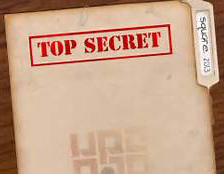

2018, January 22 — Review of Need to Know
Authentic! I received this book free from the publisher through NetGalley in exchange for a fair and honest review. Written by Karen Cleveland, and published by Ballantine Books, an imprint of Random House, New York in 2018, this story has the stamp of authenticity that comes from the author’s extensive experience working for the CIA and the FBI.
Vivian Miller is a counterintelligence analyst working for the CIA. She and her software engineer husband, Matt, have four kids. One of them, twin boy, has an acute congenital heart condition. At her job, Vivian has developed an algorithm that enables her to identify a Russian intelligence handler and to break into his computer, which contains the photographs of five agents who form a sleeper cell of Russian spies operating in the United States. When she looks at the photos, she receives the shock of her life. She recognizes one of the Russian agents.
In an effort to protect her family, Vivian becomes enmeshed in a web of deceit and betrayal woven by the Russian handler, Yury. The safety and lives of her children are threatened if she doesn’t do what the Russians demand. Things progress to a climactic conclusion that involves Vivian and her entire family, including her parents. Suspense is built all along the way. Can she really trust the people she does? Can she trust anybody at all? You can learn the answers by reading the book, which is very well-written, by the way.
I read an unedited proof, but I noted no deficiencies that needed correcting. The author uses the literary device of flashbacks, but she does so quite effectively. We see how her situation develops from the time she first meets her husband-to-be when she moves into her new apartment after being hired by the CIA following graduation form college. This writer is gifted, in my estimation, and will probably make the NYT Best Seller list with this book. The story is written from a woman’s perspective, and I believe women will like it. Even though I do not, in general, like stories with weak, foolish and stupid protagonists, I will make an exception this time. I didn’t really like Vivian, much, but I think that most readers will. This book is a keeper. I highly recommend it.


2018, January 19 — Review of The Rooster Bar
Scam the Scammers! Written by John Grisham, and published by Doubleday, a division of Penguin Random House LLC, New York in 2017, this book is a story about a group of four friends who are third-year law school students at “Foggy Bottom Law School” (FBLS) in Washington, D.C. FBLS is a “for-profit” school that is owned by an unscrupulous businessman who also owns seven other for-profit law schools. He hides his ownership by using shell corporations and holding companies. The friends finally realize that, after almost three years of study and hundreds of thousands of dollars in student loan debt, they have a less-than 50% chance of passing the bar exam, and of finding a good job as a lawyer. Their dreams are shattered and their lives are devastated. After a tragedy befalls one of them, the remaining three decide on a drastic course of action that will put them outside the system, and outside the law, when they drop out of law school and try a new tack.
The author has a political axe to grind, and he grinds it a bit in this novel. He provides considerable detail about the largesse for the unscrupulous, created by Congress, in making student loans easily available to students of even the shadiest of law schools—including the blatant degree mills. He doesn’t discuss it, but these practices involve many of the for-profit schools and universities in the United States, especially those focusing on Business and I.T. education. Some major US corporations even have policies against interviewing the graduates of some of these universities, at least one of which was called “The University of Honors” because of its easy grading policies. This makes it difficult for graduates to find good jobs after graduation.
Mark, Todd, Zola and Gordy are the best of friends. Gordy has Bipolar Disorder, and has stopped taking his meds. He and Zola have become lovers, even though he is engaged to his childhood sweetheart, Brenda. Zola is African-American while the others are all white. She is also a Muslim. Her family of illegal immigrants came to the US from Senegal, in Africa, but Zola was born in the US, making her an American citizen. She has two brothers, the oldest of which has married an American and moved to California. Immigration and Customs Enforcement (ICE) rounds up her undocumented parents and unmarried brother and holds them in detention before deporting them back to Senegal after twenty-six years in the United States. The author describes how Zola and her family continue to be victimized by unscrupulous officials, even in Senegal.
The Rooster Bar is a real bar where one of the friends, Todd, tends bar part-time to supplement his income from his student loans. The students rent the vacant upper floors of the bar from its bookie landlord and establish a phony law firm. They then start conducting business. What happens next surprises even them.
The members of the bogus law firm are eventually found out, but not before they formulate a unique plan to avenge the death of their friend, Gordy. Will the plan work? Will they be able to pull it off and escape before they are caught? Grisham does a good job of telling the story and keeping us in suspense. His experience as a lawyer makes the story credible, and the dialogue realistic. The plot is, however, a bit flat. One thing I did not especially like were the verbatim transcripts of e-mail messages between the students and their student loan servicers. I don’t think they contributed much toward the advancement of the story. They did, however, certainly add some more pages to the book . . .
All-in-all, this was an easy, entertaining read. It doesn’t seem to be the best of the author’s works, but it is still worth the read. If nothing else, a reader will learn something about the massive student loan debt the United States now sees, and how that massive amount of debt came into being and continues to grow. I liked the book enough to recommend it, but not enough to award more than three stars.


2018, January 16 — Review of The Curious Affair of the Somnambulist & the Psychic Thief
Supernatural! Written by Lisa Tuttle, and published by Hydra, an imprint of Random House/Penguin, New York in 2017, this book is set in the year 1893. Jasper Jesperson is a private detective operating in London, and Miss Lane is his partner and assistant. We eventually learn that Miss Lane’s first name is “Aphrodite,” a name she hates and never uses. She allows herself to be called “Di,” but she is never referred to in any way other than “Miss Lane” in the Tuttle novels. She is the foil “Dr. Watson” to Jasper’s “Sherlock Holmes,” except that she does not fight or carry a gun. The story is told from Miss Lane’s perspective.
The somnambulist (sleepwalker) is the husband of a client who wishes to end her husband’s sleepwalking, and to learn where he goes and what he does at night when he should be asleep in bed. Jasper is living with his mother, Edith, in a rented house on Gower Street, where she runs the household and the kitchen. Miss Lane has a private room upstairs, which is where she lives. Jasper begins to stake out the somnambulist, and to follow him when he goes out at night. It doesn’t take him very long to figure out what is going on, and who is behind it.
The plot is focused on psychic mediums who have real abilities—not just trickery and illusion. Several important mediums have disappeared recently in London, and Jasper and Miss Lane make it their mission to find them and learn what happened to them. They meet a powerful medium from America at Lord Bennington’s home, and learn that he has a very sickly wife who is a Russian princess. He also has a giant of a manservant, known as “The Cossack,” who is seven feet tall.
In the end, the two sleuths solve the case(s) and the police arrest the guilty. Miss Lane learns something new about herself, and Jasper learns to be a little less careless. The descriptions seem authentic for the period being depicted, as does the dialogue. Ms. Tuttle is a gifted writer whose novels are easy reads with a high entertainment value. I highly recommend this series of books.


2018, January 14 — Review of A Man of Shadows
Far Fetched! Written by Jeff Noon, and published by Angry Robot, an imprint of Watkins Media Ltd in 2017, this book is one of the most confusing and boring I have ever read. The story is supposed to be about a tough private detective searching for a lost eighteen year-old girl, but every time he finds her, he loses her again. He sometimes wears a fedora, carries a gun, and claims to be able to use his fists. But P.I. John Henry Nyquist is not a very likable guy. He stumbles around through the story drinking whisky, getting captured and beat up by the bad guys, and saying stupid things that are difficult to imagine anybody really saying. To me, he came across as totally incompetent. Oh yes, did I mention that he neglects to shower for days at a time? He carries a gun sometimes, but he believes that all of the bullets reside in the chamber, instead of just the one bullet that is ready to be fired. I guess as a seasoned detective, he is unaware that the other bullets reside in a part of the gun called the magazine.
The overarching theme of the book is time. Apparently, the setting is a place where time is arbitrary, and individuals and groups of people have their own timelines, which can be purchased commercially. They are constantly setting and resetting their watches and clocks. What nonsense! It is a far-fetched theme, in my view. The book is neither science fiction nor fantasy. It is just crazy and weird. One imagines that this story represents a very loooong nightmare. Or, on the other hand, it could represent a very bad trip, or trips, after using a drug like LSD. Then again, the story could also represent the ramblings of an insane person. Maybe all of them might be correct. Much of the story makes little sense.
All good novels need a certain amount of description, but when an author resorts to the use of description in lieu of the progression of a plot and story line, then the story suffers. This is one of those novels. There is way too much description, and not enough story. On top of that, the author resorts to cheap devices to pad the book, like filling most of a page with the repetition of the single word “Quicksilver” eight times in a row on page #207, or of writing seven lines to describe the ticking of a watch on page #224. On page #250, the author shows us the words “Eliza” and “Elizabeth” twenty-eight times in just a half page of text. On page #136, he uses a half-page to list, in a single paragraph, the names of a bunch of artificial constellations to be found in the sky over a part of the city. He lists twenty-seven of these meaningless names. This ploy takes up space, but does not contribute to the story at all. On page #254, he begins to repeat himself, telling us (once again) that the evening star is also known as Venus or Hesperus. We already know that. He told us so twenty pages earlier in the book. He first tells about the star on page #159, but he calls it Venus, not to be confused with a constellation called “Dark Eyed Venus,” which he first mentions on page #141.
This is definitely one of the worst novels I have ever read. I managed, with great effort, to finish it, but I definitely did not like it. I cannot recommend it to anybody, and especially not to lovers of good science fiction and fantasy. This story is confused and chaotic. It is not well-written. I think I actually hated it. Reading it became extremely tedious.


2018, January 11 — Review of The Paper Menagerie and Other Stories
Very Creative! Written by Ken Liu, and published by Saga Press, an imprint of Simon & Schuster, Inc. in 2016, this book is a collection of fifteen short stories that are of the Science Fiction & Fantasy genre. Some of the stories contain elements of both genres, and some are much more realistic (The Literomancer). I will list each short story and add my observations about them:


2017, December 31 — Review of Draft No. 4
Great Ideas! I loved this book. Written by John McPhee, and published by Farrar, Strauss and Giroux in 2017, this book is subtitled On the Writing Process. In it, McPhee offers advice and instruction to the writers of nonfiction, or what McPhee describes as factual writing. He does it with both straight instruction, and with anecdotes, most of which are very entertaining. He is an excellent teacher.
John Angus McPhee wrote for Time magazine, and for The New Yorker magazine for many years. Later, he taught, and still teaches, at Princeton University: “Since 1974, McPhee has been the Ferris Professor of Journalism” at the University. McPhee is “widely considered one of the pioneers of creative nonfiction” according to his entry in Wikipedia. “He is a four-time finalist for the Pulitzer Prize in the category General Nonfiction and he won that award on the fourth occasion in 1999 for Annals of the Former World (a collection of five books including two of his previous Pulitzer finalists). In 2008 he received the George Polk Career Award for his "indelible mark on American journalism during his nearly half-century career." He has been writing for The New Yorker since 1963.
The book is a collection of essays that form the book’s chapters, and that serve as a guide to the writing of long-form nonfiction, a branch of journalism that is focused on longer articles with greater amounts of content than ordinary news articles. Some of the essays (in the form of chapters) are very entertaining, in addition to being informative. I especially remember his descriptions of white water rafting on the Colorado River in the Grand Canyon, and his encounters with two Alaskan Brown Bears in Alaska. He once traveled with a long-haul truck driver from Georgia to Washington State, a trip of more than “three thousand one hundred and ninety miles.” He did, of course, write about his experiences. His tastes are eclectic, and he writes about a variety of topics that interest him. His ideas, therefore, might have value to anybody who wishes to write good nonfiction about any number of topics (including book reviews ☺ ).
The first chapter of the book is titled Progression. It discusses the relationship between characters and topics in an article of factual writing. It is complex, and I really can’t say that I fully understood it all.
In a chapter of the same name, he tells us about the importance of Structure in such writing, and he goes on to describe the two most common types of writing structure: chronological and thematic. He points out that chronological writing is the much more common structure seen in writing about people and events. Then he goes on to show us some unusual structures, how they were developed by him, and how they might appear graphically. He shows us examples, and he tells us about how Edgar Allen Poe went about developing the structure of the famous poem: The Raven. It is fascinating if you are at all interested in the process of writing nonfiction (or, perhaps, even some works of fiction, including poetry).
I found his ideas about structure to be unique and thought-provoking. Although not easy for me to grasp, and certainly not a concept for the lazy writer, the various structures he offers are already in use by other great writers—both of nonfiction and fiction. He stresses the importance of a good lead. Sometimes he was able to choose and write his own leads and titles. More often, his editors did it for him. This is a very difficult part of the writing process.
In another chapter, (Editors & Publisher) McPhee talks about some of the editors and publishers he has dealt with over his career. He especially mentions Mr. William Shawn, and he relates some interesting anecdotes. In the chapter titled Elicitation, the author offers useful advice to those writers of nonfiction who must interview other people in the course of their writing process. I think his advice is sound; I won’t forget it. In fact, I try to already use some of it (after a fashion) when I write my book reviews.
Two anecdotes he relates involve his interviews with Woody Allen, and with Jackie Gleason. I was quite amused by Allen’s witticisms. Gleason, on the other hand, seemed a bit mercurial. McPhee feels that, while Woody Allen might have been the easiest of all his interviews, Gleason was, perhaps, the most difficult. Strikingly, he tells us that he has no particular technique for conducting interviews. Rather, he tells us on page #99 that “I just stay there and fade away as I watch people do what they do.” A whole bunch of television news anchors and reporters need to read this book, and to follow this advice.
In the same chapter, the author teaches about the use of quotations in nonfiction writing. He tells us that trying to quote exactly is a mistake for the writer. He goes on to point out that: “Once captured, words have to be dealt with. You have to trim them and straighten them to make them transliterate from the fuzziness of speech to the clarity of print.” Many writers need to learn this lesson—even many writers of fiction. He goes on to say that: “Speech and print are not the same, and a slavish presentation of recorded speech may not be as representative of a speaker as dialogue that has been trimmed and straightened.” In my view, politicians and certain members of the news media know this, and they use it to present a message that often has nothing to do with the intent of the speaker when the words were initially uttered.
We are told about a 1991 US Supreme Court ruling, the 6-3 majority opinion of which was written by Justice Anthony M. Kennedy. In a split decision, the court ruled against Jeffery Masson, a psychoanalyst who claimed libel in quotations attributed to him in an article written for The New Yorker. At one point, Justice Kennedy said that: “writers and reporters by necessity alter what people say, at the very least to eliminate grammatical and syntactical infelicities.” Take note, writers. The Supreme Court is on your side. We can all benefit from learning to properly and strictly interpret the accurate, but incomplete or taken out of context, words of political leaders or other notable people. We need not be writers in order to benefit from the advice tendered in this book.
I was amused by the anecdote about McPhee’s interview with actor Richard Burton. He tells us about the occasion when Burton was to play Hamlet at the Old Vic theater, in England. He was told that the “old man” would be sitting in the front row, but that he never stayed beyond the first act. When Burton asked who the “old man” was, he was told that it was Sir Winston Churchill. Churchill sat in the front row and spoke Burton’s lines aloud for the whole performance. Burton would speed up and slow down, but could never shake Churchill’s voice throughout the entire performance. Not only did Churchill not leave early, but he told reporters after the performance that: “It was as exciting and virile a performance of Hamlet as I can remember.” Years later, when Churchill was asked about who should play his part in the TV production Winston Churchill—The Valiant Years, he told its producers: “Get that boy from the Old Vic.” Burton got the part.
The next chapter is titled Frame of Reference. In it, the author begins by discussing unusual adjectives, one of which he learned from one of his writing students at Princeton University. He adopted her use of similar such adjectives, telling us that one of his favorite adjectives to describe men’s mustaches is “sincere.” He still uses the term, even today. When his editor at the time first saw the descriptor, he came down the hall to McPhee’s office to ask him what it meant. McPhee doesn’t tell us, and we don’t know if he told his editor. He does, however, list some of the other adjectives he uses, including “tetragrammatonic.” He elaborates further, telling us that if writers use a frame of reference that the reader does not share, then the reader will not know what the writer is talking about when reading the writings. If readers do not share the writer’s understanding of the time period being described, or the milieu, they will not be able to grasp the points being made.
Checkpoints is the title of the next chapter. In this chapter, the author discusses the importance of fact checking an article for accuracy before publication—especially articles with a scientific or engineering bent. He anecdotally describes the checking process in use at The New Yorker. He tells us about one major error that made its way into the magazine in an article about plate tectonics that was actually a mistake in plate names that was actually made by the scientist being interviewed. He also tells us the story of the Japanese balloons that were being released from Japan and floated to the United States during World War II. There, they would crash and explode, detonating incendiaries and explosives. The Japanese released more than nine thousand of these thirty-three foot paper balloons from a beach on Honshu during the first year of the war. Six Americans were killed by them, all in the state of Oregon. Five of the six were children. One balloon made it all the way to Farmington, Michigan, a suburb of Detroit. The particular assertion to be fact-checked was that one balloon fell on the nuclear reactor in Hanover, Washington that was producing plutonium for the atomic bomb that was to be later dropped on Nagasaki, causing the reactor to be shut down. Because of the intense secrecy applied to these events by the US government at the time, it was extremely difficult to determine if this story was actually true. The fact checkers at The New Yorker were, however, able to determine the real story. To know the answer, read the book.
Apparently, newspapers in our country do not have discrete fact-checking departments, but many magazines do. (Obviously, Fox News Channel doesn’t either. ☺ ) I found one amusing passage where McPhee tells us about the movie The Third Man, in which actor Orson Wells is having a conversation with co-star Joseph Cotton. The conversation begins on a Ferris Wheel in post-war Vienna, and continues on the ground after the two got off the ride. Wells is comparing Switzerland to Italy and says: “In Italy for thirty years under the Borgias, they had warfare, terror, murder, bloodshed—but they produced Michelangelo, Leonardo da Vinci, and the Renaissance. In Switzerland, they had brotherly love, five hundred years of democracy and peace, and what did that produce? The cuckoo clock.” The assertion to be fact checked was: who originally wrote the words? Was it the writer of the screenplay, Graham Greene? That would be the natural assumption, but thorough fact checking revealed that it was actually Orson Wells, himself, who made up and delivered these lines in the movie.
The next chapter bears the same title as the book: Draft No. 4. The first thing discussed in the chapter is writer’s block: “It puts some writers down for months. It puts some writers down for life.” Powerful words! On page #158, McPhee goes on to define how one would know whether or not he/she is a writer, and it makes a lot of sense. He also offers some good strategies for breaking a block. The first draft is the most difficult, with a 4:1 ratio of time and effort involved between the first and all subsequent drafts of the piece being written. He stresses that this has been his experience throughout his writing career. As a writer of more than 32 books and countless magazine articles, I think he probably knows what he is talking about. I also imagine that this should include the writing of fiction.
McPhee advises writers to use a good dictionary before using a thesaurus when searching for appropriate words for use in an article or book. He provides convincing reasons for doing so. He tell us when to use the word “which,” and when to use the conjunction “that.” Then, another useful bit of information is offered: when should a writer use “further,” and when should the alternative word “farther” be used. Writers who consult a dictionary might become convinced that the two words are identically equivalent, but they’re not. Use “farther” to describe a difference in distance. Use “further” to describe a difference in degree. I won’t discuss this topic any further. ☺
The final chapter of the book is titled Omission. The author instructs on how to determine what should be left in, and, more importantly, what should be left out, of a piece of writing before it is submitted for publication. McPhee mentions the use (or overuse) of puns in factual writing. Clearly, there is a balance that must be struck when a writer attempts to be humorous. An interesting aside that I learned from this chapter is that it was Ernest Hemmingway, and not the former head of the Pentagon, who first talked about “known knowns, known unknowns, and unknown unknowns.” Who knew? (Oops!)
It is in this final chapter of the book, that McPhee defines the term “creative nonfiction” for us. In his definition, he tells us that the “creativity lies in what you choose to write about, how you go about doing it, the arrangement through which you present things, the skill and touch with which you describe people and succeed in developing them as characters, the rhythms of your prose, the integrity of the composition, the anatomy of the piece (does it get up and walk around on its own?), the extent to which you see and tell the story that exists in your material, and so forth. Creative nonfiction is not making something up but making the most of what you have.” This is how he presents it to his Princeton students.
The final tidbit in the book is his passage about “greening.” Taken from the practice of using a green pencil to mark a manuscript at Time magazine, the term refers to a cryptic notation on a piece of work that has been returned to the writer from the editor before publication. The notation might say “Green 5” or “Green 8,” or “Green 15.” It meant that the writer had to reduce the size of an article by five, eight or fifteen lines to make it fit into the space allocated for it in the magazine. To this day, McPhee teaches this skill in his university classes. He regularly assigns students the task of “greening” their assignments after he has read and graded them. The greening, however, must not change the meaning of the article. It is a useful skill, although it is not used at all magazine and newspaper publishers.
This is a great book. It is chock-a-block with useful ideas for writers of all genres of nonfiction, and some writers of fiction, also. If you are interested at all in the writing process, you should read this book. I did, and I thoroughly enjoyed it. It was written using the same techniques that the author advocates in his Princeton classes, and in this book. That made it much better than it could have been. It is a relatively quick and easy read with a lot of entertainment value.
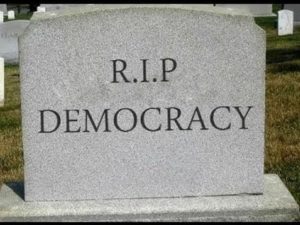

2017, December 26 — Review of How Democracies Die
Depressing! I received this book free from the publisher through NetGalley in exchange for a fair and honest review. Written by Steven Levitsky and Daniel Ziblatt, and published in the United States by Crown, an imprint of the Crown Publishing Group, a division of Penguin Random House, New York in 2018, the book consists of a detailed and concise account of various democratic governments that have collapsed in relatively recent history, and how they compare to the state of the US government and its political systems and leaders today. It is extremely well-researched. It is also very convincing. Its logic is inescapable. What has happened to other democracies, and what has almost happened on at least two previous occasions in the United States, could easily happen here again. The signs are unmistakable.
Three countries frequently cited in the book as paradigm examples are: Germany under Adolph Hitler, Italy under Benito Mussolini and Venezuela under Hugo Chavez. Even though Chavez was elected by popular vote, while Hitler and Mussolini were not, political insiders helped these men to obtain power by responding to their own thirsts and desires for power or riches (or both).
The authors put forth four signs of authoritarianism: According to them, “We should worry when a politician 1) rejects, in words or action, the democratic rules of the game, 2) denies the legitimacy of opponents, 3) tolerates or encourages violence, and 4) indicates a willingness to curtail the civil liberties of opponents, including the media.” Does any of this sound familiar? How about Donald Trump issuing “Executive Orders” when Congress declines to grant his wishes? Or, how about his insistence that Hillary Clinton had no right to be president and should be locked up, or his frequent exhortations to the crowds at his rallies to use violence against protestors and media representatives, telling his supporters that he would pay their legal bills? How about his calls to curtail the news media, and his constant railing about “fake news”? Of course, Fox News Channel, an outlet that never says anything at all critical of Trump, enjoys immunity from his accusations against the media.
Building on the efforts of previous researchers, the authors “have developed a set of four behavioral warning signs that can help us know an authoritarian when we see one. We should worry when a politician 1) rejects, in words or action, the democratic rules of the game, 2) denies the legitimacy of opponents, 3) tolerates or encourages violence, and 4) indicates a willingness to curtail the civil liberties of opponents, including the media.” The authors supply details about the four indicators of authoritarianism in the form of questions presented in a table to be found at locations #281 - #313 in the Kindle edition of the book. One example of the questions includes: "Do they attempt to undermine the legitimacy of elections, for example, by refusing to accept credible electoral results?” (Donald Trump telling us that he might not accept the results of the election if he lost.) Another question is: “Do they baselessly describe their partisan rivals as criminals . . . “ Who can forget the chants of “lock her up” frequently heard at Trump rallies, even after he became President. One of the third types of question is: “Have they or their partisan allies sponsored or encouraged mob attacks on opponent?” Have we forgotten the frequent shouts by trump to “throw them out of here”? Or promises that he would pay the legal expenses of anybody arrested for using violence? The fourth indicator can be plainly seen in the answer to the following question: “Have they supported laws or policies that restrict civil liberties, such as expanded libel or defamation laws, or laws restricting protest, criticism of the government, or certain political organizations”? In March of 2017, Trump said: “I’m going to open up our libel laws so when they write purposely negative and horrible and false articles, we can sue them and win lots of money.” There they are. Questions and answers. Ask yourself this: Is Donald J. Trump an authoritarian? Does he have the potential to become another Hugo Chavez? A Fidel Castro? An Adolph Hitler? Forget Godwin’s Law! It is nothing more than Political Correctness (PC) run amok. The comparison to Adolph Hitler is legitimate to anybody who has studied European History during the first half of the Twentieth Century.
The authors cite the example of strongman Alberto Fujimori manipulating the Supreme Court in a successful attempt to be able to run for an unconstitutional third term in office as President of Peru. How much different is that from US Senate Majority Leader Mitch McConnell of KY denying hearings or a confirmation vote on then-President Barack Obama’s nominee for the US Supreme Court during all of 2016. It is really no different from what happened in Peru. The Leader’s actions were certainly undemocratic, yet his supporters love him. Tellingly, they all seem to be Republicans. That’s something we should be thinking about at every election.
The authors make some important points. They tell us, for example, that “Democracies may die at the hands not of generals but of elected leaders—presidents or prime ministers who subvert the very process that brought them to power. Some of these leaders dismantle democracy quickly, as Hitler did in the wake of the 1933 Reichstag fire in Germany. More often, though, democracies erode slowly, in barely visible steps.” The authors go on to add that “This is how democracies now die.” The analogy to the frog and boiling water comes to mind when considering this. Americans are being led down the path to authoritarianism, and they don’t even realize it.
Democracies have functioned well in the United States over the years for a simple reason: the application of checks and balances in the form of basic democratic “norms.” One of these is “mutual toleration,” the notion that “competing parties accept one another as legitimate rivals.” The other norm is “forbearance,” or the idea that “politicians should exercise restraint in deploying their institutional prerogatives.” Both of these norms have been seriously undermined, and even abandoned entirely, over the past thirty years, primarily by Republicans. The authors cite an example: “By the time Barack Obama became president, many Republicans, in particular, questioned the legitimacy of their Democratic rivals and had abandoned forbearance for a strategy of winning by any means necessary.” Another way of describing this phenomenon is that the Republicans are playing “constitutional hardball” or “playing for keeps.” “It is a form of institutional combat aimed at permanently defeating one’s partisan rivals. In essence, it means not caring whether the democratic game continues.” The conclusion is: “There are, therefore, reasons for alarm.” I found these sections of the book to be particularly persuasive.
A little further into the book, we are told that the political parties and party leaders are “democracy’s gatekeepers.” And that: “Potential demagogues exist in all democracies, and occasionally, one or more of them strike a public chord.” Whenever this might happen, it is the responsibility of the party to reign them in and prevent their abuse of power. Specific supporting examples are provided. This is something that was not considered by our founding fathers, but it occurred in the U.S. anyway, and it prevented the kind of demagoguery that we have not seen for more than 200 years — until after the 2016 presidential election.
Continuing about gatekeeping, the authors go on to tell us that: “For its part, the United States has an impressive record of gatekeeping. Both Democrats and Republicans have confronted extremist figures, some of whom enjoyed considerable public support. For decades, both parties succeeded in keeping these figures out of the mainstream. Until, of course, 2016.” Unfortunately, this is so obviously true. But, the authors go on to warn us that: “An overreliance on gatekeeping is, in itself, undemocratic—it can create a world of party bosses who ignore the rank and file and fail to represent the people. But an overreliance on the ‘will of the people’ can also be dangerous, for it can lead to the election of a demagogue who threatens democracy itself. There is no escape from this tension. There are always trade-offs.” To our nation’s shame, the election of a demagogue is exactly what happened in 2016. “Republican leaders were forced to face reality: they no longer held the keys to their party’s nomination.” And so, Donald J. Trump is now our nation’s president.
In elaborating on the four traits of authoritarianism, the authors tell us that “No other major presidential candidate in modern US history, including Nixon, has demonstrated such a weak public commitment to constitutional rights and democratic norms.” Donald Trump has accelerated the process begun by Newt Gingrich so many years ago. “The erosion of democracy takes place piecemeal—often in baby steps.” We have seen this process at work for more than thirty years, and it has only moved into high gear after the election of Trump.
Later in the book, the authors tell us how governments must change the rules of the game in order to entrench themselves in power. We saw Governor Scott Walker do it in Wisconsin when he successfully attacked his state’s labor unions, and then fought off an attempt to recall him. Such moves, along with the successful attempts by several states to disenfranchise minority voters, “are often carried out under the guise of some public good, while in reality they are stacking the deck in favor of incumbents.” One example of this is the tremendous push by Republicans to disenfranchise voters by claiming that citizens who are registered in two or more states are committing voter fraud. Let’s take a look at this assertion. I lived in a Midwestern state for more than 21 years. I moved to a Western state, California, where I lived for three years before moving to another Western state. What is the likelihood that I am still registered to vote in those other two states? I might still be registered to vote in all three states. How would I know? Do Republicans really believe that I would jump on an airliner, fly to Chicago, rent a car and drive 90 miles to my polling place to vote, then backtrack to O’Hare, fly back to the West, vote in California, then drive to my current home to vote a third time? How much would that cost? Would anybody really be willing to spend the time, the money, and the effort to do such a thing? For a single vote? It would be insane! And so are the people who believe that such things really take place: Republicans! People move all the time, and this was especially true after the Republican-instigated Great Recession of 2007-2008. Nobody, and I mean NOBODY, bothers to contact their local commission of elections to notify them that they are moving away. It just isn’t done.
Levitsky and Ziblatt talk about the “guardrails of democracy,” and they tell us that there are both hard guardrails and soft guardrails. The guardrails define the limits beyond which the government, no matter how radical, might travel. But when mutual toleration between ideologies and the politicians who espouse them exceed the norms of democratic politics, “[t]he result is politics without guardrails—what political theorist Eric Nelson describes as a ‘cycle of escalating constitutional brinksmanship.’” Forbearance was abandoned in 2016 by the leadership (Mitch McConnell) of the U.S. Senate. “. . . For the first time in American history, the U.S. Senate refused to even consider an elected president’s nominee for the Supreme Court.” “Since 1866 every time a president had moved to fill a Supreme Court vacancy prior to the election of his successor, he had been allowed to do so.” Until 2016, that is. McConnell refused to allow a vote on the confirmation of President Barack Obama’s nominee for the Supreme Court: Merrick Garland. The Republicans changed the rules in 2016, and further contributed to the erosion of democracy.
The authors have identified a major factor in the increasing divide between the political parties: racism. They point out that “as the Democrats have increasingly become a party of ethnic minorities, the Republican Party has remained almost entirely a party of whites.” These whites overwhelmingly support Donald Trump. “All but one Republican senator voted with President Trump at least 85 percent of the time during his first seven month in office.” Alarmingly, “[u]nwilling to pay the political price of breaking with their own president, Republicans find themselves with little alternative but to constantly redefine what is and what isn’t tolerable.” Those of us who have been paying attention have already seen this. The authors’ conclusion is that “This will have terrible consequences for our democracy.” I’m sad to say that I agree with their conclusions.
Continuing with their observation about Trump, the authors tell us that “Under Donald Trump, the United States appears to be abandoning its role as democracy promoter for the first time since the Cold War. President Trump’s is the least prodemocratic of any U.S. administration since Nixon’s. . . . A country whose president attacks the press, threatens to lock up his rival, and declares that that he might not accept election results cannot credibly defend democracy.”
At this point in the book, the authors offer what, to my mind, are soft, mushy, and unrealistic suggestions for curing our nation’s ills. They criticize Progressives who believe that the Democrats should adopt the same tactics as the Republicans, but their alternative is not the least bit likely to be successful, IMO. They tell us, for example, that: “Reducing polarization requires that the Republican Party be reformed, if not refounded outright. First of all, the GOP must rebuild its own establishment.” How unrealistic is that? Never gonna happen! They say that a new coalition needs to be built to unite “Bernie Sanders supporters and businesspeople, evangelicals and secular feminists, and small-town Republicans and urban Black Lives Matter supporters” that will “open the channels of communication across the vast chasm that has emerged between our country’s two main partisan camps.” What have these guys been putting in their coffee? Many Americans currently believe that the Black Lives Matter organization does more harm than good, that Bernie Sanders and his supporters are out of touch with reality, and that small-town Republicans would NEVER agree with anybody in either of the other two groups about anything. This sounds like more of what Republicans derisively call “Kumbaya.”
Oh, wait! Maybe they mean that what our country REALLY needs is a new, third political party. Call it the Independent Party, or call it something else. Organize it around the principals of democracy put forth by our founding fathers. It might take a while, and it might cost a lot of money, but it could be done. Look how well Ross Perot did in the presidential elections of 1992 and 1996. He ran as an independent in 1992, and as the candidate of the Reform Party in 1996. All that would be needed is a charismatic leader — one who could command the respect of the American people, and who could successfully solicit contributions, but NOT Bernie Sanders. ☺ This party should not limit itself to presidential elections, but should run candidates in all elections at all levels. It would be a slow, painful process, but the alternative offered by the authors is simply too unrealistic.
The final conclusion of the authors, presented at the end of the book is: “Ultimately, then, American democracy depends on us—the citizens of the United States.” They are spot-on with this conclusion. The question is: How do American citizens fix a broken political system? In my opinion, the evil and corruption that has infused politics and governments in recent years can be largely attributed to the massive failure in its mission by the First Estate: the clergy, and especially the Christian clergy. The news media has also played a role. The authors, however, do not mention the ultimate root causes of our nation’s descent into authoritarianism. They discuss the behavior of the American people, but not the reasons why they behave the way they do.
Most of the conclusions drawn by the authors are well-reasoned and compelling. To anybody who is fully conscious, who is alert and paying attention, who is not living in a state of delusion watching the Fox News Channel, or who has not been asleep in front of the TV set for the past thirty years, the parallels between the United States and those nations that were once democratically governed and have now fallen into authoritarianism, is inescapable. The United States of America is traveling down the same path. The prospect is scary, and it is depressing. Read this book.


2017, December 16 — Review of False Positive
Riveting! Written by Andrew Grant, and published by Ballantine Books, an imprint of Random House, a division of Penguin Random House LLC, New York in 2016, this book is the first of the detective police procedural novels featuring Cooper Devereaux of the Birmingham, Alabama Police Department. At least three books of this series will have been published by January of 2018. I read the third one, pre-publication, and I liked it so much that I acquired the first novel and I enjoyed reading it, also. I am waiting to acquire the second novel of the series: False Friends. This author has a great deal of talent and makes very few mistakes in his writing. The research necessary to write such a clear and crisp narrative appears to have been thoroughly conducted. The story is quite realistic.
In this, the first novel of the series, we learn a little bit about Devereaux’s background. We learn that his father was a police detective who was killed in the line of duty when Devereaux was only seven or eight years old, and that a police detective named Hayden Tomcik took the orphaned boy under his wing, tried to pick good foster homes for the boy, and got him admitted into the Birmingham Police Academy when he became old enough. We learn that, eight years ago, Devereaux had a brief relationship with a woman named Alexandra Cunningham, an attorney, before she broke it off suddenly, and without explanation. We learn that Devereaux’s personnel file contains numerous entries that have, apparently, adversely affected his career in law enforcement.
The story starts out with a bang after the kidnapping of a seven year-old boy from his home in suburban Birmingham. Devereaux is on suspension after false accusations have been lodged against him, but his boss, Lieutenant Danielle Hale, calls him back to the force to work this case, much to the chagrin of Captain Emrich, who believes that Devereaux is “a disgrace.” There is little love lost between the two men, and Emrich actively works against Devereaux at every opportunity. Lieutenant Hale, on the other hand, has a good relationship with Devereaux — to the point of actual friendship. Devereaux is assigned a new partner when he arrives at the office: Jan Loflin, recently transferred from the Vice Division after working for a long time undercover. The two seem to get along okay, but there is still a lot of story to be told at this point.
Devereaux discovers the body of another murdered man, and also a murdered prostitute, and focuses his investigation on a connection between them and the kidnapping of the boy, but his superiors, and the FBI, do not see the same connections that Devereaux sees, and they order him to back away from the other issues and focus entirely on the missing child. It’s a good thing Devereaux doesn’t listen. His instincts are uncannily perceptive and accurate. By the end of the story, Devereaux is on his own when it is time to confront the kidnapper, who is also a serial killer. Backup is just not available, but Devereaux prevails. (Of course. Otherwise there could be no more books in the series. ☺ )
There are a few minor inconsistencies in the story, such as the dried bloodstain on the shirt of the old man who Devereaux encounters in the lobby of his condo building early in the book. We are never told where the blood came from or what caused it. I noticed a couple of other unanswered questions left dangling at the end of the story, but I consider them to be no more than minor irritants, not important to the overall quality of the novel.
This is a quick, easy read. Well, maybe I just thought it was quick because I had trouble putting the book down. It is an entertaining story with a lot of action, suspense, and very good dialogue. You will probably like this book. I know I did.


2017, November 28 — Review of The Great Gasbag
Acerbic! Written by Joy Behar and published by HarperCollins – New York in 2017, this book is a humorous satire on President Donald J. Trump and his political party, the GOP. Readers who might be offended by four-letter profanity should be warned that this book contains a fair amount of it. Behar is a stand-up comedian and co-host of the TV show The View. It is very clear from her words in this book that she dislikes Trump and Republicans, in general. It is, however, quite funny most of the time. Behar’s acerbic wit is often right on point, but supporters of The Donald will probably not appreciate it very much. Nor will most Republicans because she does not hesitate to take on other members of the conservative GOP establishment in this book.
The book is written in the style of an encyclopedia, with one chapter devoted to each letter of the English alphabet, and each blurb in each chapter also ordered alphabetically. The first item of the first chapter is titled “A is for Acid Reflux.” She goes on to explain: “Which is what 65,853,216 Americans get every time Trump holds a televised pep rally or press conference.” The number refers, of course, to the number of popular votes received by Hillary Clinton in the 2016 presidential election. The last item of the final chapter of the book is titled “Z is for Zzzzzz.” It continues: “The Lunesta I took three chapters ago is kicking in. I’m getting drowsy now. Wake me in four years when this nightmare is over.”
In her Preface, the author mentions a few of the alternative titles she had considered before choosing The Great Gasbag for this book. A few that I found amusing included: Con With the Wind, Catcher in the Lie, Gullible’s Travels, and The Son-in-Law Also Rises. Any of them would probably have been appropriate given the content of the book. Some other alphabetic entries that I thought were especially worthy of mention include:
B is for Bankruptcy. “Most people consider filing for bankruptcy a sad, traumatic, life-altering, devastating process. Donald Trump considers it ‘Tuesday.’”
M is for Mar-a-Lago, in which we learn how Donald Trump gained ownership of this famous resort that was built by “socialite and billionaire Post cereal heiress Marjorie Merriweather Post.” It seems that our country’s taxpayers subsidized Trump’s purchase of this valuable property. Who knew?
In the same chapter, under the heading M is for Mistake, Behar relates a few of the mistakes made by Presidents George W. Bush and Donald J. Trump, and how both presidents deny making mistakes. She comments that “There is a clinical psychological word for a person who believes he never makes mistakes: liar.”
Under the heading G is for Guns, the author points out that “Republicans love saying, ‘Guns don’t kill people, people kill people.’” She then asks the important question: “If guns don’t kill people, why do we give our soldiers guns rather than spatulas?” Food for thought.
Behar tells us that “There are at least thirty-four different types of lies.” She doesn’t list them all under L is for Liar because she was “due at Mount Sinai Hospital in ten minutes to start [her] shift as head of Cardiology. (A lie, of course. ☺ )
One of the things I learned from reading this book was that Senator Mitch McConnell apparently had Polio as a child, and received free treatment at the Polio treatment and rehabilitation center in Warm Springs, Georgia. That institution was founded by Franklin D. Roosevelt (a Democrat) in 1927. Treatment at Warm Springs was free, and McConnell certainly benefited from it. Now, however, as Senate Majority Leader, he does not hesitate to take away any sort of free health care benefits from those who can’t afford to pay for them. Talk about hypocrisy!
For the most part, the humor is pretty good, but I think the book could have been written without quite so much foul language, and it still would have made its point. Even some Liberals will be turned off by Behar’s vulgarity in some places.
Nevertheless, this is a light, easy read. It probably would only have about 200 pages of content if the fancy formatting and photographs were removed. The editing is very good. I found no copy editing errors, and no major inconsistencies. If you are the least bit inquisitive about our president, and if you don’t mind a little salty language, then you should probably read this book. I did, and I liked it so much that I recommend it.


2017, December 11 — Review of Crash
Who Am I? I received this book free from the publisher through NetGalley in exchange for a fair and honest review. Crash is a psychological thriller written by Keith Houghton and published by Thomas & Mercer, Seattle in 2018. The book begins with a stage-setting Prologue that introduces us to Jed Allen, the protagonist. Cassie, the love of his life, is introduced in Chapter One. They are in New York during the winter, and during a January blizzard. Somewhat incongruously, there is hail falling, even though hail in America is associated more with summertime thunderstorms, while sleet or ice pellets are more usually found in blizzards of snow. Perhaps the author is not familiar with such harsh weather. In any case, because of the icy roads, there is a major accident, and it affects the lives of both Jed and Cassie. This is the crash from which the novel takes its title.
Jed receives a head injury that results in a condition known as “intermittent amnesia.” He passes out for short periods, and when he awakes, he can remember nothing at all of his previous life before he had passed out. Nothing! Sometimes the periods of amnesia last only seconds, but they had been growing into longer and longer periods of time. Jed is being treated by Dr. Merrick, and she has prescribed several medications for him. They do not seem to be working very well, and when mixed with the alcohol and recreational drugs favored by Jed and his business colleagues, he has a tendency to hallucinate.
Jed’s childhood friend, Gary Quartucci, is his partner in a high-end, but small, Wall Street architectural firm. They have been working for two years on a mammoth project for Xian Airlines for a new headquarters building in Shanghai, China. The building will be more than a thousand feet tall, and will be shaped like a giant elephant’s tusk. Jed and Gary have traveled to China, and have entered into a gentlemen’s agreement with the CEO of the airline, and with his senior executives, to proceed with the project. The Chinese have now traveled to New York to close the deal and sign the contracts. That’s when things begin to really go wrong.
During this same period, a serial killer nicknamed by the news media as the “Central Park Slasher” is hunting women in Central Park killing them and cutting up their bodies before dumping them in a remote site near Jed’s boyhood home of Pleasantville, NY.
When Jed wakes up with his head on his desk, it is another lapse into amnesia. This time, however, the period of amnesia seems permanent, and Jed cannot remember anything about his life before his most recent plunge into amnesia. He is left to learn on his own who he is, and what he has done. He is surprised and dismayed by some of the things he discovers. But he is determined to turn his life around and do the right thing. He is haunted, however, by his unsuccessful search for Cassie. He seems to be just missing her, and her calls. Dr. (Sarah) Merrick is helping, of course, but the problem is more complex than either of them realizes. Then . . . there is another murder in Central Park and the developments really begin to cascade. Jed learns some things that shock him, and he soon has to explain a lot to the police, to Sarah, and to the FBI.
There are plenty of plot twists that will keep the reader guessing in this very well-crafted thriller. Inconsistencies, when seen at all, are minor. Editing is of high quality with almost no errors being found (except one or two small ones). The story is intense and better than I expected. I liked this book and would recommend it to readers of the genre.


2017, December 10 — Review of False Witness
Gifts! I received this book free from the publisher through NetGalley in exchange for a fair and honest review. Set in Birmingham, Alabama in the present day, this novel was written by Andrew Grant and published by Ballantine Books, an imprint of Random House – New York in 2018. The story involves the murder of two young women (and, later, a third) on their twenty-first birthdays. The only thing they seemed to have had in common was that they had both had babies that were given up for adoption at birth, and that they died on their twenty-first birthdays. Cooper Devereaux is the lead detective on the case. Devereaux is dealing with his own demons as he works his way through the evidence and the witness interviews to solve his case. His father had been a known criminal who had been killed by the police when Cooper was a child, himself. The trauma resulting from his traumatic learning of his father’s death, and of his criminal record, led to a troubled childhood for young Devereaux. Thankfully, he was helped by the cop who had handled his father’s case, even to the extent of sponsoring Cooper’s entry into the Birmingham Police Academy. Unfortunately, Alexandra, his girlfriend and mother of his daughter Nicole, has learned of his troubled past and left him for the second time after an eight-year separation in order to think things over.Only minor inconsistencies were noted in the book. One was the consternation of the detectives over not having a photograph of a potential suspect to show to a witness. Never mind that the suspect drove vehicles in his place of work and, presumably, held a valid Alabama driver’s license. Couldn’t they get a photograph from the DMV?
The story is well-told, and well-written. The action is consistently fast-paced. Because of the beginning of the novel, readers will be pretty certain of who they believe the murderer is, but this is a police procedural story, and the police have not figured it out, yet. At least, readers might think they know the identity of the killer. But they can’t really be sure. The author keeps us guessing right up to the end of the story, which has a few plot twists. The plot is easily able to hold our interest as Devereaux and his partner, working with an FBI agent and more-senior police officers grind through the complex, and sometimes contradictory, evidence. Unfortunately, more innocents must die before the murders are solved, but Devereaux does everything in his power to prevent that.
I liked the protagonist, Cooper Devereaux, and I thought the dialogue was realistic, as were details about the environs of Birmingham, although I have never been there. This is an easy, entertaining read. It is crisp, without an excess of self-analysis and romance to make one wonder about the genre. I enjoyed reading this story and would recommend it to others. I will definitely read the next of this author’s works.


2017, December 8 — Review of What Doesn't Kill You
Love Story. I received this book free from the publisher through NetGalley in exchange for a fair and honest review. Written by Aimee Hix, and published by Midnight Ink in Woodbury, Minnesota in 2018, the novel is purported to be a PI procedural murder investigation story. In fact, however, it is a thinly-disguised Romance story that is heavy on the hormones and sexual references, and light on the investigation. Wannabe private investigator, and ex-cop, Willa Pennington discovers a dead body when she goes to her neighbor’s granddaughter’s house to assist her in moving away from an abusive boyfriend. The body is that of the boyfriend. He had been shot twice through the chest. The granddaughter, Violet, is the immediate suspect, but Willa believes she is innocent.Willa’s father is a private investigator, and Willa wants desperately to join him in his practice. He is, however, now on a cruise in the Caribbean with his second wife and Willa’s stepmother. Willa is on her own. Fearing nothing, and unable to control her impulses, she sets about starting her own murder investigation, even though she has no PI license, and even though it is not legal in Virginia for private citizens of any sort to conduct murder investigations. An old flame, Seth Anderson, soon enters the picture, and Willa’s passions are immediately stirred, and stirred, and stirred . . . In fact, the stirring never seems to stop. She seems totally unable to control herself, anxious to jump into bed with Seth at every opportunity. I know what you’re thinking. Somebody with such a total lack of self-control should never be an investigator of any kind, and I agree with you. The author, however, clearly does not.
At the beginning, the book seemed to have been written in 1930s-style detective noir, with a lot of sarcastic dialog and thinking-out-loud that seems a bit out of place in the 21st Century. It recurs periodically throughout the book, but is not constant, so the character of the protagonist seems to change from tough PI to vulnerable woman with romance on her mind as the story progresses.
From starting with a “bang” as Willa discovers a dead body, the story slows perceptibly. After a bit, one begins to wish the author would just get on with the story, and stop focusing on the romantic interests of Willa and Seth. It detracted greatly from what, otherwise, could have been a good story. By one-third of the way into the story, I had arrived at the conclusion that the story was “mushy,” and that the character of Willa Pennington was also “mushy.” The book really lacks crispness. After a while, reading it just became tedious, and I began to look forward to the ending so I could read a different book. Too bad. I thought it had a great beginning, but it just petered out . . .
By 60% into the story, I had begun to become tired and bored because this was some sort of Romance novel, filled with a lot of self-psychoanalysis about Willa and her romantic involvements with the men in her life, and with her relationship with her biological parents. Had I known in advance that this novel was a Romance, and not a PI police procedural, I would not have chosen to read it. I am quite disappointed.
There are a few inconsistencies in the story. At location #735 in the Kindle edition, Willa receives a telephone call from the missing Violet, who the police are searching for. She answers the call, trying to protect Violet by saying: “Willa Pennington here. I do not want you to tell me your name.” Five paragraphs later, Willa says: “I need information only you have, Violet.” What? Either she doesn’t want to acknowledge who she is talking to, or she does. Which is it?
From the blurb at the beginning of the book, I did not expect it to be a love story at all. But it is. It more a love story than any other kind of story. I think this writer has talent, but if she wants to write Romance novels, she should make it clear that they are not detective, crime, murder mystery, or police procedural novels. I did not like this book and will not recommend it to others.


2017, December 6 — Review of Cold Christmas
Shocking!! I received this book free from the publisher through NetGalley in exchange for a fair and honest review. Written by Alastair Gunn, and published by Penguin Random House UK in 2017, this is a police procedural novel set in the vicinity of London, England in the present day. The protagonist is Detective Chief Inspector (DCI) Antonia (Toni) Hawkins of the Metropolitan Police (Met). Her fiancé is an American, Mike Maguire, also a detective with the Met. Hawkins has arranged for the transfer of Detective Inspector (DI) Maguire from her unit to a narcotics task force in order to attempt a delay of their upcoming wedding. Maguire is happy with his new assignment because he does not realize that his fiancée arranged the transfer. Their relationship is on the verge of breaking up, and Hawkins is hiding her concerns about their relationship from Maguire.
A considerable amount of the story is devoted to details of their domestic relationship, which I found to be distracting more than contributing. If I wanted to read a Romance novel, I would not have acquired a Police Procedural book.
The title of the book is derived from the name of a hamlet and the ruins of an old church near London that got their names from a very cold winter centuries ago in which a number of the community’s children died, and whose remains were interred in the church cemetery. Both the church and the nearby hamlet were named Cold Christmas by the locals. The church is believed to be haunted, and believers and spiritualists from near and far travel to the site as tourists, much to the irritations of many of the locals. The author provides what I believe to be an excess of detailed description about the church, its cemetery, and its environs that amounted to a lot more than I really wanted to know about the place. In addition, there are several plot detours that appeared to me to be nothing more than red herrings designed to add pages to the book without materially contributing to the plot. I thought they could have been better handled by the author.
The story begins as the bodies of three young men are found in an abandoned building, and there is no obvious sign of the cause of death. It turns out that the murder weapon will be uniquely new to crime fiction. It is quite creative. Before the case is solved, there will be additional murders. DCI Hawkins will chase empty leads a couple of times before she homes in on the trail of the killer, but she eventually finds him (of course). Unfortunately, her lead investigative detective, DS Frank Todd, is skeptical of her theories of the case, and seems to disrespect her role as the chief investigator on the case. He is not there when she needs him most.
Some parts of the story are worded and structured in such a way as to make it a bit confusing at times, especially near the beginning, but the intent is usually decipherable. Even though the novel was probably intended for a British audience, Americans should have no problems with the British slang and idioms, and shouldn’t have any problems following the story line.
The story could benefit from additional character development. Aside from DCI Hawkins, the other characters all seem two-dimensional, at best. At the end of the story, we are left wondering about some of the members of her team of detectives — especially those who seem to have performance and attitude issues. To me, the ending of the story was quite unsatisfying, but others might not agree. Still, the book is a quick, easy read with a good deal of entertainment value to those who like British police procedurals. I can certainly provide a qualified recommendation to aficionados of the genre.


2017, December 03 — Review of Strange Music
Look! It’s a bird, it’s a plane … I received this book as an uncorrected proof free from the publisher through NetGalley in exchange for a fair and honest review. Written by Alan Dean Foster, and published by Del Rey, an imprint of Random House/Penguin in 2017, the story is science fiction that appears to be aimed at the Young Adult (YA) readership audience. This is the latest in the Pip & Flinx series of novels that the author has been publishing for thirty-five years. It is a light, easy read with a surprising plot twist at the end. Even though this was an uncorrected proof, it contained very few copy editing errors. The only major factual error I noted was a reference to Flinx’s airway being his esophagus at Location #3043 in the Kindle version of the book. Other than that, the story is pretty solid.
Flinx and his pet minidrag, Pip, travel to a foreign world to save the daughter of a local leader who has been kidnapped by another leader in order to put a halt to the efforts to unite the peoples of the planet so that they might join the technologically-advanced Commonwealth. Flinx accepts an assignment to find and rescue the kidnapped Firstborn daughter of the leader of a political entity. The world to which they travel, Largess, is primarily a water world — cloudy, cold and damp most of the time. The natives are fur-bearing beings that need the water in the seas, and in the air, in order to maintain their skin and fur. For Flinx, however, the absence of sunlight is a severe discomfort.
Pip is best described as a highly-venomous snake with wings. She is able to spit her venom with deadly accuracy, and it is always fatal. Both Pip and Flinx are empaths — they can sense, and sometimes influence, the emotions of others. Because she is a pet, and not a technologically-advanced weapon (which are proscribed on this Class IVb world), she is not recognized for the deadly weapon she can become under Flinx’s direction, or in his defense.
Upon his arrival on Largess, Flinx hires a local native to serve as a guide in the search for the missing Firstborn, and a friendship naturally follows. The two of them cross a great distance of shallow seas and swamps on a pair of large pack animals. The journey is not without peril, and the trip is decidedly not boring for either of them.
One thing that bothered me though, was the incredible amount of naiveté shown by our hero as he stumbles through the plot. Oh well, it’s probably due to the fact that this is YA fiction, rather than adult fiction, but I really do not like protagonists who make stupid mistakes over and over again.
The title, by the way, is derived from the fact that the natives of Largess do not speak like the natives of Earth. They speak by singing. I thought that might be a bit far-fetched, but then I recalled that the Chinese language dialects have tones that must be pronounced correctly in order to properly communicate. The Mandarin dialect has four distinct tones, while Cantonese has nine. That is one of the reasons why native Chinese speakers were often described by Westerners as speaking “sing-song.” In any event, the story is a quick, easy read, and readers who like YA sci-fi will be entertained. The writer is clearly skilled at his craft. If you like this genre, read the book. You won’t be sorry.


2017, November 25 — Review of The Curious Affair of The Witch at Wayside Cross
Witch! I received this book free from the publisher through NetGalley in exchange for a fair and honest review. Written by Lisa Tuttle and published by Hydra, an imprint of Random House, in 2017, the book I read was an uncorrected proof. It is from a series about a pair of 19th Century London detectives named Jesperson and Lane. Lane is the female half of the partnership. This is the second novel of the series, the first being The Curious Affair of the Somnambulist and the Psychic Thief, which was published in 2016.
This is a light, easy read. The story involves mysterious deaths and a belief in witches in Victorian-era England. It begins with a man dropping dead on the doorstep of Detectives Jesperson and Lane in the very early morning hours as they were preparing to retire for the evening. The last words from the man’s mouth was the single word “Witch!” that he shrieked just before collapsing after seeing Lane on the staircase to her room. And so the stage is set for a story about witches. Witches, of course, have familiars. In this story, the familiar is a crow. His name is Gabriel, and he is very protective of his mistress.
The two detectives travel to Aylmerton, near Cromer in Norfolk Shire on the North Sea coast of England. It is a very small village, and they must travel by train and carriage, or horse-drawn cab, to reach their destination. Thence begins the investigation, conducted on behalf of the victim’s brother, who, like the detectives, does not believe that the victim died of natural causes. The police believe otherwise, so they are of absolutely no help to Jesperson and Lane in their investigation.
In addition to learning of witches in this story, we are also told about “cunning men,” the male equivalent of “wise woman” witches, and of the “little people” or “good neighbors,” who are also sometimes referred to as fairies. The “shrieking pits” that dot the countryside in the area are widely thought to be the remains of the ancient homes of such people, and the shrieking, heard sometimes at night, emanates from the pits. The shrieks are believed to be a woman shrieking because her baby has been stolen, and she has returned as a ghost who expresses her mourning over her lost baby by shrieking in the night.
By the somewhat surprising ending of the book, Detectives Jesperrson and Lane have figured out everything that has happened, and the police have finally come to believe the truth about the mysterious deaths that have taken place in London and Aylmerton. Gabriel, the crow, plays a somewhat important role in the story.
I liked this novel. It is very well-written, and even though the copy available to me was an unedited proof, the copy was very clean. It needed very little additional editing in my view. The story is Fantasy Science Fiction, but one need stretch the imagination only a little to find the story absolutely believable. I enjoyed this book so much that I must now obtain the first novel of the series: The Curious Affair of the Somnambulist and the Psychic Thief. If you enjoy the genre, read this book. It is a fast, easy read, and it is highly entertaining. I recommend it!


2017, November 21 — Review of Two Kinds of Truth
Lies! Written by Michael Connelly, and published by Little, Brown and Company division of Hachette Book Group, Inc. in 2017, this book is the latest (#22) in the series about former LAPD police detective Harry Bosch. Three years ago, Bosch had been asked to take early retirement from the LAPD, and he now works for the San Fernando City Police Department as an unpaid volunteer detective.
I was struck by the words to be found on page #102 from which the book received its title: “He knew there two kinds of truth in this world. The truth that was the unalterable bedrock of one’s life and mission. And the other, malleable truth of politicians, charlatans, corrupt lawyers, and their clients, bent and molded to serve whatever purpose was at hand.” How poignant this is in modern-day America where “alternative facts” and “alternative truths” are commonly seen in politics, and in the news media. The Urban Dictionary defines the phrase “alternative truth” as “a blatant lie. what Kellyanne Conway calls blatant lies by her administration when exposed on national television . . .” The Dictionary goes on to add: “Sean Spicer's assertion that grass mats, biased photo cropping and secret service magnetometers hid the fact that Trump's inauguration crowd was, "the largest audience to ever witness an inauguration--period" goes beyond Trump's razor, to the realm of alternative truth.” Right!
The story has two plot lines. The first of these involves a convicted murderer sitting on death row because Harry and his partner had put him there thirty years earlier. “New” DNA evidence has been discovered, and the Los Angeles District Attorney’s office has decided to reopen the case and release the convicted murderer from prison, whereupon he will immediately sue the City of Los Angeles for millions — and discredit Bosch in the process. Bosch immediately seeks advice from his half-brother Mickey Haller, The Lincoln Lawyer. Familiar characters from previous works by the author will be recognized by Connelly fans. This is the primary plot, and it is a good one. The action is fast paced, and the story is believable.
The second, secondary and simultaneous, plot line involves a drug ring that recruits homeless and elderly people who are addicted to Hillbilly Heroin: oxycodone. Addicts acquire the pills from pharmacies, crush them, and then sniff the powder. Oxycodone is a powerfully addictive pain-killing opiate. Unscrupulous physicians prescribe the drug for money to people they often don’t even know. Pharmacies are then pressured to fill these prescriptions, even if they suspect they might not be valid. The drug rings are controlled and operated by organized crime: Mexican, Central or South American, or Russian. Harry gets involved when he is dispatched to a pharmacy in Pacoima, California to investigate the cold-blooded murder of a father and son family of pharmacists who have been filling these prescription, but wish to stop doing it. Only . . . the criminals don’t allow anybody to leave the business. It is too lucrative for them. To send a message, father and son are both shot to death in their pharmacy in broad daylight.
Long story short — Harry goes undercover to catch the ruthless ringleaders of the group running the operation. It works out well for him, but not so much for the reader. I found this part of the story to be a bit unlikely, and I believe it detracted from the overall quality of the novel. The primary plot is much more compelling, in my view. I know that authors like to utilize multiple, simultaneous plots, and this one could have worked, but it was a bit too simplistic in my opinion.
I only found one major inconsistency, and it was enough to mention, but not to detract from the quality of the book. On page#230, the author tells us that when Bosch finds his “friend” from his time working undercover, “Her hair was bedraggled . . . “ Unfortunately, as early as page #167, and four times after that, she is described as having a “shaved head.” I don’t think her hair could become “bedraggled” after only a couple of days elapsed time . . .
Still, Michael Connelly is a skilled and talented writer, and this book does not fail to entertain. Although not one of his best works, the story is a fast, easy read that most aficionados of the genre will enjoy. I liked this book and will recommend it, but can only award 4 stars because of that weak secondary plot. It is, as always, well-written, well-edited, and has believable dialogue.


2017, November 18 — Review of Two Nights
Action Packed! Written by Kathy Reichs, and published by Bantam Books, an imprint of Random House/Penguin in 2017, this book is non-stop action with a surprise ending. Even better yet, it is very well written, and very entertaining. Once you start reading, you will find it difficult to put down.
Her name is Sunday. That’s her first name. Her last name is Night. Sunday Night. She had a troubled youth, and was given a choice by a fatherly cop in Charleston, SC: prison or the military. She chose the military and became a Marine. She learned a lot in the Marine Corps, and when she left the Corps, she became a police officer. After suffering a razor blade wound to her face inflicted by a junkie and losing 30% of the vision in her right eye, she left the force and took a disability retirement. Now she lives on a small island near Charleston with a pet squirrel named “Bob” that she feeds pumpkin seeds. Her former mentor on the police force visits one day and tells her about a wealthy local dowager whose daughter and grandson were killed in a terrorist bombing in Chicago a year earlier. She wants Night to find and deal with the bombers, who she also suspects kidnapped her fourteen year-old granddaughter. She offers Ms. Night a bounty of twenty-five thousand dollars for each of the suspected terrorists whose faces appeared in a grainy surveillance video while leaving the scene of the bombing in a Subaru. She also will pay all expenses plus a bonus of forty thousand dollars for learning the fate of her granddaughter, Stella. After accepting a twenty thousand dollar down payment, Night departs for Chicago, and we are off to the races (so to speak, and no pun intended — read the book to understand).
After this, the action becomes intense, believable and virtually non-stop. The action shifts from Chicago to L.A., to Washington, D.C., to Louisville, KY. Woven through the book are vignettes telling us of a young girl attempting to escape from her abusive religious fanatic captor. Is it Stella? Will she manage to escape? Reading the book will tell you, but I won’t. In any event, the story is credible. The editing is good. The dialogue is believable. The story is fast-paced and gripping. The editing is quite good. No loose ends are left dangling at the end of the story. The research seems to have been thorough and accurate. This is an easy, entertaining read — except for some of the scenes of violence engaged in by terrorists, which some readers might find excessively explicit. I liked this book, and I think you will, too. I rated it five stars of a possible five.


2017, November 14 — Review of Murder Aboard the Queen Elizabeth II
Banal! Written and published by Stephen Murray in 2017, this book is a murder mystery set on the Queen Elizabeth II cruise liner on a cruise between London and New York City in the present day. I purchased this book from the author at a book signing in Las Vegas. It appears to be a self-published novel. It is definitely not heavy reading. In fact it is decidedly light reading. Modeled after the sort of mysteries written by the great Agatha Christie, the story lacks the depth of character and plot development that were regularly created by the queen of murder mysteries. None of the descriptions or plot development is very complex. We learn almost nothing, for example, about the private detective who eventually solves the murder.
The scene is an anniversary party aboard the Queen Elizabeth II luxury liner on a cruise between England and New York City. The principals are a happy couple celebrating their silver wedding anniversary, Brian and Sylvia Sinclair. They are accompanied by their children Robin (male) and Stephanie along with their significant others, the company lawyer (Marshall) and two recording artists (David and Todd) from Brian’s recording company, also accompanied by their wives. Denise, Brian’s former fiancée and now-famous recording artist is also aboard, ostensibly as part of the ship’s entertainment. Somebody will be murdered, and somebody will do the dirty deed. Oh! I almost forgot. There is a butler. Actually, he is a highly competent and experienced waiter named Maurizio, who is assigned to the tables of the anniversary party. This is his very first trip aboard the QEII. He was just hired by the cruise company. It wouldn’t be a real British murder mystery without a butler, would it?
Fully one-quarter of the story has been told before anybody gets aboard the QEII. It isn’t until the 66th page of this 239-page novel that the first of the story’s characters arrives at the QEII and enters her cabin. In breaking with the custom of many mystery writers, Mr. Murray did not have the murder take place early in the story so that the plot would be, primarily, about solving the murder, Rather, he did not have the murder occur until page #124, more than half-way through the book. The first half of the book is, essentially, backstory.
A good author needs good editing — both copy editing, and content/structural editing. This novel suffers from a lack of all types of editing. I noted more copy editing errors (grammar and spelling) than I would have liked to see. Some of what I believe are editing deficiencies involve the grammatically-correct, but often inappropriate use of adjectives and adverbs. One example is when the author describes Brian slamming “the heavily wooden living room door behind him … " How about just a “heavy wooden door”? It is grammatically correct to use the adverb “heavily” to modify the adjective “wooden,” but most American readers would find it a bit odd. I don’t believe that this can be attributed to the different writing styles between British and American authors. I have read a great deal of British fiction, and very little of it seems as pompous as this novel.
One example of the stilted language used by the author is when he tells us about two women driving in an automobile between Gatwick Airport and the QEII at its dock in Southampton. The author tells us that “the two chatted incessantly …” I thought that a more appropriate descriptive adverb might be “animatedly.” The word “incessantly” carries a negative connotation. The Cambridge English Dictionary, for example, describes the word “incessant” as follows: “never stopping, especially in an annoying or unpleasant way.” But, . . . maybe I’m nit-picking. I did find these kinds of editing oversights to be distracting, however.
Even as the story concluded, I saw inconsistencies. At the beginning of Chapter 30, on page #231, we are told that Sylvia is standing on the deck of the ship waiting to catch a glimpse of the Statue of Liberty. It is so cold that she is “wrapped in a dark fur coat and a headscarf.” Never mind that this is New York City in August, and never mind that the temperature rarely drops lower than the low sixties at night in August in New York City, and never mind that some nights the temperature doesn’t drop lower than the seventies, Sylvia is bundled up like she is in Alaska. (You can find temperature data for NYC on the Internet — I found good info on accuweather.com) Yet, a little earlier in the story, when the cruise liner was somewhere in the middle of the (presumably) cold Atlantic Ocean, Brian sees four members of his group “laying down their towels and rubbing themselves and each other with suntan lotion” at the outdoor swimming pool on deck. Clearly, the weather was sunny and warm. Perhaps Sylvia might need a sweater — but a fur coat and headscarf??
This author needs better editing. It would probably make a considerable difference in the quality of his writing. As it is, I can’t, in all good conscience, recommend this book highly, even though I have met the author and believe him to be a very nice gentleman. The story is, however, an easy read.


2017, November 4 — Review of Deep Freeze
Barbie! Written by John Sandford, and published by G. P. Putnam Sons / Penguin Random House in 2017, this book is the latest in a series featuring Virgil Flowers of the Minnesota Bureau of Criminal Apprehension (BCA). The BCA is Minnesota’s state police organization. Detective Flowers is called to assist the sheriff in the small Mississippi River town of Trippton, Minnesota when the body of Gina Hemming, the town’s richest woman and President of the local bank, is found murdered. Coincidently, a former LAPD police detective who is now working on a case for toymaker Mattel, Inc. as a private detective is also in Trippton trying to learn who is making unauthorized alterations to Barbie and Ken dolls to make them pornographic. Virgil’s boss directs him to assist in her investigation, telling him that the order comes straight from the governor. Now Virgil is working two different cases. It isn’t very long before more violence ensues, and Virgil is right in the middle of it.
As always, the author’s descriptions of Minnesota, its geography, its people, and its culture are accurate and informative. The story takes place in the wintertime, and the Mississippi River has frozen over. People are able to drive their trucks and snowmobiles on the ice, and whole “villages” of ice fishing shacks and tents can be seen on the frozen river. That ice plays an important role in Virgil’s case, which has now become two murders.
The story is very well-written. The dialogue is realistic. The facts, including gun facts, have been well-researched and are accurate, unlike in some other stories by some other authors. This entire novel has been written crisply, and I can’t tell you how refreshing that was to me.
Once again, Sandford has shown us his great skills as a novelist. Though I am not as fond of his Virgil Flowers character as I am of the Lucas Davenport character, this is, nevertheless, an engaging, entertaining read. We readers know the identity of the killer from the very first pages of the book, so this is not a murder mystery, but Virgil has to follow the clues, interview witnesses, and work it all out for himself. This novel is an excellent insight into just how he does it. I truly enjoyed this book, and I would highly recommend it to lovers of detective novels. This is certainly one of the better ones.


2017, October 30 — Review of Don’t Tell a Soul
Dissonance! I don’t often write a single-star review, so when I do, I try to explain to readers what prompted such a bad rating. The sloppiness with which this book appears to have been written merits such an explanation.
I received this book free from the publisher through NetGalley in exchange for a fair and honest review. Written by D. K. Hood, and published by Bookouture, an imprint of StoryFire Ltd., London, U.K. in 2017, the book appears to have a definite British/Australian flavor. After reading only a few pages, I developed the distinct opinion that this novel was not very well written. The choices of words by the author is often grating, the dialogue generally is stilted and not believable, and many of the assertions are just plain wrong. I believe that the author failed to adequately research this story, which is set in Montana in the present day. I found the entire story to be unrealistic. I though, perhaps, it was meant to be YA or juvenile fiction, but at least one scene in the book was sufficiently explicit to dissuade me of that notion.
The story is about two former federal agents who are in some sort of witness protection program, having both gone through plastic surgery and a complete identity change. The first of these is Jenna Alton, who has become the sheriff of Black Rock Falls, Montana, where she has served for two years. The second is David Kane, who arrives in Black Rock Falls as the story begins. He is to serve as Sheriff Alton’s Chief Deputy. At least two people have gone missing, and the sheriff is run off the road by a mysterious dark Ford pickup truck in a hit-and-run incident. Deputy Kane sees the Ford, and hears the collision. He is first on the scene to render aid to the sheriff, who is still buckled into her upside down police car. This sets the stage for the intrigue, crime, and murders that ensue.
Logical inconsistencies abound. On Deputy Kane’s very first day on the job, he already has business cards, and he is handing them out to everybody he meets. Perhaps the sheriff had them pre-printed, but this is never explained to us. On the science fiction side, in Chapter Four the author would like us to believe that Deputy Kane can convert a diamond stud earring (which is largely transparent because diamonds refract light) into a hidden panic alarm system capable of calling him on his cell phone. That’s just fantasy, IMO. Does anybody really believe that a battery with enough power to dial and initiate a cell phone call, and small enough to be hidden in a diamond stud earring, has ever been developed — or even could be? (Assuming that the required electronic circuitry could be sufficiently miniaturized to fit into a diamond stud earring, which it might not.)
At the end of Chapter Five, Hood tells us that Kane carries a “Zig nine-one-one backup pistol.” There is no such thing. Zig, a Turkish firearms manufacturer, makes a semi-automatic pistol called the “Zig 1911 Pistol,” but it appears to be more suitable for use as a primary weapon, rather than a backup, because it has a five inch barrel and comes chambered in .45 ACP caliber ammunition. We have been told that Kane’s primary weapon is a Glock 22, which is a .40 caliber weapon with a 4½ inch barrel, so why would the backup weapon be even bigger, and more powerful, than the primary weapon? It makes no sense. Another gun inconsistency in the book is the assertion that Deputy Kane is creeping through the snow “straining to listen for another gunshot. He would have a millisecond to react . . .” Umm . . . Nope! Rifle bullets travel faster than the speed of sound. If he was shot, he would never hear the gunshot before the bullet struck him. Another gun inconsistency is that Kane “slid a bullet into the chamber” of his Glock before putting it back into his holster. Why wouldn’t there already have been a cartridge in the chamber? If not, why carry a Glock? Cops have to rack the slides of their handguns before using them only in poorly made TV shows and movies, and in poorly managed law enforcement agencies. The notion is very realistic, in my view.
Early in Chapter Six, the author implies that Montana might be in the “Upper Midwest.” Most Americans would probably tell you that Montana is a part of the West, and not the Midwest. A little research could have told the author this.
At location 2509 in the Kindle format version of the novel, we learn that a body was found “In the root cellar behind the bunk beds.” But earlier (at location 2331) we had been told that the root cellar was in the barn, and not in the bunk house. Later, we learn that the deputies have put “cartons of milk and cream packed in snow on the kitchen windowsill.” We know it is outside of the window because Kane has to lift the window to access it. Never mind that, if it is as cold in Black Rock Falls, Montana as the author would like us to believe it is, then milk and cream would freeze rather quickly if left outside on a window sill.
Continuing, at location 2747, Deputy Kane inspects a bunk house at a long-abandoned ranch and has “no doubt someone had used the shower.” Never mind that there was no electricity to pump the water, no heat to prevent the water pipes from freezing, and no heat to prevent person taking the shower from being frostbitten, or worse, by very cold water. No emergency backup generator was used by the perps, and the power was definitely disconnected, as we learn at location 3381 where we are told that the ranch has water (in the ground?), “and it only needs reconnection to the [electrical] grid.” And at location 2720, we are told that the bunkhouse “was built to store preserves and protect from twisters . . .” However, it is pretty clear that the story is set in the mountainous area of Western Montana, where the likelihood of seeing a twister (tornado) is practically zero. Perhaps some Montanans would build tornado shelters, but that would more likely be in the flatter Eastern part of Montana. Also, we are told that “bugs and seeds” are found on a dead body in mid-Winter Montana. Most insects are dormant in the winter, and would not be active on a dead body.
About half-way through the book, we are told that Kane visits Miller’s Garage, where he is greeted by a “blast of heat” as he comes in from the cold. But then, in spite of the heat, he “pulled on his glove.” Why would he don his gloves while drinking coffee in a warm garage, and do so before he even begins his interview with potential witnesses?
Sheriff Alton asserts that the cameras in small town ATMs are “useless” because the photographs they take are “grainy.” Never mind that there are a limited number of manufacturers of such machines, and all of the cameras are pretty much the same. She assumes that, because they are located in smaller towns, the machines are somehow different. Actually the machines are available for purchase by any financial institution or business. Most of them take pretty good photos.
At another point in the story, we are told that a suspect tells Deputy Kane that “I own a Chrysler pickup.” Never mind that Chrysler never made a pickup truck. Dodge (now RAM) made (and still makes) pickup trucks. Plymouth made pickup trucks from 1937 to 1941, and from 1974 to 1983, but not Chrysler. In fact, Dodge Ram pickup trucks have been popular in the US for many years, and are still made today under the name “Ram.” I think most Americans would probably be aware of this. If the book was written for British and Australian readers, then it is misleading.
Throughout the story, we are told about how members of a local ice hockey team called the “Larks” might be suspects. (What self-respecting hockey team would name itself after a lark? A Penguin, a Thrasher, or a Mighty Duck, maybe, but not a Lark. ☺ ) Anyway, one suspect tells the deputy that [he] “went to the Larks ground and dumped my stuff in the bin.” Ground? Ice hockey is not played on a “ground.” Perhaps she meant to say “rink.”
The book is rife with British/Australian terminology. Hood constantly refers to Sheriff Alton and Deputy Kane’s former superiors as “commanders.” This might be proper terminology in the U.K. or Australia, but not in the United States. She also exclusively uses the British word “enquiries,” instead of the American word “inquiries.” She mixes the words “vacation” and “holiday.” Americans do not refer to their vacations as holidays, which are something different in the US. What Americans would refer to as “cubicles” in an office are regularly referred to by the author as “booths.” Not in the US, they aren’t. The characters in the book constantly drop “notes” on the table to pay for their food in restaurants. Most Americans would probably say “bills,” as in one-dollar bill, five-dollar bill, twenty dollar bill, etc. We tend not to call them “bank notes” in the US. The author also refers to what an American might call Scotch tape, duct tape or packing tape as “sticky tape.” It is not clear what kind of tape she is referring to, or why it might be found in the office of a motel.
We know that both the sheriff and her new deputy have blue eyes. The knowledge is constantly reinforced by the words “blue gaze,” like: “Her blue gaze moved over him.” Talk about inappropriate adjectives . . . At location 1449, we are told that the sheriff is sipping her coffee and sighing in “contentment.” This, while she is on her way to the scene of a gory murder. “Contentment” appears to be an ill-fitting word choice. And at location 3010, we are told that “Kane rubbed the back of his neck and his gaze raked her face.” Raked? Couldn’t she find a better word? The cognitive dissonance generated by this novel is more than I have experienced in years. In some places it is positively jarring.
Sheriff Alton is not a very appealing character. For one thing, she is incredibly stupid. There’s nothing like a stupid law enforcement protagonist to stir the affections of crime readers, eh? After bemoaning the fact that her deputies treat her as a woman first, and as the sheriff second, she blabs about her secret earring panic button to the other deputies in her office. So naturally the bad guys find out about it and are able to take it away from her. Duh! Even her new deputy, Kane, is “Dumbfounded.” She also fails to follow up on a telephone number scrawled on a bill in a victim’s possession. This turned out to be a very important clue that was completely overlooked by our sheriff. Finally, Sheriff Alton tells us: “I feel like an incompetent fool.” Well, duh! Do you think? She makes one stupid decision after another that would cost most sheriffs in most American towns their jobs. Yet, the author seems to believe that this is an attractive trait.
It is glaringly obvious to me, as it should be to most readers, that writing a good novel takes a tremendous amount of work, meticulous research, numerous re-writes, and careful editing. Good authors are highly skilled professionals. I saw little evidence of such efforts in this book. Besides, the whole notion that two former federal agents, both hiding under the auspices of some sort of witness protection program, should be placed by the authorities into the same small sheriff’s department in the same small town in Montana is ludicrous. It wouldn’t happen. The author should abandon this story line and try to find a different one. How about a crime thriller set in Australia? Maybe Americans, Brits and Aussies might all like something like that. Feel free to skip this book. I wish I had.


2017, October 25 — Review of Naked We Came
Convoluted! Jake Travis is on a mission. His mission is to find out who kidnapped and murdered his sister 30 years ago when his family was vacationing in Florida. Jake was a kid at the time, but now he has the means, and the opportunity, to solve a thirty year-old mystery. The plot of this novel is extremely complex. I received the book free from the publisher through NetGalley in exchange for a fair and honest review. Written by Robert Lane and published by Mason Alley Publishing of Saint Pete Beach, FL, this is a novel about a ruthless protagonist who intends to hunt down and kill the man, or men, who kidnapped and killed his sister when she was only fourteen years old, and he was seven.
Jake’s search takes him to Virginia, Tennessee, West Virginia and points between as he ranges from his home in Florida to interview potential witnesses and suspects. The story involves the Russians, the CIA, and current American politics, so the plot line is definitely not dated. Jake meets a range of characters and bad guys during his mission, and some of them do not have happy memories of their encounters with him. One thing they all seem to have in common, though, is that they lie to Jake. His task is to navigate through a massive web of lies and find the truth — which he does (of course) by the end of the story.
A few minor inconsistencies were seen in the book. One example is the fact that his sister’s body was never found, as he reminds us constantly in the story. But then, at location 2462 in my Kindle, he is talking to his girlfriend Kathleen and he says that she was: “Brutally murdered a long time ago. Left in a ditch to rot.” In actual fact, her body has never been found, and murder is only a suspicion shared by Travis, and the police. Was she murdered and left in a ditch to rot? If she was, then how come her body was never found? Perhaps it was intended to be some sort of metaphor, but it didn’t work for me.
There is no doubt in my mind that Robert Lane is a talented writer. This story, however, is a bit too complex. And it has a plot line that is quite convoluted. It made the book drag for me in places, and I enjoyed reading it a bit less than I otherwise might have. Also, I did not find Jake Travis to be a very appealing character. He seems to be ruthless and cold-blooded. Yet, when the chips are down, he hesitates when he should be taking action. I think most readers are going to like this novel, and I enjoyed reading most of it. Recommended!


2017, October 16 — Review of The Whispering Room
Stepford Wives! I received this book free from the publisher through NetGalley in exchange for a fair and honest review. Written by acclaimed science fiction writer Dean Koontz, and published by Bantam Books imprint of Random House in New York, it is scheduled for publication in 2018. The book is apparently another in a serial story about a former FBI agent named Jane Hawk, but I did not read any of the earlier books in the series. Because of that, I found some aspects of the story a bit discontinuous s and disconcerting, and I especially did not like the ending. It is clear that the author plans to write more novels that continue this story line, but I perceived it as leaving a lot of loose end dangling, and I do not like loose ends.
I think that Koontz makes too much use of dei ex machina in the book. It is extremely convenient for Jane Hawk the way some problems seem to just magically become solved when she needs them solved. We are told that she had previously thought about these issues, and had taken steps to deal with them. How convenient!
Koontz seems a bit careless with some of his descriptions. At one point, he describes a “stoked,” instead of “stroked,” small-block V8 automobile engine that had a steel crank. I’m not aware that high-performance V8 crankshafts were made from anything but alloys of steel. Perhaps the author meant to say “forged.” Such an engine would not have an iron crankshaft, and other metals are typically not strong enough to be used as crankshafts.
Koontz also seems to like to make up new English-language words that can’t be found in the dictionary — words like “gunmanship,” used to describe Jane Hawk’s performance at the FBI Academy. And speaking of guns, Koontz tells us that a living target is “yanked backward and away” after being shot by Hawk. I know this is a popular misconception that has been widely spread by movies and television shows, but the truth is that when a living target is shot by a bullet, and especially a bullet from a handgun, that target almost always simply falls in place. It is never “yanked backward,” as dramatic as that might sound.
All in all, this is an entertaining read. I only wish it had had a little less science fiction in it. Koontz could be an excellent writer of contemporary thriller novels of the sort written by Vince Flynn and David Baldacci. I would have enjoyed the story a lot more if had only been a little more credible. If you don’t mind the fact that the theme of the plot is a bit far-fetched, you should read this book. Koontz is a skilled writer, and his books are relatively easy and entertaining to read.


2017, October 6 — Review of Don’t Let Go
Written by Harlan Coben, and published by Dutton / Penguin Group in 2017, this book is one of the best thrillers I have ever read. Set in New Jersey and Pennsylvania, the story is about the tragic deaths of two teenagers fifteen years ago. The protagonist is named Napolean Dumas, but he goes by “Nap.” He is a police detective who works for the county, but also for a small city in that county. He had an identical twin brother named Leo, and this story is told from the perspective of Nap talking to his now-deceased brother Leo.
Nap was a high school hockey player, and he was at a game the night his brother, and his brother’s girlfriend, died in a deadly accident after being struck by a train. Or was it an accident? Perhaps it was really a double suicide. Nap thinks it was murder, and he has believed that for the past fifteen years. It is the reason he decided to abandon hockey and become a police officer. His sweetheart and love of his life, Maura, disappears that same night, and she hasn’t been seen or heard from in fifteen years..
One night he receives a visit from the Pennsylvania police. A former high school friend has been shot in the back of the head. Coincidently, he, also, was a police officer, albeit a crooked one. The security video at the bar where the killer was seen drinking also shows an image of a woman Nap recognizes: Maura. For Nap, this opens the door to his memories, and it leads to him reopening his personal investigation into what really happened on that fateful night fifteen years ago, when he lost his twin brother.
The story revolves around an abandoned Nike missile base that was supposedly taken over by the US Department of Agriculture as a top-secret research facility. Nap does not believe this story, and he tries to learn the truth. Then, another of his friends is murdered and one more has moved out of state, and suddenly goes missing. What is really going on? Nap is determined to find out, and he eventually does.
Other than a few minor editing errors, I thought the book was extremely well-written. It was an easy and exciting read, packed with action and suspense. If you like thrillers, you’ll like this one. I highly recommend it, and I now intend to acquire and read the first of the author’s Myron Bolitar novels: Deal Breaker. Several of this series of stories were NYT Best Seller novels. If I like it, I will probably read all eleven of them. Coben really is a good writer.


2017, October 5 — Review of World of Trouble
OMG!! Written by Ben H. Winters, and published by Quirk Books in Philadelphia in 2014, this book is the third, and final, novel in the Last Policeman series.
The world is about to end! An asteroid is on a collision course with the earth, and those who have not committed suicide or fled to the tropics, are behaving irrationally and with great paranoia. Henry (Hank) Palace is a relatively inexperienced police detective from Concord, New Hampshire. He is searching for his eccentric sister Nico, who believes that the disaster can be avoided by using a cleverly-placed nuclear bomb to change the course of the asteroid. In this volume of the story, Hank and his sidekick Cortez, a thief, have traveled by bicycle to Rotary, Ohio to search for Nico, who has run away with a cult of believers that hopes to avert the disaster.
Part One and Chapter 1 of the story begin on Wednesday, September 27, although there is a brief prologue that is not obviously relevant at first, and that takes place on Wednesday, August 22. The asteroid is scheduled to strike the earth on October 4.
This novel is a continuation of the story that began with the first book of the trilogy, The Last Policeman, and I believe it is the best of the three. The action is fairly steady, but some of the plot points seem a bit unrealistic, like riding bicycles more than 800 miles while pulling a little red wagon behind one of them, and not having the wheels fall off.
Some readers will find the ending to be a bit surprising. I know I did. We find out that things are not as they have seemed for all three volumes of the series. Readers will enjoy this story more if they are able to read all three books in the order intended by the author. This is because he refers to names and events that appeared and took place in the first two volumes. I think I would have been quite lost if I had simply tried to read this story without having read the other two stories, also. The trilogy is really one big story.
I liked this novel, and I would not hesitate to recommend it to science fiction lovers — especially those who might enjoy reading about a dystopian America facing the end of the world. Even fans of police novels might like this story. Detective Henry Palace is, after all, a policeman.


2017, September 30 — Review of 101 Things I Learned in Engineering School
Who Knew? I received this book free from the publisher through NetGalley in exchange for a fair and honest review. Written by John Kuprenas with Matthew Frederick, and published by Three Rivers Press, an imprint of Crown Publishing Group Division of Penguin Random House, LLC New York in 2018, this is a very short book of engineering principles with illustrations designed to teach a few fundamentals to non-engineering readers. Most of the chapters consist of only a single paragraph, but each chapter has at least one illustration in the form of a line drawing or chart/graph.
The book seems to be concentrated more on the principles of civil engineering, as opposed to mechanical, electrical, chemical, computer software, or any other types of engineering. Perhaps this is because it is civil engineering that is the oldest of the engineering branches. It is, as the authors point out, the “grandparent of all engineering.” Engineering has its roots in physics and chemistry, and it goes back as far as 3,000 years BCE.
Some of the facts that the authors tell us in the book are a bit arcane or redundant, but some of them are really useful information. They tell us, for example, that engineering is about problem solving, and not about mathematics and calculations. They explain how all problems are based on familiar concepts and principles, but also that all problems faced by engineers are somewhat unique. We learn the differences between force, stress and strain in Chapter 8. Did you know that, because concrete and steel expand and contract at almost the same rates with changes in temperature, steel-reinforced concrete is a material of choice for much construction in the modern world? If that wasn’t true, how could we keep our constructions standing through the change of seasons — especially in colder climates?
When reading about packaging engineering, we are surprised to learn that softer materials used for padding do not always provide the best protection for shipping fragile items as other, harder materials. That was surprising to me. To the amazement of many American vehicle drivers, we are taught why roundabouts are the safest, most efficient type of intersection, and that friction affects the efficiency of a wheel. The greater the friction, the more the efficiency of a wheel is reduced, and the more heat it produces. But if friction is reduced to zero, a wheel would not roll at all because of an absence of traction. In that case, the wheel would simply slide.
For the competitive shooters who might read this book, the authors explain why accuracy is different from precision. They also discuss variance and bias in a later chapter, but these principles all affect the way that firearms perform. Kuprenas and Frederick explain that there are always trade-offs between lightness and strength, response time vs. noise, quality vs. cost, responsive handling vs. a soft ride, speed vs. accuracy of measurement, design time vs. design quality, etc. Good design engineering does not attempt to maximize every consideration, rather it tries to optimize between alternatives.
Did you know that the primary structural design challenge of a skyscraper is not how to make it withstand the weight loads of such a tall structure, but how to make it withstand the lateral loads that result from wind and earthquakes? I didn’t. I also never thought about some good advice offered to home handymen dealing with electricity being to keep one hand in your pocket. The authors explain why in Chapter 56.
Here is one that will surprise a few people: “Air is a fluid.” In fact, all gasses and liquids are fluids. Also, heat cannot be destroyed, and cold cannot be created. We learn this in Chapter 62, when the authors discuss air conditioners and heat pumps. Speaking of heating and cooling, the earth receives about 50,000 times our total energy need over its fully sunlit area every hour. Unfortunately, given the state of technology today, only about 20% of that energy can be captured and made available to us in a useful form. It appears that solar, alone, might never be feasible as a solution to our energy needs.
Pilots and aircraft mechanics are well-aware of the old advice that a crack (usually in aluminum) can be stopped by drilling a round hold at it end. Usually, the crack will stop spreading if this is done correctly. It’s called “drill stopping.” Also, and this certainly relates to aircraft, as well, the center of gravity of an object is the point on which it will balance. The term “centroid” is also defined by the authors.
All in all, I liked this small, easy read. If you have any interest at all in what engineers must know in order to practice their profession, read this book. I would have liked it much more, however, if it had covered electrical, mechanical, chemical and computer engineering in a bit more depth. Most of it is not addressed at all in this book, which perhaps should have been titled: 101 Things I Learned in Civil Engineering School.


2017, September 23 — Review of Lies (And the Lying Liars Who Tell Them)
Still Relevant! This book is still relevant, even though it was written by Al Franken, and published by Dutton, a member of Penguin Group (USA) Inc., back in 2003. The book is subtitled A Fair and Balanced Look at the Right. Fair and Balanced is, of course, the motto of Fox News Channel. I never thought much about Fox News Channel until I watched the Twin Towers fall on September 11, 2001 while watching CNN. I began watching Fox on a regular basis after that fateful day. But then I began to notice inconsistencies in the reporting provided by that news network. I watched Hannity and Colmes, Bill O’Reilly, Charles Krauthammer, Judge Napolitano, Brit Hume, Tucker Carlson, and all of the others. Then I started checking other sources, including Internet sources, to see if what I was hearing squared with the facts as presented from other, unbiased, sources — sources such as official US government records, the CBO, etc. I lost confidence in Fox, and I stopped watching that TV channel altogether. Now I know that I was not alone in my observations about its one-sided “news” coverage. Al Franken had also spotted Fox News Channel for the dishonest propaganda source that it really is. He describes it eloquently in this book.
Mr. Franken has always been known for his somewhat weird sense of humor, but he outdid himself on pages #230 through #251. This was a Chapter titled Operation Chickenhawk, and it was a departure from the rest of the book that was intended to present a comic-book type of fictional anecdote about various political leaders and commentators serving in wartime Vietnam. It was not very funny, and it detracted significantly from the overall quality of the remainder of the book. I stopped reading it after the first few pages and skipped to page #252 to resume reading. That diversion was a mistake, Mr. Franken. I hope you never resort to such a poor tactic in future books.
The author missed a great opportunity to debunk supply-side economics, in my opinion, when he presented an excerpt from the Talking Points Memo segment of the Bill O’Reilly TV show on page #296. O’Reilly repeated the often-told lie that supply-siders and other conservative Republicans like to tell, but he tried to personalize it by telling his viewers that he would fire two of his employees if his taxes increased. O’Reilly apparently said: “. . . I will tell you what. If my tax rate increases, I will cut back and do fewer things. It will simply not be worth my time, because I have enough money saved to live comfortable. I don’t need to kill myself to pay the government.” This is a patently ludicrous lie. For many years, people all over the world, including here in America, have been starting and running businesses, and they have paid marginal income tax rates as high as 91%. Did they lay off their workers? No. O’Reilly would like you to believe that he employs his staff out of the goodness of his heart, as a charitable effort, if you will, and not because those employees contribute to his ability to earn his income. All of the Republican supply-siders would like you to believe the same thing. But that’s not the way things work in a capitalist economy like ours. The reason why businesses hire employees is so that the fruits of the employees’ labors can be leveraged into additional income for the owners of those businesses. This is almost universally true.
Businesses need their employees to help them generate revenues, a portion of which (in a well-managed business) become profits that are then distributed to the owners as income. In a well-managed business, surplus employees (those who do not sufficiently contribute to the generations of revenues to justify their continued employment) have already been removed from the organization. The business is already running at its greatest potential. A change in marginal income tax rates makes no difference at all in day-to-day operations. What O’Reilly and other Republicans would like us to believe is that if business owners can’t keep all of their profits, then they don’t want any of their profits. Does this make any sense? If it was true, then no businesses would ever have been formed after the implementation of the income tax by the Sixteenth Amendment to the US Constitution in 1913. Does this sound like the world we know? Perhaps many hundreds of thousands, or millions, of new businesses have been started in the US since that time. If the argument was really accurate and true, would we have ever seen Microsoft, Apple Computer, Intel, Boeing, General Motors, Walmart, Exxon Mobil, Amazon.com, or any other successful business be established in our country? Clearly not! The arguments for supply-side economics are patent lies that have survived since the Reagan Administration, and Franken missed an opportunity to point out a lie bigger than almost any of the others he addresses in his book. Supply-side (voodoo) economics is, perhaps, the biggest lie ever perpetrated on the American people, and Al Franken missed an opportunity to address it head-on. Too bad. He might have been able to educate a few readers.
Now, of course, we have even more lies, and even bigger liars, in our government. President Donald Trump, for example, lies virtually every time he opens his mouth, and Republicans, for the most part, seem to be perfectly fine with it. Lying in the news media is seen even more often now than when Al Franken wrote this book. The book could easily be reissued with a few names changed, and a few more added, and it would fit neatly into 2017. Just like in 2003, when President Bush tried to gin up reasons for a war in Iraq, today we have President Trump trying to gin up reasons for a war in North Korea. And just like Kenneth Adelman, a member of the Pentagon’s Defense Policy Board, said on 02/13/2002, “Liberating Iraq would be a cakewalk,” the Trump Administration seems to want us to believe the same thing about a war with North Korea. This time, however, a lying president would be facing a supposedly-weak nation that demonstrably holds and tests nuclear weapons and long range missiles, unlike the imaginary Weapons of Mass Destruction (WMDs) supposedly held by Iraq. In addition, North Korea has a 6.45 million-man military, compared to Iraq’s estimated military strength of about a half-million in 2003. Should we believe our president, or should we remember what happened the last time we did that? Have we so-soon forgotten these words uttered by Dick Cheney, Vice President of the United States during the Bush Administration, on 03/16/2003: “My belief is we will, in fact, be greeted as liberators. . . . I think it will go relatively quickly, . . . [in] weeks rather than months.” Or how about the words of Donald Rumsfeld, Secretary of Defense, on 11/15/2002: “Five days or five months, but it certainly isn’t going to last longer.” The war actually lasted eight and a half years. It’s time to update this book, Mr. Franken. Almost all of what you told us in 2003 is still true today. It bears repeating — and emphasizing.
Except for the off-key material between pages #231 and #251, the book is extremely well-researched and well-written. It is backed up with source citations, including both footnotes and end notes. It is lucid and easy to understand. In general, I liked it a lot, and I think all Americans would benefit from reading (or rereading) this book, especially with the hindsight we have now that the war in Iraq has ended and the truth has been made known. I recommend this book.


2017, September 18 — Review of House Witness
Witness Tampering! I received this book free from the publisher through NetGalley in exchange for a fair and honest review. Written by Mike Lawson and published by Atlantic Monthly Press New York in 2018, this is apparently the twelfth novel of the Joe DeMarco series. The plot is quite complex, but it is fairly well-written and the author keeps us guessing throughout the book. The plot twists and turns, but always seems credible.
Somebody is engaged in serious witness tampering. It happens in murder and manslaughter cases where the offender is either extremely wealthy, or comes from a wealthy family. In multiple cities across the US, obviously-guilty individuals are getting off because witnesses are either changing their stories, disappearing, or getting killed. Now it is happening in New York, where the illegitimate son of House Minority Leader John Mahoney and his former lover has been shot to death while sitting in a Manhattan bar. Mahoney and Connie DiNunzio, his son’s mother and a political power in her own right, want the killer prosecuted and sent to prison for a very long time. Toby Rosenthal, the killer, is the ne’er-do-well son of a very rich New York attorney and his wife, and they will pay any price to secure an acquittal for their son. With the assistance of David Slade, the top-notch criminal lawyer they hired to defend their son, they expect a not-guilty verdict, and they are willing to pay two million dollars to get it. Mahoney sends his go-to guy, Joe DeMarco, to New York with instructions to make sure nothing goes wrong at the trial that might prevent a conviction. DeMarco almost meets his match in Ella Fields, the mastermind of the jury tampering effort that is expected to win the case for the defense.
In general, I did not find DeMarco to be a particularly likable guy. He seemed like more of a golf-playing deadbeat than a go-getter. Also, his character is not very well developed — perhaps because this novel is so far along in the DeMarco series. As the story begins, he is on crutches, and later he is walking with a cane because he injured his hip by falling into a sand trap while playing golf — hardly a “line of duty” injury. He seems quite passive as an investigator.
I did not like the ending of the story, which seemed to be a bit anticlimactic. The author leaves the door open for more conflicts and meetings between Fields and DeMarco in future novels within the series. Adding a detailed Epilogue did not make the book better, IMO. While entertaining, the story did not have the punch that I have come to expect from good detective thrillers. While I don’t hesitate to recommend this novel to lovers of the Joe DeMarco series, I will probably not read any more of them, and I would hesitate to recommend them to all readers. The characters just did not appeal to me. You might have a different opinion, so you should read this book to see for yourself.


2017, September 10 — Review of Fantasyland
Through the Looking Glass! Instead of titling it Wonderland, the author titled it Fantasyland. A distinction without much of a difference, in my view. I received this book free from the publisher through NetGalley in exchange for a fair and honest review. Written by NYT best-selling author Kurt Andersen, and published by Random House in 2017, the book is subtitled How America Went Haywire: A 500-Year History. The author is uncannily perceptive in his diagnosis of what is happening in America today, and I really can’t say that I disagree with him much. In fact, I had already concluded much of what he relates in the very first chapter of his book.
The book is divided into six parts that are further subdivided into a total of forty-six chapters. Chapter One serves as an Introduction to the book, and clearly lays out the author’s position, along with some of the evidence to support it. He describes how Americans, once anchored firmly in reality, have become rooted in fantasy through a process that began, most recently, in the 1960s. His arguments are compelling and convincing, to say the least. He tells us, for example, that: “Little by little, for centuries, then more and more and faster and faster during the last half-century, Americans have given ourselves over to all kinds of magical thinking, anything-goes relativism, and belief in fanciful explanation, small and large fantasies that console or thrill or terrify us.” He adds that: “We have passed through the looking glass and down the rabbit hole. America has mutated into Fantasyland.” Americans have so become captivated by their fantasies that: Truth in general becomes flexible, a matter of personal preference.”
Anderson points out (correctly, in my view) that: “. . . mix epic individualism with extreme religion; mix show business with everything else; let all that steep and simmer for a few centuries; run it through the anything-goes 1960s and the Internet age; the result is the America we inhabit today, where reality and fantasy are weirdly and dangerously blurred and commingled.” Conclusion: “The footings for Fantasyland had been set.” Today, America is a nation where every individual is gloriously free to construct any version of reality he or she devoutly believes to be true.” Don’t believe it? Look only at the presidency of Donald J. Trump, and the daily lies that emanate from the White House, and then see the number of Americans who firmly believe those lies, despite ample evidence of their departure from Truth and Reality.
The influence of religion, and especially that of America’s unique brand of Protestantism, is a major factor in the process of the departure of many, many Americans from rationalism and realism into fantasy and magical thinking. Advertising is another contributing factor, although not as much as religion. The author describes in vivid detail how the seeds for American delusions were firmly planted by religious beliefs in the seventeenth, eighteenth, and nineteenth centuries. In fact, it seems that the two biggest influencers on America’s descent from reality to fantasy have been religion and advertising. Andersen also points out something really scary: America’s descent into fantasyland has infiltrated our country’s colleges and universities to a startling degree. Yikes!
The author tells us that the era of Ancient Greece that brought about such scholars as Sophocles, Socrates, Plato, Aristotle, and others, “. . . lasted less than two centuries, after which Athens returned to astrology and magical cures and alchemy. . .” As to why this is, Oxford classicist Eric Dodd hypothesized that it was because the Greeks “. . . found freedom too scary, frightened by the new idea that their lives weren’t predestined or managed by gods and they really were on their own. Maybe America’s Classical period has also lasted two centuries, 1800 to 2000, give or take a few decades on each end.” Sounds plausible to me.
Although Andersen has no “actionable agenda” to solve the problem, he suggests that those of us who consider ourselves to be sane and reasonable should “. . . not give acquaintances and friends and family members free passes.” In other words, do not remain quiet when you hear outrageous fantasies from these people. Speak up and point out the fallacies!
The book is meticulously researched and painstakingly detailed — perhaps to a fault. It was difficult to review well because it is so very chock full of information. There is an enormous amount of detail in this book, detail that is used to support the author’s conclusions, to be certain, but probably more than strictly necessary to support his points. At times, the book becomes a very tedious read. We get it. American Protestantism is unique in the world. We don’t need to know the details of every single sect and denomination ever seen in our country.
There is much, much more in this book, including detailed descriptions of contemporary politics and how the descent into fantasyland has, and will, affect all Americans — even those of us who choose to remain firmly in touch with reality. The book is well sourced, with footnotes at the end of each chapter. Every sane, rational American with a desire to see our nation continue to move forward should read and ponder this book. It is an important work that is extremely well-researched and cogently presented.


2017, September 12 — Review of Little White Lies
Sloppy! Written by Ace Atkins as fan fiction for Robert B. Parker, and published by G.P. Putnam’s Sons in 2017, this poorly-written private detective novel is full of unrealistic dialogue and noticeable inconsistencies. I didn’t realize that it was fan fiction, or I never would have acquired it to begin with. As a rule, I do not like fan fiction. I believe that it is fraudulent for publishers to display a name in large bold lettering on a book’s cover, but show the actual author’s name in much smaller, less prominent, lettering. I read the e-Pub e-book version of this novel.
Not surprisingly, this book does not meet the standards one would expect from a first-rate author. I found the dialogue to be stilted and phony as the author tried to make the protagonist and his buddies sound like wise-cracking hipsters from the 1950s. It didn’t work at all for me. I don’t believe that anybody would really talk that way. The inconsistencies regarding the guns used by Spenser are appalling. He starts out telling us that Spenser carries a .38, but he apparently keeps a .357 in his desk drawer. It is not at all clear that he has two separate revolvers that he uses (or not). On page #36, the author makes it more specific about which gun Spenser is carrying. It is “a .38 Chief’s Special.” That would be the Smith & Wesson Model 36 revolver with a capacity of only five rounds. Yet as if by magic (one is reminded of old Western movies), on page #74 of the story, Spenser manages to fire six bullets from the gun before he must reload.
On page#133 (e-Pub) the author has two paragraphs that are separately enclosed in quotation marks, but appear to be the same person speaking. It was quite confusing since both paragraphs were in the first person (Spenser) and were consecutive.
On page #136, it appears that Spenser’s .38 has morphed into a .357, because that is the gun he is cleaning in his office, even though it was his .38 that had been fired and probably needed cleaning. On page #234, Spenser faces his enemies in the Maine woods, and he chooses an archaic rifle and cartridge with which to defend himself: a Winchester lever-action rifle chambered in .45 caliber. This round has inferior ballistics when compared to the much more common .30-30 caliber frequently found in Winchester rifles of this sort. Why would he rely on a pistol cartridge for self-defense with a rifle? The .45 caliber Colt cartridge, sometimes known as the .45 long Colt, was originally developed in 1872 for use with black powder pistols. It would be insane to go up against men armed with modern assault rifles and rely on such a limited, low power rifle for defense. Thirty seconds on Google would have told the author this.
Two pages later, Spenser’s little .38 Chief’s Special has apparently morphed again — this time into a modern .40 caliber semi-automatic (pages 236 & 237). Seven pages later, the gun is, miraculously, a .38 again (Page #244). Sheesh!
This author is just sloppy. There is no excuse for these kinds of inconsistencies, in my opinion. I’m sorry, but even though this is a fast easy read, the inconsistencies and sloppiness prevent me from recommending it. I will not read any more of this author’s novels. He apparently does not particularly care about the quality of his work.


2017, September 2 — Review of The Bone Collector
Gory! Written by Jeffery Deaver and published by Signet / Penguin Group in 1997, this novel is about a quadriplegic forensics investigator named Lincoln Rhyme who formerly headed New York City’s Crime Scene Investigation (CSI) unit. Although he was the head of the unit, he regularly engaged in hands-on participation in his criminal investigations, and he was crippled by a falling oak beam in a tunnel while examining the body of a murder victim. The fourth cervical vertebra in his spine was broken, and he became paralyzed from the neck down, with the exception of one finger. He lives off the settlement he received from the construction company that was responsible for the faulty beam that had fallen, and he now lives in a gothic townhouse on the Upper West Side of New York City overlooking Central Park, where he is trying to find somebody to help him end his life. So far, he has not found that person, but he’s getting close.
A previously unknown psychotic serial killer appears in New York, and the police seek Rhyme’s assistance is solving the case. Rhyme sets up a forensics lab and command post in his bedroom, from which he runs the forensics investigation by the NYPD. The killer leaves deliberate clues, and Rhymes figures them out, but often too late to save the victims from death or harm. The author takes us into the mind and the behavior of the psychopath, and I do not especially care for this kind of fiction. It seems to me that a perfectly good murder mystery can be written from the viewpoint of the detective, without the necessity of delving into a sick and twisted criminal mind. In my opinion, this detracts from what I might otherwise have considered to be an excellent story.
By a bit more than half-way through the book, I had still had no idea who the killer was, and I think you won’t, either. The author tries valiantly to build suspense by describing how close Rhyme and the police come to preventing some of the victims’ deaths and injuries, but it just didn’t work for me. Character development is thin. Neither the protagonist, Rhyme, or his new assistant, Sachs, has much depth to their characters. This is especially true of Sachs. We know that her father was a NYC beat cop (portable) who died from cancer, and that she likes to drive fast. We don’t know a lot more than that.
The story is somewhat formulaic. Naturally, the big bad federal government, in the form of the FBI, interferes with the NYPD’s case and takes it over, almost costing the life of another victim. The heroes are the NYPD, and the baddies are the FBI. How stale and overused is that? How many bad movies and TV shows have we seen that have this same theme? Also, of course, the bad guy has to attack and kidnap one of the cops. Who didn’t see that coming?
Still, this is just the first in a series of novels with the same theme. Perhaps they will get better. I will read the next story in the series to find out. In any event, the novel is an easy and entertaining read with a bit of a surprise ending. The author ties up all of the loose ends, and there are very few inconsistencies in the book.


2017, August 31 — Review of The Room of White Fire
Evil Disguised as Patriotism! Written by T. Jefferson Parker and published by G.P. Putnam’s Sons / Penguin Random House in 2017, this novel is about a former San Diego deputy sheriff turned private investigator whose specialty is finding missing persons. His name is Roland Ford, and he is hired by a shady mental hospital hidden in the mountains of San Diego County, and known as Arcadia. His task is to find an escaped patient. The story takes off from there, and it is fast-paced. Ford becomes suspicious almost immediately when three different people at the facility demand that he notify them first when he finds the missing man. He moves quickly, and soon finds the person who helped the missing man to escape. Ford, however, is always a step behind the escapee (Clay Hickman, who worked as an interrogator for the CIA while on active duty as an enlisted man in the US Air Force during the Iraq and Afghanistan conflicts). Ford is an ex-Marine who left the San Diego Sheriff’s Department under a cloud because he would not support a partner who made a bad shoot.
The use of Enhanced Interrogation Techniques (EITs), and the Americans who conducted them, are the central themes of the plot in this story. We are reminded, again, of some of the truly terrible things that Americans did under the excuse of serving their country. The descriptions are graphic and intense. Even though this is a work of fiction, the details appear to be accurate. Clay Hickman knows what happened in the Room of White Fire. He was there. He has evidence. The CIA wants him, and wants the evidence destroyed. So does the owner of the facility where he has been kept for three years, Dr. Briggs Spencer. Arcadia’s head of security, along with the orderly who gave him his daily dose of the drugs that kept him behaving in an irrational manner also want Hickman. The love interest, Dr. Paige Hulet, wants him, too, but for different reasons. Others are also actively searching for Hickman. Who, if anybody, will find him first?
I found little in the story that I thought was not believable. It could almost be a work of non-fiction, except for some of the characters. The protagonist, Ford, didn’t seem all that real to me. He and his former wife, now deceased, regularly flew small single-engine airplanes over the Pacific Ocean at altitudes too low to glide to the beach in case of engine failure. That’s just dumb. Ford’s wife, Justine, was killed when her plane’s engine failed at 2500 feet over the Pacific Ocean off Point Loma. Apparently, she didn’t even have a life jacket.
Ford also tells us that one of his handguns “was a Model 1911 .45 ACP with a standard single-stack magazine that holds eight rounds.” That’s certainly a possibility, but there would be nothing “standard” about the gun because the “standard” Model 1911, as designed by John Browning, has only a seven-round magazine. Later, we are told that Ford has a .45 autoloader strapped inside his left calf. That’s a pretty good sized and heavy pistol to be carrying on the leg. Most concealed carriers would prefer a 9mm or a .380 — smaller and lighter.
The author seems to like to use sentence fragments like this one on page #163: “Recognized some of them.” I find this to be irritating unless it fits the remainder of the narrative. This seemed out of place. Some of the dialogue also seemed stilted. The ending of the story left me dissatisfied.
The book is an easy and entertaining read. The action is fast-paced, although the protagonist is probably unlike any other PI you have ever read about.


2017, August 27 — Review of Carved Bones
Written by Jefferson Bass (a pseudonym for Dr. William Bass and Jon Jefferson) and published by HarperCollins Publishers, Inc. in 2006, this is the first of the Body Farm murder mystery novels that revolve around the postmortem-decay research lab at the University of Tennessee Medical Center in Knoxville. The lab and its two-and-a-half acre outdoor farm is officially known as the University of Tennessee Anthropology Research Facility. The protagonist in the book is Dr. Bill Brockton, the head of the Anthropology Department at University of Tennessee, and caretaker of the Body Farm. His character is loosely modeled after Dr. Bass, who founded the Body Farm in 1971.
Although this novel is the first of the Body Farm series, it is not the first work by these two authors that I have read. In 2015 I read a short work of mixed fiction and non-fiction about a white woman whose body had to be exhumed twice in eastern Tennessee. It included the Prologue and first two chapters of The Breaking Point, a newer Body Farm novel that received a few bad reviews. This book (Carved Bones) is a very stereotypical story about murder, hillbillies, and the Deep South — a story in which most of the characters are more like caricatures than real people. In an apparent attempt to develop Dr. Brockton’s character, for example, we are told things that seem totally irrelevant to the primary thrust of the story.
All in all, this is an easy read, and some will find it entertaining. I, however, was disappointed. I probably will not read the other books in the series. You might have a different opinion, though, so you should read it for yourself to see if you might also like the others.


2017, August 20 — Review of Al Franken, Giant of the Senate
Warning! Some Satire! Written by Senator Al Franken of Minnesota, and published by Twelve / Hatchett Book Group in 2017, this is a memoir about much of Senator Franken’s life in politics, and primarily his run for the US Senate, along with some of his experiences while serving there. Although the book is, generally, light-hearted, Franken does not hesitate to make his feelings about the modern Republican Party, and certain of its members, perfectly clear. He specifically expresses his dislike for Ted Cruz, and for the policies of Mitch McConnell.
The book is filled with vignettes and anecdotes that readers will probably find both entertaining, and educational. The author spends a great deal of the book describing his first campaign and election to the US Senate in 2008. He, ultimately, won the seat previously held by Republican Norm Coleman, but because of Coleman’s refusal to concede defeat, Franken was not sworn in until July 7 of 2009, more than eight months after the election. That delay, along with the swearing in of Scott Brown to fill Ted Kennedy’s seat in the Senate in February of 2010, meant that the Democrats only had real control of the Senate for a bit more than four months: “The truth is that we held a filibuster-proof majority from September 24, 2009 (when Paul Kirk was sworn in), until February 4, 2010 (when Scott Brown was sworn in) — all of four months and ten days.” This, despite the insistence by Mitch McConnell, Chris Wallace of Fox News, and other Republicans and their lackeys, that “Obama ‘owned the Congress for the first two years. They did everything he wanted.’” This is just one of the many lies told by Republicans and conservative news media outlets that Franken debunks in this book.
Although Senator Franken’s staff and advisors have repeatedly warned him against the use of satire, irony and humor in politics, he just couldn’t resist, and this book has plenty of each. Much of what he says is obviously said with tongue firmly in cheek, and it makes the book better for it in my opinion. On the other hand, a little less carping, and a few more humorous anecdotes might have improved the book — unless he didn’t find much humor in the Senate . . . Never mind.
I enjoyed the book, and if you are interested in politics, you will, too. There are only 363 pages of text, plus photographs and notes, so the book is not as lengthy as it might seem. Recommended.


2017, August 16 — Review of Accessories to Die For
Far Fetched! I received this book free from the publisher through NetGalley in exchange for a fair and honest review. Written by Paula Paul and published by Alibi / Random House in 2017, it is a crime story set in Santa Fe, New Mexico in the present. I guess the main protagonist is supposed to be Irene Seligman, a former New York City (Manhattan) prosecutor who returns to her birth place and opens a second-hand consignment store, but it is sometimes difficult to tell because the perspective sometimes changes to Juanita, a member of the Pueblo tribe of native Americans who makes hand-crafted jewelry and sells it to tourists. Juanita is convinced that her drug-addicted son has been murdered, and goes on a search for him. In the meantime, somebody is stealing and selling Pueblo-made artifacts and selling them at auction in France. A Frenchman is murdered, and Juanita becomes the primary suspect. Or is it her son, Danny? Maybe it’s the Capitolistas, a local street gang. Or it could be somebody else. We don’t know for sure (although we have an idea) until the very end of the book, which is abrupt and unsatisfying.
Paula Paul is an experienced author with a dozen writings to her credit, so I expected to read a much more polished work than this one. Unfortunately, this story seems artificial and contrived, something we wouldn’t see even in a comic book. Characters are thinly developed, perhaps because it is one of a series. Irene’s mother, Adelle, for example, is more of a caricature than a character. She often wears inappropriate clothes, including wearing jeans that are too tight, along with 3 inch heels, while running into the desert in order to follow her daughter. She refuses to wear more sensible sneakers into the sand and rocks. She seems to be modeled after “Lovey” Howell from Gilligan’s Island, only in the extreme.
We are told little about other characters, like Harriet, Angel, and P.J., to name a few. In one scene, Irene sees Jaunita at the Green Corn Dance festival, and sets out to catch up. Unfortunately, every time she catches a glimpse of her, she disappears again. It is ludicrous that she can’t seem to catch up to her, even though Irene is running and Juanita seems to be struggling with somebody. Every time Irene really needs to use her cell phone to call the police, at that same instant somebody calls her on the same phone. When she needs to talk to somebody about something important, her phone rings. The timing is uncanny. Then, at another point in the story, Irene takes a panicked phone call from her mother and immediately turns off her phone. Why would she do that? These sorts of things reminded me of the epic poem Evangeline by Henry Wadsworth Longfellow. After the Expulsion of the Acadians, Evangeline roams the country searching for her beloved Gabriel, always arriving sat some place just after he has departed. At about this point, I decided that reading this novel was becoming tedious.
The end of the story is as unlikely as anything you will ever read in a crime novel. It beggars the imagination. Nothing we learn from the descriptions of the various characters in the novel can prepare us for the ending. It is as contrived as it is possible to be. In reminiscence of 1950’s grade-b western movies, for example, somebody literally shoots the gun out of a bad guy’s hand near the end of the story. What? I haven’t heard of that since the old Roy Rogers and Gene Autry movies (black and white, BTW).
I’m sorry. I’d like to recommend this book to other readers, but I just can’t. It seems to me to have been amateurishly-written. It is unfocused and stilted. The story is highly contrived. It is not an easy read. Avoid it.


2017, August 13 — Review of Hush Money
Ditzy! I received this book free from the publisher through NetGalley in exchange for a fair and honest review. Written by T. E. Woods and published by Alabi / Random House in 2017, this novel is a story set in Madison, Wisconsin about a woman who opens an upscale restaurant called Hush Money that is physically connected to a neighborhood bar and grill called Ten-Ten, the police radio code for “Off Duty.” The protagonist is Sydney Richardson, the ditzy thirty-five-year-old single adopted daughter of Joe and Nancy Richardson of Madison. Joe was a cop who was killed in the line of duty. Nancy ran a diner for more than thirty years, and that is where Sydney learned about the restaurant business. Sydney has hired the most famous chef in California to run her kitchen, and she pays him a percentage of the profits over and above his high salary in order to entice him to live and work in Wisconsin. Sydney and her new chef have hired a highly-qualified staff to run both establishments. Ten-Ten caters to first responders: police, firefighters, and medics. Hush Money caters to those in Madison who wish to enjoy fine dining with an excellent wine pairing.
The story begins with a description of the aftermath of a gruesome murder. The victim turns out to be the mayor of Madison, and the story takes off from there. Sydney inserts herself into the matter when the suspect in the murder turns out to be one of her employees, and we are off to the races. Sydney sticks her nose in everywhere, and she can’t seem to keep a secret from anybody — ever! As the protagonist in a novel, Sydney did not seem very appealing to me. She makes too many stupid mistakes and spends too much time worrying about who her biological parents might be.
I thought the book seemed to lack focus. The plot was all over the map. Focus kept shifting from one character to another, with a lot of unnecessary, and sometimes stilted, dialogue involving characters who do not play important roles in the story. We hear way too much irrelevant dialogue from police officers, waitresses, chefs, Sydney’s mother, her friends, etc. To me, this made the story seem unfocused. I know the author was trying to develop suspense, but the effort seemed half-hearted. The ending of the book is quite abrupt, with the status of the potential romantic interests left up in the air. To me, those are loose ends that are left untied.
The book is an easy read, and many will find it entertaining, but I didn’t really like it all that much. Perhaps the author will improve with a little more experience, although it seems that she has already published six or seven novels. I’m not sure what “A Justice Novel” is supposed to be, but there is very little in this story to suggest that it should be called a “Justice Novel.” Although I was tempted to award only two stars, I award three stars because it is an easy read that is authentically set in Madison, Wisconsin.


2017, August 10 — Review of The Late Show
Wonder Woman! Written by acclaimed police thriller writer Michael Connelly, and published by the Little, Brown and Company division of Hatchett Book Group in 2017, this is another of his police mystery thrillers, but instead of famous detective Harry Bosch, the author introduces a new LAPD detective named Renée Ballard. Detective Ballard has landed on the night shift at Hollywood Division after an incident with her previous supervisor, Lieutenant Olivas. The night shift is referred to by LAPD cops as “The Late Show,” hence the title of the book.
Detective Ballard is from Hawaii, and she is a rising star in the LAPD Detective Bureau. Then, she is forced to fight off sexual aggression by her boss, Lt. Olivas. She reports him to LAPD authorities, but her partner, Detective Kenny Chastain, will not come forward and confirm her version of the event. Losing her case against her superior, she is transferred to the Hollywood Division, and assigned to the night shift. Her new partner is Detective Jenkins. Jenkins’ wife has terminal cancer, and he is always in a hurry to get home to care for her. He never wants to make the job more complicated than it already is, so Ballard must often take the initiative to investigate.
Almost single-handedly, Ballard solves a credit card theft, a brutal beating that left a trans-gender person almost dead after being kidnapped and tortured, the shooting murder of five people in a night club, and the murder of her ex-partner, Detective Chastain. Clearly, she walks on water. It’s difficult to imagine that any mere human could be as capable as Detective Ballard, and that’s what makes the book seem shallow. Instead of sticking to a single plot line and making it more interesting with few twists, Author Connelly has tried the shotgun effect on his readers. He just keeps introducing more crimes for his protagonist to solve. To me, this is the mark of a lazy author, and I know that Michael Connelly is capable of much better. This book was mildly disappointing, but still an entertaining read.


2017, August 7 — Review of Seven Brief Lessons on Physics
Easy Reading. This book was written by physicist and author Carlo Ravelli in the Italian language in 2014, and was translated into English in 2015 by Simon Carnell and Erica Segre. The translation is copyrighted 2015, and was published in the United States by Allen Lane, an imprint of Penguin Random House UK. It is clear, concise, and easy to understand.
The book is organized into six brief chapters covering the various major discoveries and theories on Physics, plus a seventh chapter summing it all up and describing the impact on and by humans. The total length of the book is just 49 pages, plus an index and a short blurb about the author. The first chapter describes the Theories of Special and General Relativity that were developed by Albert Einstein. The second describes Quantum Mechanics, generally thought to have been ideated by German physicist Max Planck in 1900. The idea was further developed by a number of physicists, including the Danish physicist Niels Bohr, who developed it much further. Chapter three is titled The Architecture of the Cosmos, and describes the “macrocosmic structure of the universe.” In includes several drawings to help explain the principles being described. In the fourth chapter, the author tells us about the micro-structure of the very smallest particles that make up the universe. He tells us about the important work done by Richard Feynman and Murray Gell-Mann during the 1950s, 1960s, and 1970s. He describes quarks and gluons. He talks about the Higgs bosun that was recently discovered using the Large Hadron Collider at CERN in Switzerland. In Chapter Five, Ravelli describes the paradox that exists between the theories of general relativity and quantum mechanics: “. . . the two theories cannot both be right, at least in their current forms, because they contradict each other.” The paradox comes about because both theories work well to describe the physical universe in which we live. The sixth chapter of the book introduces us to black holes, the definition of heat, the notion of probability, and a description of time. The author tells us a bit about thermodynamics and how quantum mechanics fits much of this together.
The final chapter of the book is about us, rather than about physics. In it, Ravelli asks what role we humans have in the world described by contemporary physics. He appears to wax more philosophical than scientific in this chapter, but he does so very eloquently. At one point, he tells us that: “We belong to a short-lived genus of species. All of our cousins are already extinct.” He goes on to add that man does damage to the environment and Ravelli does not believe that we will escape the consequences unscathed. He believes that public and political opinion prefers to ignore the dangers we are creating, and that we prefer to hide our heads in the sand. I couldn’t agree more.
His closing summation is poignant: “Here, on the edge of what we know, in contact with the ocean of the unknown, shines the mystery and beauty of the world. And it’s breathtaking.”
Read this book. You will certainly learn a few things you didn’t previously know, and your understanding of the universe we live in will be enhanced. It is a relatively easy read for most people, and I thoroughly enjoyed it.


2017, August 6 — Review of The Death and Life of the Great Lakes
Scary! Written by Dan Egan and Published by W.W. Norton in 2017, this book describes the effects of human activities on the Great Lakes of North America. Climate change deniers should read this book to learn how human activity not only can alter the earth in major ways, but how it already has. The scope of the book includes more than just the Great Lakes. To demonstrate the interconnection between the Lakes and other bodies of water in the United States, the author also discusses Lakes Meade and Powell in the West, Lake Mendota in Madison, Wisconsin, and the entire Mississippi River drainage basin from Minneapolis to the Gulf of Mexico. He also addresses the threat to the Columbia River Basin.
Mr. Egan’s research is meticulous and comprehensive. His writing is easy to read and understand. He is able to make complex concepts understandable. He has included all of the major invasive species infestations that have affected the Great Lakes and other major bodies of water, such as the Mississippi River and Lake Meade in Nevada. He describes the failed efforts to prevent Zebra and Quagga Mussels from invading Lake Powell in Utah, and the likely-to-fail efforts to prevent the same invasion of the Columbia River Basin. He describes many of the various invaders: Sea Lamprey, Alewife, Zebra and Quagga Mussel, Asian Carp, Round Goby, Spiny Water Flea, and several others, along with several species of invasive plants.
He tells us how it all happened, and how our institutions of government have failed so utterly to protect us from the ravages of these invasions. It all began with the completion of the Erie Canal between Albany, New York, on the Hudson River, with Buffalo, New York, on Lake Erie, in 1825. This canal allowed species from the Atlantic Ocean to gain access to the great lakes, but not in any great number that was observed. The Welland Canal, completed in 1829, added another access route for invasive species. Designed to allow ships to bypass Niagara Falls, it connects Lakes Erie and Ontario. Built and managed by Canada, it provided another avenue into the upper Great Lakes from the Atlantic Ocean. But it was the St. Lawrence Seaway, completed in 1969, that drove the final nail into the coffin of the Great Lakes. Ocean-going freighters (called “salties” by locals) were able to enter the lakes all the way to America’s heartland: Duluth, Minnesota on the western tip of Lake Superior. These ships must carry “ballast” in order to maintain their stability under differing load conditions, and the most efficient ballast is water. All of these ships have multiple large ballast tanks that are pumped full of water and emptied when needed. Water ballast from places like the Caspian and Black Seas, and a multitude of other places, has been routinely dumped into Great Lakes harbors for almost five decades. With that water came the invasive species that now inhabit the Great Lakes and have destroyed a great fishery of their native fish.
Egan describes the “front door” and the “back door” to the Great Lakes. The front door consists of the Erie Canal, the Welland Canal, and the St. Lawrence Seaway. The back door consists of the Chicago Sanitary and Ship Canal that connects the Chicago River and the Des Plains River that flows into the Illinois River, and eventually into the Mississippi River. Built originally as a drain for Chicago’s sewage that had been flowing into Lake Michigan, it opened in 1900, and it reversed the flow of the Chicago River. This, then became another route of access between the Great Lakes and the Mississippi River Basin. Built and controlled by the US Army Corps of Engineers, the Corps’ commanding generals have steadfastly refused to implement any effective measures to halt the spread of Asian Carp from the river system to the Great Lakes. Its priority has been shipping and commerce — not the health of the Great Lakes. This is also true for the Welland Canal and the St. Lawrence Seaway.
I did not find many inconsistencies or editing errors in the book. One exception was on page #94, where the author describes how the introduction of Coho salmon into Lake Michigan “would trigger one of the greatest spikes in outdoor motor sales in industry history.” I’m not sure what an outdoor motor is. Perhaps the author meant outboard motor . . . Also, in his fifth chapter, Mr. Egan asserts that the Chicago Sanitary and Ship Canal was the back door to the Great Lakes, and he implies that it is/was the only back door. I believe that the first actual back door was the canal between the Wisconsin and Fox Rivers at Portage, Wisconsin. By the late 1840s, a waterway that allowed the passage of canoes between the two rivers was in operation, and by 1876 the Army Corps of Engineers had completed a canal that was suitable for shipping at 75 feet wide, 2.5 miles long, and 7 feet deep. It had a set of locks at both ends, and a current flowed from the Wisconsin to the Fox River. Certainly, if ships and canoes could travel between the Wisconsin River (which empties into the Mississippi River) and the Fox River (which empties into Green Bay on Lake Michigan), then fish could do the same. The Chicago Canal might be the biggest back door threat to the Great Lakes, but it wasn’t the first. I am surprised that an author who has spent as much of his life in Wisconsin as Mr. Egan has, either was not aware of this bit of history, or chose not to include it in his otherwise very comprehensive book.
I liked this book, and I think you will, too. It is chock full of a portion of our country’s history that most Americans are unaware of, but should be. Our country’s EPA and Corps of Engineers have still not moved aggressively enough to protect our Great Lakes, perhaps the most valuable asset in the world, and we should be worried about that. Water will soon be more valuable than oil.


2017, August 2 — Review of Democracy in Chains
Chilling! Written by Nancy MacLean and published by Penguin Random House LLC in 2017, the book is subtitled The Deep History of the Radical Right’s Stealth Plan for America. In her Introduction, the author makes an interesting case for the fact that the germ that eventually grew into the right-wing juggernaut we see in the second decade of the 21st Century actually began in 1947 in Austria when a group of faculty from the University of Chicago traveled to Switzerland to strategize for the fight to destroy collective security in America in favor of individual liberty (libertarianism). The group was joined by Austrian polymath Friedrich A. Hayek, and they called their group the Mont Pelerin Society. The philosophy of the group found fertile soil for the seeds of growth in Virginia as a reaction to the unanimous Brown v. Board of Education Supreme Court ruling that ended segregated schools in the United States in 1954.
From the history of that movement until today, it is easy to see that the modern right-wing Republican Party has its roots in racism. The Right, of course, denies this, and the author does not specifically claim it to be so, but it is clear from the facts that are presented in this book that racism, and especially racism directed against African-Americans, permeates the extreme libertarian ideology of the modern Republican Party with its Tea Party and Freedom Caucus splinters. In fact, the current (Trump) Administration embraces most of the teachings of the Mont Pelerin Society, and, as this review is being written, its Department of Justice has announced an initiative to halt Affirmative Action in higher education by investigating “discrimination” against whites. While most modern journalists remain shallow and obtuse in their thinking and investigations, this author has uncovered the real effects on American society of the kind of racism not seen since the days of Reconstruction and Jim Crow. It is too bad that this book is a work of History, rather than of investigative journalism. It would be great if journalists could see past the surface of complex issues and be able to identify real root causes. Alas . . .
MacLean is a skilled historian who has performed meticulous research while writing this book. Her reasoning is strong and convincing. She details how the modern Republican Party, while labeling itself conservative, is actually libertarian, and she details how that came to be. The father of the modern Republican Party is not Dwight Eisenhower or Barry Goldwater. It isn’t even Ronald Reagan. It is James M. Buchanan, a former professor of Economics at University of Virginia who established a school of economic thought in the 1950’s that is far more radical than any strain of conservatism ever before it to be found in America. He is the father of the most powerful and least understood threat to democracy today: “the attempt by the billionaire-backed radical right to undo democratic governance.”
In response to the US Supreme Court ruling: Brown v. Board of Education, granting equal educational opportunities to African Americans, University of Virginia’s anti-integration president Colgate Whitehead Darden, Jr. hired Buchanan to become the new chair of the Economics Department at the University. The two men thought alike. They were arch-libertarian segregationists. Buchanan greeted the duties of his new position with great enthusiasm, and set about establishing his new economic and political philosophies with a cadre of like-minded academics and politicians. In order to distinguish themselves from the sort of people that the public distrusted as extremists, they called themselves conservatives. What Buchanan was able to engineer was, in the author’s words: “a stealth bid to reverse-engineer all of America, at both the state and the national levels, back to the political economy and oligarchic governance of midcentury Virginia, minus the segregation.” A close look at state and federal governments today provides convincing evidence that he has, largely, succeeded.
Virginia was a fertile breeding ground for Buchanan’s radical ideas. The Richmond News Leader, one of the state’s leading daily newspapers, supported his positions with almost daily editorials. The paper’s owners took as a given that society separated itself into “those who ride and those who are the donkeys to be ridden.” It was a frequent event at the newspaper that the words of John Randolph, the scion of one of Virginia’s First Families were quoted, including that: “I am an aristocrat. I love liberty; I hate equality.” This is the sort of daily dose of propaganda many Virginians received, and it took. Modern Republicanism started in the Jim Crow South.
One of Buchanan’s most ingenuous theories was the importance of trust in political life. He knew that, “[i]f only one could break down the trust that now existed between the governed and governing, even those who supported liberal objectives would lose confidence in government solutions.” That this idea has worked is visible all around us in the politics of the United States today. In his own words, because most Americans trusted their government, Buchanan decided that: “our purpose was indeed subversive.” To add evidence for Buchanan’s strategy of stealth, he named his new center for economic and political thought at UVA the Thomas Jefferson Center for Studies in Political Economy and Social Philosophy. In his own words to the president of UVA, Buchanan noted that “the venture needed an innocuous name that would not draw attention to its members’ ‘extreme views . . . no matter how relevant they might be to the real purpose of the program.’”
As an example of how well organized, and how well funded, this effort to sabotage American democracy really was, the author tells us that “The William Volker Fund, which subsidized so much of the early free-market cause, underwrote bulk purchases of James J. Kilpatrick’s libertarian book The Sovereign States to distribute, free of charge, to some 1,200 college libraries and 260 private schools, and planned an educational outreach ‘program for selected editors.’” Such was the depth and detail of the long-term planning to undermine American democracy that the movement’s propaganda was introduced where it would do the most damage: in our nation’s schools and colleges. It would be decades before members of the movement would see the results, but see them they did.
To understand a bit more of the conspirators’ philosophy, look at these words from the book The Calculus of Consent, written by libertarian economists James M. Buchanan and Gordon Tullock in 1962: “simple majority voting thus ‘tend[ed] to result in overinvestment in the public sector.’” In other words, majority-rule democracy is to be destroyed because it is inefficient; one-man, one-vote should not be the law of the land; the wealthy, educated, propertied class should be the only people allowed to vote; and only they should be able to control the government. Buchanan and other members of the movement liked to boast about their research but, as pointed out by author MacLean, all of the wild assertions and theories propounded by the founders and members of this movement were never verified by actual, physical experiments: “Interestingly, these conclusions issued from purely abstract thought experiments, not from any research on political practice.” In other words, the conclusions being advanced by Buchanan, et al were strictly from within their own heads, and had no basis in reality. The author goes on to tell us that “The scholars [at Virginia economics school] were conducting, in effect, thought experiments, or hypothetical scenarios with no true research — no facts — to support them.” Philosophy — not Economics.
-Nevertheless, the ideas were attractive to many people who accepted them unquestioningly. This remains true even today, when self-styled “economists” like Steven Moore are awarded elite status as an economics expert on many cable TV news programs, even though his Master’s degree in Economics was awarded by George Mason University, a public, but libertarian, school that was founded and grown for the express purpose of spreading a libertarian philosophy. According to the author, the school began as a two-year college that was housed in a shopping mall and opened with an enrollment of seventeen students in 1957, although the University’s Web site and Wikipedia will tell you otherwise. There is no evidence that, even today, any actual experiments or research in economics is conducted by any of the so-called economic experts affiliated with this university, who seem to be really nothing more than philosophers.
One of the primary reasons why the movement was as successful as it was is the degree of secrecy that was imposed on its participants. In Buchanan’s own words: “conspiratorial secrecy is at all times essential.” In keeping with this doctrine of secrecy, adherents of this doctrine such as “[Wisconsin Governor] Scott Walker’s administration imposed a gag order in 2015 to prohibit employees charged with oversight of state-owned land from even discussing climate change on the job.” Secrecy is the friend of the enemies of democracy. Even now in 2017, we have seen the Republican leadership of the United States Senate resort to secrecy while writing a new bill designed to repeal and replace the Affordable Care Act (Obamacare). All other senators were required to vote on a motion to advance the bill without ever having seen a single word of it as written in secret by Republican Senate Majority Leader Mitch McConnell. Yet, fifty-one Republicans (including Vice President Mike Pence) voted for advancing this totally secret bill to the floor for debate and approval. Buchanan taught his lessons well.
At this point in the history of this extremist libertarian movement, enter Charles de Ganahl Koch, multi-billionaire Chairman and CEO of Koch Industries, the second-largest privately-owned business in the United States. Koch co-founded the right-wing think tank The Cato Institute, and is a board member at the Mercatus Center, a market-oriented research think tank at George Mason University. Although Koch and his brother David would like you to believe that they are self-made men, like Donald J. Trump, they actually inherited their wealth from their father. True, Charles and David are brilliant engineers with multiple degrees from MIT, but without the head start provided by their father, could they (and Donald Trump) have ever become billionaires? With massive infusions of capital provided by the Koch brothers, the Mont Pelerin Society, and many of the other organizations it had spawned, were equipped to do battle with the forces of democracy — and they did. This movement is now extremely wealthy, and has used its wealth to take over a good portion of American government, especially at the state level, and now, of course, in all three branches of the federal government.
Koch brought in a new light for the movement: Edward Crane III. Crane had served as a precinct captain for Barry Goldwater in 1964, and went on to join the Libertarian Party in 1971. That party was dedicated to the “end of public education, Social Security, Medicare, the U.S. Postal Service, minimum wage laws, prohibitions against child labor, foreign aid, the Environmental Protection Agency, prosecution for drug use or voluntary prostitution — and, in time, the end of taxes and government regulations of any kind.” Together, Crane and Koch founded the Cato institute, a think tank that still figures prominently in conservative politics. Can you imagine? Ten year olds working in sweat shops and coal mines, roads with no speed limits, more rivers catching fire like the Cuyahoga river in 1969? Aircraft of all types flying wherever and whenever they wished and at any altitude they wished, regardless of the consequences? No taxes to pay for maintenance to our nation’s infrastructure, such as roads, bridges or dams? The result would be absolute chaos, but these men (almost all of them are white men) don’t seem to care. Civilization as we know it would be destroyed, but the libertarian principles being promoted by these organizations can be heard regularly from the Congress and the White House. If you’re not scared, you should be.
This radical kind of thinking became so contagious that even Nobel Prize-winning economists like George Stigler of the University of Chicago were prompted to make statements that a possible route to the political institutions and policies that would allow them (libertarians) to achieve their goals might be “the restriction of the [voting] franchise to property owners, educated classes, employed persons, or some such group.” Wow! Lost your job and your home in the Republican-initiated Great Recession of 2008? Guess what! You also lost the right to vote. Couldn’t afford to finish college? No more voting for you. Company downsized and your job was eliminated? Too bad. You are no longer entitled to select the leaders who make the laws that affect your daily life, including, perhaps, your ability to find another job. Talk about a Catch 22 . . .
Can these radical economic theories possibly work? We have only to look at the country of Chile in South America to know. In 1973, General Augusto Pinochet led a military coup against the established government and installed himself and his junta as an authoritarian regime dedicated to “economic liberty.” Naturally, the libertarian leaders in the US were invited to Chile to lend advice to Pinochet, and these included Nobel laureate Milton Friedman and libertarian guru James Buchanan. One of the actions of the Pinochet government was the privatization of Social Security. Everybody was responsible for their own retirement by purchasing the Chilean equivalent of an IRA. By 1981, however, Chile’s economy had entered a tailspin, prompted, in part, by reckless speculation engaged in by Chile’s unregulated banks. The economy shrank by more than 14% in a single year. The hardest hit by the recession in Chile were “those who had invested their life savings in the new individual retirement accounts [IRAs] in corporate mutual funds that failed.” Apparently, everybody has forgotten what happened in the United States in 2008, and at Enron in 2001. A lot of lives were disrupted and destroyed, but that hasn’t changed the thinking of any of these ideologues. In 2005, for example, Buchanan wrote that people who failed to foresee and save money for their future needs “are to be treated as subordinate members of the species, akin to . . . animals who are dependent.” Does this sound like a society you would like to live in?
So just how extreme are these folks, and are they having any real effect on our nation? Nancy Maclean tells us about Thom Tillis, a former North Carolina state senator who became a US Senator from North Carolina in 2014 with help from the Koch apparatus. Tillis has said that restaurants should be able “‘to opt out of laws’ requiring employees to wash their hands after using the toilet, ‘as long as they post a sign that says, “We don’t require our employees to wash their hands after leaving the restroom.” The market will take care of that.’” Do you find it comforting that some people, people with money and power, even United States Senators, believe that it is okay for you to risk Hepatitis, e-Coli, Salmonella or some other food-borne illness just because you chose to eat at a restaurant? How could this ever be considered a “good” thing? Yet, duly elected lawmakers are able to advocate such policies without penalty from voters or other members of their political party. Tillis is a sitting US Senator.
It is clear from a careful consideration of the author’s detailed analyses that the small group of libertarian extremists and multi-billionaires who espouse their radical philosophies are little more than parasites who feed on American society. With a thirst for ever more power, and ever more wealth, these people pose a threat to the very civilization that has taken mankind so very long to evolve. In just a few short years, the Kochs, the Trumps, the Buchanans of the world have almost succeeded in dismantling thousands of years of human progress. We should be afraid.
Ironically, it appears that then-First Lady Hillary Clinton was right in 1998 when she referred to a “vast right-wing conspiracy” when defending her husband, President Bill Clinton. The factual information in this book pretty much substantiates that such a conspiracy exists, has existed for a long time, and is working actively to shackle democracy. The conspirators’ own words are used to indict them.
Don’t believe the author? How about this recent headline from the Washington Post’s Web site: “State Department considers scrubbing democracy promotion from its mission.” Sounds like another attempt to quash democracy, doesn’t it? And this one is from the current (Trump) administration.
Read this book, but don’t borrow it. Buy it! Then read it in its entirety. Use Post-it tabs to mark salient passages and pages. Keep it on your bookshelf so you can have easy access. Then, every time the wing nuts in Congress or the Administrations do something crazy, consult your copy of the book to see what is really going on. Determine the real motivations. Then remember them on election day.


2017, July 16 — Review of The Han Agent
SLOW! I received this book free from the publisher through NetGalley in exchange for a fair and honest review. Written by Amy Rogers in 2017, and published by Science Thrillers Media, the book is about the Japanese and the Chinese in modern-day Asia. Han is the ethnic group that is native to more than 90% of China and Taiwan. The story begins with a fictionalized account of the WWII top secret project conducted by the Japanese military and government to develop a biological weapon in Manchuria. This project was successfully obliterated by the Japanese before the Soviets and Americans could detect any trace of it at the end of the war. All reference to it in Japanese history was vigorously suppressed. Eventually, the truth was revealed, but it wasn’t until many years later.
Dr. Amika Nakamura is a Japanese-American biological researcher at UC, Berkeley. She is conducting “Gain-of-Function” DNA experiments on the Bird Flu virus when details of her work are learned of by her superiors. She is promptly fired in disgrace and travels to Japan where she finds a job with the giant pharmaceutical conglomerate: Koga. Koga is in the business of manufacturing vaccines, including flu vaccines, so it is a good fit for Amika. Besides, her little brother Shuu also works for Koga, and Amika is very protective of him. He had received a Bad Conduct Discharge from the (US) army for an incident that took place in Korea, and he, too, had taken a position in Japan working for Koga. The story centers around the disputed Senkaku Islands, near the southern tip of the Japanese archipelago, near Taiwan. Both China and Japan lay claim to the islands, which did not seem particularly important to either nation until, according to Wikipedia: “the People's Republic of China (PRC) started taking up the question of sovereignty over the islands in the latter half of 1970 when evidence relating to the existence of oil reserves surfaced. Taiwan (Republic of China) also claims the islands. The territory is close to key shipping lanes and rich fishing grounds, and there may be oil reserves in the area.” The story, then, is well grounded in reality.
Even though this story is a work of fiction, the dispute over these islands is real — it is not fictional. When Japan purchased three of the islands from a so-called “private owner” in September of 2012, the result was wide-scale protests in China. Further complicating matters is a treaty between Japan and the United States that would require the US to come to the aid of Japan to defend the islands from attack in the event of an invasion by China. In 2013, China retaliated by setting up a military "East China Sea Air Defense Identification Zone" that would require that all aircraft entering the area around the islands file a flight plan and radio or transponder frequencies with China. (Wikipedia)
The first half of the book drags as the overconfident-to-the-point-of-arrogance Amika convinces herself that she has everything under control. She doesn’t. Like so many Americans, she has, at best, a tenuous grasp of History, and powerful forces that she does not comprehend are at work all around her. This protagonist was not, to me, a very likable person. She is focused on her own self-interests, and these include a Nobel Prize in Biology.
I found a few minor inconsistencies in the book, one of which was Amika’s gown that she wore to the party with Hiroshi. Earlier, she had observed that, even though her gown flared at the bottom, she would have problems taking a long stride. Then, when she and Hiroshi decide to have sex, she is able to “. . . [coil] one leg around his back side, squeezing his pelvis tighter against hers.” How does she do that while wearing a gown about which she says “She could walk, but long strides would be impossible in this”?
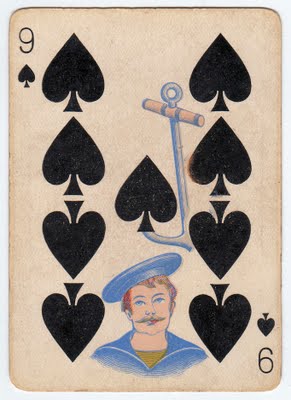

2017, July 9 — Review of Calling Down the Storm
I received this book free from the publisher through NetGalley in exchange for a fair and honest review. Written by Peter Murphy and published by No Exit Press in 2017, this starts out looking like a traditional British police procedural, but that changes quickly. The story begins with the stabbing, in the middle of the day and on a public street, of an estranged wife by her husband. It then quickly morphs into a description of the private life of a barrister who wears silk (Queen’s Counsel — QC), and who develops a serious gambling problem before becoming a judge who will eventually preside in the trial of the accused husband. A third minor thread deals with the barristers who will handle both sides of the murder case.
The setting is London in 1971. The author goes into a great amount of detail regarding the gambling habits and sex life of the QC who later becomes a judge, and the story’s dialogues are accurate depictions of the way lawyers speak — especially in courtrooms. English speakers who reside in any one of the countries that share the British legal system will probably have no trouble following the story line, but Americans might not find it so easy. Barristers and solicitors might be unfamiliar to Americans, but not to anybody acquainted with the British legal system. This isn’t the place for a lesson on the subject, but a simplistic explanation for Americans might be that barristers are akin to trial lawyers in the United States, and solicitors are like lawyers who practice law and deal with clients, but do not present cases in courtrooms. The role of barristers in the UK has changed, and this is probably why the author set the book in 1971.
Mr. Murphy did his research well. The gambling game that gets the judge into trouble (Chemin de Fer) is presented accurately, as is the real Clermont Club where the gambling takes place. There really is a Clermont Club in London, and the author actually visited it while writing the book. There really is a game called Chemin de Fer, and it is the forerunner of the game we now call Baccarat. The dialogue and events described in the book are very detailed and realistic.
The three major plot lines come together seamlessly before the end of the book, and the author is careful to tie up loose ends. The ending will come as a surprise to many. It did to me. On the negative side, there was a bit too much unnecessary detail that could certainly have been omitted without detracting from the story. Some of the dialog is repetitious. Some of the details of the judge’s sexcapades could have been omitted without seriously detracting from the story. All in all, however, I very much enjoyed the book and would recommend to anybody who might like a realistic British legal story with a touch of murder.


2017, July 10 — Review of The Long Haul
This book is a brief (fewer than 200 pages) memoir of the author’s life as the driver of a moving van. Written by Finn Murphy, and published by W. W. Norton and Company in 2017, the book is largely anecdotal, covering two periods of the author’s life. The first period was the time when Murphy first became associated with the moving industry and began driving a truck. This was when he was living in Connecticut. He eventually melted down and stopped driving for a number of years, before beginning again at the age of 51 when he was living in Colorado.
All in all, the book is an entertaining read. Plus, a reader can learn a lot about the moving industry and the way it really works. Who knew, for example, how much money van line drivers could make in a year? Who knew how dangerous he job could be? Who knew how hard these men must work, and for how many hours each week?
The book is an easy read, and I enjoyed it very much. If you are at all interested in the life of a long-haul moving van driver (also known to other truckers as a “bedbugger’), then read this short, but entertaining, work. You might also learn the meaning of the terms: “skate boarder,” “chicken choker,” “reefer,” “suicide jockey,” and others. You might learn why moving van drivers are looked down upon and shunned by other long haul truck drivers, and how they are treated differently, even at truck stops. I think you’ll like this very well-written, but too short, work of non-fiction.


2017, July 7 — Review of Resurrection America
I received this book free from the publisher through NetGalley in exchange for a fair and honest review. It was an uncorrected proof. Copyrighted in 2017 by author Jeff Gunhus, it is published by Seven Guns Press.
Imagine a small town sheriff in a Western American town. Make him a war veteran with personal demons and a prosthetic arm that resulted from his experiences in war. Make the mayor of the town a likable, lovable person – perhaps even a woman. Give the sheriff a love interest who happens to be a widow with a young son. Introduce a former girlfriend who has left town for the big city, but has come back to town for some reason. Then enter the big, evil outside entity. It could have been a cattle company, or a land grabber, but this time it is not. Sound familiar? Set the time frame to the 1800’s and this could be any one of many “B” grade Western movies made in Hollywood. Set it in the mid-21st Century after a major world war with “Jihadis” this becomes a slightly one-sided political screed aimed at religious and ideological extremism set in the mountains of Colorado.
I did not find Sheriff Rick to be a very likable person. For one thing, he doesn’t seem to be very bright. He keeps making the same sort of stupid mistakes over and over again. His behavior when he enters the mine to save his love interest is inexplicable and illogical. Who runs full-tilt down a tunnel that is presumably mined? Why does he not kill the source of the evil when he has the chance? Some readers might like this protagonist. I didn’t.
Even though the story is alternate reality-cum-science fiction, believing it was a stretch. Some of it, for example, takes place in an abandoned mine. You know, a hole in the ground from which ore is extracted. Yet, this particular mine has caverns that are very large, yet appear to be unsupported by any sort of shoring or rigging to hold up the ceiling. It sounds more like some sort of natural caverns than a mine. Even though Sheriff Rick has traveled to the mine within the past month and seen nothing unusual, the mine is suddenly filled with very elaborate, and presumably very expensive, machinery and equipment with high electricity demands. How was all of that machinery smuggled into the mine, and how was it all set up, connected and tested, in less than a month, and with nobody aware that it was taking place? The bad guys apparently have flying drones that are capable of flight within the tunnels of the mine. How do they receive their guidance radio signals through solid rock? I did not find it credible.
In another place, Sheriff Rick takes comfort in the “gun’s cool steel under his fingers,” but he carries a Glock service pistol and all Glocks (to the best of my knowledge) have polymer frames. When holstered, the slide, which is made of steel, would be inside the holster and out of reach of his fingers. The grip, on the other hand, would be readily accessible to his hand, but it is made of plastic. Also, on the subject of guns, the author tells us that the bad guys are carrying M-1 assault rifles. There is no such thing, and there is unlikely to ever be such a thing. The M-1 is a battle rifle, not an assault rifle. The US military discontinued its use in 1959, replacing it with the M-14 battle rifle. The M-16 that was widely used in Vietnam appears to be the United States’ first widespread use of an assault rifle, and that has led to the M4 and the M4A1, along with other variations. The author also refers to the rifle as being a semi-automatic. By definition, all assault rifles are capable of fully automatic fire. I think military veterans, along with active duty and retired law enforcement officers all over America, would cringe at the author’s descriptions.
The pace of the book drags at times because the author is telling us things that we don’t need to know. He begins all these plot threads, then ends them abruptly, and in an unsatisfying manner. This is especially true of the ending of the book. I think most readers will feel cheated by the author’s method of ending the story. It was extremely unsatisfying to me, and I believe other readers will also find it to be so. It’s one thing to tie up loose ends at the end of a story, but it is another thing altogether to simply cut the yarn. I think the story is far-fetched.


2017, July 2 — Review of Children of the Divide
I received this book free from the publisher through NetGalley in exchange for a fair and honest review. Written by Patrick S. Tomlinson and published by Angry Robot (an imprint of Watkins Media Ltd. in 2017, the book is a Science Fiction novel set in distant future on an inhabited alien planet in a distant star system. To me, the story appears to be primarily aimed at Young Adult (YA) audience, especially the dialogue between the principals in the story, and the emphasis on its younger (teenaged) characters. Although entertaining, I found the plot, and the science, to be mildly unconvincing, and the stilted dialogue did not help in that regard.
The story involves two independent plot lines. One involves a junior space officer who is also the son of the captain of a starship, and his adventures on the moon of the alien subject planet, while another involves a pair of human “parents” who have adopted a young alien “female” and raised her into her teens. The space officer is named Jian, and he has a very strained relationship with his father. The adopted alien is named Benexx, and ze (she) has a mind of her own, and also a rebellious streak. On Jian’s very first command mission using a shuttle to ferry parts to the alien moon, he discovers something unexpected. Trouble begins almost immediately, and it is coordinated with problems that develop simultaneously down on the planet’s surface. Benexx gets herself kidnapped by terrorists, and must save herself, which adds suspense and action to the story.
One thing that bothered me was the author’s use of altered pronouns when referring to the aliens, or when the aliens referred to the humans. He chose to replace the words “he” and “she” with “ze,” and the words “him” and “her” with “zer.” I found this to be contrived and not at all necessary to the readability of the story. In fact, it was sometimes confusing because, when two different aliens were referred to in the same sentence, along with the term “ze’d” to mean either “she had” or “he had,” it was not at all clear which alien was being referred to, especially if they were of different genders.
Loose ends were tied up at the end of the story, but I still believe that it is more suitable for a YA audience than for a seasoned sci-fi fan. It is an easy read, that many will find entertaining. I award three stars of a possible five.


2017, June 28 — Review of Countdown City
This is the second in a trilogy by Ben H. Winters about a policeman in Concord, NH after it has been learned that an asteroid will strike the earth, and probably lead to end of the human race. The first book was pretty good, describing Detective Henry Palace’s time as a detective for the Concord Police Department. In this story, Palace has taken early retirement from the police force and tries to find the husband of an ex-girlfriend. He also enlists the aid of his radical younger sister, and that leads to additional adventures. During his investigations, he gets himself shot with a staple gun, and with a sniper rifle. Miraculously, he survives and, ultimately, solves he his cases. All but one, which is left dangling at the end of the book.
The story is very dystopian. All of human civilization is degenerating into chaos, but Henry Palace tries to keep a toehold on reality and civilized behavior. The descriptions are easy to believe, knowing what we already know about the human condition. The author did deal with it, however, by having one of his former-detective friends deal with it.
The first half of the story drags a bit, but becomes more gripping as the story progresses. The ending was a bit surprising, and it left me mildly unsatisfied. This book was not as good as the first of the series, The Last Policeman, but it still was a pretty good effort. Good enough for an award of three stars, at any rate.


2017, June 21 — The Last Policeman
This novel was written by Ben H. Winters, and copyrighted in 2012. It is a work of science fiction set in Concord, NH in the near future after an asteroid has been detected on a collision course with the earth. Detective Henry Palace is a newly-minted detective on the same police force at which he was a patrolman for only a short time before being promoted. How did this happen? So many people are leaving their jobs and preparing for the inevitable death that awaits them in only a short time that attrition has created numerous job opportunities, including on the police force.
Suicide is rampant. All over the world, people are choosing suicide over the prospect of facing the end of the world. Different cities seem to prefer different methods of suicide, but Concord is known as "hanger town." The manager of a local McDonald's calls police when he discovers the body of a man hanging from an expensive black belt in the men's room of his restaurant. Detective Palace is assigned to the case. Almost immediately, he suspects foul play, but none of the other detectives believe it is anything more than another suicide. Not to be deterred, Palace continues his investigation of the death, treating it as a homicide.
The plot twists and turns, and the hapless detective gets injured several time. In the end, however, he solves the case. We don't learn the details, or the motives of the various characters in the story until near the very end, which was a bit surprising. All in all, this is a well-crafted novel that combines crime fiction with science fiction. This is the first novel in a trilogy, so it will be interesting to see what the next book will bring. In the meantime, I enjoyed this book and I think you might, too.


2017, June 6 — Review of Good Morning Midnight
Overdone. Overbaked, overcooked, overdone! One of author Reginald Hill's last novels before he passed away, I'm sure Good Morning Midnight was intended to be a tour de force. Unfortunately, it didn't quite make it. The book could easily, for example, have been about 200 pages shorter with nothing of significance being lost. The plot is overly complex and convoluted. Readers who had not read the author's previous works, and who might not be familiar with the recurring characters in the Dalziel and Pascoe series of novels, might find it even more confusing. Hill has clearly made assumptions about his readers' understanding of the people and places described in this novel. One of these assumptions includes that readers have read certain specific novels in the series.
Ten years after his father commits suicide in a bizarre manner in the family mansion, his son, Pal, Jr., takes his own life in the exact same place and in the same exact manner. But was it really a suicide — or a murder that has been cleverly disguised? And what would the motive have been? Was he murdered by his hostile stepmother? His competitive sister? You'll have to read the book to find out, but I'm pretty sure you will be as surprised as I was to learn what really happened.
The story has a somewhat unexpected ending, and, although the author has tied up most loose ends, the book left me unsatisfied. I believe that I have now read the entire Dalziel and Pascoe series, and there will be no more now that the author is gone, and that is a shame.
This book was a slow, tedious read. I wouldn't advise attempting it before becoming acquainted with the various characters to be found within by reading several other novels in the series. This was definitely not Reginald Hill's best work, and I am forced to award only three stars.


2017, June 21 — Review of A Colony in a Nation
Tantalizing Close, But No Cigar! This book was written by Chris Hayes, Emmy Award-winning host of MSNBC’s All in With Chris Hayes TV news talk show, and New York Times best-selling author. Hayes is also an editor-at-large of The Nation magazine. The book was published in 2017 by W.W. Norton and Company, Inc. Incredibly, the title of this book was taken from the words of former President Richard M. Nixon at the 1968 Republican National Convention when he famously said, when referring to black Americans: “They don’t want to be a colony in a nation.”
At first blush, this is just another in the distorted and apologist books defending the ill-advised actions of people who have behaved badly in the presence of police, and who suffered the ultimate consequence as a result. It is written in the same vein as Between the World and Me by Ta-Nehisi Coates, and They Can’t Kill Us All by Wesley Lowery. All of these books are rife with lies, rumor and innuendo presented as evidence that the positions taken by their authors are justified. Unfortunately, none of said authors appears to have made any effort to learn the truth before building their cases upon a foundation of lies. It is a sad state of affairs when authors (and especially journalists) stoop to such lows in order to publish a book and make some money. Also unfortunately, the first half of this book is very much like those others. The author gets very close to identifying the real causes of continued racism in America, and to suggesting possible solutions, only in the second half of the book.
Like so many of his journalistic colleagues, Chris Hayes has a complete lack of objectivity when it comes to the subject of race relations in America. On page #20 of his book, for example, the author brings up the Freddie Gray case in Baltimore, where Mr. Gray died while in police custody. Hayes implies that no police officer was held accountable for Gray’s death, while never explaining that there was not enough evidence to convict anybody of any type of homicide in that death, which could possibly have been accidental when Gray fell while being chased by police officers in Baltimore. I guess that that possibility wouldn’t have made such good reading, and Hayes wouldn’t have been able to sell as many books. What actually happened was that the State’s Attorney in the case overcharged six Baltimore police officers and the result was three acquittals and a mistrial. Ultimately, all charges were dropped — but not until lives and careers had been ruined. And all because bloodthirsty “journalists” like Hayes demanded what they called “justice,” but what is really nothing more than a thirst for retribution — regardless of whether it is justified. So . . . what might really be evidence of truth is called racism by those with an axe to grind, and money to be made. How very Machiavellian!
On that same page and the next page, Hayes goes on to describe the experience of a man named Dayvon Love. If the anecdote is true as related in the book, it is a clear and blatant example of racism on the part of the police, and it provides a glaring contrast with the rumor and innuendo that journalists like Hayes like to disseminate. Journalists and authors (like Hayes) destroy their own credibility when they trumpet lies to make a point while diminishing the importance of the real evidence of the sort of racism that is still to be found in America. They end up doing nobody a service except themselves, because they have made some money, and raw emotions have been stirred up to a level where the potential for violence has been increased. It is un-American. Hayes and his ilk do nobody a service when they focus on cases like Michael Brown, Tamir Rice and Trayvon Martin at the expense of real racism like the killing of Walter Scott in South Carolina, Laquan McDonald in Chicago, or Samuel DuBose in Cincinnati. We have a sufficient number of “real” incidents of the unjustified killing of blacks by white police officers that we do not need the likes of Hayes twisting and distorting information to create even more of them.
I am usually sympathetic to authors like Hayes who generally try to point out the existence of racism in America, and all of us should be aware of what is really going on in our country. But inflating rumors in order to make a point does nothing but destroy the credibility of the people who employ such tactics, and give racists and white supremacists the ammunition they need to attack the credibility of those authors and their messages. No useful purpose is served by such practices being employed by serious and well-meaning people. In fact, by providing grist for the mill of white supremacy and racism, such authors are, arguably, making matters worse.
Surprisingly, on page #30 of the book, the author dares to write the words “All lives matter.” This, despite the fact that anybody who dared to utter those words in public during the period about which Hayes is writing was being openly referred to as racist by blacks and black supporters. Most notable of these was Democratic Presidential Candidate Hillary Clinton who used the words in Florissant, MO, near Ferguson, in June of 2015. The response was swift. During an interview on Fox News with national correspondent John Roberts, Black Lives Matter co-founder Marissa Jenae Johnson said the phrase “all lives matter” is a “new racial slur.” (Wikipedia) I don’t recall Mr. Hayes disputing this position on his TV show, but maybe I missed it.
On page #32 of the book, Hayes goes on to tell us that “A majority of Americans have put a minority under lock and key.” This is, in all likelihood, true, but it would have been helpful if Mr. Hayes had expanded on this assertion a bit more at the point where he made it. Then, on page #33, Hayes tells us that “. . . despite the fact that Ferguson’s residents were mostly black, the town’s entire power structure was white, from the mayor, to the city manager, to all but one school board member as well as all but one city council member, and to the police chief and the police force itself, which had three black cops out of fifty-three.” Presumably, Mr. Hayes offers this observation as evidence of racism in Ferguson, MO. However, he fails to explain how this might happen in a democracy. He doesn’t tell us <i>why</i> the residents of Ferguson voted for all those white officials instead of equally-qualified black candidates. He does not make any charge that blacks are illegally prevented from voting in Missouri. Instead he prefers to make the innuendo-saturated implication that the reason must be racism. This appears to be a tactic often used by people who would like us to believe something that might not be true, and this is no exception. Hayes should be better than this.
Then, on the very next page, the author goes on to describe Baltimore: a city that “had black city council members, a black mayor, a very powerful black member of Congress, a black state’s attorney, and a police force that was integrated.” Yet, he can’t seem to explain how it might be that Baltimore is as racist as he believes Ferguson, Missouri is. Could it be because neither of the cities is really overtly racist — even though that is a popular trope among activists and liberal journalists these days? It’s something to think about.
Something that made me wonder were the assertions and allegations by Mr. Hayes that the black community makes up a colony within our nation, just like we were a colony to England before the Revolutionary War. But he seems unable to see an important difference: The American colonies had no representation within the English government. In fact, one of the slogans used by American Patriots at the time of the Revolution was “No taxation without representation.” The author finally gets around to mentioning this on page #50. Today, nobody (including the author) has provided evidence to convince us that black people are not represented in our local, state and national governments. Any comparison to the US Revolution breaks down. Although the black community might, indeed, make up some sort of colony within our nation, it isn’t for the reasons cited by Hayes, and it isn’t anything like the English colonies in America in the 1700s.
Hayes continues with his sad tropes about racism by police when he tells us that Walter Scott had been pulled over for having a broken light out, and that Sandra Bland was stopped for failing to signal a lane change. Does he really believe that the laws only apply to some people, and not to others. I am white. I have, personally, been pulled over and cited for having a burned out light on my car, and I am personally acquainted with people who have been cited for failing to signal a lane change. That’s one of the reasons why I always signal my turns and lane changes. These people were all white. In my experience, if you don’t want to be pulled over and ticketed, then obey the traffic laws and make sure your vehicle’s safety equipment is all in proper working order. Is Hayes suggesting that such laws should be applied only to white drivers — that black drivers should be exempt from traffic laws? Would that be a complete elimination of racism in America?
The author’s description of the advice given to black people, and to their children sounds familiar. He says: “When a cop tells you to do something, do it.” I remember those words from my father to my brother and me many times when we were growing up. None of us is black. That advice is not race-specific. It’s just good advice. I have followed it all my life , and I have never set foot in a jail cell (except for the time when my dad took my brother and me to the police station to meet the police chief and some cops, and to see what a jail looked like, and what handcuffs felt like.) I was probably about seven or eight years old. Of course, I wouldn’t carry marijuana in my back pack, and if I did, I wouldn’t be dumb enough to brag about it in a book.
On page #44, Mr. Hayes tells us about the death of Michael Brown in Ferguson, Missouri. He tells us how “A few nights earlier in this neighborhood a police officer named Darren Wilson had shot and killed a young man named Michael Brown,” and that Brown was not armed. Hayes goes on to stress that “The friend who was with him, and several other eyewitnesses, said he had his hands up when he was shot.” The fact that these assertions had been thoroughly discredited is mentioned only in a footnote at the bottom of the page: “. . . the Department of Justice would conclude that the claims of Brown having his hands up were not consistent with the ‘physical and forensic evidence.’” By making this a footnote that many readers might not notice, a Journalist is able to perpetuate a lie. More people will become more angry; the journalist will make more money.
Finally, at about two-thirds of the way into the book, and after many pages of assertions based on lies, half-truths, rumors and innuendo, Mr. Hayes is able to make a case for the unequal nature of the local government in Ferguson, Missouri. He does it eloquently and convincingly. It is believable. It isn’t at all clear, however, whether the discrimination to be found in Ferguson is racial, or economic, in nature. The author does not tell us if poor white people face the same sort of discriminatory policing as black people, so we may never know for sure. One thing is certain, though. The local government in Ferguson preyed on the people least able to pay the unreasonable traffic fines (read: hidden taxes) that were being imposed upon them in a search for revenues that would not involve an increase in property taxes. Why did it take Hayes so long to present some <i>real</i> evidence of the sort of discrimination faced by blacks in many parts of the country? This is the sort of thing that must be addressed and eliminated in our nation — not the cessation of enforcement of our traffic laws.


2017, June 17 — Review of The Last Mile
Written by David Baldacci and published by Grand Central Publishing in 2016, this is the second in the Amos Decker series of novels. Decker was an outstanding college football player who made it to the NFL — for one play of one game. On the kickoff runback, he was blindsided and woke up in the hospital with hyperthymesia and synesthesia. Hyperthymesia is a kind of total recall memory, and synesthesia is a tendency to see things in brilliant colors. Decker sees different numbers in different colors, and he always sees death in electric blue.
Melvin Mars is on death row in a West Texas prison accused of having murdered his parents. He, too, was a football player, and he had actually played against Decker when they were in college. Decker played for Ohio State, and Mars played for University of Texas. Only minutes before his scheduled execution for the murders, Mars learns that his execution has been stayed because a man in Alabama had confessed to the murders. Decker hears the story on his car radio and decides to investigate.
Having been hired as a special consultant to the FBI, Decker must convince his FBI-agent colleagues and his side-kick to pursue the Melvin Mars case. They travel to West Texas and meet with Mars and his attorney, then to Alabama to meet with the man who confesses to the murders. The story takes off from there.
Using his near-perfect memory and total recall, Decker is eventually able to solve the case, which is extremely complex. The plot is very convoluted. I found it difficult to believe that the protagonist and the FBI agents could find themselves the victims of so many ambushes by bad guys. They behaved like the Keystone Kops, in my opinion, and I did not find that to be an attractive quality. The natures and motives of the bad guys will probably come as a surprise to the reader. I know that they did for me. The author does tie up loose ends, but he makes some unnecessary detours in the book that added little to the plot, except additional pages to the page count. I have noticed that Baldacci has a tendency to do this in his books.
In any event, the book is an easy read. The action is non-stop. The football references are many. And the conclusion is satisfactory. I award three stars because it is not nearly as good as the first novel in the series. You will probably be well-entertained by this book.


2017, June 13 — Review of The Fix
Starts with a bang! Almost literally.The bang being the sound of a gunshot that we hear about ten pages into the book. Written by David Baldacci and published in 2017 by Grand Central Publishing, The Fix is another in the Amos Decker series by the author. Although apparently 402 pages long, I noticed a lot of vertical spacing (leading) that spread the text across the page. Without this extra spacing, the book would probably have been considerably shorter.
I found the story to be unlikely. Although the action is virtually non-stop, much of it seemed gratuitous to me. I mean . . . how many times can experienced FBI agents be caught off-guard by the bad guys? Speaking of bad guys, we never really learn who, exactly, they are. The plot is convoluted. It is near the end of the story before we learn who the real spy is, but the author tosses in red herrings along the way to mislead us. At one point, he had Decker speculating that the mole was from inside the DIA.
There were a few inconsistencies in the book, but not many. The only one that really struck me was the comment by FBI Agent Bogart about “computer ones and twos” on page #200. Computers do not have twos. They have zeroes and ones, and nothing else. A very little research would have told the author that.
The book is a fast, easy read, but is not up to par with the first novel in the series: Memory Man. I was a bit disappointed and awarded it only three stars.


2017, May 14 — Review of Astrophysics for People in a Hurry
The Cosmos as You Never Imagined it! This book is a relatively short (103 pages of narrative in the Adobe eBook format) treatise on the subject of Astrophysics that has been written for the general public by noted astrophysicist Neil deGrasse Tyson, director of the Hayden Planetarium in New York City. Published in 2017, the book consists of a Preface and twelve chapters, each of which was apparently originally written as an essay over a number of years, and that were originally published in Natural History magazine.
I found the material to be relatively easy to understand, and the author’s sense of humor contributes to the readability of this technical and scientific material. I especially liked his description of the Sagittarius Dwarf Galaxy in Chapter 4, where he suggests a more appropriate name for the galaxy. I was also struck by Tyson’s assertion in Chapter 2 that “. . . after the laws of physics, everything else is opinion.” That is to say, the laws of physics can be proven in a way that nothing else can.
The book contains brief notes at the end of each chapter, and an Index at the end of the narrative that readers might find useful. There are very few editing errors. I found the subject matter to be intensely interesting, and the author’s explanations to be exceptionally easy to understand. Anybody who really wants even the most basic and fundamental understanding of the universe in which we live should read this book. It is factual. It is honest. It is lucid. And, it is enlightening. Read it. You’ll like it. I know I did.


2017, May 11 — Review of Lower Ed
Incomplete! The book is about education, so I awarded a grade, and that grade is “I” — Incomplete. Lower Ed is subtitled The Troubling Rise of For-Profit Colleges in the New Economy. Written by Tressie McMillan Cottom, and published by The New Press in 2017, the book is an analysis of the rise of for-profit higher-education businesses in America, of their effect on the US Economy and, more important, of the effect on the individual students who become deeply in debt because of them. The author does not mince words, and what she says is basically accurate. I know, because I worked for two of those self-same for-profit universities, and I became just as disenchanted as Dr. Cottom. Unfortunately for the book, it is chockablock with facts and figures that make for very dry reading, but it only tells half of the story. Even when the author begins a chapter with an interesting anecdote, it rapidly devolves into a scholarly narrative on Sociology that many readers will probably find boring.
What is glaringly missing from this monograph is an analysis of the value of the education received at a for-profit college or university, and why it does or does not have the same value as an education from a traditional college or university. Throughout the book is an implied assumption that taxpayers and students are being ripped off by for-profit schools. This might be absolutely true, but the author offers no evidence that it really is so. At one point, for example, she compares for-profit universities with Harvard University: probably the most prestigious university in the country. Everybody knows that a degree from Harvard is a guarantee of job security, but why is that? It is because we all know that a graduate from Harvard University will possess the knowledge and skills that the degree represents. Implied in the book, however, is the notion that graduates from for-profit universities really do not possess the same amount of knowledge or skills as a Harvard graduate — or the graduates from any other traditional colleges or universities either, for that matter. This might be entirely true, but the author owes it to her readers to make a case for it being factual. She doesn’t do it.
The title of the book, Lower Ed, is the term the author uses to describe the set of all for-profit schools, including the certificate-awarding schools as well as the degree-granting colleges and universities. Also, the author uses the term “credentials” to refer to the various certificates, diplomas and degrees granted by the conferring businesses, which she calls “credentialing schemes.”
As a former professor in two of the largest for-profit universities in America, I had seven years to observe and analyze the quality of the educations offered by these kinds of schools. I left the for-profit teaching positions because I became so deeply disillusioned by the practices in the instructional operations of those businesses — the actual classroom teaching. I’m not the only one. I know numerous former faculty members who became disenchanted with the educational models at some of these schools. I also know current professors who are unhappy, but stay on in the hope that they might be able to help, even a little bit, to educate their students. Dr. Cottom could easily have reached out to current and former faculty members of these schools to gain a perspective as to just exactly <i>why</i> these schools do not live up to their promises. She apparently made no attempt to do so. That’s why the book is incomplete. She analyzes only the front-end (marketing and sales) of the for-profit education business, while totally ignoring the back-end (the education product, itself). The contract between a school and a student involves more than just the consideration (tuition). It also involves a value received, or a product (the education). Consideration is paid, and a value is received. The author has not convinced us that the value received (the education) is worth less than the consideration paid (the tuition and fees). I feel that she had an obligation to do so.
The author began her own association with these for-profit colleges and universities as an “enrollment counselor” (sales rep) at a school of cosmetology in North Carolina. She later moved on to play the same role for a Technical College (vocational school) in the Charlotte area. Eventually, Dr. Cottom acquired her PhD in Sociology from Emory University and was granted a professorship at Virginia Commonwealth University. She has conducted extensive research into the topics of higher-education and for-profit universities in America, and she has written about much of it. She has been a Faculty Affiliate at the Berkman Klein Center for Internet & Society at Harvard University since 2015. She has written for the New York Times, the Washington Post, Slate Magazine, Atlantic Monthly, and a number of academic publications. With such credentials, it is clear that she should “know her stuff,” so to speak.
Immediately in the book’s Introduction, Ms. Cottom relates some startling statistics: “. . . some financialized for-profit colleges reportedly spent 22.4 percent of all revenue on marketing, advertising, recruiting, and admissions staffing compared with 17.7 percent of all revenue” on teaching and instruction (p. #20). To me, this statistic speaks to the morality of these kinds of schools. Then, in the first chapter of the book, the author relates the results of studies that showed how well the degrees obtained at for-profit schools pay for themselves (or not). On page #28, she tells us that studies have shown that student graduates with credentials from a for-profit college or university on their resumes are about as likely to get a call-back from a potential employer “as someone with only a high school diploma.” She goes on to add that “Another study found that applicants with a for-profit college credential get as many callbacks [from prospective employers] as applicants with a fake college listed. This means that employers may have a preference for traditional degrees, but they lack the mechanisms to discern which schools confer them beyond the big state and brand-name schools.” Umm, has anybody ever heard of the Internet? Any minimally-competent HR department should be able to check out the qualifications of any school in minutes by performing simple searches on the Internet. But the author never tells us why this simple and easy research is apparently not performed by employers.
The truth of the matter has to do with the fact that many (if not all) for-profit schools, colleges, and universities diminish the value of their credentials to their hard-working and dedicated students — students who might, in fact, have learned a lot — by awarding the same credentials to those students who have learned little or nothing in the same programs, and who really do not deserve the credentials. I saw this myself at the universities where I taught. Indicative of the pressure to keep under-performing students enrolled and providing a revenue stream to the Lower Ed enterprise is the perhaps-startling statistic related by the author on page #34: ‘. . . the majority of full-time undergraduate students enrolled in a for-profit college will not have graduated after six years . . .”
Of great interest is the observation by the author that for-profit universities tailor their curricula to the likes and wants of the students, rather than to their needs. On pages #35 and #36, she relates an example in the field of healthcare training. She tells us how “the second most popular ‘healthcare’ certificate program in for-profit colleges is massage therapy.” She goes on to point out, however, that “[t]he most critical needs areas in healthcare are registered nurses and physicians, especially in elder care due to the aging baby boomer population. Students may like massage therapy. And because for-profits make money when they offer programs that students like, it makes sense to offer more massage therapy programs than our labor markets can absorb.” In this example, the supply does not match the demand, and graduating students might find themselves unemployable. That makes sense to me. During my tenure at one of the for-profit universities where I taught at both the bachelor’s and master’s levels, I was told by my Campus College Chair (a fairly big campus, by the way) that the most important attribute for a professor at our institution was for our students to like us. Not that they respect us. Not that they learn from us. But that they like us. Many of my colleagues on the faculty followed that advice and transformed from teachers into entertainers in the classroom. Game playing disguised as learning became popular with many professors. The students really liked them, but they didn’t learn much. The faculty who entertained their students benefited, however. They received choice class assignments and other plums awarded by the school.
I was startled to learn, as described by the author on page #67 of the book, that: “As it turns out, there is such a thing as ‘bad’ education. It is an educational option that, by design, cannot increase students’ odds of beating the circumstances of their birth.” She goes on to add that “For profit-colleges do not have employment or wage returns that justify their cost to either students or our public system of financial aid.” Why? She doesn’t tell us why.
Another aspect of this topic that could have been covered in greater detail was one that was often discussed at faculty meetings and around the water cooler on the campuses where I taught: the inverse correlation between enrollment levels and the state of the US Economy — when unemployment was high, so were enrollment levels. Right now, unemployment is low and the economy is good. It won’t last, and the for-profit schools know it. They can bide their time until the next recession that will be caused by incompetent politicians and their enrollment levels will, once again, surge.
I was very disappointed at the author’s lack of attention to the fact that, even if a student manages to graduate from one of the for-profit institutions, and even if he or she has the credentials necessary to obtain an interview, or even a job offer, do they have the necessary skill set to enable them to succeed in their new jobs? In other words, can they make it past the 90-day or six-month probationary period that most employers have made a policy in the 21st century? Have the students learned enough about the subject of their courses of study to be able to convince a new boss that they are really qualified to hold the positions they now hold? Can they survive in their new jobs? I can recall many a classroom in which I attempted to emphasize to my students the importance of possessing the knowledge that is supposed to accompany the credentials they have been awarded in order to be able to truly succeed in their new careers. My words fell, mostly, on deaf ears. They had been promised something different. After all, they would soon be in possession of a shiny new bachelor’s or master’s degree. What else could they possibly need?
On the plus side, I found it interesting to read the author’s analysis of the difference between cost and price in the context of for-profit higher education. She asserts that price is absolute while cost is relative, and she makes a good case to support that assertion. But I wondered, as I read this book, whether the author would even have written it, or if anybody would really care about the topic, if the quality of education offered by the for-profit schools could match that of traditional colleges and universities. The first mention of the quality of the education provided by Lower Ed was not until page #151 (of 187 pages). It was too little, and too late, in my estimation. Also, there is an implied assumption throughout the book that students who successfully complete the requirements for a credential issued by a for-profit institution of higher education will find employment and become gainfully employed for the remainder of their careers. I don’t believe that should be a given. My own experience has been that many students who obtain bachelor’s degrees in subjects such as Information Technology, Healthcare, or Business Administration and Management often wind up with jobs that were not in the fields in which the students had received their degrees. I think that this false assumption should have been treated by the author with a little more attention and detail.
Although the author assiduously provided source citations for many of the assertions made in this book, she departed from that practice on page #183, when she suddenly, surprisingly and overtly injects race into the entire matter — and she does so in a manner that blares loudly off the pages of the book. Up until that point, Dr. Cottom had made an elegant and persuasive case that it was “inequality” that led to the rise of the for-profit schools: wealth inequality, gender inequality, and social inequality. Now it was racism — and not just any old racism, either. Specifically, it was racism as practiced by whites against blacks. Her assertion that the acquittal of George Zimmerman in the self-defense killing of Trayvon Martin was a “radical injustice” is not cited as to source, and it shows an astonishing amount of ignorance by an academic. A jury heard many days of sworn testimony, given under oath and with penalty of perjury, in that trial. The acquittal verdict was a forgone conclusion to anybody who actually watched the trial, which was televised in its entirety. Why did the author feel that it was necessary to inject the contentious issue of race, along with the issues surrounding Black Lives Matter (BLM), into a supposedly-factual book about the rise of for-profit education in America? Even more outrageous than that, on the very next page, she introduces the subject of “reparations” in the context of the BLM “central platform.” Then, she contradicts herself on the same page by telling us that “. . . this is a systemic problem, produced by wealth inequalities, justified by contemporary income inequalities and perpetuated by corporate-political interests.” I see no mention of race in this assertion. Which is it? Is it wealth, income, and other types of inequalities, or is it race? She can’t seem to make up her mind. She destroyed her own credibility with this excursion. She has discredited her own book. I am disappointed, and I was forced to lower my opinion of the book. My own experience in two of the largest for-profit, post-high-school education companies in the US demonstrated no overt racial component in the makeup of my classes. I taught no classes with a majority African-American student enrollment. In every case, there were fewer than 50% of the members of the class who were black.
I couldn’t award this book an incomplete on this forum because I am limited to some number of stars between one and five, instead of an actual grade. That meant I couldn’t award a grade of “D.” So, I decided that an incomplete was probably equivalent to three of five possible stars — but the overt injection of race into the discourse cost an additional star, so I award the book two stars. It is well-researched, but incompletely so. Near the end, it contains an element of racial politics that was jarringly incongruous. It is longer than necessary for the value of the information within. It appears to have been somewhat padded. On page #126, for example, details like office hours added nothing to the substance of the book. It is minutiae. Who cares? Tell us what we want to hear. Why is it that you believe the for-profit schools deserve the tag “Lower Ed”? Readers want to know . . .


2017, May 6 — Review of Death’s Jest Book
A Tour de Force. That’s what this book was intended to be, but it fell a bit short. Instead, this is a well-written, though a bit overly-long, novel of crime, murder and police work in Yorkshire, U.K. As usual, Detective Superintendent Andy Dalziel and Detective Chief Inspector Peter Pascoe, along with the rest of the crew at Mid-Yorkshire CID, is hot on the heels of criminals engaged in multiple crimes. The story involves multiple, simultaneous plot lines that are complex, but not confusing. A reader would, however, find it helpful to have read the preceding book in the series, Dialogues of the Dead, before tackling this novel. Most of the familiar characters in Hill’s Dalziel and Pascoe series of novels make an appearance in this story, so an acquaintance with the characters would be helpful to any reader.
The book was written by British crime writer Reginald Hill and first published by HarperCollins in Great Britain in 2002. The paperback version (which is the one I read and am reviewing) was copyrighted by the author in 2008, and published by HarperCollins in 2009. At 669 pages, this is not a short story, or a thin book.
Clearly, the author intended this novel to be his signature work of fiction, and it probably is, but barely. The story is too long to be a good mystery or police procedural, but it is masterfully written. Although the story drags a bit in some places, especially in the descriptions of the letters written by Franny Roote and sent to DCI Peter Pascoe, the author seems to bring the multiple plot threads together at the end. There are, however, several loose ends that are left untied — Frere Dierick, and the lawyer, Marcus Belchamber, for example. I also found the ending to be vaguely unsettling. It appears that the author has set the stage for another sequel because at the end of the story, we are left wondering about what will happen next to Pascoe and Detective Constable Hat Bowler. I would like to have seen a neater conclusion to the story.
You should read this book if you are a fan of the author, or of the genre. You should, however, be sure to read Dialogues of the Dead first. I rated that one an unambiguous five stars. I liked this book, but it is not the author’s best work. I flirted with an award of four stars, but felt that, after all, the story probably really deserves a five-star rating, so that is what I awarded.

2017, May 1 — Review of The Plot to Hack America
SCARY!! The content of this book is just scary. The prescience and inside knowledge of the author is astounding. Written before the 2016 Presidential election, this book has accurately summed up the extent of the involvement by Russian intelligence services in the American electoral process, and the depth to which they were able to hack the innermost secrets of the Democratic National Committee, the US Department of State, the US Joint Chiefs of Staff, and even the White House. This book should be a wake-up call to all Americans regarding the most imminent threat to US national security: Russian Cyber Warfare.
Written by Malcolm Nance and published by Skyhorse Publishing in 2016, the voluminous detail in this book reflects the author’s extensive experience in the intelligence community, including having served in the US Navy as an interpreter after completing training at the Defense Language Institute, where he learned Arabic to complement his already firm grasp of Russian. My military background is somewhat similar to the author’s and I can tell you that the book appears absolutely credible to me. In fact, I was somewhat surprised at the extent of information that I would have thought to be still classified, but which, nevertheless, appears in this book.
Nance goes into an abundance of detail about the history of intelligence gathering (spying) in Russia, going all the way back to the 1800’s. He describes the development of the KGB (now known as the FSB), and Vladimir Putin’s heavy involvement with it. He tells us how these agencies have a history of meddling in US and European internal affairs, including their democratic elections. It is my view that his narrative is very convincing.
Now that the election is over, and Donald J. Trump has won the US Presidency, the facts are becoming clear. Russia intervened in the election process to ensure that Trump won, and that Hillary Clinton lost. And the tactic worked! If the US news media had done its job in 2016, instead of waiting for 2017 when it was too late, perhaps the disaster of Russia deciding the US Presidency could have been precluded. Alas, that was not to be. The US news media was so totally mesmerized by polling companies and the illusion that poll numbers were news, that they behaved like a bunch of four and five year-old kids with short attention spans, or like a bunch of small dogs in the park that spot a squirrel and go chasing off after first one, then another. If this information about Russia could be uncovered in 2017 (which it appears to be), then it certainly could have been uncovered in 2016 before the election. After all, Malcolm Nance was able to ferret it out; why couldn’t the US news media?
The book provides a substantial amount of detail about Russian cyber warfare efforts, and the role that unwitting allies like Julian Assange of WikiLeaks, and traitors to the United States like Bradley Manning and Edward Snowden, played in undermining the security of all Americans. A depressingly large percentage of the US press corps has been complicit in the way that such people were (and still are) able to undermine America’s national security. It appears that getting a “scoop” and chasing a dime are more important than anything else to most of today’s journalists. Integrity seems to be a thing of the past.
Given the severity of the hacks, it is curious that Director of the CIA John O. Brennan was not much more clear and forceful in his proclamations of July, 2016 when he initially pointed the finger at Russia. Instead, Brennan was very general and vague about the Russian involvement in the hacks on the DNC. Obviously, this could have had an effect on the result of the election. It makes one wonder if even members of US intelligence had their thumbs on the scale in favor of Donald Trump, as the head of the FBI so clearly did.
Near the conclusion of the book, Nance speaks some very insightful words when he says: “The most important part of this election could easily be lost in the short-term memory of the American people, mainly because of the simplistic way our media makes us forget what is truly important.” He continues with more insight on the next page when he goes on to point out that Trump, his conservative lackeys, and his Russian compatriots have “managed to completely usurp the stridently anti-Communist Republican Party and replace it with a presidential nominee who openly lavishes praise on Russia’s leader, disparages NATO, and promises to dismantle America’s superiority in order to allow Russia to take the role of world’s superpower.” So true! Whatever happened to the Republican Party? If that’s not also scary, tell me what is. Nance goes on to add that what happened in 2016 “proves the old KGB policy that loyalty to one’s country is elastic if the money is right.” How sad. How so very sad.
One glaring omission that I noted in the book was any sort of treatment of the types and lack of effectiveness of the individual security systems used by the victims of the Russian hacks. Were these servers protected? How? By which firewall and anti-virus software systems? Was Nancy Pelosi’s personal computer protected? How? If these computers were all protected to the best of the owners’ abilities, then how is it that the Russians were so easily able to hack them? What does it mean for us ordinary Americans if our national institutions and our government’s computers can’t be protected from hackers? How vulnerable, then, are we? This portends a bleak future for everybody if we can no longer trust any computer that might be connected to the Internet, doesn’t it?
The book is very poorly edited. There are more grammar and spelling errors than I had expected to see. Also, the book could have been better organized. Often, we see acronyms and technical terms used for many pages before they are defined and explained. This will make the book more difficult to read and understand for those readers unfamiliar with the technologies involved. Perhaps it is because of the rush to get the book published before the election, but the errors made the book laborious to read. Of greater importance than the editing, however, is the accuracy of Mr. Nance’s presentation of the facts. Every patriotic American, and every freedom-loving European should read this book, as should all other Westerners and citizens of democratic nations. It happened to us, and it could happen again — and it could happen to other democracies.


2017, April 19 — Review of Identity Crisis
This is a short non-fiction story about the efforts to positively identify the remains of a murdered woman in Eastern Tennessee. Written by Jefferson Bass, it seems more like an effort to publicize a work of fiction by the same author than as a stand-alone work. Jefferson Bass is the pseudonym of Dr. Bill Bass and Jon Jefferson. Bass is a world-renowned forensic anthropologist and founder of the University of Tennessee’s Anthropology Research Facility and the so-called “Body Farm” of CSI fame. At only 49 pages (e-book format) the story is short, but the book also includes the Prologue and first two chapters of the authors’ work of fiction: The Breaking Point.
Leoma Patterson was a middle age white woman who went missing in Eastern Tennessee in 1978. She was the mother of four children (now grown) and was a grandmother of the woman who asked Dr. Bass to investigate the identity of remains that had been found five months after her disappearance. A disagreement in the family had arisen over the real identity of the remains that had been buried in Leoma Patterson’s grave. Dr. Bass had been requested by the family to resolve the matter with a positive identification using the skills that he and his colleagues had developed at the Research Facility.
The body had to be exhumed twice. DNA results were questioned, and other techniques were used to verify the identity of the remains. Ultimately, the matter was resolved beyond question, but the process took much longer than the minutes that are typically required by TV shows. A positive identification was not rendered until June 26 of 2007, almost two years after the remains had been exhumed the first time.
If the real purpose of this book was to publicize a novel of fiction, it worked. I now intend to acquire and read the novel The Breaking Point by Jefferson Bass. I did, however, enjoy reading this brief anecdote from the life of Dr. Bill Bass, and I found it to be an easy read. I would recommend it to anybody who might be interested in forensic anthropology and DNA research.


2017, April 19 — Review of Guilty Minds
This is a fast-paced thriller about a private investigator from Boston who takes a case in Washington, D.C. His assignment is to uncover and expose a plot to discredit the sitting Chief Justice of the US Supreme Court with a phony sex scandal. Written by Joseph Finder and published by Dutton, I have no doubt that this novel will be made into a movie. When it is, Tom Cruise would be perfect as the actor to play the part of Nick Heller, the protagonist. Heller’s accomplishments in this story are every bit as phenomenal as those of Cruise in the “Mission Impossible” movies.
The book is a gripping tale of suspense and violence set in the Nation’s capital. The plot is complex and deep, but still believable in today’s world. The action is non-stop. The dialogue is credible, and the technical details seem mostly accurate. Heller’s character is well-developed. Most loose ends are tied up at the end of the story, but the door is left open for more books in a series.
One thing that stuck me was the author’s coincidental use of the term “weaponized,” when referring to gossip pages on the Internet. A coincidence because I just recently read the excellent book “Weaponized Lies,” which I liked very much. Another thing that bothered me was the reference to a “cylinder” on a Glock 26 semi-automatic pistol. This inconsistency will probably bother many of those who are a little bit familiar with handguns. On page #263 in the e-book version, Heller says that “. . . out of force of habit I thumbed the cylinder release latch and checked again.” He talks about the Glock being the most widely-used of all police handguns, but it is the Glock 17 semi-automatic pistols that are widely used – not Glock revolvers. Only a revolver would have a cylinder release latch, and not a semi-automatic, so this is a confusing inconsistency.
Still . . . this was a fast and easy read that provides a lot of entertainment. If you like fast-paced action thrillers, read this book. I think you’ll like it. I did.

2017, May 22 — Review of Law and Disorder
Political Polemics! I received this book free from the publisher through NetGalley in exchange for a fair and honest review. Written by seasoned attorney Mike Papantonio in 2016, and published by SelectBooks, Inc., this page turner is as much political polemic as it is legal thriller. The author’s political views (Progressive) are evident on almost every page. Although much of what he writes is probably true and accurate, it detracted from some of the entertainment value of the story for me to be reading about all of the political evils that plague our country while trying to enjoy a work of fiction.
Nevertheless, I found this novel to be mildly entertaining and easy to read. Loose ends seem to develop as the plot moves along, but the author ties them all up neatly by the end of the story. The door is left open for another story in a series, and I will certainly want to read it when it appears. I particularly enjoyed the courtroom drama, but then — I like that sort of thing.
If you like stories about lawyers, and especially if they have a tinge of politics in them, then you will probably like this book. The editing is smooth, the dialogue is believable, and the pace is steady.


2017, May 21 — Review of Prepared to Die
Far Fetched! I received this book free from the publisher through NetGalley in exchange for a fair and honest review. Written by Peter Dudgeon in 2017, the book’s publisher was not included in the ARC that was provided to me for review. It was, however, printed in the United Kingdom.
The novel is set in the U.K., and the protagonist is a retired police Detective Inspector (DI) named Daniel Sheppard. DI Sheppard took early retirement ten years earlier after his wife developed terminal Primary Progressive Multiple Sclerosis. She passed away after ten years of progressively worsening health. After his wife’s death, the Detective Chief Inspector of his former police unit asks him to come back to work as a homicide detective. Eventually, Sheppard decides to return. A number of suspicious (to him) murder-suicides have occurred in the village where he lives, and he believes that they are connected. His boss and most of the other detectives do not. As you might expect, Sheppard and his new team of detectives eventually solve the murders, but not before more bad things happen.
I found the plot of the story to be somewhat disorganized and chaotic. We learn, for example, that Sheppard has a Les Paul electric guitar, that he knows how to play it, and that he sometimes plays and sings at a local pub on weekends. This information takes up a part of the book but contributes not a whit to the plot. I did not find the plot to be easy to believe. The ending of the story is relatively unsatisfying, The author tries to tie up loose ends, but readers will probably still wonder about the fate of some of the characters, including important characters.
The spelling errors in the book are disconcerting. For example, the author consistently spells the past tense of the verb “lead” as L-E-A-D. Never mind that the Oxford English Dictionary tells us that the past and past participle tenses of “lead” is “led” — spelled L-E-D. I find this error to be particularly annoying. If it was the only spelling error in the book, I would be inclined to overlook it, but there are many more. The shoes/boots known as Doc Martens are consistently misspelled in the book as “Doc Martins” or “Dr. Martins.” Apparently, the author has confused the TV show with the footwear.
The final chapter of the book, Chapter Sixty-Three, is the book’s copyright information. This is something I have never seen before. An entire chapter dedicated to the copyright information. The editing errors might be cleaned up before final printing, but the story can’t. I did not particularly like this book, and I would not recommend it to others. It is an unlikely scenario that would be difficult to imagine really happening. Feel free to skip this one. I don’t think you’ll be sorry if you do.


2017, May 19 — Review of Among the Dead
An Entertaining Read! I received this book free from the publisher through NetGalley in exchange for a fair and honest review. Written by J.R. Backlund and published by Crooked Lane Books in 2017, Among the Dead is a crime and police procedural novel set in small-town western North Carolina. Rachel Carver is a former homicide detective with the Raleigh Police Department and a former agent with the State Bureau of Investigation (SBI) who has resigned from police work — until her former partner calls and offers her an assignment consulting to the sheriff of the small town where he now works as the Chief Deputy. There’s been a murder, and he needs Rachel’s help in solving it.
Rachel accepts the assignment, and the action begins immediately. Although the bad guys can almost be guessed by readers, there is still a good amount of suspense and uncertainty that is slowly revealed by the author. The plot is credible, as is most of the dialogue and the characters. On the negative side, Rachel seems to be a bit quick to fall into bed with her fellow investigators, but perhaps that is what readers want in these kinds of novels these days.
In any event, the author ties up loose ends after the crimes are solved, and she sets the stage for additional stories in the series, which will surely be worth reading. I enjoyed reading this one, and hope to read the next ones, also. This is an easy read. It is an entertaining read. You will like it if you like the genre.


2017, May 16 — Review of Hunting Hour
Doggie Detective! I received this book free from the publisher through NetGalley in exchange for a fair and honest review. Written by Margaret Mizushima and published by Crooked Lane Books in 2017, this is pretty good Young Adult (YA) fiction.
Mattie Cobb is a K-9 police officer in Timber Creek, Colorado. Her dog, Robo, has been trained to search out and find illegal drugs, and missing people. Although Mattie is the protagonist, she is not a very likable person. She jumps to so many false conclusions that she almost perfectly fits the stereotype of the police. She has been psychologically damaged by an abusive childhood in addition to traumatic events in her adult life. She is receiving therapy, as are several of the characters in the story.
Thirteen year-old Candace leaves her junior high school and never arrives home. It is Robo who finds her. Then, nine year-old Sophie, daughter of the town’s only veterinarian (Cole Walker) gets off her school bus and never reaches her home. There is a romantic interest between Mattie and Cole, but it appears unfulfilled. With one girl missing and another dead, the sheriff, and his staff (including Mattie) dedicate all of their resources to finding a killer and kidnapper, along with the missing girl. As can be expected, Robo solves the crimes and finds everybody being searched for.
The book contains a couple of minor inconsistencies, but is pretty well-written in spite of them. The story is an easy read — especially if you like dogs. Dogs feature prominently in this story. If you like dogs, and if you like YA crime fiction, then this is probably a book for you.


2017, May 12 — Review of A Justified Bitch
Realistic! That is the best description I can provide for this short, easy to read crime novel set in present-day Las Vegas. I received this book free from the publisher through NetGalley in exchange for a fair and honest review. It was written (skillfully) by H.G. McKinnis, and published by Flattop Productions, Inc. of Las Vegas in 2017.
I thoroughly enjoyed this book. It is very realistic. The dialogue is believable, and the descriptions of the Las Vegas environment are accurate and colorful. Written in the 3rd person, the book presents the perspectives of the protagonist (Helen), her sister (Cleo, or Pat) and Detective Madison of the Las Vegas Metro Police Department (LVMPD). Even though the author supplies a few hints during the story as to the identity of the killer, we can never be sure, so the element of suspense is present until the end of the book.
Helen is a hoarder. She lives on the East Side of Las Vegas, just off Charleston Blvd. Her sister Cleo (or Pat — short for Cleopatra) lives in Phoenix with her husband and two sons. Helen makes her living buying and selling used merchandise at a swap meet in Las Vegas. She owns her own home, but she became mentally unstable after her husband died in a climbing accident ten years earlier. She still sees her husband, and talks to him every day, even though he is dead. Now, her house is full of trash, cats, insects and other critters, and is not fit to be lived in. Unfortunately, Helen might have witnessed the murder of her next-door neighbor — a meth-addicted prostitute and telephone sex worker. The murder scene is gruesome, and one of Helen’s cats brings home a body part that police subsequently find in her yard, implicating Helen in the murder. She is jailed as a material witness, and she meets some interesting people, and makes some new friends, while in jail.
Helen’ sister and two sons, Jordan and Marc, drive up from Phoenix to bail Helen out of jail and try to help her straighten her life out. That’s when the adventures really begin in earnest. But the murders aren’t over, yet. Another woman is murdered, and Helen does not have an alibi. Police immediately suspect Helen. The conclusion to the story is satisfying. Loose ends are tied up. The story is an easy, fast read. What’s not to like? For a change of pace in murder and crime novels, try this well-written work by H.G. McKinnis. You’ll be glad you did.


2017, May 3 — Review of Odd Numbers
I received this book free from the publisher through NetGalley in exchange for a fair and honest review.
Painful! This is a crime and police procedural novel set in Norway. Or maybe it is a melodrama set in Norway. It might be a thriller about Islamic terrorism in Norway. But it could also be a narrative about Norwegian politics, or a comment about the problem of Muslims immigrating into European countries — like Norway. Oh, wait! It is all of the above. Maybe that’s why reading it was such a painful experience for me. The plot moves slowly, and it is difficult to follow.
The book is suffused with Norwegian politics. Perhaps it is because the author, herself, is a politician, herself, but at times it reads like the written version of an American soap opera. The story gets off to a slow start, and by midway, it hasn’t picked up much speed. Detective consultant Hanne Wilhelmsen has begun to work with the Oslo Police Department to solve cold cases. She is a former police detective who was shot in the line of duty and has become confined to a wheelchair. She has been assigned a young, new detective to assist her. They begin to make progress on the case of a seventeen year-old girl who has been missing for eighteen years, but the focus of the story keeps shifting back to the terrorist attacks that have killed and injured many people (primarily Muslims) in Oslo. Also in sharp focus in the story is the state of relations between native Norwegians and Muslim immigrants who are hated by the extreme right wing of Norway’s political activists. For an American reader like me, this became more than a little boring. The plot is way too convoluted. When I put the book down, I found that it was difficult to pick back up again. But your tastes might be different than mine. If you like stories like these, then by all means read this book.
It has been my observation that the best literary works that have been translated into English from the languages in which they were originally written are the ones that have been translated by somebody with writing skills. I’m not sure that was the case with this book. The translation might have been accurate, but the result certainly wasn’t what one would expect in a well-written English-language novel. In many places, the book’s dialogue and narrative seem stilted. A good translation should be indistinguishable from one that was originally written in the language into which it has been subsequently translated. Such translations might be difficult to accomplish, but it can be (and has been) done. It is difficult to believe that the most popular crime writer in Norway wouldn’t have done a better job with this book, unless the fault lies with the translation.
Near the very beginning of the book the author presents us with a brief adjunct to the story by telling us about a racing pigeon that gets attacked and killed by a sparrow hawk. I suppose this is supposed to be some kind of metaphor, but for what is not clear. Then, at about 25% of the way into the book, through the literary device of having the chief of police and a couple of other officials watch a TV presentation by a local leader, we are treated to a long discourse on Islam, and on being a Muslim who has immigrated into Norway. Is isn’t clear why we readers had to know all of this in order to understand the story. I found it to be boring!
By 30% in, the story is more like a melodrama or soap opera than a police procedural and crime novel. We learn more than we care to know about family relationships. We learn in great detail just how incompetent the Norwegian police and military can be. We find out how family ties are more important to some people than the saving of lives, including the lives of children, by telling the truth to prevent a deadly terrorist attack. We are told all sorts of irrelevant facts, such as that Deputy Police Chief Håkon Sand stops suddenly at red traffic lights when he is driving Police Chief Silje Sørensen through Oslo, or that his snuff juice runs down the corners of his mouth when he fails to spit it out when he should. The book appears to have been padded with a lot of irrelevant minutiae. Who cares?
The police in this novel are reminiscent of the Keystone Kops. Even after Chief Sorensen has hired Hanne as a special consultant, and even after Hanne has solved an eighteen year-old cold case in just a few days, Chief Sorensen declines to accept a warning telephone call from her on National Day (May 17th) while marching blissfully into a potential terrorist attack. How stupid can you get? Hire a consultant, and then don’t accept calls from that consultant? Really??
I’m not sure that this novel will have a lot of appeal to most American or Canadian readers. It might be very appealing to Scandinavian readers, but Americans and Canadians just don’t seem to be that fascinated by politics, and certainly we do not have the same Muslim immigration problems in North America that many European countries are currently experiencing.
The pace picks up about three-quarters of the way through the book, but it is still a chaotic plot and the ending is highly unsatisfying. Loose ends abound, and the author makes no attempt to tie them up. I did not enjoy this book, and I would not recommend it to others.


2017, April 17 — Review of Memory Man
This is the first of the “Amos Decker” novels by David Baldacci, and it did not disappoint. The story is spellbinding. Characterized by non-stop action and a relatively credible plot, the book is set in the Midwestern city of Burlington. Decker is a former cop who was injured in a football hit that left him with a traumatic brain injury. As a result, he remembers everything. He can’t forget anything. He sees numbers in colors, and measures time with pictures. He becomes a savant. When his family is murdered, he sees it all in the color blue. His grief destroys his life, and he becomes homeless, living in a cardboard box.
Then, Decker decides to pull himself out of his funk, and he begins to work as a Private Investigator, mostly on small-fee domestic cases. He lives in a Residence Inn where he can subsist on the free Continental breakfasts, but there is a price to pay. His weight balloons to 350 pounds, and he gradually loses the physical conditioning he had when he played football, and when he worked as a police officer and detective. His life changes when his ex-partner in the Burlington Police Department tells him that an arrest has been made in the case of his family’s murder. The action begins in earnest at this point, and it never stops until the end of the book.
The editing is great, and the dialogue is pretty realistic. The author does a good job of developing the character of Amos Decker. The suspense is gripping, and it continues to build throughout the story. This is Baldacci’s best work to-date, in my opinion. I really enjoyed this book and would not hesitate to recommend it to fans of crime and police thrillers. Pick this one up. You’ll be glad you did.


2017, April 7 — Review of The Wind’s Twelve Quarters
This is a book of short stories by Ursula K. Le Guin. The stories were written early in her career as an author, the first having been written in 1962 and published in that same year. Each story is preceded by a short introduction written by the author, and these introductions help to provide context for the individual stories. Le Guin’s very first story was written when she was only twelve years old, but that was in 1942, and it was never published. By the early sixties, however, Le Guin had established herself as a science fiction and fantasy writer, and she was beginning to be published. In all, the book consists of seventeen short stories, plus a Foreword by the author. Originally copyrighted in 1975, this book was initially published as a hardcover in 1976 by Harper & Row. The stories were written between 1962 and 1974, but there is little within to suggest that they might be dated.
Some of the stories are quite interesting, and one wonders what sort of novels they might have developed into had she chosen that path for them. The first story in the book, “Semley’s Necklace,” describes the effects of near- or faster-than light-speed travel on objective and subjective time. The next story, “April in Paris” was the first of her written works for which she was compensated monetarily: she was paid for it. It deals with time travel, also, but it includes the effects of magic, and of a powerful human emotion on the ability to travel through time.
“The Masters” is a story that seems to be set in the far distant future, after a thermo-nuclear war has mostly destroyed civilization. The sky and sun are hidden behind perpetual clouds. A reactionary religious fervor has possessed the people of the earth, and they now reject all science, including simple mathematics like the use of the number zero. Any use of mathematics, physics or other science is considered heresy, and heretics are punished by death. Perhaps it’s not as fictional as we might think. After all, we see people like this even today — in the 21st Century.
“Darkness Box” is an interesting story about a place where time has stood still — until a small box is opened and darkness is released. “The Word of Unbinding” and “The Rule of Names” are stories about the importance of “true names.” The second one is very interesting and has a surprising twist. You might like it. I know I did. “Winter’s King” is a story set in a far distant future where aliens have perfected faster-than-light travel speeds, and an androgynous king abdicates her throne and travels to another planet to receive medical treatment. When she returns, her son (who is now king) is an old man. She has aged only twelve years while everything in her home world has aged sixty. She becomes king, again. I enjoyed this story.
“The Good Trip” is a chaotic and confused story about an LSD drug “trip” by somebody living in Portland, Oregon. I didn’t understand it, and I didn’t enjoy reading it. “Nine Lives” is a story about the cloning of humans in the distant future. It was interesting, and well-written. “Things” is a story about a man who persists, rather than following the crowd, and is rewarded as a result. “A Trip to the Head,” on the other hand, is a confusing story that is, to me, reminiscent of the book “Waiting for Godot” by Beckett. It had about the same amount of meaning, and I did not enjoy it at all.
“Vaster Than Empires and More Slow,” is a little longer than most of the other stories, and involves an empath as a member of an interstellar survey team in the distant future on a weird planet far, far away. It is an interesting story — creative and different. “The Stars Below” is about a 17th Century astronomer who is branded a heretic by the Church. His observatory is burned to the ground, and he is condemned to death. He manages to escape, and hides in an abandoned mine, but he misses his views of the stars, so he seeks them underground. I enjoyed the story. “The Field of Vision” is another good story. It is about a three-man mission to Mars, and of what happened to them afterwards. The plot has a surprise ending that I doubt anybody could guess. This is another creative and interesting work by the author. I liked it.
“Direction of the Road” is a second story that seems to be set in the state of Oregon. It reads like pure fantasy — children’s fantasy, in fact. I did not appreciate the theme, and I did not like the story. I would not recommend it. “The Ones Who Walk Away From Omelas” is, despite the author’s introduction, a story that held little meaning for me. After careful thought, I’m still not sure what it meant, and I did not particularly enjoy reading it. You, however, might have a different view. “The Day Before the Revolution” is clearly taken from the political activism of the 1960’s and 1970’s. It is a brief story about an aging revolutionary who started a revolution of anarchism that is now spreading. She spent a good part of her life in prison, wrote several books, suffered a stroke, and is revered in the city in which she lives, but she is not a happy person. Of all the stories in this book, I think this one is the most dated.
The book was written a long time ago, and has been recently republished. I read it in the Adobe e-Pub electronic format, and it was apparent that the editors did not catch and correct all of the scanning and optical character conversion (OCR) errors before this book was published. I found that a bit annoying.
If you like science fiction and fantasy, and if you appreciate the work of a skilled, award-winning writer, then this book is definitely worth the read. It is an easy, fast, and entertaining read, and I would recommend it.


2017, April 29 — Review of The Only Language They Understand
I received this book free from the publisher through NetGalley in exchange for a fair and honest review. The Only Language They Understand was written by Nathan Thrall and published by Metropolitan Books Henry Holt and Company in 2017. Some of the chapters have been previously published in The New York Review of Books, and the London Review of Books. They have also appeared in Foreign Affairs online, and in a report for the International Crisis Group.
FORCE! The Only Language They Understand is force! This is a meticulously-researched, incisively-analyzed, and skillfully-written account of the Israeli-Palestinian conflict — especially after the establishment of the Jewish state by the United Nations in 1947 and the subsequent 1948 war between the parties. The account is comprehensive. The author begins his narrative with a brief history of Zionism and events in the former Mandatory Palestine that goes back as far as the late 1800’s. He relates this history of events from first the Jewish, and then the Palestinian perspectives. He also includes descriptions of the roles played by other world leaders, especially the United States, during this time. His perspective seems to be free of any overt bias.
Israel is regarded by many (although not, necessarily, the author) to be a theocracy, and there is ample evidence in history to indicate as much. The Oxford English Dictionary, for example, provides one definition of the word as: “1.1. the commonwealth of Israel from the time of Moses until the election of Saul as King.” Theocracies seem to be able to justify behavior that would be unacceptable in other forms of government. One example might be the harsh brutality exhibited by some Israeli Jews when inflicting violence on innocent Palestinian civilians. The author relates the story of “[a]n innocent Eritrean asylum seeker at the site of an attack [who] was shot and then, as he lay bleeding to death, kicked repeatedly in the head.” He also tells us how darker skinned Jews must shout out their Jewishness before boarding buses in Israel in order to avoid being stabbed or beaten, and how Yemenites (Jews of Yemeni descent) have printed T-shirts that read: “Calm down, I’m a Yemenite” so that they will not be attacked by right-wing Jews while going about their business in Israel and the West Bank.
Lest you think that the author was being one-sided in his criticisms of Zionism and Israeli Jews when pointing out the cynical hypocrisy of the Israeli government, he also takes on the Palestinian Authority (PA) and the Fatah Party, the Palestine Liberation Organization (PLO), and Hamas, an offshoot of the Egyptian Muslim Brotherhood that has morphed into a political party that now controls Gaza. In this book, the author is an equal-opportunity critic. He tells us about the murders of innocent Jewish teenagers and other civilians by radical Palestinians. In addition, the author tells us which American Presidents were the most effective in helping to stop the violence and gain a solution to the seemingly-intractable problems that have plagued the region — largely as the result of Zionism. He describes the effectiveness of President Carter, and the ineffectiveness of President Obama in leading negotiations to resolve the conflict. He tells us which Israeli leaders fanned the flames of violence, and which ones quelled them.
Murder, violence and bloodshed have been the legacy of Zionism in the former Palestine. Encouraged by failed and faulty US foreign policy, both sides in the conflict have become reluctant to arrive at a lasting agreement that could bring permanent peace to the region. This is especially true of Israel, which has benefited greatly from the US lack of even-handedness in dealing with the issues involved. The author is especially critical of the failures of the Obama Administration and its Secretary of State, John Kerry. The author’s opinion is that it was the Carter Administration, and Jimmy Carter, personally, who contributed the most to a lasting settlement in Palestine. No other US President’s accomplishments matched those of Jimmy Carter, so Thrall is an equal-opportunity critic when it comes to Democratic and Republican US Presidents.
I think that this book will finally tell the truth to its readers about what has been happening in Israel and its occupied territories over the years. It seems relatively objective, but it is sure to provoke anger on both sides, and especially on the part of unquestioning supporters of the Israeli government. What the world has not learned about the land between the Jordan River and the Mediterranean Sea (and its occupants) from its news media outlets, or from its political leaders, it can learn from reading the facts as set forth in this book. The end of the book includes a brief coda, and a comprehensive set of End Notes that is organized by chapter. The author’s assertions are assiduously sourced and verified.
I think it would have been helpful to readers if the author and publisher had thought to include some simple graphics, such as maps of the disputed territories and how their boundaries changed as a result of the conflicts that plagued the region during the period described by this book. Best of all would be if the maps were to be inserted into the book at the places where the conflicts that changed the borders are described by the author.
This is a really thought-provoking work. It is well-researched and clearly-analyzed. Anybody should be able to read it and understand what they have read. If you care at all about what happens in the Middle East, and you should, then be sure to learn the facts as related in this book. Before voting for any potential American President, Senator, or Congressman, we Americans need to be aware of the facts, and not just the politically spun nonsense that emanates from Washington these days. Read the book. You’ll be glad you did, and you will have a lot to think about.


2017, April 18 — Review of The Last Place You Look
I received this book free from the publisher through NetGalley in exchange for a fair and honest review. Written by Kristen Lepionka and published by Minotaur Books New York in 2017. The Last Place You Look is a story about Roxane Weary, the daughter of a former police detective who had died nine months earlier while still on the job as a detective with the Columbus, Ohio Police Department. She is now working as a private investigator in that city.
Roxane has a problem. His name is John Barleycorn. Like her father, she likes her whiskey — too much. It is affecting her life, but she struggles on. Her latest case is an investigation commissioned by the sister of an innocent death row inmate who is scheduled for execution in just two months. Roxane starts turning over rocks, sometimes literally, and is amazed at what she finds. Unfortunately, she has intruded onto the turf of a small suburban police department, and she is not treated kindly by them.
Roxane stumbles and bumbles through her case, ultimately solving it. The suspense builds to a crescendo near the end of the book, and the ending is climactic. Roxane is not a likable person, and is an anti-heroine in most senses of the word, but she eventually gets her job done.
The book is a relatively easy read. The author does a very good job of telling the story, and the dialogue is credible. Some lesbian and straight sex is to be found in the book, but not to an obnoxious or offensive degree. I would recommend this book to those who enjoy crime and detective novels.


2017, May 17 — Review of Golden Prey
I received this book free from the publisher through NetGalley in exchange for a fair and honest review.
His best one yet! This is the first of the new Lucas Davenport novels by John Sandford in which Davenport has left the Minnesota Bureau of Criminal Apprehension (BCA) and joined the US Marshalls Service. Sandford is an accomplished writer, so I expected a well-written police action yarn, and I was not disappointed.
One of the features of the author’s writing that I like a lot is that his villains are not one-dimensional dummies. They are evil, to be sure, but they are also thinkers and planners who are credible matches for the skills of an accomplished detective like Lucas Davenport. Readers do not have to ask themselves why the bad guys do things that are so stupid that it is easy for the cops to catch them. They become believable as criminals, and the cops who catch them are not simpletons who stumble around until, by sheer strokes of luck, they manage to apprehend or “neutralize” them. In addition, Sandford’s dialogues are very realistic and believable. Yes folks, that’s really the way a lot of people talk — in the Midwest, and in the South, at least.
This story is a real thriller. It is non-stop action from the beginning of the book to the end. Davenport and his team chase a couple of robbers and killers called the “Dixie Hicks” across the South and into Texas, where the story ends in an exciting conclusion. The Honduran drug cartel has been robbed, and they want their money back. They hire some killers of their own, and the violence begins in earnest.
I have read all of the author’s Lucas Davenport novels, and they are all pretty good. But this one is the best of all of them. It is an entertaining pager-turner that you will find difficult to put down. I recommend it to those who enjoy crime and police thrillers.


2017, April 12 — Review of Dark Trade
I received this book free from the publisher through NetGalley in exchange for a fair and honest review.
This is a crime novel written by Helen H. Durrant and published by Joffe Books, London. It is a relatively short novel that is set in the United Kingdom. Ostensibly, newly-promoted Detective Chief inspector Stephen Greco is the protagonist, but the story is actually focused on several different characters, including at least one of the bad guys (repeatedly referred to as “villains” in this novel). This constant shifting of viewpoints makes the book seem disorganized and difficult to follow. The story ends rather abruptly, but a very brief Epilogue attempts to tie up loose ends.
A great deal of extraneous information is included in the text, but it does not materially add to the story. This includes the fact that DCI Greco has a six year-old daughter named Matilda, who does not play any significant part in the story. Nor does DCI Greco’s severe case of OCD, which is introduced early in the story, then never mentioned again. Detective Sergeant Grace Harper is Greco’s one-time lover who wants to rekindle the relationship after Greco’s wife, Suzy, is killed. DS Harper seems much more focused on her romantic aspirations than she is on her job as a member of the police force. Detective Inspector Leah Wells is new to the unit and she, too, seems to have the hots for DCI Greco. Will his problems ever end? He is trying to solve multiple murders while simultaneously fighting off women who are focused on seducing him, and not on solving the crimes they are being paid to solve.
To me, the dialogue seemed stilted, and that wasn’t because I am an American and the characters are Brits. I have read enough of Reginald Hill’s works, and I have watched enough BBC police/crime dramas on America’s Public Broadcasting System, to know that British detectives do not seem to talk the way they do in this book. One thing that bothered me was the constant use of the word “villain.” The bad guys never seem to be called what you might expect them to be called: criminal, thug, bad guy, killer, thief, lowlife, crook, gangster, mobster, racketeer, etc. No. In this story, they seem always to be referred to as villains. I can’t recall ever hearing that word used consistently by police characters in police TV shows or movies, regardless of whether the setting is the United States or the United Kingdom. It seems very odd.
On one page, we read that “The manager was a man called Smith.” I would have expected to see the word “named,” rather than “called,” or, better yet, don’t give us his name at all. It is totally irrelevant to the story. Unless . . . the author was padding the word count. At another point in the story, police are preparing to enter a building in which a gunshot has been heard. DS Wells hisses to a uniformed officer that “We need bulletproof vests . . .” Most police forces refer to these as “ballistic vests” or “body armor,” I believe, so it didn’t seem realistic to me that she was referring to them as “bulletproof.” On the next page, the same detective “. . . found Greco’s mobile number and told him what had happened.” Found it? They are members of the same police squad. Wouldn’t she have had his number available in her mobile phone to be speed dialed, and wouldn’t his name have been at or near the top of her list? Who might she call more frequently than her boss?
At various points in the story, new characters are introduced, and a virtual spider web seems to link all of them together in this story, however tenuously. The story really lacks focus. It rambles a lot. To top it off, the ending of the book is much more like that of a romance novel than of a crime and police procedural story. It did not fit at all, and it left me with severe cognitive dissonance. The author has potential, but I think she needs to spend a bit more effort on her research, and on crafting her story in a way that can capture and hold a reader’s attention. This book did not do that. Don’t feel guilty if you decide to skip it.


2017, April 11 — Review of Weaponized Lies
I received this book free from the publisher through NetGalley in exchange for a fair and honest review.
REQUIRED READING! This book, which was brilliantly written by Daniel J. Levitin in 2016 and published by Dutton in 2017, should be required reading for all Americans. It is subtitled How to Think Critically in the Post-Truth Era. The Introduction is a great overview of the importance of being able to think critically. In addition to the usual Acknowledgements at the end of the narrative, the book also has an Appendix, a Glossary, an Index, and a comprehensive set of Notes that supplement the text. The book is divided into an Introduction, three major parts, and a Conclusion. The author has included many graphics, including diagrams, charts, graphs, tables and other useful aids that supplement the text and make his points easier to understand. Anybody should be able to comprehend everything in this book because of the very clear way in which it is presented.
In his Introduction, Levitin immediately grabs our attention with the words: “I’m going to start by saying two things that will surely make some people very mad. First, the language we use has begun to obscure the relationship between facts and fantasy. Second, this is a dangerous by-product of a lack of education in our country that has now affected an entire generation of citizens. These two facts have made lies proliferate in our culture to an unprecedented degree. It has made possible the weaponizing of lies so that they can all the more sneakily undermine our ability to make good decisions for ourselves and our fellow citizens.” More insightful words have never been written! He goes on to add: “Critical thinking doesn’t mean we disparage everything; it means that we try to distinguish between claims with evidence and those without.” This sets the stage for what follows in the book: how to “look under the hood” at statistics, graphs, arguments and persuasions to see how they work, and to spot the misinformation, “counter-knowledge,” and falsehoods (lies) that are pressure-fed to us daily.
Part One is titled “Evaluating Numbers.” It shows us how to spot phony statistics, and false charts and graphs. It discusses the differences between average numbers, medians, and the mode, and how those who wish to convince us of false information use them interchangeably, even though there are significant differences between them. The author shows us (with real examples) how such notable news sources as Fox News Channel and The New York Times, as well as respected magazines like Time have used such distorted data in order to mislead viewers and readers. Levitin demonstrates how changing the axes on graphs can significantly alter their perception by most people when presented with data such as financial results, and he uses Apple Computer’s Tim Cook as one example.
The words that struck me most in the first chapter were: “Statistics are not facts. They are interpretations. And your interpretation may be just as good as, or better than, that of the person reporting them to you.” How many Americans do you suppose really understand that? Has our news media done anything to disabuse Americans of the delusion that statistics are equivalent to facts? Have those who would like us to believe that the reporting of poll results is a perfectly acceptable substitute for honest journalistic reporting done anything at all to promote critical thinking on the part of the citizenry? It doesn’t appear so, and the news sources certainly aren’t doing any critical thinking for us, so we’d better learn to do it for ourselves.
The author goes on to describe the different types of errors in polling: the lifeblood of today’s politics and the currently-popular replacement for traditional journalism. He also introduces us to Probability in this segment of the book, and it is very enlightening. It is also troubling — especially when the consequences of the misapplication of probabilities can be devastating to people. He describes how lives can be lost by unneeded surgeries, and be destroyed by unjustified criminal prosecutions and imprisonment, just because statistics and probability are often misapplied by people with a great deal of authority, such as surgeons and prosecutors. It behooves all of us to be able to protect our own interests by becoming aware of how falsehoods (lies) can be turned into weapons that can destroy our lives.
In Part Two, the author shifts from numbers to words in his narrative about how we are influenced by lies. He describes the importance of word choice when telling us how we can be deceived by the use of an incorrect definition, or of an assignment of the label of “expert” to somebody who does not merit that honor. He tells us how easy it is to make us believe something if we are already predisposed to believe it, even if there is no real evidence for it. He provides us with a brief description of some of the false argument forms of logic, and how convincing most people find them to be.
Part Three of the book is titled: “Evaluating the World.” In this section, the author dives into greater depths in describing to us how science really works, and how it differs from other methods of persuasion. He goes into greater detail about the different types of logical fallacies, and he provides us with a few case studies.
The author tells us about the importance of Internet “Domain Names,” and how the unscrupulous set up phony Web sites to deceive the unwary. He explains the Internet domain name system, and he provides tips for spotting these kinds of liars on the Internet. He gives us some real-world examples (He names names.) of politicians setting up phony Web sites in the names of their opponents in order to divert campaign donations away from their intended recipients and into the coffers of crooked political candidates. He relates an anecdote about how a White Supremacy group has hijacked the domain name made to sound like a Martin Luther King fan organization in order to mislead visitors into reading the many anti-semitic and out-of-context quotes to be found there.
Levitin also goes into some detail about the false correlation between childhood autism and the use of vaccines first reported by (former) Dr. Andrew Wakefield. Never mind that Wakefield has been thoroughly discredited, and never mind that he was a surgeon with no expertise in immunology or neurology, and never mind that he has lost his license to practice medicine — millions of people all over the world still believe that there is a correlation between vaccination and autism. Children are now at risk from preventable disease because a lie was used as a weapon against their parents.
In the four presented case studies, the author first describes a situation with his family dog, Shadow, who might have had bladder cancer. He describes how his family, by using critical thinking techniques, found the best course of the available treatments for the beloved dog, and how Shadow was able to live a longer, happier life because of it. Levitin then describes the false accusations that the moon landing by astronauts Buzz Aldrin and Neil Armstrong was a hoax perpetrated by NASA and the US government. He is able to debunk the hoax myth with some simple facts and logic. He goes on to describe charlatans in the fields of magic and ESP. He makes a convincing case for the fact that magicians like David Blaine might use trickery, and not superhuman powers, to accomplish his feats. His final case study involves the search for subatomic particles, such as the long-sought-after “Higgs boson.”
The author sums up his book with a brief conclusion. In it, he asserts that “An anti-science bias has entered public discourse and the Web. A lot of things that should be scientific or technical problems . . . are political.” He goes on to add that “The scientific method is the ground from which all the best critical thinking rises.” And that sums it up neatly. He has done an outstanding job of informing us about how lies have become weaponized in order to make us behave in a manner that benefits others, including at the shopping mall, and in the voting booth. He has done an enormous service for Americans. This is a great book, and I would not hesitate to recommend it to any thinking adult.


2017, April 9 — Review of Keller’s Fedora
I received this book free from the publisher (Subterranean Press) through NetGalley in exchange for a fair and honest review.
Keller bought his dark gray fedora at a haberdashery on Canal Street. He lives in New Orleans with his wife, Julia, and daughter, Jenny. He had never owned or worn a fedora before, and he really liked it, as did everybody who saw him wearing it.
Keller is a retired hit-man who comes out of retirement to do one more job, this one in Illinois not far from Chicago. He rides the Amtrack train City of New Orleans to Chicago, where he rents a car to travel to the job site. Everybody notices his fedora, and that’s not particularly good news for him, given his line of work. Wearing the fedora complicates Keller’s task, and he has to leave it at home when he decides to complete his assignment on a second trip to Chicago.
This story is in the form of a novella, and it is very well-written. Both the plot and the dialogue are credible and realistic. The descriptions are accurate, but not overdone. This author clearly has talent. The book is a short, easy read. I liked it and would recommend it.


2017, April 9 — Review of Rococo
I received this book free from the publisher through NetGalley in exchange for a fair and honest review.
I REALLY liked this story. I couldn’t put it down. It is a novella that was written by Sue Hollister (Holly) Barr in 2014 and 2016. The setting is the United States in a not-too-distant future when emigration to Mars has begun, but then has been suspended. Nan lives in Alaska. She has designed a starship drive, and she has sold it to a “corp” that has plans to use it to return some stranded aliens to their home world between the Earth and the core of the galaxy. There’s a problem, however. Anybody who makes the trip with them can never return. Nan’s client, the “corp,” doesn’t want anybody to know that, so the intrigue and chicanery begin.
Mexico has absorbed Texas along with parts of Arizona and “Numexico,” forming a new nation called “TexMex.” That country has agreed to build and crew a starship to take the aliens back home, but there are secrets that they don’t know: that they will never be able to return home — and something else even more sinister. Nan knows one of the secrets, but her memories must be erased so that the secret can never escape. But Nan is no ordinary woman and starship designer. She was raised by her Grandpa O, and he had trained her to be self-sufficient. But Grandpa O went to Mars, and Nan stayed behind on Earth.
This story is extremely well-written. I thought it was gripping, and full of suspense. The dialogue is realistic, and the plot is credible for science fiction. It is an easy, entertaining read. I would recommend to any fans of the sci-fi genre.


2017, April 4 — Review of Cursed Command
I received this book free from the publisher through NetGalley in exchange for a fair and honest review.
Written by Christopher Nuttall, and self-published in 2017, this book is a sci-fi novel that is set in distant future interstellar space. It is a credible space yarn — if you are willing to suspend a belief in the laws of physics as we know them today. Captain Katherine “Kat” Falcone and Captain Sir William McElney each command a heavy cruiser, and they form a battle group to rid the sector of raiding pirates and their deadly enemies: The Theocracy.
The book is fairly well-written. The author clearly has skills as a writer. The story, however, seemed predictable to me. It also seemed to be a metaphor of the world as it is today. The “Commonwealth” could be a metaphor for the West, including NATO or the EU, for example. The Theocracy could easily be Iran, ISIS (The Islamic State), al-Qaeda and Saudi Arabia — religiously extreme organizations and countries that are intolerant of non-believers. The existence of “Inquisitors” in the Theocracy, for example, seem similar to the religious police to be found in modern-day Iran and Saudi Arabia, as well as in ISIS. The “Jorlem” system seems to be dominated by a personality cult, similar to what the world has seen in places like Russia, China, North Korea and Cuba. The three factions come into contact, and conflict, in this novel.
The Commonwealth is divided into two groups: “Aristocrats” and “Colonials.” This division could be a metaphor for the segregations seen in class-conscious Great Britain, or it could represent the division between white skinned people and those with darker skins, especially in places like the United States. The author could have intended it either way, and both would be valid.
Kat is an Aristocrat. Her father is a successful industrialist and Minister of War Production who works directly for King Hadrian on Tyre, home world of the Commonwealth. Kat’s family is wealthy, and it rubs elbows with Tyre’s upper crust. Sir William is a Colonial who has made it to the rank of Captain in the Navy, and he is the very first Colonial to be given a naval command. Before his promotion, he was Kat’s Executive Officer (XO) on her cruiser, “Lightning.” William is given command of the seemingly-cursed starship: “Uncanny.” It is more frequently called “Unlucky” because of the unusual number of “freak” accidents that have bedeviled the ship. Unbeknownst to Kat and Sir William, there is a mutiny brewing on Uncanny — a mutiny plan that has been in place for a long time before Sir William takes command of the vessel. Joel Gibson is Senior Chief aboard the Uncanny, and he is the leader of the mutineers. Ruthless and clever, his planning seems complete, and comprehensive. His thirst for power is unquenchable. It’s only a matter of time before the mutineers will strike, but nobody is even aware of their existence aboard the ship.
The story is well-told. The editing is very good. The story is relatively fast-paced, although predictable. It drags a bit in the middle, but then the action picks up again, and it maintains until the end, when all loose ends are neatly tied up. The stage is, of course, set for another book in the series, so we are left with the knowledge that Kat’s and Sir William’s careers are far from over. This is an entertaining, easy read for sci-fi fans.


2017, March 31 — Review of Caved In
I received this book free from the publisher through NetGalley in exchange for a fair and honest review. Written by Roy Chester and published by Joffe Books, London in 2017, this is a short mystery and British police procedural novel that is set in Wales, U.K.
Teenager Josh Cavendish has gone missing in West Wales more than eight months earlier. He is never found, even after an intense search by police. The press discovers that a lead had not been followed up by police and they accuse them of “losing” evidence. A small earthquake exposes the entrance to a previously hidden cave, and Josh’s body is found inside. His skull has been crushed, and his body has been posed. Then, the entrance to the cave has been sealed with limestone blocks. A new crack investigative team is brought into the investigation, and Assistant Chief Constable David Mallory is put in charge. This will probably be his last assignment because the police services are being reorganized, and he has decided to retire.
Confusingly, the actual beginning of the story seems to be at Chapter 12, which is 16% of the way into the book. My inclination was to like Caved In because I generally like British police procedurals and mysteries, such as those written by the late, great Reginald Hill. But this novel is a bit short of the quality of writing produced by Hill. The plot is a far-fetched, and the dialogue seems stilted.
The prose in this story is very dry. Reading it is very much like reading some sort of government or business report, with very little description or emotion to be found within. The characters are very two-dimensional. We don’t really get to know any of them. Reading it is more like watching a PowerPoint presentation than like watching a good movie or TV show. It loses much of its entertainment value as a result.
At one point, Assistant Chief Constable Mallory (the protagonist) decides to interview the entire Cavendish family in one place, and at one time. He chooses a large room at police headquarters with a raised platform at one end, and rows of chairs across the floor facing the platform. He arrays his investigators across the platform facing the seats, and then seats the family in the front row of the chairs facing the platform. This arrangement sounds very, very formal. Yet, as a part of his introduction, ACC Mallory tells the family that “We felt it would be more personal like this . . .” More personal? More like a military tribunal, actually.
The plot seems chaotic and confused. The murder victim, Josh, had been seen on the beach, but then had supposedly left the beach in an automobile. His body is found in a cave, even though a search of the caves at the time of the disappearance failed to find him. We also later learn that he was apparently fighting with somebody in the cave, but we don’t know who it was that he fought with. How and when did he get from the beach to the cave? Who was driving the car? That’s part of the mystery. Even more mysterious, the police actually believe that seven (or eight) year old Sybil could be the killer. Really?
Then, there is John Sturman. Who is John Sturman, you ask? Oh, he’s the local drug dealer whose body is also found in the caves shortly after Josh’s body is discovered, and as a result of ACC Mallory’s directives to the police underwater recovery team. Now we’ve got two dead people in the caves, both of whom have crushed skulls. Who did it? Was it seven (or eight) year-old Sybil, who doesn’t know her own strength? Maybe it was sister Janet, who is an 18 year-old goth. Perhaps it was her mother, Flora, who wants to protect her children. Or was it Uncle Paul, who has a secret to hide? Keep reading. All will soon be revealed.
There are quite a number of inconsistencies in the story. For example, at 27% into the book, the author gets around to describing Martha Lomax, one of the investigators. This is, however, several pages past the point where her name had already been introduced in a meeting. Normally, we would expect the description to accompany the initial introduction of a character. At 12% into the book, Sybil Cavendish’s age is given at a police briefing to be “Aged eight.” But later, at 52% into the book, her age is given as “seven.”
At location 2285, 55% into the book, a body is apparently found by the police underwater search team after it had been washed into a different cave by “torrents” of water that had flooded the cave system. Despite having been washed into its position by flooding, and even though being concealed in a damp, dark cave for months, the rucksack that is found with the body contains a fair amount of dry dust that is vacuumed from it. Is dust commonly found in wet, dark limestone caves that are sufficiently cold to preserve dead bodies for months? At 56% into the book, the Medical Officer, acting as a medical examiner, reports that “John Sturman died of natural causes from a severe blunt trauma to the head and a broken neck.” Natural causes?? What is natural about having one’s head bashed in and a neck broken? In the United States, such a death would be categorized as either an accident or a homicide.
The police in this story are not very likable or deserving of respect. They act more like the “Keystone Kops” than a crack investigative police team. They make mistake after mistake. First, they allow witnesses to leave the scene of the initial disappearance before being interviewed, and those witnesses are later all killed in a bus accident in Peru. Then, after the body is discovered in the cave, two police officers who are supposed to be guarding the crime scene are knocked unconscious by somebody carrying a sword and dressed as a Ninja warrior. Evidence is removed from the cave before it can be recovered and processed by the police. And still, the police suspect that seven (or eight) year-old Sybil could be the killer.
On the plus side, at the end of the book the author has included a glossary of British terms and their American meanings. Readers in the US might find it very helpful.
This author’s writing philosophy seems to be one of quantity over quality. Throw as many facts and factoids at the reader as possible, with little regard for believability. All that really does is make the story difficult to follow and even more difficult to believe. As the story progresses, the author introduces more and more new characters, and new plot twists.


2017, March 30 — Review of Fata Morgana
I received this book free from the publisher through NetGalley in exchange for a fair and honest review.
Even though the first 20% or so reads like a WWII war story set in the air battle and bombing of Germany, this book is a science fiction novel. “Fata Morgana” is the name of a brand-new B-17 bomber that the crew of a bomber named “Voice of America” receives after that plane is shot down on a mission, and crash lands on a beach in northern England. The novel was written by Steven R. Boyett and Ken Mitchroney, and it was published by Blackstone Publishing in 2016. The first part of the story reads like a straight WWII war story, but then the sci-fi begins.
Fata Morgana is defined (at the beginning of the book, just before the Prologue) as “noun: an unusual form of mirage involving almost any kind of distant object, often distorted unrecognizably, and visible from land or sea, polar regions or deserts, at any altitude, including from airplanes.” Such mirages were believed to be “fairy castles in the air or false land created by witchcraft to lure sailors to their death.” The name is taken from the legends of King Arthur and the sorceress Morgan le Fay. And so, the name of the plane gives us a sort of premonition as to what is about to happen to the bomber and its crew.
The book starts out (almost literally) with a bang as the “Voice of America” is struck by anti-aircraft fire over Brunswick, Germany while on a bombing mission. One crew-member is killed, and the plane is subsequently destroyed, setting the stage for the story of the “Fata Morgana.” A new crew member arrives to replace the one who was lost, and the new nose art, with the plane’s new name, is painted on the plane. The new crew member is a Lakota Sioux Indian who has, incredibly, survived the shootdown of his previous bomber, the “Ill Wind.” Most of his Indian lore was learned by watching Western movies, but he carries a medicine bag that was made for him by his grandfather. He had given the medicine bag to the co-pilot of “Ill Wind” shortly before it crashed, and it was found in the dead pilot’s hand and returned to him. The medics tell him that the pilot had been dead for several hours before that could possibly have happened. The stage for the unexplained is now set.
After being struck by anti-aircraft shrapnel on its very first mission over Germany, “Fata Morgana” flies into a strange vortex and emerges in a different place. Far different, in fact. Despite severe damage to the plane, Captain Farley and his crew are able to make an emergency landing with only one engine running. They have no idea where they are, but it certainly isn’t Germany. They will, however, soon learn just where, and when, they really are. Even though it is 1943, the men soon learn about the advanced technologies we take for granted today: cell phones, infrared and night vision googles, computers, and much, much more. This is the “meat” of the story. Will Farley and his men ever get back home? Can they defeat the forces arrayed against them?
Farley meets Wennda, a woman who looks exactly like the one painted on the nose of his B-17. Romance sparks, but Wennda’s father is the military commander of a small group of people who have taken the crew in and provided a safe haven for them, and he has little use for the crew and the burden they have placed on his already-stretched resources. No surprise, then, that conflict ensues.
A few aviation inconsistencies were noted, such as the assertion that, the first time the “Fata Morgana” took off, the pilot applied “rear elevator” to lift the tail. Pilots would tell you that it would be “down” elevator that would be applied to lift the tail, and that the only two directions an elevator could possibly be moved to were “up” and “down.” Also, the aircraft supposedly suffered a complete electrical failure after entering the vortex. Yet, one of the engines, an engine that is totally reliant on electrically-fired spark plugs, continues to run. Then, at 26% into the book, and even though there is no electricity in the aircraft, “Farley switched off the interior lights.” How does that work? At 30%, we are told that the plane has “deadsticked down into some Moon Man version of the Grand Canyon . . .”, but a deadstick landing would imply that all four engines had died, even though one of them is apparently still running.
There is also a reference to Edmund Hillary at one point, even though it is unlikely that some American bomber crewmen in 1943 would know who Edmund Hillary was. Hillary was a young man from New Zealand in 1943, and had not, yet, become famous for climbing Mount Everest.
You are, of course, thinking that the Fata Morgana and her crew certainly got back, but did they? Did they really? If you think you will be able to predict what happens next, you are probably wrong. There are some plot twists coming that I certainly did not foresee, and you probably won’t, either. Prepare for some surprises.
All in all, this is an easy, entertaining read. The WWII scenes are vivid and gripping. The dialogue is realistic for the time-period. Loose ends are tied up at the conclusion. I enjoyed reading it, and would not hesitate to recommend it to sci-fi fans who appreciate a little twist in their fiction, now and then.
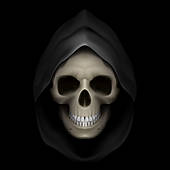

2017, March 27 — Review of Final Girls
I received this book free from the publisher through NetGalley in exchange for a fair and honest review.
Written by Mira Grant, and published by Subterranean Press, this novella is best classified as a combination of science fiction, fantasy, and horror (zombies). If I had known about the zombies, I probably would not have read the book because I hate zombie stories (movies, TV shows, etc.). The book begins as horror, but then rapidly transforms into science fiction before turning back to horror.
The story is about a revolutionary new type of psychiatric treatment that involves the use of a proprietary form of virtual reality (VR) that enables doctors and technicians to plant dreams into the minds of their patients, and to see those dreams on computer screens. The dreams can be manipulated, and the effects on patients can be lasting. Unfortunately, many unscrupulous agents of government(s) would dearly like to get their hands on this technology for propaganda and “brain washing” purposes. So far, its inventor, Dr. Jennifer Webb, has been able to keep this dangerous technology away from those who would misuse it, but that could change very soon.
Esther Hoffman is an investigative journalist for Science Digest. When she was fifteen years old, Esther’s father had died after being accused of unspeakable crimes against children — children who had been manipulated by unprincipled psychologists who claimed to be able to retrieve “repressed” memories from their minds. Esther becomes obsessed with her father’s death because she had been unable to prevent it. She is driven to investigate those who treat diseases of the mind. She is granted access to Dr. Webb’s laboratory, and to two of the doctor’s patients who had been treated successfully. Unbelievably, the good doctor has met one of her first patients at a Horror Con show where she was presenting a scientific paper on her new techniques. Really? That’s where doctors find their patients? That’s where they present their scientific discoveries to the scientific community? Wow! In any case, as a part of her investigation, Esther takes Dr. Webb up on an offer to try the VR treatment herself so she can see that it is harmless. Things don’t go as planned, and that’s where the zombies come in.
Some of the sentence structure, and some of the organization of the story, could be a bit better. I thought that restructuring some of the sentences and paragraphs would make the flow of reading a little smoother and easier. In addition, some of the dialogue is stilted and unrealistic. The author uses the device of changing tense to describe the portions of the story that are supposed to be in the VR, using past tense for the bulk of the story, but present tense for the VR part. This didn’t work for me. I found it confusing, and I noticed at least one place where both tenses were used in the same sentence.
This story has potential. It could easily be stretched into a full-length novel if the zombies were eliminated and more focus were to be placed on the attempts by unscrupulous governmental agents to gain access to a dangerous new technology. This could easily be transformed into a straight sci-fi thriller, IMO.
The ending of the story seemed abrupt, and left me vaguely unsatisfied. Although all loose ends were tied up, it wasn’t at all clear to me what might happen next in the lives of the two women: Dr. Webb and Esther Hoffman. It is a short, easy read, and was sufficiently engaging and entertaining that I awarded it two stars out of a possible five.


2017, March 27 — Review of Blood in the Water
The book Blood in the Water, by Heather Ann Thompson is a historically-accurate, 725-page (including notes and index) account of the tragic Attica (New York) prison riot of 1971, and of its aftermath. A true historian, the author presents painstakingly-researched factual data about the event, but the result is anything but dry. Even though so many years have passed since that awful event, the State of New York and the US federal government have continued to hide the evidence of what really happened behind veils of secrecy that not even the Freedom of Information Act was able to penetrate for the author. What documents she was able to obtain had been heavily redacted, and some pertinent documents are still unavailable, even after all these years. This made her job much more difficult than it should have been, but Heather Ann Thompson persisted, and the result is this excellent work of History. Because it is History, the author names the names of all who were involved in the events that occurred at the time of the Attica uprising, and in the years afterward. She has included in the book a number of photographs taken contemporaneously, and these include photographs of many of the principals involved in the event – prisoners, administrators, lawyers, journalists, politicians and others. Even though the author writes accurately and unemotionally, the story is gripping because she presents a blow-by-blow description of everything that happened in and around Attica in September of 1971 and the following months and years.
There had been previous prison riots in New York, riots that had been ended without excessive violence, and without fatalities. One had been at the New York State Prison in Auburn, and another had been in the jails of New York City, also called the “Tombs.” Unfortunately for everybody, the promises made by administrators to the inmates at both of those facilities had been broken, and the rioters had been subsequently sent to Attica. The seeds for violence had been sown. The distrust that would prevent a peaceful settlement had been established. The tension at Attica had reached the breaking point. Something had to give — and it did.
The prison employed two full-time physicians, both of whom had worked there for a long time. Both of them maintained their private practices while being employed by the state, and both had a routine habit of denying treatment to sick and injured inmates. Neither spoke Spanish, and neither ever asked for an interpreter to help them treat the many Puerto Rican inmates who spoke no English. Patients lost teeth because the two physicians refused to provide referrals to dentists. One teenager, suffering from Polio, asked for treatment for his severe pain. The response was to lock him in his cell for a month with no treatment. Once, when a prisoner died while under the care of one of the physicians (Dr. Williams), the staff held a meeting to determine how he should be held accountable, but nothing was ever done, and the doctor’s methods of treatment (or non-treatment) did not change. These same physicians refused treatment to many of the inmates who had been shot, some of them multiple times, after the retaking of the Attica prison. Conditions and practices at the prison were more than just inhumane, they were horrific.
The riot was spontaneous; it was not planned. It was precipitated by a guard’s overreaction to two men play-sparring in the exercise yard. Many of the guards at Attica had a reputation for brutality, and the guards began to impose arbitrary and senseless requirements on some of the inmates. In a confrontation at the intersection of the “tunnels” that connected the four main cell blocks, a place that controlled all four tunnels and was known as “Times Square,” a guard tried to grab an inmate, and the inmate turned and shoved the guard in the chest. That’s all it took. The violence began immediately, and the guard who was on duty in “Times Square” was attacked and beaten by prisoners who grabbed whatever they could find to use as weapons. That guard ultimately died, and his death changed the complexion of the entire event. What ensued was a tense 4-day standoff in the yard of D-Block, and the taking of 38 hostages, mostly guards, but also some civilian employees of the facility.
For four anxiety-filled days, the New York State Commissioner of the Department of Correctional Services, Russell G. Oswald, attempted to negotiate with the prisoners and avert violence. Oswald had a reputation as a prison reformer. He had run the parole systems of both Wisconsin and Massachusetts before coming to New York, and he held a degree in social work. He formed a committee that was comprised of community leaders, politicians, a journalist, and other people who were respected in the black community, and these people participated in the negotiations in order to provide an aura of legitimacy and fairness to the process. William Kunstler, the famous civil rights attorney, and Tom Wicker, a columnist for the New York Times, were members of the committee. Although ostensibly neutral observers in the process, Kunstler immediately agreed to represent the prisoners, which further inflamed the situation. The stage was set. With agitators and radicals joining the negotiations, peaceful settlement was all but ruled out. The demands being made by the prisoners became more and more unreasonable.
Ultimately, the decision was referred all the way to Governor Nelson A. Rockefeller. With his own political aspirations, and after consulting with President Richard M. Nixon, Rockefeller refused to meet with the prisoners, or even to travel to Attica as a sign of good will. After four days of fruitless negotiations with a group of about 1300 prisoners who were armed with home-made weapons and no firearms at all, the inadequately-trained and prepared New York State Police (NYSP), along with a bunch of sheriff’s deputies and correctional officers armed to the teeth, took the prison back by force. The result was a blood bath. The prison yard had been wet and muddy, with standing puddles of water after a night of rain, and now there was blood in the water.
Before the assault, Winchester Model 70 high-powered hunting rifles in caliber .270, and with telescopic sights, had been distributed to members of the New York State Police (NYSP), but absolutely no attempt had been made by anybody to record which trooper had which weapon by recording the serial numbers of any weapons. This was to ensure that no ballistics tests could ever trace the bullets fired back to the man behind the trigger. All participants also removed all emblems, badges, insignia of rank, or any other means of identification from their uniforms before entering the prison so that none of them could be identified. Add to that the fact that they were wearing gas masks, and you would see that they were indistinguishable from modern-day terrorists. Many of them were carrying personal weapons (including the very powerful .44 Magnum), along with state-issued shotguns loaded with buckshot. The stage was set for disaster.
The assault force that had been gathered under the auspices of the NYSP was massive. In total, there were 550 men from the NYSP, along with about 50 more from the Bureau of Criminal Investigation, making a total of 600 State Police in the assault force. This was augmented by 232 sheriff’s deputies from several counties, and an uncounted number of Corrections Officers (guards) from Attica and other prisons. These men were carrying their personal weapons because the state of New York did not issue weapons to Corrections Officers (COs). All of the men in the assault force were armed with guns – none of the prisoners had a gun. Their only weapons were hand made from broken furniture and some tools. Of the approximately 1,300 prisoners in D Yard, only a handful had weapons of any serious sort.
These law enforcement officers and COs were sent into the prison before the heavy fog of tear gas that had been dropped by helicopter had dissipated, making it almost impossible for them to see who they were shooting at. Not surprisingly, some hostages were killed by bullets fired by the assault force. It was a bloodbath. Ten of the 39 hostages and 29 of the inmates were killed. Eighty-nine others were seriously wounded by gunfire, including some hostages who were injured but survived. The assault force fired more than 3,000 rounds of ammunition during and after the assault. The shooting continued long after the prison had been retaken as COs and NYSP members continued to execute prisoners who had surrendered. In spite of propaganda disseminated by the state that asserted that the hostages died as a result of their throats being slit by prisoners, and that one had even been castrated, official autopsies showed that all had died as a result of gunfire, and that none had been castrated and none had a throat slit. The state was so incensed by the honesty of the medical examiner who conducted the autopsies that they had multiple autopsies performed, and they hired the now-famous Dr. Michael Baden to review all autopsy results. All medical examiners were unanimous in the conclusion that all of the hostages who were killed died as a result of gunshot wounds.
The whitewash and cover up by correctional authorities, NYSP and state administrators began immediately, even before the shooting had stopped. Before the tear gas had cleared, the governor’s personal representative had complete access to the prison and everybody involved in the takeback. Medical care for the wounded inmates, however, was routinely withheld. Even prisoners who had been shot as many as 12 times were denied care. Doctors from outside the prison, and from the New York National Guard, were outraged, but there was little they could do. Corrections officers and the New York State Police were in complete control of the prison and everything that happened there. The author’s descriptions of the subsequent brutality displayed by COs, the NYSP and even the prison doctors is appalling beyond belief. Some might find it difficult to read.
Now the legal battles began. Concerned lawyers flocked to Attica from all over the United States. Although independent observers were being prevented from entering the prison, Defense attorneys were successful in securing a court order signed by a federal judge that would grant them access to the prison. Unbelievably, the prison administration ignored the order, and continued to deny access to doctors, lawyers and observers as the whitewash continued. They suffered no consequences from their unheard-of contempt of a federal court. Incredibly, the people charged with the responsibility of investigating the crimes at Attica (the NYSP) were the very people who had committed those crimes.
Grand juries were empaneled and prosecutors began to entice prisoners to alter their testimony to fit the story they wanted to present to the public. Some prisoners were granted parole, or were transferred to medium-security prisons, in exchange for perjured testimony. Anybody who related facts that didn’t fit the narrative of prosecutors was punished further, or was not allowed to testify to the grand jury. Within two years of the uprising, in September of 1973, the legal clashes had begun. Defense lawyers formed a group called the Attica Brothers Legal Defense (ABLD), and it was staffed with a variety of lawyers and law students committed to the idea of justice for the prisoners who had been charged with crimes by the state of New York. In total, almost 1,300 indictments had been issued. The task was daunting, but the battle was on. Some of the courtroom drama is the best reading in the book. Such luminaries as civil rights attorney William Kuntsler and former Attorney General Ramsey Clark represented inmates who had been charged with murder. Unfortunately for them, some of the judges assigned to oversee the trials were biased in favor of the prosecution, and hostile to the defense. Many rulings issued by these judges went against the defendants and their attorneys. Truly fair trials were not possible.
The State of New York had lost its case against Bernard “Shango” Stroble, whom the jury had found to be not guilty of murder, and by November of 1975, charges against 27 defendants had eventually been dismissed due to a lack of evidence (or other legal reasons), and six defendants had passed away while waiting for their trials. By the end of that year, more than four years after the retaking of Attica, “. . . the state’s cases were falling apart, and prisoners who had been vilified in the press were now being written about as the victims of state bullying. Most significantly, on April 8, 1975, The New York Times broke a story that rocked the entire New York State Attorney General’s Office to its core. Someone inside the Attica investigation had become a whistle-blower.”
Significantly, the author was able to locate, and include in this book, both “before” and “after” photographs of a deceased inmate lying in the D Yard with the “after” picture showing that somebody had placed a weapon under the dead man’s hand to falsify evidence that he had been armed when he was murdered. The NYSP and Corrections Officers steadfastly insisted that the prisoners had made Molotov cocktails to use as weapons, and that they had soaked mattresses with gasoline and forced the hostages to sleep on them so that they could all be murdered quickly in the event of an attack by police, but it was never explained how and where prisoners might get their hands on any gasoline in D Yard, the place where they were largely confined. I was struck by the enormity of this oversight by all involved in the prosecutions.
Additionally, none of the state troopers who had participated in the retaking had been asked to fill out the standard Discharge of a Firearm report usually required by the state, nor had any ammunition accountability paperwork been completed. This is unheard of in standard law enforcement practices and procedures all across the country. But not at Attica, apparently. And even though the State Police had been continuously filming everything that happened in D Yard for four consecutive days, absolutely no photographic records of any of the shootings existed by the time criminal trials began. Before the film was turned over to prosecutors, approximately six minutes of the film that showed the initial assault had been shortened to four minutes by the New York State Police. An investigator from the Attorney General’s office also discovered an “amazing series of claimed malfunctions by State Police personnel assigned to photograph the assault in operating their cameras or in having the photographs properly developed.” A number of the still photographs had disappeared, and investigations failed to reveal their whereabouts. The whitewash had been very successful, and it extended from the office of then-governor Nelson Rockefeller to succeeding governors, including Governor Hugh Carey, and the many judges and prosecutors assigned to oversee the investigations and tell the public what really happened.
By New Year’s Eve of 1976, the whitewash was almost complete. Governor Carey called a press conference to announce “that he was going to pardon every prisoner who had pled out in an Attica case, grant clemency to every prisoner who had been found guilty in an Attica case, and drop all inquiries into the potentially illegal actions of any state officers and employees at Attica back in September 1971 – even disciplinary actions against them would now be off the table.” Governor Rockefeller had opened this unsavory chapter in our country’s history, and Governor Carey attempted to close it.
After the criminal cases had been disposed of, the civil cases began. It cannot be overemphasized, however, how much the judges assigned to oversee the cases by prisoners against State Police and prison officials influenced the outcomes by ruling consistently against the plaintiffs in their suits. Prisoners were blocked over and over again, in their attempts so seek damages, sometimes by different judges, and sometimes by the same judges changing their own previous rulings. It was a disgusting capitulation of judges to the will of politicians, many of whom were friends and golfing partners with the judges. You won’t, for example, believe what one judge in the civil trial did after he charged the jury, but while they were deliberating. It was outrageous. I won’t tell you what it was, but you can read about it in the book. That civil trial, by the way, took place almost 20 full years after the incident at Attica. What ever happened to the legal maxim that “justice delayed is justice denied”? When you read this book, you are going to be very surprised to learn of the absolute, raw power that is held by judges in our democracy. Most Americans have no concept of just how powerful judges really are. Judges can obstruct justice, and they can do so for years, usually without consequence.
Perhaps you will not be surprised, however, to learn just how much power the President of the United States wields in forcing onto Americans his ideologies regarding our nation’s Constitution with his choices for federal judges and Justices of the US Supreme Court. This was proven repeatedly by the rulings of the different judges who oversaw the legal proceedings in the Attica cases, and by how callously they were able to deny prisoners their civil rights. And it wasn’t just the prisoners. After the prisoner cases were finished, the survivors of the hostages, and the surviving hostages, sued the state of New York. To their great surprise, they had been lied to and cheated by the very same officials and judges that had mistreated the inmates. In some ways, their treatment was even worse than had been the treatment of the prisoners. Believe it or not, this case dragged on until 2005, almost 35 years after the events at Attica.
Americans need to ask themselves this: If the same thing happened today, would the response by public officials be any different – especially in today’s political climate? We should certainly hope not. But analysis shows us that, in many ways, Attica is worse today than it was in 1971, and other prisons have also become powder kegs. The author points out that “Forty years after the uprising of 1971, conditions at Attica were worse than they had ever been.” She further relates that “According to the Correctional Association of New York, by 2001‘the Department of Correctional Services had cut over 1200 programs providing services to inmates that were there in 1991.’” Also, “by April 12, 2011, there were 2,152 men crammed into this facility, the vast majority of whom were African Americans and Hispanic, and an overwhelming 21 percent of Attica’s prison population that year had been ‘diagnosed with some level of mental illness.’” As recently as 2015, biased judges in New York were allowing prison guards and officials at Attica to engage in abusive behavior with no adverse consequences. 2015! Sadly, America appears not to have learned very much from this awful tragedy in our nation’s history.
If you are interested in reading an important chapter of American History, and especially a chapter that relates some of the less savory aspects of that History, read this book. You owe it to yourself as an American to know the truth about our country’s political leaders.


2017, March 25 — Review of The Innocent Have Nothing to Fear
In this alternate reality / science fiction novel by Stuart Stevens, the Republican National Convention is being held in New Orleans. It might be 2020, or it might be 2024, and the sitting President of the United States is a Republican who is being forced to resign because of a sex scandal involving his wife, the First Lady. In the Republican primary elections, no candidate has won the necessary number of delegates to gain the nomination, so the convention is going to be brokered – the delegates will choose the Republican candidate for President at the convention, itself. Two serious candidates remain in the race: Hilda Smith, a moderate Republican, former governor of Vermont, and the current Vice President of the United States, and Armstrong George, the fiery conservative governor of Colorado who is closely modeled after Donald Trump. Then the first bomb goes off.
Yes, a bomb. A real one. Rather than shrapnel, it is loaded with red dye, and only one person is injured: a Hilda Smith supporter. More bombs are planted and exploded in New Orleans, and the convoluted plot eventually tells us who planted them, and why.
The protagonist in this story is J.D. Callahan, Hilda Smith’s campaign manager and all-round attack dog. He has virtually no scruples, so he is right at home among the politicians and journalists who populate the novel.
The author doesn’t hesitate to dish dirt on the way that political campaigns are conducted, or on the way such campaigns are covered by the journalists assigned to them. He should know. He was a lead strategist and media consultant for some of the nation’s toughest political campaigns for twenty-five years. In 2012, Stevens became the senior strategist to Mitt Romney’s presidential campaign. He knows whereof he speaks.
If nothing else, the author wants us to know just how cynical and ruthless our political leaders really are, and how jaded and cutthroat journalists can be. He tells us how decisions are really made in politics, and how the unwary can be hurt badly just by their participation in what is often a very shady business. He does not mince words.
There are a few minor editing errors, and some of the structure of the prose is a bit stiff. I thought the dialogue was often stilted and not very convincing, but the book is an easy read, and it is relatively short at 183 pages of narrative.


2017, March 12 — Review of Insane Clown President
Nailed it! Matt Taibbi’s conclusions about the state of the American electorate, the country’s political parties, and about its news media -- conclusions that he reached after an insightful and comprehensive analysis of all three is spot on. Although the Introduction is well-organized and studiously documented, the other chapters might be a little confusing to read because he included various essays and articles that he wrote at different times during the 2015-2016 presidential campaign, making some of his observations somewhat dated. The full title of the book is: Insane Clown President: Dispatches from the 2016 Circus.<
I did not enjoy the book so much as I appreciated it. The author clearly did not write it as a work of entertainment, but as a quantum of information that would be valuable to an informed American citizen and voter. In his introduction to the book, Taibbi makes a pretty solid case for the moral, ethical and intellectual bankruptcy of the news media in America, and especially of the electronic news media (think television). This, in spite of the fact that he, himself, is a journalist who writes extensively for Rolling Stone magazine. It was the news media, more than anything else, that allowed Donald Trump to win the presidency.
This book was difficult to review because it is comprised (primarily) of twenty-six different presumably independently-copyrighted dispatches that were written at the behest of Mr. Taibbi’s employer: Rolling Stone magazine. Also, during the course of the campaign, Taibbi’s views shifted a few times. I felt it best, then, to review each chapter independently
Chapter 1, titled The Great Derangement Redux, was taken from a book the author wrote about ten years ago called The great Derangement. The chapter was taken from the introduction to that book. It is assiduously footnoted. In it, Taibbi describes just how the alternate reality that has captured both the right and left wings of American political thought developed in our country after about 2004. In my view, he offers a pretty interesting and compelling compilation of evidence.
Chapter 2 of the book was originally written and published on August 12, 2015 and is titled: Inside the GOP Clown Car. It is a description of the early days of the 2016 presidential campaign on the Republican side. In the chapter, Taibbi describes the extraordinary influence exerted by the major television networks (including Fox News Channel) when they forced candidates to attain certain minimum poll numbers in order to be able to participate in the televised debates. This left the candidates in positions of trying to outdo each other with wildly crazy assertions that would fire up the emotions of a sufficient number of Republican voters to make their required approval numbers, and so their debate participation would be ensured. It worked for those candidates who adopted the strategy. Unfortunately, Donald Trump, as a former TV reality show star, knew the process better than any of them, and he outdid all of them, eventually gaining the nomination of the Republican Party.
Chapter 3, written and published originally on August 21, 2015, is titled, Donald Trump Just Stopped Being Funny. It is subtitled, Win or lose, Trump’s campaign threatens to unleash the Great American Stupid. The author describes the moment when Donald Trump stopped being funny as being when he defended two brothers from South Boston who beat up a homeless Hispanic man and then told police that Donald Trump was right and all these people needed to be deported. Trump declined to condemn the violence, instead telling reporters that “. . . the people that are following me are very passionate. They love this country. They want this country to be great again.”
Chapter 4 was written on September 4, 2015. It is titled: The Republicans Are Officially the Party of White Paranoia. This essay is a fairly concise and accurate description of how the Republican Party embraced the absurd right-wing notion that the white race is the one being persecuted in America today. He provides the data to back up this assertion, and some of it would be laughable if it weren’t so serious. He describes how voters are consistently “conned” by their parties, and especially Republican voters. He talks about the “CEO class,” and how they donate heavily to both political parties in order to get what they want. He tells us that, in return, the Republicans give them everything that they want while Democrats give them only most of what they want.
Chapter 5 was written on September 8, 2015 and is a meaningless article about which actors should be cast in which Republican candidate parts should a movie or TV show be made about them. It did not, in my opinion, substantively contribute to the book. It should not have been included in a serious work.
Chapter 6 was written a week later, on September 16, 2015, and is a set of rules for a drinking game to be played in a bar by watchers of the televised Republican presidential campaign debate. It added nothing to the book and, like the previous chapter, should probably have been omitted.
In Chapter 7, Taibbi became serious again. This chapter is titled The Case For Bernie Sanders. It was written on November 3, 2015. In it, he describes the candidate and his early days in the campaign. It is thoughtful and incisive. Most striking were the final words of the chapter: “More than any other politician in recent memory, Bernie Sanders is focused on reality. It’s the rest of us who are lost.”
Chapter 8 brings the author back to the Republican Clown Car, where he continues his analyses of the lesser-known Republicans in the race. It was written on November 17, 2015. The subtitle of the chapter is: On the campaign trail with the most dishonest, bumbling and underqualified pack of presidential candidates in history. I guess we don’t need to ask him to tell us what he really thinks . . . The article was written while the author was covering the candidates while they campaigned in New Hampshire, and it is a fairly serious analysis of their positions on various issues.
On November 25, 2015, Taibbi wrote an article titled: America Is Too Dumb for TV News, and it is Chapter 9 of this book. The piece is centered around Trump’s assertion that he saw (on television) thousands (and thousands) of people in Newark, New Jersey cheering, dancing and celebrating when the twin towers collapsed on 9/11 of 2001. Other right-wingers claimed that it was in Paterson, New Jersey, and not Newark, but the author analyzes the matter and reports what Trump probably actually saw. Never mind that it never happened as asserted, Trump would not retract it, and a good many Americans believed him (and still do). They have been conditioned over the years to believe what they see and hear on television, and that includes Trump. The author concludes that we can’t handle the truth by saying: “Maybe in the wake of Paris that’s the way people feel, but it’s not close to what happened. If we can’t remember things correctly, even in the video age, things are going to get ugly fast in this country.” He nailed it again. They can’t, and it did.
Chapter 10 was written on December 10, 2015 and is titled: It’s Too Late to Turn Off Trump. In it, Taibbi describes the pandering to Trump that was evident on the Morning Joe news/talk TV show broadcast by MSNBC. On the show host Joe Scarborough compared Trump to John McCain in 2008, with his Straight Talk Express. In other words, Trump already has the TV news media in his pocket.
In Chapter 11, Taibbi returns to the inane set of rules for a drinking game to be played during a televised Republican candidates’ debate. It adds nothing to the book.
Chapter 12 addresses Lloyd Blankfein, CEO of Goldman Sachs, the very large Wall Street investment bank. In the article, Taibbi refers to Blankfein as a “Vampire Squid” and the “Chief Executive Cephalopod” of the bank. In addition to Blankfein, the author also takes on Timothy Geithner (former Secretary of the Treasury) and former President Bill Clinton, lumping them together as a clique with common goals and objectives.
Taibbi returns to addressing the TV media in Chapter 13 when he describes the groveling and brown-nosing of Morning Joe hosts Joe Scarborough and Mika Brzezinski when dealing with Trump on their morning talk/news TV show on MSNBC. Unfortunately for them, their off-camera conversations with Trump were caught on tape and released to the public through the LA Times. Nothing more thoroughly validates this reviewer’s earlier claim about the moral, ethical and intellectual bankruptcy of the TV news media than the sycophancy of Scarborough and Brzezinski as caught on tape. How disgusting for members of a profession that holds itself in high esteem as the guardians of democracy to so blatantly show submission to a political candidate, and to do so without the least concern for the interests of their viewers. Barf!
Chapter 14 was written on February 24, 2016. It is titled: How America Made Trump Unstoppable. After attending a Trump rally in New Hampshire and seeing how Trump supporters were instructed to treat protestors, the author comments that “In a Trump presidency, there will be free tar and feathers provided at the executive’s every public address.” Then, on page #153, Taibbi goes on to further describe the corruption of the election process by pointing out that the complicity of the television news and entertainment industries, and the raising of huge amounts of campaign moneys means that “Nine out of 10 times in America, the candidate who raises the most money wins. And those candidates then owe the most favors.” He elaborates further by adding: “Meaning that for the pleasure of being able to watch insincere campaign coverage on TV for free, we end up having to pay inflated Medicare drug prices, fund bank bailouts with our taxes, let billionaires pay 17 percent tax rates, and suffer a thousand other indignities.”
On the next page, the author insightfully says that: “Trump found the flaw in the American Death Star. It doesn’t know how to turn the cameras off, even when its filming its own demise.” What an apt description of the sick relationship between television and the American people! Showing his amazing foresight again on the very next page, the author makes another prediction: “You think the media sucks now? Just wait until reporters have to kiss a brass Trump-sphinx before they enter the White House press room.” That, indeed, has come to pass. It has already happened. Recently, Trump and his Press Secretary Sean Spicer banned reporters representing several news outlets from attending White House press briefings. These outlets included such notable news sources as The New York Times, the <i>Los Angeles Times, CNN, Politico, BuzzFeed, and the esteemed BBC, along with the <i>Guardian.
On March 1, 2016, Matt Taibbi wrote the article that became Chapter 15 of this book. Titled: Revenge of the Simple: How George W. Bush Gave Rise to Donald Trump, it is a caustic review of the Bush years in the White House. In response to the wails of GOP insiders to the effect that Trump’s ascendency would mark the beginning of the end for the Republican Party, Mr. Taibbi points out that “. . . Trump isn’t the beginning of the end. George W. Bush was. The amazing anti-miracle of the Bush presidency is what makes today’s nightmare possible.” Once again, the author is spot-on with his analysis.
In Chapter 16, the author deals with Hillary Clinton and the Democrats. Titled: Why Young People Are Right About Hillary Clinton, the chapter talks about the changes that affected the Democratic Party after the disastrous campaign of George McGovern in 1972, along with the big election loss of Walter Mondale in 1984, and how those events subsequently shaped the modern Democratic Party. This reaction by Democrats led to the rise of a more progressive wing in the Party, and ultimately brought us Bernie Sanders in the 2016 presidential election. It is an interesting analysis, and I found it to be convincing. It was written on March 25, 2016.
Chapter 17 was written on May 18, 2016. It is titled: RIP,GOP: How Trump’s Campaign Is Killing the Republican Party. In the author’s view, the modern Republican party died right after the 2016 Indiana Republican primary election when Donald Trump beat Ted Cruz. In his victory speech Trump described Reince Priebus, Chairman of the Republican National Committee, saying: “It is not an easy job, when you have 17 egos.” (meaning the other Republican candidates) “And now I guess he’s down to one.” (Trump) Taibbi: “The crowd roared. The RNC had kissed Trump’s ring. That was it, right there, the death of the modern Republican Party.” A whole lot of people would agree with this assessment.
The author makes a very good case for the fact that, at this point, the Republican Party had split into two Republican Parties. “One led by Trump, was triumphant at the ballot, rapidly accruing party converts, and headed for Cleveland (site of the Republican National Convention) for what . . . was sure to be the yuugest, most obscene, most joyfully tacky tribute to a single person ever seen in the television age.” In describing the other half of the Party, Taibbi goes on to say: “The other Republican Party was revealed in the end to be a surprisingly small collection of uptight lawyers, financiers, and Beltway intellectuals who’d just seen their chosen candidate, the $100 million Jeb Bush, muster all of four delegates in the presidential race.”
The Republican Party was “undone by a surge of voter anger that was in significant part their own fault.” The rise of the Koch Brothers/Tea Party wing of the Party had led to the purging of all moderate candidates at all levels within the Party. The goal was to ensure the candidacy of a candidate like Cruz or Scott Walker, but the result was an open door for Donald Trump. Taibbi has it exactly right. That is what happened to the Republicans. He sums it up concisely as: “this was the inevitable consequence of the basic dynamic of the party, which by the end was little more than a collection plate for global business interests that were, if not foreign exactly, certainly nationless.” A damning indictment, but all true, and very convincing.
On June 9, 2016, the author wrote the article that was to become Chapter 18 of the book. Titled: Democrats Will Learn All the Wrong Lessons from Their Brush with Bernie, the chapter tells us how the Democrats failed to take any lessons from the 2016 elections, and how they disdain constituents in Democratic Congressional offices. He points out how the party elders believe that Bernie Sanders’ popularity as a candidate was an anomaly, not to be repeated in any future elections. As smug as their Republican colleagues, the Democratic members of Congress believe that, because of gerrymandering, they are safe from any threats other than primary elections, and that they need not be responsive to their constituents. Taibbi believes that the Democrats will be the next to face a split in their party, and he could just possibly be right (again).
Written on June 30, 2016, Chapter 19 of the book is titled: In Response to Trump, Another Dangerous Movement Appears. It is subtitled: Fears of demagoguery are provoking a frightening swing in the other direction. In this chapter, Taibbi describes a reflexive reaction to the rise of Trump. He quotes people who are important in the Republican establishment as saying that the problem in America is that we have “too much” democracy. As if such a thing could be possible! He points out that, although we have periodic elections that make us believe that we have self-rule, the reality is that “we can only be allowed to choose between candidates carefully screened by wealthy donors. Nobody without a billion dollars and the approval of a half-dozen giant media companies has any chance at high office.”
Chapter 20 was first written on July 22, 2016. It is titled: Trump’s Appetite for Destruction: How Trump’s Disastrous Convention Doomed the GOP. It is subtitled: Republican National Convention made a joke of American democracy. In this chapter, Mr. Taibbi relates his perceptions of the Republican National Convention in Cleveland, Ohio. He tells us that, at the front of the convention hall, the news media once again showed its true colors when large groups of reporters unsuccessfully, and repeatedly, attempted to provoke violent confrontations between protestors and Trump supporters. Although they were not successful, it was not for want of trying. So much for reporting the news as opposed to making it. No wonder the public no longer trusts the news media.
With the 2016 presidential election less than three months away, Matt Taibbi wrote another dispatch from the campaign trail on August 15, 2016, and it became Chapter 21 of this book. The chapter is titled: The Summer of the Media Shill, and it is subtitled: Campaign 2016 won’t just have lasting implications for American politics. It’s obliterated what was left of our news media. Once again, the author shows us his amazing prescience.
He goes on in the chapter to tell us that the news media has chosen sides (as if we didn’t already see that), and that “[a]part from a few brave islands of resistance, virtually all the major news organizations are now fully in the tank for one side or the other.” Taibbi describes the two sides of the media divide as being Fox, advocating for conservatives and Republicans, and CNN and MSNBC advocating for Democrats and liberals. This observation is easy to verify just by watching a few of the shows broadcast by these networks.
Chapter 22 was written on September 6, 2016, and is titled: How Donald Trump Lost His Mojo. Primarily, the chapter describes Trump’s rants, raves and campaign speeches subsequent to the Convention, and how his shift in tone resulted from his increased use of a teleprompter and pre-written texts prepared by his campaign staff. It made him appear confused and indecisive. He regained high mojo when he returned to his previous speaking style of off-the-cuff, adlib, shoot-from-the-hip remarks that made him as well-known as he had become.
The next chapter of the book (Chapter 23) was apparently written the day after the previous chapter: September 7, 2016. It is titled: The Unconquerable Trump. The main theme of the chapter seems to be Taibbi’s admission that he was wrong in his chapter about Trump losing his mojo. He wrote this dispatch in response to a CNN poll that had shown Donald Trump leading Hillary Clinton. He was mystified, and he goes into a lot of detail about that in the chapter. He clearly does not understand how Trump could possibly take the lead, especially when he has his spokespeople (Katrina Pierson) saying things like “’Barack Obama’s policies “probably” caused the death of a soldier killed in Iraq’ – in 2004! When confronted about her mistake, she said, ‘That’s why I used “probably.’” Really?! Obama was still in the Illinois statehouse in 2004, so he had no “policies” and could hardly have influenced the death of a soldier in Iraq. Trump and his surrogates were continuing to spout insanity and the author, like many of us, was mystified about why so many Americans, including members of the news media, were unwilling to challenge the lies, and to call them what they clearly were.
By October of 2016, the presidential campaign had reached a fever pitch. Taibbi wrote another dispatch (Chapter 24) on October 16, 2016 and titled it: The Failure and Fury of Donald Trump. The chapter is subtitled: Win, lose or drop out, the Republican nominee has laid waste to the American political system. On the trail for the last gasp of the ugliest campaign in our nation’s history. The primary theme of the chapter is an annual event hosted by Republican Congressman and Speaker of the House Paul Ryan. The event is called the “GOP Fall Fest,” and is held in Elkhorn, Wisconsin. The author’s prescience failed him this time, however. In the last paragraph of the chapter, Taibbi asserts: “Trump can’t win.” But Trump did win, and this shows (again) the dangers of journalists making prognostications.
Chapter 25 was written two days after the election (presumably after the author had begun to recover from his grief). On November 10, Taibbi wrote the chapter titled: President Trump: How America Got It So Wrong. The subtitle on this one is: Journalists and politicians blew off the warning signs of a Trump presidency – now, we all must pay the price. Once again, Taibbi confirmed the suspicions of many perceptive Americans when he pointed out that: “Whenever we [journalists] sought insight into the motives and tendencies of this elusive creature, our first calls were always to other eggheads like ourselves. We talked to pollsters, think-tankers, academics, former campaign strategists, party spokes hacks, even other journalists. Day after day, our political talk shows consisted of one geek in a suit interviewing another geek in a suit about the behavior of pipe-fitters and store clerks and cops in Florida, Wisconsin, Ohio and West Virginia.” Now you’ve figured it out, Taibbi. What took you so long? And why is it that virtually none of your fellow journalists has figured it out yet? Because you all live in a bubble, that’s why. Just try, as an ordinary citizen, to get in touch with any of these elite journalists – to point out mistakes, or to share information. They have become totally unreachable to ordinary Americans, and they remain unreachable. I submit that it is primarily other journalists who most journalists wish to interview. I have discussed this issue with friends and colleagues, and we all agree that there is nothing more disgusting than a journalist interviewing another journalist, and presenting that journalist as some sort of “expert” whose words carry great weight. And the practice continues to this day!
As a related example, last year one well-known TV news show host speculated — incorrectly and on-air — about the origin of the term “red neck.” I know where the term came from, and so do a whole lot of other Americans. E-mail messages to inform that journalist, even when posted through the TV network’s Web site, came back as undeliverable. This was in 2016, but the isolation of journalists from the American people has been going on for a long time. How sad! They (journalists) did this to themselves.
In recent years, the news media (all of it) has succumbed to the temptation of publishing poll results and calling it “news.” It isn’t news, and it often isn’t even correct. Almost daily, the American TV news-watching public hears another breathless report about new poll results from a different polling organization that we are supposed to believe represents Truth and Fact. Never mind that the polls often disagree with each other, that the polls predicted a win for Hillary Clinton on the eve of the 2016 presidential election, and that Mitt Romney and his staff went to bed on election night in 2012 believing that Mr. Romney had won the election because the campaign’s polling company told them so. Politicians and journalists are slow learners, and polls are notoriously unreliable..
Taibbi finally admits his mistake when he tells us that: “I listened to polls and media outlets, instead of people.” Clearly, few other journalists learned anything from this election. It will remain to be seen whether Mr. Taibbi learned a permanent lesson, and whether it will have a lasting effect on his journalism.
The last chapter of the book (Chapter 26) was written on November 18, 2016, ten days after the election. It is titled: President Obama’s Last Stand, and is subtitled: Even Obama’s critics will soon have plenty of reason to appreciate him. In this chapter, Taibbi describes the greatness of President Barack Obama in maintaining his equanimity “in the face of absurd accusations and vicious rumor-mongering” propagated by the now-President, Donald Trump, about Barack Obama not being born in the United States, among other things. “The birther controversy was racism and profiling elevated to a Wagnerian level: Here was a black man who had made his way to the Oval Office, and a giant portion of the population still considered him to be literally trespassing.” The author goes on to assert: “From a personality standpoint, Obama is everything Trump isn’t. He is in control of his emotions, thick-skinned, self-aware, ingratiating, strategic, and temperamentally (if not politically) consistent. A striking quality of Obama as President is that he did his job without seeming to need to take credit for things all of the time, which kept the political price down on many of his decisions.” Taibbi’s concluding words of the chapter are: “At a time when a lot of Americans feel they have little to be proud of, we should think about our outgoing President, whose humanity and greatness are probably only just now coming into true focus.”
The author wrote a brief epilog to this book, but he didn’t write it after he wrote the final chapter, but the day before: one day after the election. He wrote it right after dawn on November 9, 2016, and he says, “I’m in shock. Right up until the end, I didn’t believe America would actually do it.” He concludes by saying that “Trump’s election marks the end of an era.” He tells us that the era “began back on August 28,1963 with Martin Luther King, Jr.’s I have a Dream speech, establishing no matter how incomplete, no matter how unfulfilled, the template for 50 years of race relations.” He’s right, of course. Fifty years of progress was largely undone on a single day of infamy: November 8, 2016.
Also in the epilog, the author takes on the alt-right, its political philosophies and the tactics of Lenin it used to gain its objectives. He quotes one of their books (their “bible,” in fact) as saying that, although the alt-right is primarily made up of college-educated men, it purports to sympathize with the working class. The alt-right claims that the Left hates them because they are dangerously bright, but they insist that they’re not skinheads. As Trump voiced their central philosophy: “I love the uneducated.”
Taibbi also continues his prognostications in the epilog, offering his advice to the Democratic Party going forward. Some of his analyses are a bit controversial. It remains to be seen, for example, if he will be as far-sighted now as he was in 2015 and 2016 in his predictions about Trump and the political parties. He tells us how the words “I don’t want to hear it” perfectly describe the inability of Democrats and their elitist supporters to face their own complicity in what happened last year. Apparently, this is the latest meme among Democrats. They are refusing to face reality. The very final words in the book (other than the Acknowledgements) are: Welcome to the end of the dream.”
Once again, he nailed it.
The author’s uncanny prescience in seeing the candidate Donald Trump for what he really was and is, for seeing the news media for what it was and is, and for seeing the American electorate for what it is, was truly remarkable, especially since he made his predictions as early as 2015. As I hope I’ve shown in this review, the author wrote this book contemporaneously in 2015 and 2016 as a series of press dispatches from the campaign trail. Over the 26 Chapters I have discussed, he has shown a surprising amount of consistency in his observations and his analyses, especially regarding the news media, the Republican Party, and Donald Trump.
One conclusion that can easily be reached from reading this book is that the word “news” in the expression “news media” is a misnomer. It should be called “entertainment” media. It is clear that the primary mission of most journalists is no longer to inform the American people, but to entertain them. Fox, MSNBC and CNN all offer clear evidence of this fact in their daily programming and the content of their TV shows.
One thing I will say is that Matt Taibbi has been very liberal with his criticism of the new media, and especially so in this book. However, he professes to be a journalist, himself. He should probably try looking in the mirror when he attacks journalists (not that I’m defending journalists – because I would never do that).
If you are interested in the American political process, and if you are wondering just exactly how Donald Trump managed to become President of the United States, wonder no more. Read this book. It will tell you everything you need to know.


2017, March 6 — Review of Burning Bright
This book is a non-stop action thriller set in the Pacific Northwest. Peter Ash is an Iraq and Afghanistan war vet who is suffering from a form of PTSD that includes claustrophobia. He is drifting around the country hiking and seeing the sights. He sleeps in tents, and in his truck. June Cassidy is the daughter of technical geniuses and an investigative journalist whose newspaper was bought out. She and many of the other reporters were laid off, and she now works as a freelancer. They meet in the California Redwoods after he is attacked by a grizzly bear and she is attacked and kidnapped by mysterious men in black SUVs. She had traveled to Palo Alto and Stanford University to take care of her mother’s affairs after she had been murdered by a hit-and-run driver. She manages to escape and flee to the Redwoods, where Peter is hiking. The adventure begins there, and the action is fast-paced and continuous. Their saga takes them up the coast all the way to Seattle, where June lives.
The story is well-written and well-edited. It is a gripping story that is difficult to put down. In some respects it has an element of science fiction to it, especially as it deals with Artificial Intelligence (AI). It is, however, set in the present. It follows the familiar trope of an AI gaining self-awareness and living in the Internet, which is the science-fiction part of the story. I did find a couple of inconsistencies, one of which aggravated me because it was simply carelessness on the part of the author.
On Page #324, the protagonists stop at a gun store and purchase a “Winchester 760 deer rifle with nice bright optics.” Never mind that the model 760 deer rifle is made by Remington, and it always has been. A careless author might see some pictures of a “Winchester model 760 Dear [sic] rifle” on the results page of his search engine, but if he were to look closely enough, he would see the word “Remington” on the side of the rifle’s receiver.” On Page #363, he reinforces the assertion that the rifle is a Winchester when he tells us that Lewis plans to “set up with the Winchester” on a rocky outcrop. On Page #406, however, the Winchester seems to change into a Remington, as the author states that “The shadows shifted again and Lewis coalesced from the trees, the big Remington over one shoulder.” Never mind that that the Remington Model 760 isn’t a particularly big rifle. The Remington Model 700, with its 24” barrel might be considered a big rifle, but the 22” Model 760 would probably not be. Also, the Model 700 would be more suitable for use as a sniper rifle, as it was during the Vietnam War with the Marine designation M40.
I found the ending of the story to be a bit unsatisfying. Even though the author tries to tie up all of the loose ends, I just felt like I was left dangling. How does the relationship between June and Peter progress? I guess we’ll have to wait and buy another book (the next in the series) to find out.


2017, March 4 — Review of The Stars are Legion
his is a really bizarre work of science fiction that was a bit too far-fetched for me. It is centered around a group of organic worlds called “Legion,” that orbit an artificial sun somewhere in space. Supposedly, the worlds are all populated by women. There are no men in the story at all. The worlds supposedly orbit the artificial sun, but do so in such close orbits that the women can easily travel between the worlds using living space vehicles that are ridden like a motorcycle. The laws of gravity and physics are pretty much ignored in this story, making it seem more like fantasy than science fiction..
We are not told how the women came to be on these organic “worlds,’ but we learn that the origin of the worlds is the wombs of the women. Women birth the worlds, and women birth the replacement parts needed by the worlds to maintain themselves. It is not clear where the Carbon and other elements required to grow life to such a massive scale come from in this story, but imagine something that could be conceived in the womb of a woman growing in size sufficiently to be able to support a complex eco-system, including a population of thousands of additional women. Apparently, the worlds exist on some sort of metal infrastructure, but we don’t know who built them, or where they came from.
The book is gory and slimy, and is very explicit, so if you have a weak stomach, you might want to skip it. It is primarily a story about two women, Zan and Jayd, who are on a quest that brings them into conflict, even though they profess their love for each other.
I found a couple of minor editing errors, along with some logical inconsistencies. At one point (page #244), Zan begins wondering about Anat, the former leader of the world she is currently on, as though Anat was still alive, but Zan already knows that Anat is dead. On another page, one of the women is described by Zan as throwing stones into the water. But these worlds are organic, living things. Even metal is rare. Where would stones come from?
Clearly, the author is a talented writer, but I did not enjoy this book or its theme. I award only two stars. I don’t think you’ll miss much if you skip this book.


2017, March 2 — Review of Invisible Planets
This is a book of short science fiction stories translated from the original Chinese language by Ken Liu, who also translated the 2015 Hugo Award-winning Three Body Problem. None of the stories was written by Mr. Liu, although two of them were written by Liu Ci Xin, author of the Three Body Problem trilogy. Rather than reviewing each individual work, I will attempt to review the included works of the individual writers by author:
Chen Qiu Fan (The Year of the Rat, The Fish of Li Jiang, The Flower of Sha Zui)
I liked the story about hunting genetically-modified rats that became intelligent and walked on their hind legs, and it is well-written, but I didn’t understand the allegory telling me what the story was really all about. I didn’t really understand the point. I was a bit bewildered by the ending.
The story about Li Jiang is definitely science fiction as it regards being able to stretch and compress time in a manner that allows corporate managers to accomplish more work in less time, but at the price of early burn-out that must be treated by a form of rehab therapy. The descriptions are vivid, and the story is well-written. I enjoyed reading it.
The story about the prostitute and the engineer left me in confusion. I guess I missed the point of the story entirely. The prostitute supposedly becomes pregnant by her husband and pimp, and when she tells him she is pregnant, he asserts that it is not possible because he is sterile. Then, death occurs. The ending is abrupt and left me wondering what really happened.
Xia Jia (A Hundred Ghosts Parade Tonight, Tongtong’s Summer, Night Journey of the Dragon-Horse)
Wow! That’s my first impression. Just, wow. A Hundred Ghosts Parade Tonight is a brilliant short story about an amusement attraction for tourists that has become abandoned, but that continues to function for many years afterward. The story is very well told, and the description is vivid. It is moving, emotional and engaging. I loved this story, and believe that it could be a seed that, some day, might grow into a fantastic novel. This writer really has talent, IMO. At the end of the story, you will be left wondering about Ning, the story’s central character. I know I was.
In her story titled Tongtong’s Summer, the author describes a realistic future (in a science fiction sort of way) where robots and technology help an old, retired physician to become active again, and to help his fellow humans to care for their health. He is, however, unable to prevent his own subsequent handicap from a serious disease. Tongtong is his granddaughter, and the story describes the summer in which these momentous events occurred in her life. It is interesting and well-written. The ending is a bit sad, but leaves the reader wondering what happened next in Tongtong’s life.
Night Journey of the Dragon Horse is a lyrical blend of science fiction and fantasy that is somewhat similar to the story of the Hundred Ghosts Parade by the same author, but I’m not sure what it really meant. This story, also, is well-told, but shifts from science fiction to fantasy as it progresses. I’m not sure of the author’s intent in the story (if there is one). I could not discern a point to the story, even though I liked it.
Ma Bo Yong (The City of Silence)
The City of Silence is a clear allegory about a place where the government is trying to control everything, including all speech, and even thought. It is written along the lines of the very well-known work of science fiction: 1984 by George Orwell. We know that such places exist today. North Korea is one of them. Even the protagonist’s Web user name contains the number 1984, possibly a tribute to Orwell’s famous book, which is referred to in the story. I found the only translation errors that I had seen in Mr. Liu’s work in this story. On page #135 of the e-book, two sentences had repeated words in them. Still, I liked the story and thought it was well-written and interesting.
Hao Jing Fang > (Invisible Planets, Folding Beijing)
Invisible Planetsis a story that describes possible alien planets in the Universe where the inhabitants are divided into two or more groups that are largely unaware of each other. The story has the form of an elder speaking to a younger. Some of the planets’ populations are, for example, divided geographically, while some are divided socially, and some temporally. It is an interesting speculation of how some radically different intelligent populations might co-exist peacefully (or not). I saw this story as an extreme metaphor for the racial, ethnic and religious divides between the peoples of the Earth today, and how communication between those divides has broken down, leading to strife.
The author takes on Economics and Politics in Folding Beijing. In this story, the city of Beijing has grown to a population of about 80 million, a number that cannot be sustained by the existing city. In order to deal with it, the government has divided the city along the socio-economic lines that pretty much exist in our world today. After a huge engineering and construction project, the city of Beijing is split into three parts that are folded like a giant origami. Each division is known as a “Space.”
Space #1 is populated by the elite. They are the wealthiest of the citizenry, and are the political leaders. Space #1 has a population of about 5 million who live in luxury. Space #2 is comprised of the business and technical parts of the population that keep the city operating properly, and that largely drive the economy. Its population is about 25 million. Space #3 is everybody else. With a population of over 50 million, it makes up the service portion of the economy. It is responsible for the processing and recycling of waste for all three of the “Spaces.” It is the lowest rank of the economy of Beijing, but is essential for the continued operation of the city.
Every 24 hours, the Space that is currently open and operating, folds in on itself while the residents are put to sleep. The earth beneath the city rotates, and the next Space then unfolds and the residents of that Space awaken and resume their lives for 24 hours before the process repeats itself. The residents of each Space are aware of what is happening, and can sometimes travel between Spaces, but such travel is strictly limited by the government. Not surprisingly, much of the impetus for that travel originates from relations between the sexes, but the government is unrelenting. Lao Dao is able to earn the extra money he needs to send his daughter to kindergarten by carrying messages back and forth between the Spaces. This story is about one such trip. It is a fascinating concept, but a little far-fetched, I think.
Tang Fei (Call Girl)
This story is not at all what you might expect from the title, from how the story begins, or from how some other reviewers apparently perceived it. At its beginning, you might easily believe that it is a story about a 15 year-old prostitute, but you would be mistaken. It is not a sexist work, and it was written by a woman. Tang Fei has a dog whistle that she wears around her neck, but it isn’t to call dogs. It is to call stories. Her clients are well-to-do men who wish to escape their humdrum lives into one of the stories she calls, all of which seem to be very lyrical. This is another well-written work and I’m glad that the editor thought to include it in this book. I think this idea could be made into an interesting novel. I liked it.
Cheng Jing Bo (Grave of the Fireflies)
In all honesty, I didn’t really understand this story. It is set so far into the future that the Universe is dying, and most of the stars have already become extinguished. It is told through the eyes of a young girl whose mother becomes a queen, but I found it difficult to follow. It seems to be more fantasy than science fiction, though. Sorry. Although beautifully told, this story left me wondering what it was really about.
Liu Ci Xin (The Circle, Taking Care of God)
In the story The Circle, the author describes the invention of the modern digital computer in ancient China through the use of millions of soldiers waving small black and white flags to represent zeroes and ones. Organizing the men into arrangements analogous to electronic logic gates of the kind found in modern digital computers, the system seemed to work. The goal was to calculate the value of pi to a hundred thousand places (digits). Needless to say, the goal was never reached, but I’ll leave it to the reader to discover why. This is a great story, and if you understand even a little bit about the way computers work, you will be intrigued by the logic behind the plot (no pun intended).
Taking Care of God is a beautifully-written allegorical story about the need for taking care of the aged and those who have been displaced by economic and social change in our world. There are important lessons about morality in this work, but it also accurately describes much of the present human condition, and the real natures of humans. The message delivered by the author is clear, and the story is coherent and convincing. This one was really well done!
Essays
In the first essay, author Liu Ci Xin describes the three-volume science fiction novel that he wrote, and that he refers to as the Three Body work. He talks about the metaphors in the story, and I would like to have been able to read this essay before I read all three volumes of Three Body.
Liu discusses science fiction in China, and how it has, traditionally, never been accorded serious status outside the community of high school and college students. It was surprising to me to learn that science fiction was officially suppressed in China during the 1980s – a time when I had thought that the Cultural Revolution had been a part of China’s past, and not its present.
Liu talks about how Chinese science fiction enjoyed a “renaissance” after the mid-1990s and resurged with works from a new generation of writers who had “little connection” to the science fiction writings of the last century. This break can, of course, be seen in the stories included in this anthology, which depart from traditional science fiction and fantasy. The essay offers an interesting analysis of the development of the genre over the years in China, and among Chinese readers and writers. I appreciated the insights gained by reading it.
The second essay was written by Chen Qui Fan, author of the first three short stories in this book. He describes an awards ceremony and celebration held in Guangzhou in southern China in March of 2016. A night tour of the Pearl River was held, and Chen had an opportunity to speak with a more experienced award-winner and he described a childhood memory. He remembered the days of the “Cultural Revolution” that convulsed China in the 1960s and 1970s. He described the scene to his companions: “ ‘From here to there,’ he said, sweeping his arm across the night, ‘bodies dangled from every tree.’ ” Chinese authors and scholars who remember the days of the Cultural Revolution will never forget the traumas inflicted on the Chinese people by an out-of-control government. It has had a lasting effect on all of Chinese literature, and has had an even more dramatic effect on science fiction writing in China. The first volume of Three Body is centered around life in China during this time.
When Chen asked the more experienced author for advice, he told him that he had only eight words: “Stay on the sidelines; hope for the best.” As you can imagine, such advice will have a serious impact on the kind of writing we might be seeing from China for some time to come. Westerners are unaware of the fears of government that often face authors from other lands, and we fail to recognize the courage required to write freely in those places, or the caution necessary to publish what could be considered controversial.
Mr. Chen goes on to describe how he conceives of and writes his works. He comes closest to directly criticizing his government in this essay as he indirectly does with his fiction, such as The Year of the Rat. Interestingly, his insights into Chinese society today can be almost equally applied to the United States. The author has shown a great deal of perceptiveness, and his words have meaning to those who really care about the future of the world.
The third essay was written by Xia Jia, author of A Hundred Ghosts Parade Tonight, Tongtong’s Summer, and Night Journey of the Dragon Horse. It is very insightful. She describes how so much of Chinese fiction today is an allegory for the “anxiety and discomfort of the Chinese waking up from the fantasy of Communism.” She tells us that most of the stories written by Chinese writers are written for a Chinese audience, and she also points out that the story The Flowers of Sha Zui “spreads the dark atmosphere of cyberpunk to the coastal fishing villages near Shenzhen, where the fictional village named ‘Sha Zui’ is a microcosm of the globalized world as well as a symptom.” I’m glad she told us that because I certainly didn’t get it myself from reading the story. She further tells us that the story Taking Care of God is an allegory about the “common tropes of civilization and resource depletion in the form of a moral drama set in a rural Chinese village.” I certainly understood a part of that from the story, but I’m glad that she added some additional clarity.
Summary
Although some Goodreads reviewers have asserted that the stories in this anthology are “sexist,” it is interesting to note that only three of the seven authors whose works are included within are male, and the other four are women. There are thirteen stories in this book, and more than half of them (seven) were written by women. Also, most of the authors are relatively young, with most of them under age 40. The exception is Hugo Award-winning author Liu Ci Xin, who is about 53. The three essays at the end of the stories add context that readers would probably find helpful, and perhaps I should have read them before reading the stories, themselves. I know that I found them to be of benefit.
The stories in this anthology are refreshingly different from traditional Western science fiction and fantasy. I really enjoyed this book, and I would recommend it to anybody who wants to see new ideas in science fiction and fantasy writing.


2017, March 23 — Review of The Curious Incident of the Dog in the Night-Time
This is a murder mystery (of a sort) that is written from the perspective of a 15 year-old boy with autism. It is set in Great Britain. Christopher lives with his father. He believes that his mother has died of a heart attack. He attends a special needs school, where he is learning to cope with the world with the help of his teacher, Siobhan. One night he finds his neighbor’s dog, Wellington, dead after being stabbed with a pitchfork. Christopher sets out to solve the murder using the techniques of his hero, Sherlock Holmes, and what he uncovers changes his life forever.
Although it is not really possible for anybody to get into the mind of another, the author does a remarkable job of presenting to the reader what it must be like to live with autism. I especially liked how Christopher develops plans, and then follows those plans to move through life. He is mathematically gifted, and he applies his knowledge of math and logic to solve the problems of everyday living in Swindon, U.K., about 80 miles from London by train.
Mr. Haddon wanted to give us an idea of what it must be like to live with a disability like autism, and he largely succeeded. I enjoyed the book a lot. This is a relatively short, easy read, and I recommend it to anybody with an interest in autism.


2017, February 20 — Review of Faith vs. Fact
I found this book to be well-reasoned, and well-written. The author points out repeatedly that religion (which is based entirely on faith) has consistently failed to find out the truth about anything at all, whether it be gods, or the causes of disease. Religion has not discovered the truth about anything – ever!
His analysis is not restricted to religion, alone. He also takes on faith in holistic medicine, the paranormal, the efficacy of acupuncture, climate change denial, intelligent design (creationism), and other beliefs that are not supported by real evidence. In Chapter 3 he takes on scientific accommodationists – those “scientists” who make apologies and offer explanations for the incompatibilities between faith and science. Coyne destroys their arguments with cold, hard logic and fact.
Most thought-provoking of all is his observation that it is necessary to determine that most religious beliefs must, of necessity, be false because of the fact that the world’s religions so completely contradict each other. They can’t all be true. At most, only one can be true. Therefore, most religious belief is mistaken.
He goes on to point out the real harm that is caused by faith, and particularly by religious faith. He describes how child abuse is consistently ignored by American law due to exemptions for religious beliefs, and how so very many children die needless, horrible, agonizing deaths because of their parents’ religious beliefs. He accurately describes how religious believers frequently attempt to disguise religion as forms of science, and he thoroughly debunks those attempts. He uses the words of others to present to the reader the ideas that are being posed to defend religion and faith, and he analyzes and dismantles those arguments lucidly, one at a time. In short, he does a yeoman’s job of debunking the claims of the faithful -- those who have absolutely no evidence to support their claims.
If you have any interest at all in learning whether faith and religious beliefs really serve the interests of humankind, you should read this book.


2016, December 24 — Review of They Can’t Kill Us All
This book is terribly disorganized. It meanders a lot. At one point, the author begins to describe his life story as though the book was an autobiography. If you are expecting it to have been a professionally written and carefully prepared work of investigative journalism, you are in for a disappointment. It’s not. I tried to determine a method of organization. Was it organized chronologically? No. It jumps all over through different decades of incidents and anecdotes, even mentioning the death of Emmett Till in 1955, comparing it to the death of Trayvon Martin. Till was murdered. Martin was killed in an act of self-defense. Well, is the book organized by victim, then? Again, no. It starts out with Michael Brown, but then jumps back and forth between Brown, Tamir Rice, Trayvon Martin, Sandra Bland, John Crawford, Eric Garner, Walter Scott, Freddie Gray, and several others – in no particular order. Well then, maybe it is organized geographically. Still no joy. It jumps from Missouri to Ohio to Florida to North Carolina to New York to Boston, back to Ferguson to – well, you get the idea. It is extremely difficult to follow unless you are simply seeking an emotional kick, in which case you might find it appealing.
The book is laden with angst and emotion at the expense of rational, objective analysis. It emphasizes rumor and innuendo at the expense of facts and truth. It is just another book of apologies for the actions of some very thuggish black Americans who have been shot by police, or by others who act in self-defense. It has been written in the same style as Between the World and Me by Ta-Nehisi Coates, except that it is not as hateful and intense. As with many other such emotionally charged works, along with many TV interviews and talk shows, it seeks to mislead readers with half-truths and deliberate lies. It would be genuinely refreshing to see an honest and objective analysis of the real issues regarding race relations in the United States in the 21st Century, but it is apparently too much to expect that such a work might be produced by this professional journalist. Emotion sells more books than facts and objectivity. Like many others, this author seems more interested in chasing a dime than educating and informing the American people.
The book contains an introduction, six chapters, and an afterword. Each chapter purports to address an incident of the shooting of a young black male by a police officer, except for Chapter Six, which returns to describe Ferguson, MO a year after the death of Michael Brown. There is also an eight-page Afterword. Overall, it is a short book with only about 188 pages of subject matter content, not counting the Table of Contents, the Acknowledgements, a blurb About the Author, Notes, and Copyright information. The chapters, however, stray from their ostensible themes to describe other victims in other cities at other points in time.
Immediately into the book, in the Introduction, the author makes the same misleading assertion that was made by Coates in his book, and by many other journalists, black activists, and those who choose to write and comment about the issue of police killing black Americans: They lump all of the deaths of blacks by whites and police officers together, as if they were all the same and occurring under the same circumstances. They are not the same, and they did not take place under the same circumstances. Trayvon Martin, for example, was not killed by a police officer at all. Sandra Bland killed herself. Some of the police officers who shot and killed young black males were, in fact, black, themselves. Some of the young black males were armed, and some of them were clearly trying to kill or injure those who shot them in what was clearly self-defense. Were there unjustified killings of blacks by police officers. Yes! But nowhere near as many as the author would like you to believe.
Tamir Rice, John Crawford, Eric Garner, Walter Scott, Freddie Gray and Sandra Bland had nothing at all in common with Michael Brown except for the color of his skin, and to imply otherwise is one of the worst forms of distortion. Yet, the author lumps them all together when he asks: “Even if you believe Mike Brown’s own questionable choices sealed his fate, did Eric Garner, John Crawford, Tamir Rice, Walter Scott, Freddie Gray and Sandra Bland all deserve to die?” What kind of question is that? None of these people deserved to die, but some of them engaged in actions that would lead any reasonable person to believe that a violent response by police might be a result. They might not have deserved their fates, but they certainly could have avoided them, and should have understood that their injury or death could result from their illegal resistance to the police.
For the remainder of this review, I will attempt to apply a measure of organization to my discussion, treating the material pretty much by victim, regardless of geography or calendar time. The review might stray a bit, as does the material in the book, but it will still be relevant. The primary victims discussed in this book follow:
Michael Brown
The writing of this book took place more than two years after the killing of Michael Brown. It is surprising, then, to find the great quantity of innuendo, rumors and outright lies that the author saw fit to include within it. Two years is plenty of time to separate fact from fiction, but the author chose not to do so. Never mind that the entire transcript of the grand jury hearings into the case was released to the public and is available from multiple Web sites on the Internet, and never mind that Lowery could have included factual information about the Michael Brown affair as it was presented under oath to the grand jury, he chose, instead, to publish repeats of the lies, rumors and innuendo that ran rampant in Ferguson in the days immediately following the shooting. Why, might you ask, would a journalist choose to report rumors rather than the facts that became available to him, and to everybody else, after the grand jury completed its work? Well, perhaps he can make more money by entertaining his readers than by informing them.
On page #23 of the e-book version, the author asserts: “Whether Brown was attempting to surrender or attempting to attack Officer Wilson when the fatal shots were fired remains murky.” No! It doesn’t. It is clear from the grand jury testimony, which was, remember, presented under oath, that Brown had turned around, and had charged towards Officer Wilson before the officer began firing. The autopsy results and grand jury testimony support this contention. Blood stains were found on the street more than 21 feet behind Brown, proving that he was moving towards Officer Wilson when he was killed. All Brown had to do was to stop, raise his hands, and get on the ground as he was commanded to do, and he would (probably) still be alive and well today. I say “probably” because we can’t know this for a certainty because a brutal thug who engaged in strong-arm robberies might have been killed in any number of ways in the more than two years that have elapsed since Brown’s shooting.
Never mentioned by the author is the fact that the very first shot was fired from inside the officer’s patrol car as Michael Brown attempted to wrest the officer’s weapon away from him and twist it around to shoot the officer. The gun discharged inside the car, and the bullet traveled into the driver’s side door of the vehicle after passing through Michael Brown’s hand. Brown’s DNA was found on the officer’s weapon, and his blood was found inside the patrol car. The grand jury testimony presented the evidence of these facts, but the author chose to exclude them from this book. There was a clear attempt by Brown to murder Officer Wilson. So which is it? Is Michael Brown an innocent victim, or is he an attempted murderer and strong-arm robber?
The author chose to quote a local twenty-seven year-old disk jockey named Carl Union when he said: “That could be any of us. That could have been me dead on the street.” Wow! Are we to believe that any and all people of color would hold up a liquor store and then try to murder a police officer with his own gun? It appears that this particular DJ (and the author) hold black Americans in pretty low regard . . .
At a point later in the book (p. 123), the author asserts that “. . . there was also so much news that was just inaccurate, portraying Michael Brown as a thug . . .” Inaccurate?? Millions of Americans watched the security video tape of Brown stealing the cigars at the liquor store, and then using physical force against the store clerk. A little later, Brown would attempt to murder Officer Darren Wilson in his patrol car using his own gun. If that isn’t thuggery, what is!?
Like many of the black activists and “journalists” at the time of the killing, the author bemoans the fact that Michael Brown’s body remained in the street for more than 4 hours before being removed by police. According to Missouri law, the police are not allowed to remove a body from the scene of a potentially criminal death. (See NOTE at end of review.) They must wait for the coroner or his staff to arrive at the scene and take charge of the body. In fact, members of the coroners staff did arrive at the scene more than two hours before the body was removed, but the threats being made by the large and unruly crowd made them feel unsafe in doing their work at the scene. The same was true of the crime scene investigators. The crowd was making death threats to the police and coroner staff members, who do not typically carry weapons, and so are not able to defend themselves. These people had to wait for the protection of a SWAT team before being able to complete their duties. There is no mention of this by the author, though. It’s interesting that he, a journalist, couldn’t find this information that was published by the St. Louis Post-Dispatch, while I, a simple reader with no connections to journalism, could.
Tamir Rice
Chapter two of the book purports to deal with the Tamir Rice shooting in Cleveland, OH, although the author also talks about the Michael Brown case, and some others. He then propagates another gross untruth when he says that Rice was “pretending to fire a toy weapon.” Toy?? Here is an actual photograph of the “toy” weapon that Rice was waving around:

Tell me exactly what it is about this picture that convinces you that it is a toy, and not a real weapon! It’s even got a detachable magazine and a Picatinny rail, for God’s sake! There is no way that any police officer would, or should, perceive this weapon to not be an immediate threat to that officer’s life, and to the lives of any others in the vicinity. Tamir Rice did not deserve to die, but his parents and guardians deserve to be held accountable for allowing him to leave his home with such a dangerous looking “toy.” A distinguishing safety feature (a bright orange plastic muzzle) had been removed from the “toy” to make it look like a real gun . . . and it did just that. What were the parents thinking? Not to be deterred in his propaganda efforts, however, the author continually refers to the gun as a “toy.”
At one point, the author describes a minister at a black church in Cleveland using the word “genocide.” That’s a very inflammatory word. When a police officer kills a white, a Hispanic, or an Asian, is that part of the “genocide”? Do these activists (and the author) believe that only black people are killed by police officers? According to the Washington Post: “In 2015, The Washington Post launched a real-time database to track fatal police shootings, and the project continues this year. As of Sunday, 1,502 people have been shot and killed by on-duty police officers since Jan. 1, 2015. Of them, 732 were white, and 381 were black (and 382 were of another or unknown race).” That’s almost 48% white vs. 25% black, by my calculations. How is that a genocide?
Trayvon Martin
Lowery repeatedly mentions the Travon Martin case, pontificating about that of which he has little or no knowledge. He starts out by claiming that George Zimmerman was “patrolling the subdivision, carrying a gun.” The facts, including the evidence offered under oath in the subsequent trial of George Zimmerman on a charge of murder, tells us that he was on his way to the store to purchase his lunch for work, and was not “patrolling the subdivision.” Lowery could have done what many Americans did and video-taped the trial being broadcast live on HLN, and then watched it at his convenience. Then he could have reported facts, as opposed to lies and opinions. He chose not to do that.
Later in the chapter, the author asserts: “Peaceful black America was awakened by the Zimmerman verdict, which reminded them anew that their lives and their bodies could be abused and destroyed without consequence.” How inflammatory! A man defended himself against a brutal and unprovoked attack after suffering multiple injuries. He resorted to the use of his properly licensed firearm in order to prevent his head from being continually bashed against a concrete sidewalk. He was charged with murder. He spent time in jail until he could post bail. He lost his job. He lost his wife. He had to hire expensive attorneys to defend him in court. He is still deeply in debt. After all that, the author says there were no consequences. The primary problem with this attitude, as I see it, is that too many black Americans are confusing justice with vengeance. They claim to want justice, but all they really want is a pound of flesh.
About halfway through the book, the author implies that George Zimmerman was acquitted because of “Stand Your Ground” laws. Never mind that such laws did not play any part in the defense of George Zimmerman. He was not standing his ground. In fact, he was not standing at all. He was flat on his back with Trayvon Martin straddling his chest trying to bash his head in on a concrete sidewalk. That is simple self-defense, and it is the defense that was presented by Zimmerman’s attorneys.
Sandra Bland
Although the author repeatedly lumps the Bland case into the same category as the cases of other blacks, such as Rice, Scott, Gray, Garner, Brown, Garner and others, all evidence indicates that Sandra Bland committed suicide while in jail in Texas. There is no evidence whatsoever that she was killed by police.
John Crawford
Lowery includes John Crawford, the young black male who was shot by police in an Ohio Walmart store after he had removed the packaging from a pellet rifle and began walking around the store while brandishing it. Lowery asserts that it was a toy, but most pellet guns are capable of killing birds and small mammals such as rabbits and squirrels, and could certainly kill a human if stuck in a vulnerable place, like an eye, by a high velocity pellet. It is a potentially dangerous weapon, not a toy. It was taken, not from the Toy Department, but from the Sporting Goods section of the store. Crawford was not a child. He was 22 years old and he was pointing the “rifle” at other customers, who became frightened of him. As in the Tamir Rice incident, the pellet gun looked like a real rifle. In fact, it looks almost exactly like some models of the AR-15 assault rifle that is used by US service members in combat zones today. The manufacturer of the pellet rifle has a warning about the weapon posted on its Web site. It reads: “NOT A TOY. ADULT SUPERVISION REQUIRED. MISUSE OR CARELESS USE MAY CAUSE SERIOUS INJURY OR DEATH. BE CAREFUL, SHOOT SAFELY.”
The Crossman pellet rifle discharges a .177 caliber pellet with a velocity of 800 feet per second (fps), which is 45 fps faster than a standard .38 special police revolver, and only 45 fps slower than a Colt .45 ACP semi-automatic handgun that was carried by the US military for more than 74 years (1911-1985). This is a weapon that kills. It is not a toy! Here is what it looks like:

Eric Garner
The author does not address this case directly, but mentions the death of Garner frequently throughout the book. Garner’s death was truly tragic, but there is no evidence that police intended his death. The coroner ruled the death a homicide, but also stated that “acute and chronic bronchial asthma, obesity and hypertensive cardiovascular disease were contributing factors . . .” Homicide is not murder. The officer who applied the choke hold in violation of police policy did not break any laws when he used it. The worst he could have been charged with was “Criminally Negligent Homicide,” a Class E felony in New York State. He could never have been charged with murder.
Walter Scott
For the most part, the author’s treatment of the Walter Scott case was fair and unbiased. It seems evident from the cell phone video that Scott was murdered in cold blood by Officer Michael Slager. Undeterred in his efforts to hype the story with even more emotion and hatred, however, the author admits that he used the word “plant” in his dispatch to the Washington Post when describing the officer placing his Taser near the body of Scott after the shooting. Never mind that police officers are trained to never leave a weapon unattended at a crime scene, and that Officer Slager was duty-bound to move his Taser from where it had come to rest on the ground after the initial physical struggle to a place where he could resume guarding it until other officers arrived on the scene. Lowery was apparently reprimanded by his superiors at the Washington Post for this transgression, but it appears that it had little effect on his reporting style.
Freddie Gray
Implications by the author make it clear that he considers the death of Gray to be an overt act by the Baltimore police. After Gray died following a short police chase and a ride in a paddy wagon, black prosecutor Marilyn Mosby overcharged six police officers with Second Degree Murder and Manslaughter. She apparently learned nothing at all from the George Zimmerman/Travon Martin case where a prosecutor in Florida similarly overcharged Zimmerman and lost her case. Mosby has now had to drop all charges against all six officers because she was unable to control her emotions and resist pressures from the activist black community (and journalists) to charge the officers with crimes that she was not able to prove. She disrupted a lot of lives and cost taxpayers a lot of money, and she accomplished nothing more than the creation of additional tensions between the white and black communities in America. Such is the legacy of a quest for a pound of flesh rather than a search for justice.
Vonderrit Myers
The author describes the death of Vonderrit Myers, an eighteen year-old black high-school student who was shot by police on October 8, 2014. He tells us that Myers’ family insisted that he was armed only with a submarine sandwich. I guess they (and the author) expect us to believe that the submarine sandwich was made by Ruger (a gun manufacturer), that it was able to shoot three bullets at the uniformed police officer before it jammed, and that Myers was not already wearing an ankle bracelet because he was out on $10,000 bail and awaiting trial for an illegal weapons charge. Dangerous things, those submarine sandwiches . . . Why didn’t Lowery tell us the whole story, instead of just what the criminal’s family said? Such reportage is inexcusably biased.
. . .
After his biased treatment of the specific cases cited above, along with some others not covered in this review, Lowery attempts to redeem himself by describing his relationship with the Fresno, California Police Department. He describes how the police in Fresno, in cooperation with members of the local black community, implemented a system of community policing that led to better relationships between blacks and the police. He “interviewed the mayor, several other council members, and dozens of police officers, in addition to community members, primarily those who had come out to block parties.” Lowery then dared to write about his experiences, and about his interviews with principals on both sides.
That drew the ire of black activists in Fresno, and they began to criticize and attack him. Showing a complete lack of backbone, Lowery completely changed his position on community policing in Fresno. His new position was that he “had overreached, committing to print a description of the Fresno police department that was too generous in its handling of the department’s failings and also numb to the very real concerns of the activist community in Fresno.” He goes on to say that he was in “search for a false balance” . . . “inadvertently lionizing a department that by many accounts was far from the shining example of community policing it aspired to be.” In other words, the police were bad because some black activists said they were bad, and not because any specific evidence contradicted his previous laudatory words about the Fresno police. Despite the evidence he saw with his own eyes, and heard with his own ears, Lowery changes his position complete to comport with that of radical black activists. Is that the mark of good journalism? Lowery claims that he “ended up hurting his own credibility by treating a police department with kid gloves.” Credibility with most Americans? Probably not. Credibility with the radical black activist community, perhaps, but not with most clear-thinking, reasonable Americans.
How is it, do you suppose, that black people find themselves living in communities with predominantly white police departments? The answer isn’t as nefarious as the author, and many black activists, would like you to believe. According to the author own words, the population of Ferguson, MO was 99% white in 1970, as reported by the US Department of Census. Ten years later, blacks made up 14% of the population, and that had increased to 25% by 1990. At the turn of the century, the population of Ferguson had become majority black, at 52% of the population. Should we be surprised, then, that a long-established police department with long-serving officers, might be predominantly white? Should all of the white police officers in Ferguson have been summarily dismissed, and black police officers hired in 2000, when the racial balance of the population had shifted to majority black? Is that what black activists believe should have happened? Would that have made sense? (It certainly would have made headlines.)
To be fair, the author does mention a few of the real racial injustices that have occurred in America over the past decades (Emmett Till, Jordan Davis, Martese Johnson, Walter Scott, Samuel DuBose), but he liberally sprinkles mentions of them in with the lies and rumors that he prefers to pass along about a few of his favorite cases, like Trayvon Martin, Michael Brown and Tamir Rice.
To show some of the irony and hypocrisy to be found in this book, at one point the author quotes a young college student who criticizes the reporters saying: “They’re just out here to see if there will be riots.” Lowery seems oblivious to the fact that he, himself, would be included in her criticism because he, himself, is a reporter for a national news outlet: The Washington Post. He then goes on to describe the frequent misreporting of those same journalists, and he describes how he, himself, erroneously reported that Ferguson Police Chief Tom Jackson’s resignation was imminent. Is the author the seasoned, objective and analytical professional journalist he wants us to believe, or is he an unethical gossip-mongering hack? Let me guess . . .
I found it interesting that when the author was reporting back to Washington on the results of the grand jury investigation into the Michael Brown case, he chose to join a group of black activists, and to quote them in his reportage to the Washington Post, rather than to seek a more objective reaction to the verdict by interviewing a representative sample of the local community. Any bias here, Mr. Journalist? Clearly, Wesley Lowery is an advocacy journalist, and is not the best source for unbiased news and information about matters of race. The Washington Post should be ashamed.
The Black Lives Matter movement was founded on the lies, half-truths, rumors and innuendos that have been promulgated and propagated by irresponsible journalists like this author. Wouldn’t it be refreshing to the American people if journalists behaved more responsibly and verified their reporting before publishing it?
This author, as a professionally-trained journalist, could have written an incisive and analytical book about the state of race relations in the United States in the 21st Century. Unfortunately, he didn’t. He rejected the opportunity to assist Americans in understanding the nature of the tension between the races, and to offer potential solutions to the problems. Instead, he fanned the flames of racial hatred on both sides of the issue with this hateful screed. And when black journalists, and black activists stoke emotions, they are not only stoking the emotions of black people, they are stoking the emotions of all people, so they shouldn’t be surprised that sometimes they trigger backlashes. So all that hatred, all that vile rumor-mongering accomplished what? It triggered a backlash in white America that helped to bring Donald Trump and a group of crazies to the brink of control over the Executive Branch of our nation’s government. Tell us Mr. Lowery, and Black Lives Matter, how has your strategy of race baiting worked out for you?NOTE:
Here is what Missouri Law has to say about the subject:
“When any person dies within a county having a medical examiner as a result of:
(1) Violence by homicide, suicide, or accident;
[…]
(d) In any unusual or suspicious manner;
the police, sheriff, law enforcement officer or official, or any person having knowledge of such a death shall immediately notify the office of the medical examiner of the known facts concerning the time, place, manner and circumstances of the death.
Immediately upon receipt of notification, the medical examiner or his designated assistant shall take charge of the dead body and fully investigate the essential facts concerning the medical causes of death.” [Emphasis Mine]
I was able to find this with a two-minute search on the Internet, and I am not a paid journalist, and I was not seeking to write a book that should require a bit of research.


2016, November 26 — Review of Zoe’s Tale
This book is a rehash of the previous novel in the series (The Last Colony), except that it is told from the viewpoint of a teenage girl. It is a form of dishonesty for an author to present a book as the next in a series when it tells the same story, but from a different POV as the previous book of the same series. I am highly disappointed in Scalzi for using such a deceptive writing method, and will not read any of his future works, including the next in the series. I also read only two chapters of this book before skipping ahead to confirm that I was already familiar with the story. I won't finish this book, and I warn potential readers that if they have already read Book #3 of the series (The Last Colony), they are likely to be disappointed by this one. Sorry, I can't recommend this to anybody except aficionados of the YA genre. Unfortunately, that does not include me.


2016, October 31 — Review of the Court and the World
This book was written by U.S. Supreme Court Justice Stephen Breyer. It was written largely in response to heavy criticism lodged against him and other members of the Court for considering and citing foreign judicial decisions when rendering opinions regarding cases brought before the Supreme Court. These criticisms were brought, largely, by conservative members of the political establishment, along with right-leaning news media sources and ill-informed journalists. Hopefully, reading this book will enlighten them.
I found the book to be a well-written, well-reasoned and compelling argument as to why the US Supreme Court must take into consideration the laws and legal decisions of foreign countries when making rulings regarding American laws that pertain to events that take place, either wholly or partially, beyond the shores of the United States, and in places where foreign laws might also govern. The author presents lucid and convincing examples to support his philosophy that it is entirely proper for the Court to do so. In my opinion, Justice Breyer made his case eloquently and convincingly.
On January 13, 2005, Justice Breyer debated this issue with the late Justice Antonin Scalia at the U.S. Association of Constitutional Law at American University in Washington, D.C. The title of the debate was The Constitutional Relevance of Foreign Court Decisions. The discussion was moderated by Norman Dorsen, a professor at the New York University School of Law who specializes in Constitutional Law, Civil Liberties, and Comparative Constitutional Law. The full transcript of the debate can be found at http://www.freerepublic.com/focus/f-news/1352357/posts The two justices took opposing positions on the matter, and they answered questions from attendees.
In the book, Justice Breyer presents compelling arguments regarding why it is necessary for American judges to consider foreign law when deciding cases under our laws. He details provisions of the Alien Tort Statute (ATS), which was enacted by the First Congress of the United States in the same year that the U.S. Constitution was enacted – 1789. In the Alien Tort Statute, the Congress deliberately set forth a law that requires the coordination of our country’s laws with those of foreign countries. Many cases have been brought before the circuit courts and the U.S. Supreme Court over the years to adjudicate disputed matters that are governed by the ATS. Justice Breyer makes a strong case for the proposal that the ATS ties the American court system to the courts and legal systems of the rest of the world. He cites four compelling reasons for this: 1.) Legitimacy, 2.) Capacity, 3.) Interference, and 4.) Universality. He goes on to explain these four principles in great detail.
In several places in the book, the author repeats the words of wisdom first offered by James Madison: the American Constitution is a charter of power granted by liberty, rather than a charter of liberty granted by power (as was typically found in the constitutions of Europe). He points out that, in the United States, it is the people, and not a central authority, who is the source of legitimate federal power.
In one example, the Abbott case, which was brought under the Alien Tort Statute, Justice Breyer explains why the U.S. Supreme Court had to take into consideration the laws of the country of Chile after an American couple with an American-born son separated and divorced in Chile with a divorce and child custody agreement executed under Chilean law. The wife subsequently took the child and fled to Texas in the United States, and the husband sued under the Alien Tort Statute. The case wound up in the U.S. Supreme Court, where the justices had to decide whether Chilean law governed an American child who was living in the United States. I won’t tell you how the Court ruled. You should read the book to learn the outcome of this interesting case.
International treaties can affect Americans. The author describes some cases that were brought in the International Court of Justice (ICJ), in which the United States was a treaty participant for a number of years. He lists other international judicial bodies whose rulings can affect Americans and American law. International arbitration agreements can very much affect Americans. Surprisingly, an arbitration agreement between entities of two different foreign countries, but which was executed and signed in Washington, D.C., required a ruling by the U.S. Supreme Court. The Court’s decision had to be congruent with all applicable law.
Justice Breyer has filled this book with concrete and compelling examples of how foreign law and judicial cases can, and do, affect the rulings of American courts, and that they have been doing so for a very long time. His reasoning dispels the notion that U.S. courts can legitimately decide all cases with no references outside American case law and the U.S. Constitution. I have been convinced. He clearly is in possession of a towering intellect, and has a broader view of the law than many other judges. This is the 21st Century. It is regressive thinking to believe that American law can stand alone, dependent only on a document that was written and adopted more than 225 years ago. Justice Breyer has convincingly presented a case for U.S. jurisprudence to enter the 21st Century, and to resist the temptation to regress to a prior era. This book is highly informative and extremely well-researched. If you care about our system of laws, our highest-level court, and what we might expect in the future, you will benefit from reading this book.


2016, October 16 — Review of Frank
I have had a great deal of respect for this author for a very long time. He tells things the way they are. He admits his mistakes and when he is wrong, and he does so without mincing words. This book is no different. Frank admits his faults and mistakes, but they are few and far between in comparison to so many other politicians.
Frank’s descriptions of the machinations that regularly take place in The Congress are fascinating. He is especially incisive when exposing the hypocrisy of some of his colleagues in the House of Representatives. It is astounding how easily many of them can fundamentally change their positions on a matter and then point fingers at members of the other political party, and do so with nary a smirk or a smile.
The appendices add lucidity to a couple of important topics of the book: “Who Did What on Subprime Lending and Regulating Fannie Mae and Freddie Mac” (Appendix I), and “Conservative Support for Subprime Loans to Minority and Very-Low Income People Before the Economic Crisis” (Appendix II). These two additions to the book spell out very clearly how and why the financial crisis developed, but until the American people understand who, exactly, was responsible, we might very well see a repeat of this very unpleasant chapter in our nation’s history. It is clear to me that placing the blame on Democrats, or on Barney Frank, is nothing more than a deceitful attempt to shift the blame for ill-advised policies from those who were truly responsible to those who had opposed them from the beginning. Shameful!
The photographs at the end of the book add a lot of context that improves the overall quality of the book. It is a nice touch. The editing is very good, and the book is mostly easy to understand, and to follow. It is too bad that Mr. Frank has retired and will probably never run for President. Oh, well. It’s our loss . . .


2017, September 21 — Review of Between the World and Me
I opened this book expecting to find a reasoned analysis of the situation in which many black Americans find themselves today, along with a reasonable set of recommended solutions to their problems. That is not what I found at all. I read the book because I saw and heard Mr. Coates on several TV news and talk shows, and I thought he might have something of value to contribute to the national discussion. I was wrong.
Mr. Coates is a very angry man. His ideas have been shaped by other angry men. He is every bit as warped as the most virulent of white supremacists. The only difference is that he is bent in a different direction. This book is nothing more than a hate-filled diatribe that seeks to blame white America for all of the problems that can currently be found within the black culture and community in the United States.
In the book, the author portrays a white America that is totally removed from reality. He describes brooks running through the back yards of white children, and white boys pushing their toy trucks through the trees adjoining those brooks. I don’t know how to tell him this, but there is a great deal of white America that comes nowhere near this idyllic dream of how white Americans live. This world exists only in the sick mind of Mr. Coates.
Coates apparently used the shooting death of Michael Brown as the inspiration to write this book. He constantly harks back to this event throughout the book, making allegations and implications that are without merit. Never mind that Michael Brown has been proven to have been a criminal and a thug who committed a strong-arm robbery at a convenience store, walked down the middle of a street intended for motor vehicles (which is probably against the law in every city in America), refused to obey a lawful order from a police officer, physically fought with that officer through the open window of a police cruiser, attempted to seize the officer’s firearm, caused the firearm to discharge at least twice while it was still inside the vehicle, and then turned and charged the officer when that officer attempted to detain and arrest him. Coates takes none of these facts into consideration in his hateful screed, insisting, instead, that the shooting death of Michael Brown was unjustified. He ignores the fact that a lot of people who have read the transcript of the Grand Jury hearings believe otherwise, as did the Grand Jury, itself.
Mr. Coates emphasizes the fact that the body of Michael Brown remained in the street for more than four hours, and that the police did nothing to remove it. He ignores the fact that, under Missouri Law, nobody but a Coroner, Medical Examiner or a member of that person’s staff is allowed to move or remove a body when a crime might be involved. This is also true of many other jurisdictions, and Coates could have learned this had he made any attempt to do so. It took a significant amount of time to complete the crime scene investigations, and for the Medical Examiner’s staff to remove the body, and this is often the case in smaller jurisdictions that must rely on a Coroner of ME from a different jurisdiction. It is unfortunate that the system works this way, but it does. Mr. Coates would do well to spend less time whining and more time learning about how his governments work at all levels. The color of the skin of the victim makes absolutely no difference to the operation of a Coroner or Medical Examiner’s office. With limited resources, they do their jobs the best they can, and if it had been a white person who had been killed, the body would probably have remained at the scene for the same amount of time.
The author goes on to blame the school system where he attended school for many of the problems that he faced later in his life. He believes that the courses and curriculum offered by schools should be tailored specifically for black people who, presumably, share his philosophies. This, rather than to impart the knowledge that history has shown us that humans need in order to succeed and thrive. How selfish and self-centered is that? Never mind that white kids probably sat in the same classrooms and studied the same course work taught by the same teachers as Coates, but probably did not feel that they were cheated out of an education.
Mr. Coates projects his own hatreds, his own anger, his own fears onto all black people. What gives him this right – the right to speak for all African-Americans? He says it! On page #29 he says: “all black people.” He’s just wrong. There are many black people who did not grow up with the hate, the anger, and the fear that Coates describes. President Barack Obama comes to mind. As does General Colin Powell, Supreme Court Justice Clarence Thomas, and many, many more.
Many of the conclusions reached by the author and related in the book are based on false assumptions. On one page, for example, Coates talks about the first black “five star general.” To the best of my knowledge, there has never been a black five star general because there have been only five five-star generals in US history: Eisenhower, MacArthur, Bradley, Arnold, and Marshall. I don’t believe that any of them was black. The rank of five-star general was created in 1944. Generals who carried the title of “General of the Army” wore only four stars before 1944. In addition, four US Navy Admirals were granted the rank of five stars during WWII. None of them was black. There are no five-star generals of any skin color serving today because it is a temporary rank that is only granted during wartime. Coates has not done the research expected and required for such a serious book.
On page #83 of the book, the author acknowledges that the member of the Prince George’s Police Deportment who shot and killed his friend Prince Jones “was black,” saying: “The officer who killed Prince Jones was black. The politicians who empowered this officer to kill were black. Many of the black politicians, many of them twice as good, seemed unconcerned. How could this be?” Even though he says this, he is able to blame white America for the death, and for all problems in the black community. It makes absolutely no sense, and I do not understand his reasoning at all. Coates then goes on to make a point of claiming that no criminal charges were ever filed against the officer who killed his friend, and that is true. Coates fails to mention, however, that a civil damages suit against the officer and the county was successful, and Prince Jones’ daughter will receives a total of $4.6 million in damages to be paid in regular installments until she reaches the age of 40. The Prince George’s County undercover narcotics corporal was found to be civilly responsible for Jones’ wrongful death.
On page #86 of his book, Coates revealingly tells us that: “I would never consider any American citizen pure.” He says it in the context of blaming all of America for the death of his friend Prince Jones. He apparently reaches this conclusion while standing on the roof of his apartment watching the plumes of smoke rising from the World Trade Center on 9/11/2001. I found his words to be a startling revelation of the amount of hatred in his heart. On the very next page, Coates goes on to tell us that: “I could see no difference between the officer who killed Prince Jones and the police who died, or the firefighters who died.” How warped and twisted is it to compare American heroes to somebody who was, in all likelihood, a cold-blooded murderer?
The author describes walking through his neighborhoods in Flatbush, in Harlem, in Baltimore, and having to deal with the “same boys with the same bop, the same ice grill, and the same code” that he had known all his life. Even though all of these boys that he refers to are black, he still blames all of his problems on the white race. Coates has apparently concluded that all evils perpetrated against black people, or white people, is done so by other white people. This idea is so patently absurd and false that it is beyond reason. In Africa, for example, there are terrorist groups that commit terrible acts of violence and evil against the population, and against anybody else that they can find, including innocent white shoppers at a mall in Kenya. These groups are predominantly black. Boko Haram is just one example of such a group. al-Shabaab is another. Coates probably has never heard of them because he is so narrowly-focused.
The author’s thoughts and narrative ignore the fact that non-whites and non-blacks routinely perpetrate vicious acts of violence and evil against other members of the same race. North Korea is an example. Perhaps Coates has never heard of North Korea. Maybe he knows nothing at all about the Taliban, or al-Qaeda. Or, in spite of his referral to Aleksandr Solzhenitsyn, he knows nothing at all about the Gulag and its forced labor camps in Siberia. Does he believe that the inmates who are held there in slavery are all black?
The author repeatedly refers to the myth of Trayvon Martin. He compares Martin to Prince Jones. Actually, there is no comparison, and if Coates had bothered to watch the George Zimmerman trial, or if he had bothered to read the trial transcripts, he, too, could know the truth about Trayvon Martin. The two incidents were totally different with absolutely no relationship to each other. It seems like whenever something bad happens to a black man, Coates universally blames it on white racism. Trayvon Martin was killed by a Hispanic man who was trying to defend himself from a brutal assault. What does that have to do with the white race? What does it have to do with the police? What does it have to do with the death of Prince Jones, who might very well have been murdered.
The author seems to be keenly aware of the black experience in two large Eastern American cities: Baltimore and New York. He also seems to be very familiar with the history of black slavery in the Southern United States up to and through the Civil War. However, he seems to be totally unaware of the human experience in other parts of the world, including the Far East, the Middle East, Europe and many other places. His perspective is, therefore, very, very narrow.
On pages #108 and #109 Coates describes the heart-rending eviction of a black family from its home in Chicago. He tries to convey the sense that only black people ever get evicted from their homes. The very first real eviction that I ever saw or heard of was when I watched one of my neighbors, a white man, be evicted from his longtime family home. Several of my neighbors lost their homes and were evicted after the Great Recession of 2008. None of them was black. Evictions take place every day somewhere in the United States. Not all of those being evicted are black, contrary to the author’s attempt to convince us otherwise. I feel pity for Coates, but I feel even more pity for his son, who is doomed to grow up in a household dominated by two emotions: hatred and anger.
On pages #111 through #113 the author, as is his way, relates an incomplete, twisted, and inaccurate portrayal of the shooting death of Jordan Davis in Jacksonville, Florida. Coates says: “. . . the killer was convicted not of the boy’s murder but of firing repeatedly as the boy’s friends attempted to retreat.” He then continued: “Destroying the black body was permissible – but it would be better to do it efficiently.” The truth of the matter is that the killer, a man named Michael David Dunn, was actually convicted of one count of first degree murder, three counts of attempted second degree murder, and one count of shooting into a car. He has been sentenced to a term of life in prison without the possibility of parole. The killer did not escape justice. It appears, then, that destroying a black body is not permissible at all. How many of you who have, or will, read this book would know that Coates is being dishonest on this matter? It is clear that he sees everything through the prism of race.
Coates certainly could have done what I, and probably many others, did and downloaded the trial and grand jury hearing transcripts so that he could learn the truth. He didn’t. Coates could have heard the same sworn testimony that the jury heard in the George Zimmerman/Trayvon Martin trial, but he didn’t. He prefers to wallow in his hatred and his anger, perpetuating lies and distortions because they fit with his sick, twisted world view. Then, he compares a proven thug, strong-arm robber of convenience stores, and assaulter of a police officer to his own son? How sick is that? Is he raising a thug and a criminal?
Unless you have a high tolerance for sick, twisted propaganda, you should probably skip this book. It is a hate-filled screed that is not worthy of attention from reasonable, sane readers.


2016, August 30 — Review of Framed
Compelling! Written by Robert F. Kennedy, Jr. in 2016, the page count of this book might seem to be a bit low at 288 pages, but the margins of the hardcopy version are quite narrow, and the paragraphs are often long. The font is smaller than that found in many hardcover books. In addition, the leading (line spacing) is not particularly great, so there is a very great deal of content in the 278 pages of text plus Acknowledgments, Table of Contents, Cast of Characters, Timeline, Introduction and Index. The book also includes 16 pages of glossy photographs, some of them in color, that are not included in the page count, but do add to the clarity of the narration. What I am saying is that this book is extremely comprehensive and rich with content. It is well-written and compelling.
Mr. Kennedy is a thorough investigator. He left no stones unturned in this gripping analysis of the murder of 15 year-old Martha Moxley on Halloween eve in 1975, and of the subsequent wrongful conviction of Michael Skakel for that murder. The book is well-organized, and each principal and potential suspect in the murder is treated individually and with a lot of detail. As you read the book, you will be wondering about the identity of the murderer(s) until near the end of the book, when the identity of the culprit(s) are revealed. The suspense intensifies as much as in any good fictional murder mystery.
Many of us might envy the rich and famous, but after reading of how they are so often victimized by parasites from the legal and journalism professions, we might have second thoughts. The Skakel family was preyed upon to the tune of millions of dollars by two unscrupulous lawyers, and by two gossip writers with no ethics. Michael Skakel spent more than eleven years in prison for a crime that he clearly did not commit, thanks to biased judges, a prosecutor with a taste for fame, and a defense attorney who was more interested in lining his pockets and rubbing elbows with the rich and famous than in winning his case and ensuring that his client received a fair trial. If Michael Skakel had not been a cousin to the Kennedy clan, he probably would never have been accused, much less convicted.
Mr. Kennedy has done what an Army of police, prosecutors, private investigators, biased judges and entertainment luminaries such as Dominick Dunne and Mark Fuhrman were not able to do: convincingly solve the forty year-old murder of Martha Moxley. Unfortunately, it appears that no truly guilty parties will ever be brought to justice for that crime. In fact, Michael Skakel’s future now rests with the Supreme Court of the State of Connecticut which, having already rejected his earlier appeals, could easily deny the petition for habeas corpus and send Michael back to prison. How sad for us to, once again, see how utterly our system of justice can fail. Every principled and fair-minded American should read this book.


2016, May 16 — Review of The Stone Reader
This book is a collection of 133 philosophical essays originally published in the New York Times. The book was edited by Peter Catapano and Simon Critchley. Even if you don’t like philosophy, or if you don’t believe that philosophers have anything relevant to say in the 21st Century, you might change your mind after reading about some of the topics that are discussed by the various philosopher-authors, and by the force of their arguments. Some of the essays are refreshing, thought-provoking and enlightening. Others – not so much. One essay that I found to be especially compelling is titled The Enlightenment's 'Race' Problem, and Ours by Justin E. H. Smith, in which he discusses the differences between race and culture. It is lucid and well argued.
Less compelling, in my view, is the essay by Huw Price titled Cambridge, Cabs and Copenhagen: My Route to Existential Risk. In it, the author argues for the existential risk of uncontrolled Artificial Intelligence (AI). He has completely ignored the fact that humans have risen to dominance, not solely due to their large brains, but also because of their hands with opposable thumbs, their eyes with the ability to discern color and distance, their ears that can hear and detect many forms of danger, their mouths that allow efficient communication with others of their species, and their fine motor control that enables them to build sophisticated and very small machines like watches and microprocessors. When artificially intelligent machines develop these same capabilities, I might worry a bit. That will, IMO, be a long distance into the future.
Simon Critchley’s essay on Mormonism is a fascinating and thought-provoking analysis of some of the philosophical roots of that religion. His thoughts arose from a series of lectures that he delivered at BYU in 1994, and from questions and comments that he received from his audiences. I found it to be well worth reading.
Another great essay is the one by Joseph Levine regarding the claim that Israel has a “right to exist.” The author points out that, although the Jewish people have a right to exist, the Jewish state does not. I interpreted his words to imply that lending credence to the claim that Jews have a right to their own state is to concede, for example, that Mormons might also have a right to their own state. After all, there are about the same number of Mormons in the world as there are Jews. His argument is forceful.
In her thoughtful and compelling essay titled Think Before You Breed, Christine Overall raises philosophical and ethical questions regarding whether, when, and how many children people should bear and rear. Amia Srinivasan, in an essay titled Questions for Free Market Moralists raises interesting and important points regarding the one topic that seems to be dominating political discourse in America today: Income Inequality. In an essay titled The Veil of Opulence, author and philosopher Benjamin Hale introduces the concept of a “veil of opulence” that should replace the “veil of ignorance” that has been debated by philosophers for decades when discussing the philosophy of economic justice. I found it to be incisive and insightful. It accurately describes and complements modern-day economic and political debates between liberals and conservatives.
In contrast to most of the other essays, I found that some of them, and especially those regarding race relations in the United States and elsewhere, and those on the issues of gun control, to be based on questionable premises, and tenuous logic. Some appeared to be not particularly well thought-out. In short, I found them to be less than compelling. Upon reading a couple of them, I was reminded of the story of the three blind men and the elephant. To me, the reasoning seems similarly faulty. All of the essays in the book have been ordered by thematic content, rather than chronologically, so this might be the reason why these particular essays are near the end of the book.
The essay Who Needs a Gun? by Gary Gutting is an example of one such weak argument. It rests on a shaky foundation. Gutting says that “[u]nless you live in (or frequent) dangerous neighborhoods or have family or friends likely to threaten you, it’s very unlikely that you’ll need a gun for self-defense.” He conveniently ignores the fact that crime has spread outwards from the inner-city, and that many, many of us now face threats from potential home invaders who enter our homes by force and brutally attack our residents. We can be sitting peacefully watching television, eating our dinners, or reading a book when criminals burst through the door and assault us, injuring and sometimes killing us. It happens. Guns are the only defense such victims might have because the perpetrators are able to wreak their violence, steal what they can grab, and are gone long before police can arrive. Mr. Gutting also has not addressed issues of car-jacking, road rage, terrorism attacks, or just plain random violence that can make victims of us regardless of our stations in life, or of the places where we happen to be eating or shopping when an attack takes places. His argument is naïve, at best. In the view of many, the only way that such potential victims can effectively defend themselves is through the use of guns. Gutting’s analysis is surprisingly shallow.
In his essay titled The Weapons Continuum, Michael Boylan continues Gutting’s philosophical arguments against gun ownership. His position is almost as weak as that of Gutting, resting on premises that are misleading or inaccurate. Fermin DeBrabander then goes on in the same vein in his essay titled The Freedom of an Armed Society. He uses much of the same sort of fuzzy and misleading terminology, such as “high caliber weapon.” Never mind that none of these authors has defined this term. Never mind that the word “clip” is used incorrectly by them. Never mind that the small caliber .223 (5.56mm) is a very potent and potentially deadly weapon that can readily deal death and destruction, and that it is the weapon of choice for such shooters as Adam Lanza (Sandy Hook Elementary School), James Holmes (Aurora, CO movie theater), and Syed Farook (San Bernardino, CA), to name just three. Many other mass shooters have also chosen this small caliber weapon as the instrument of their evil deeds. For philosopher authors such as Gutting, Boylan and DeBrabander to rest their positions on such false and misleading premises weakens their arguments and contributes nothing meaningful to the national discourse on gun control. Perhaps they should have done their homework before writing their essays. You should, however, read them and judge for yourself.
DeBrabander goes on to decry the Oklahoma law that legalized “open carry,” in which guns can be carried openly, visible to all. He somehow seems to believe that a gun that can be seen by everybody is somehow more dangerous than a gun that is concealed from view. How does that make any sense at all? He appears to be making a distinction without a difference. In my view, the essay by Todd May titled Is American Nonviolence Possible? is a much more carefully analyzed and presented argument for gun control. In it, the author digs more deeply into the roots of gun violence in America, and presents weightier questions than those to be found in the latest TV news sound bites. In his essay, May avoids the use of trite and false gun terminology such as that often heard on TV news shows. He looks much more deeply into the causes of violence, and not just into the use of guns. I found his essay to be definitely worth reading.
John Kaag and Sarah Kreps wrote an essay titled The Moral Hazard of Drones, in which they argue the immorality of the use of drones in warfare. Never mind that the same sort of argument can be made against the use of aircraft of any kind in warfare, including those with pilots. The same logic used by these authors to argue against the use of drones could be employed against the use of any kind of aircraft against soldiers on the ground, or against the use of tanks or other armored vehicles against unarmored infantry soldiers, or against the use of machine guns against riflemen. It could apply to a large and strong soldier in unarmed combat against a smaller, weaker soldier. The entire argument can be reduced to absurdity. The authors also use an anecdote about a mythical figure named Gyges who supposedly finds a ring that can make him invisible and subsequently uses it to murder a king. They use the story to support their assertion that the use of drones is immoral. I found it to be a thin and unconvincing argument. In fact, it is ludicrous.
J.M. Bernstein wrote an interesting analysis of why the Tea Party and its individual members seem to be so angry. The essay is appropriately titled The Very Angry Tea Party. It is worth reading and considering. Although written almost six years ago, it neatly and convincingly describes the reasons for the rise of Donald Trump in our American politics of 2016.
Readers will probably find that, depending on their individual perspectives, some of the essays might be more interesting and stimulating than others. At 133, there were far too many of them for me to comment on all of them. Most of them, however, were quite thought-provoking, even though I chose only a few on which to comment. I hope that readers of this review might gain a flavor for the contents of the book and appreciate some of the essays I described.
This is a truly excellent book. Even though at 775 pages it is hardly light reading, it is worth the effort for anybody interested in philosophic arguments, and especially as those arguments might apply in the modern era.